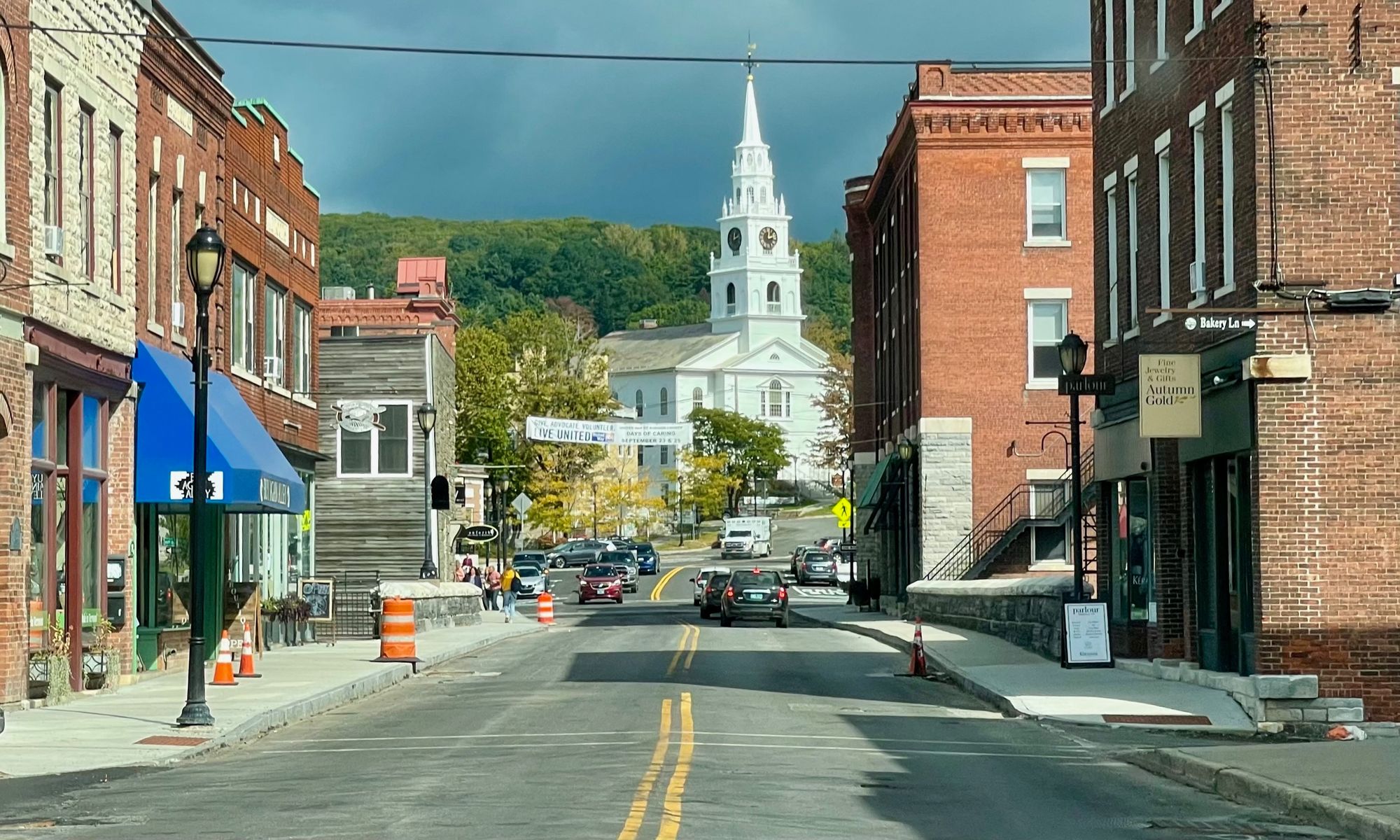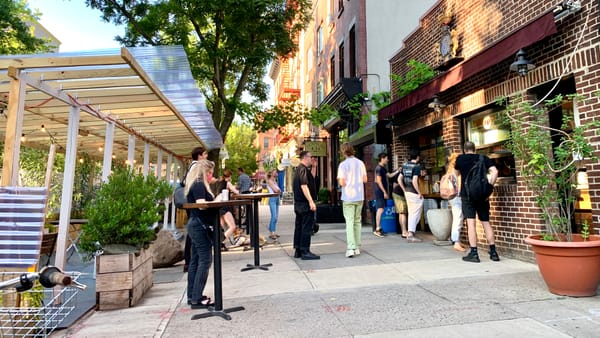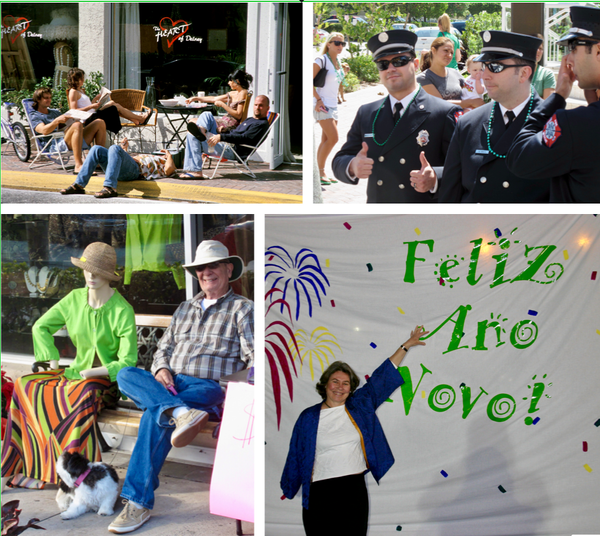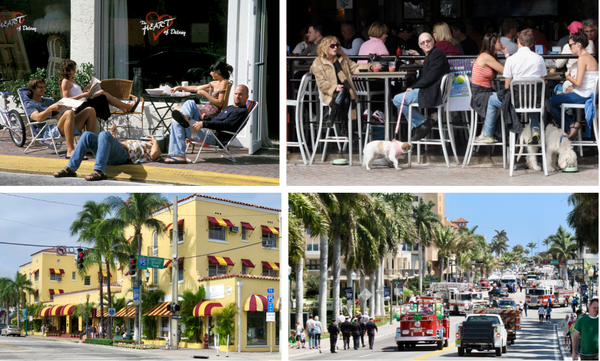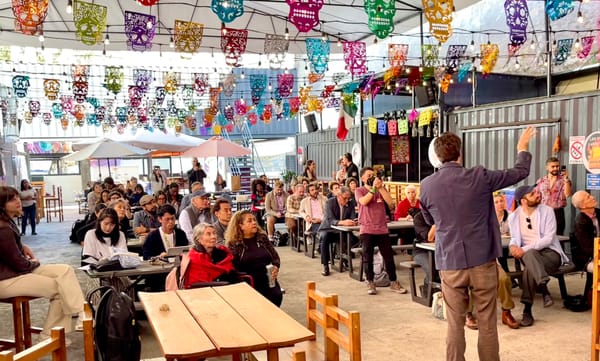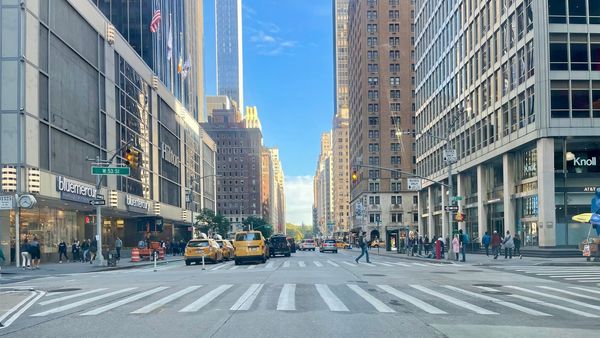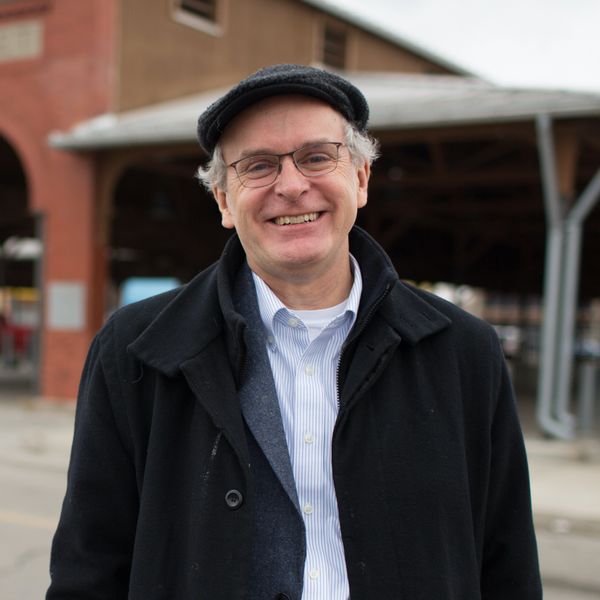Restoring social life in Vermont starts with a rethinking of streets, public spaces, and community institutions.
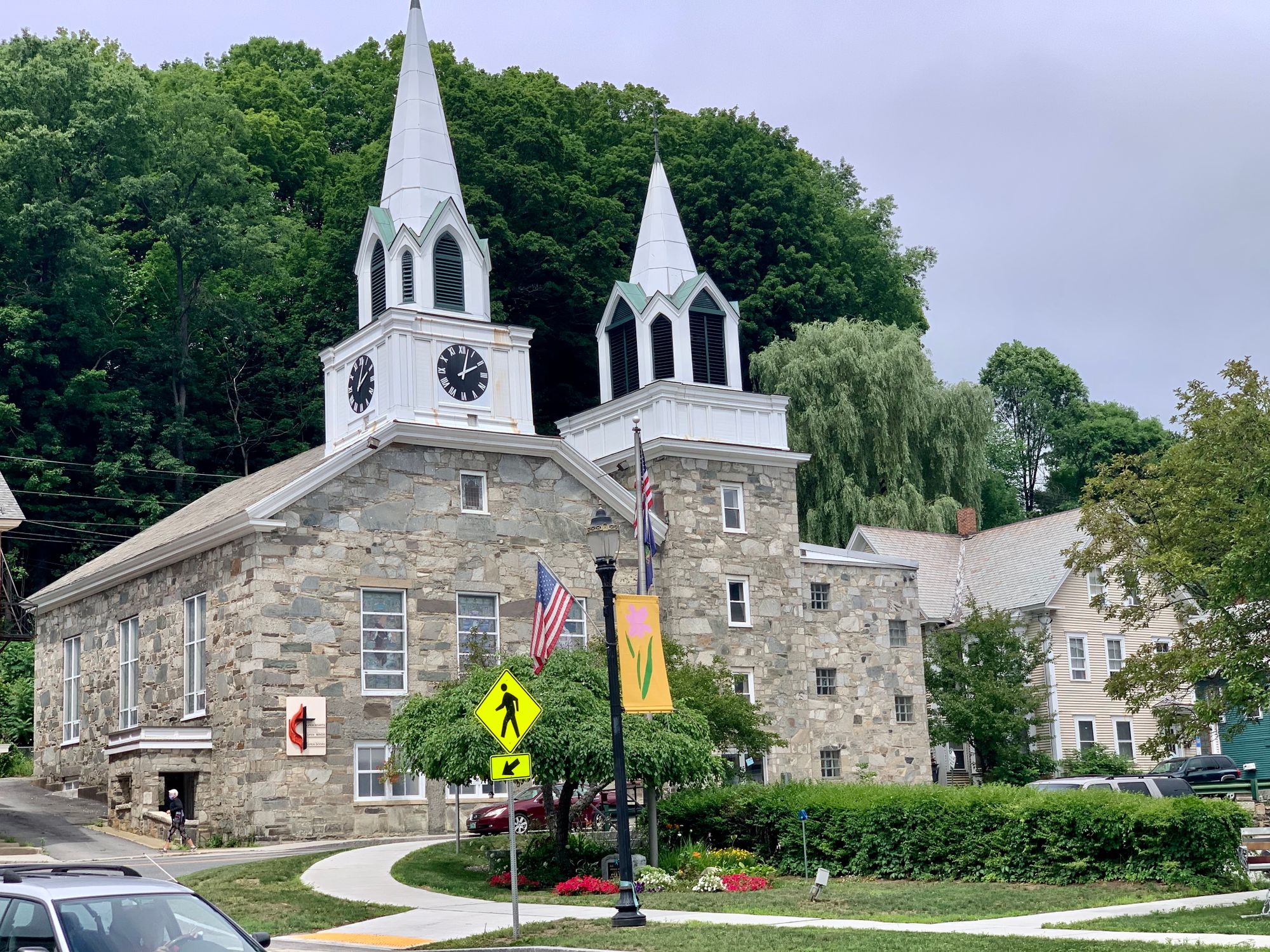
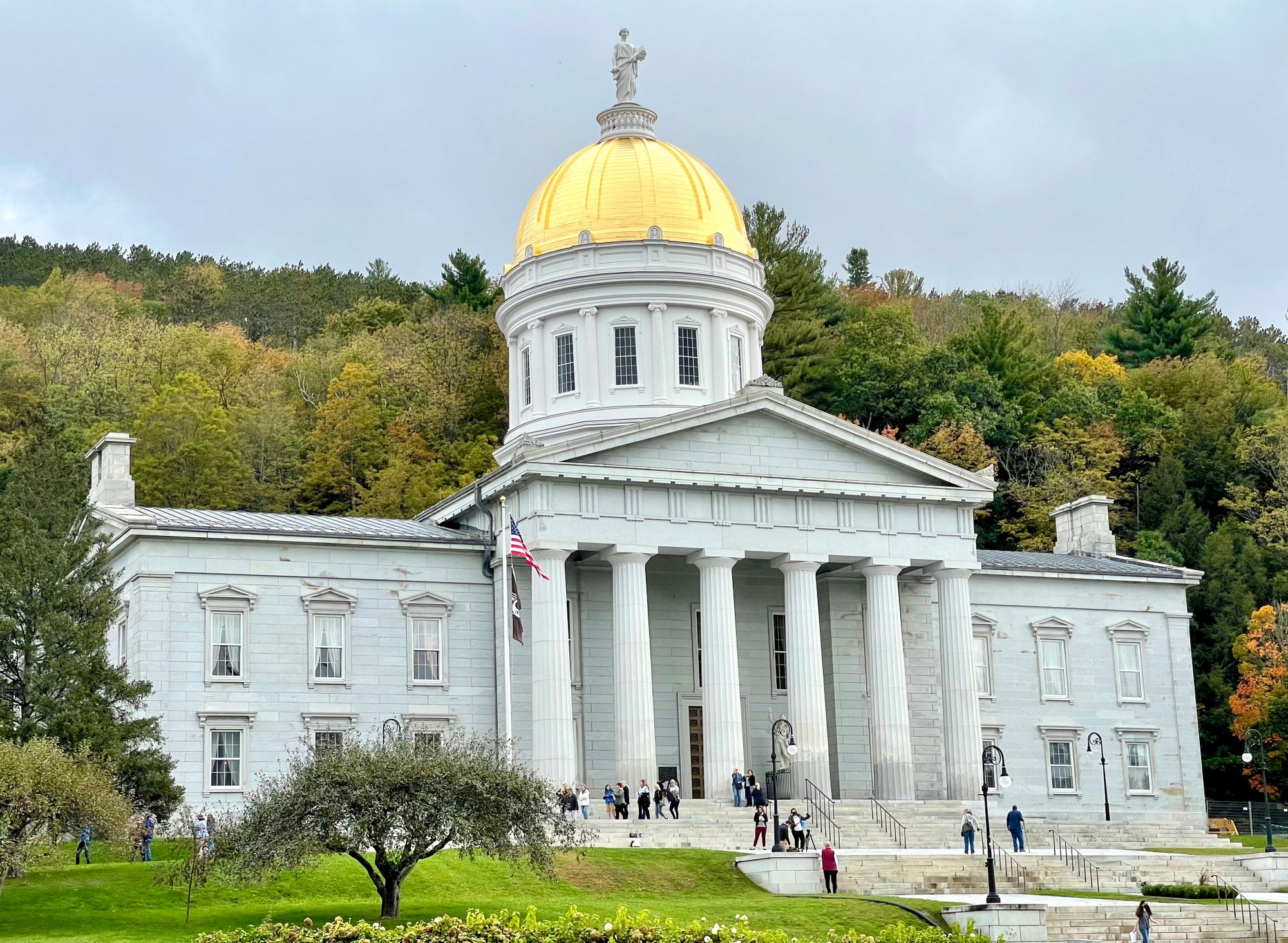
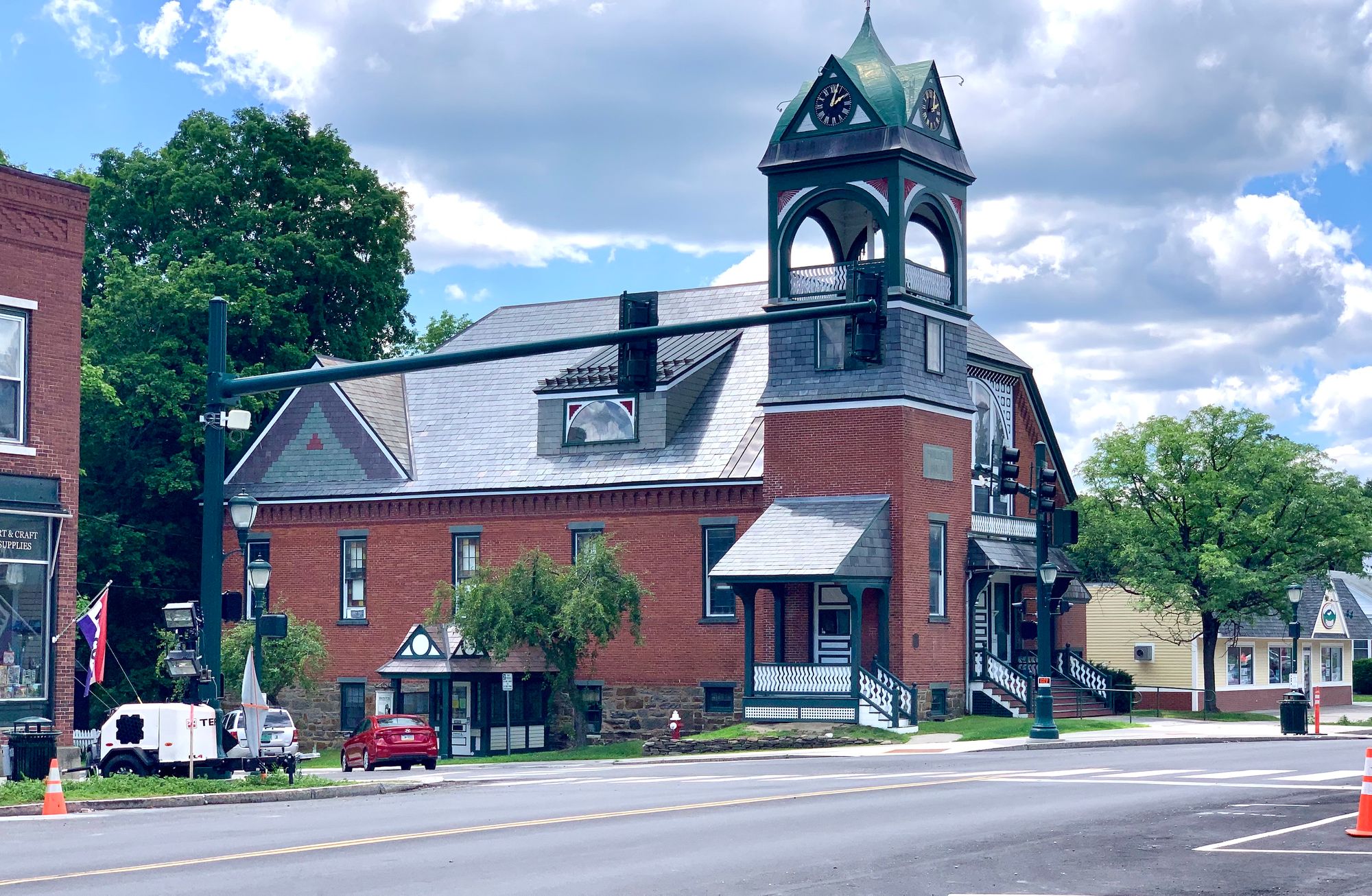
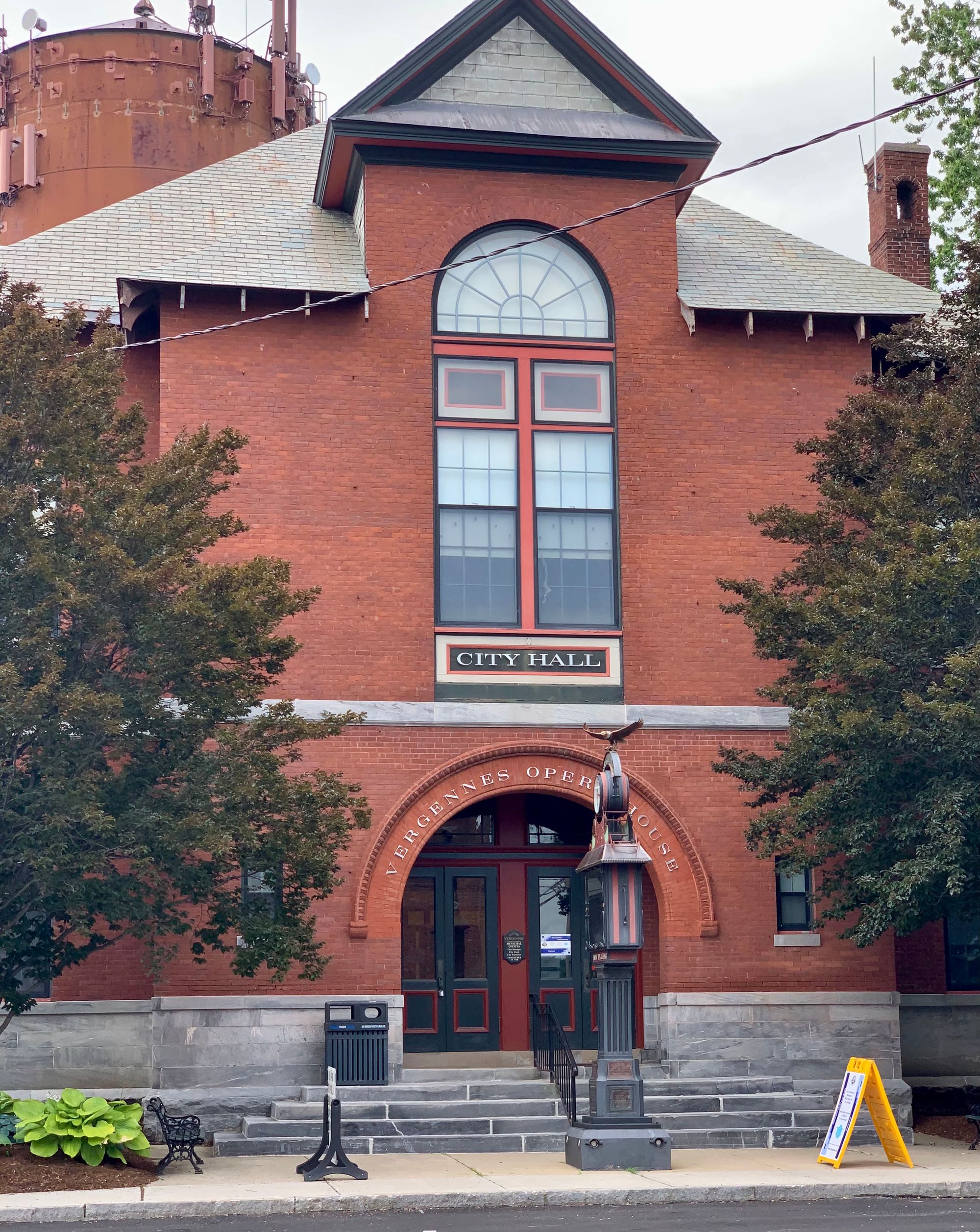
Springfield, Montpelier, Bristol, and Vergennes
We have a long history of visiting Vermont and love spending time in downtown areas throughout the state. We wanted to share our observations about public spaces from many recent visits in the hopes of stimulating local discussion and action. We also have six new strategies to address common problems we observed there. These are strategies that could collectively have a broader impact, not only impacting the communities listed here, but across the whole state.
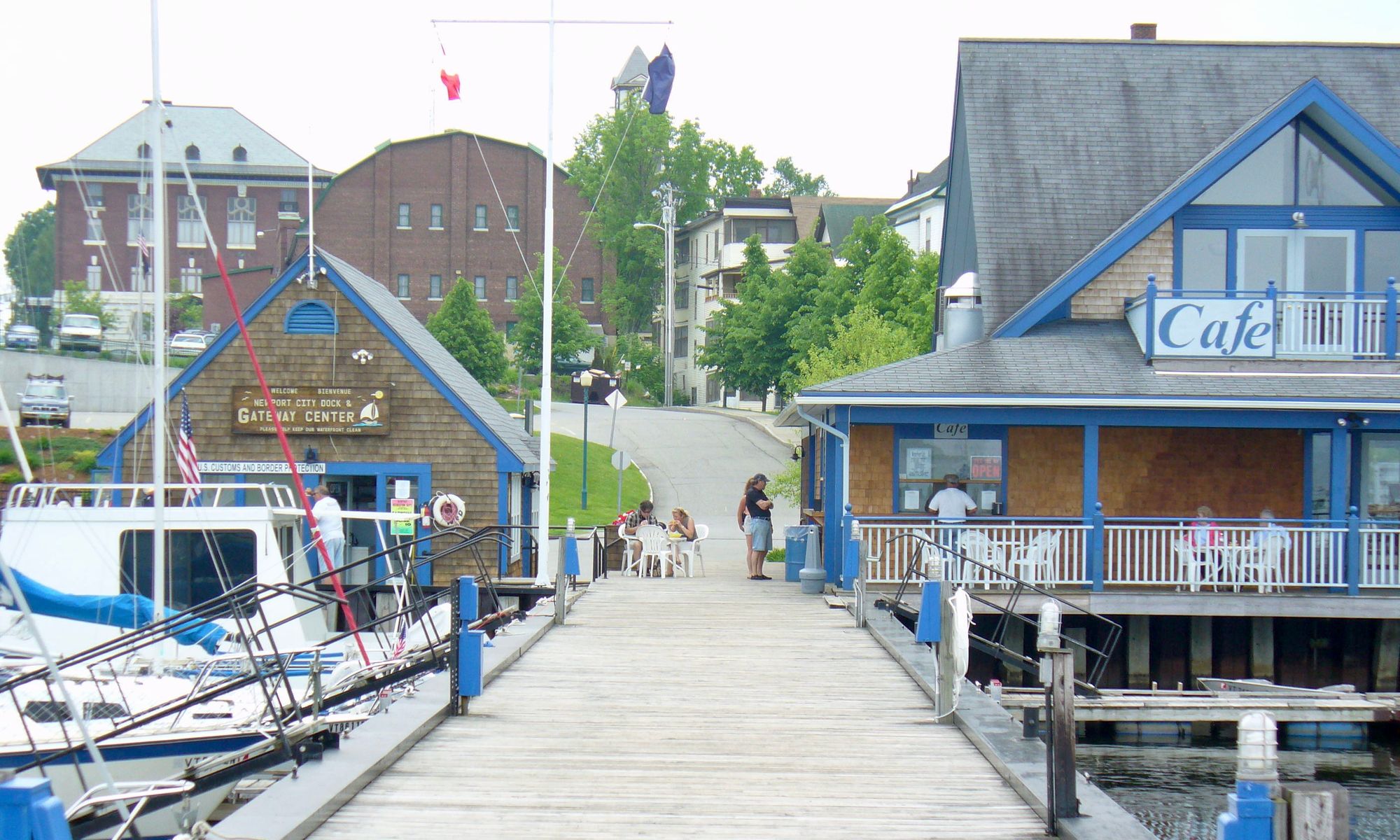
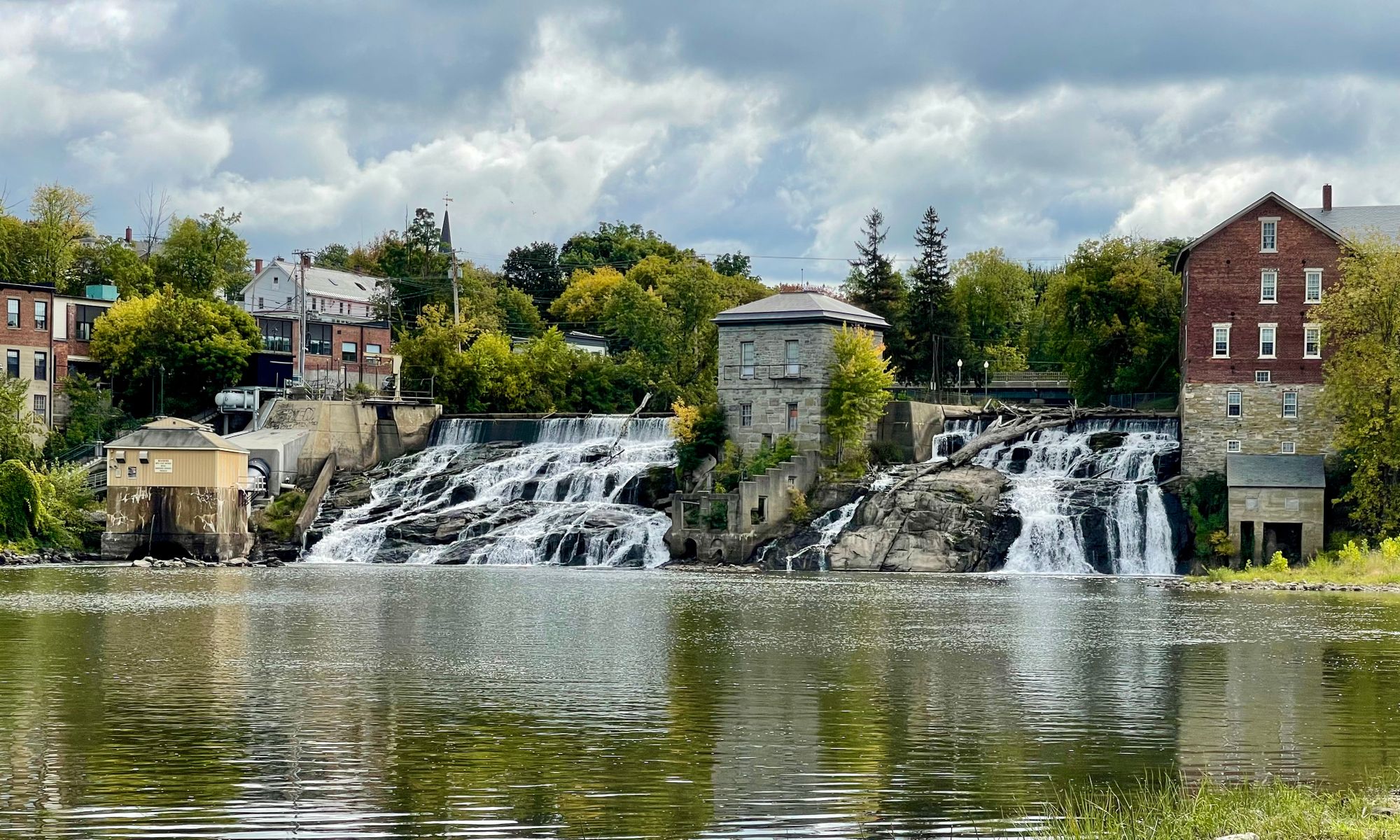
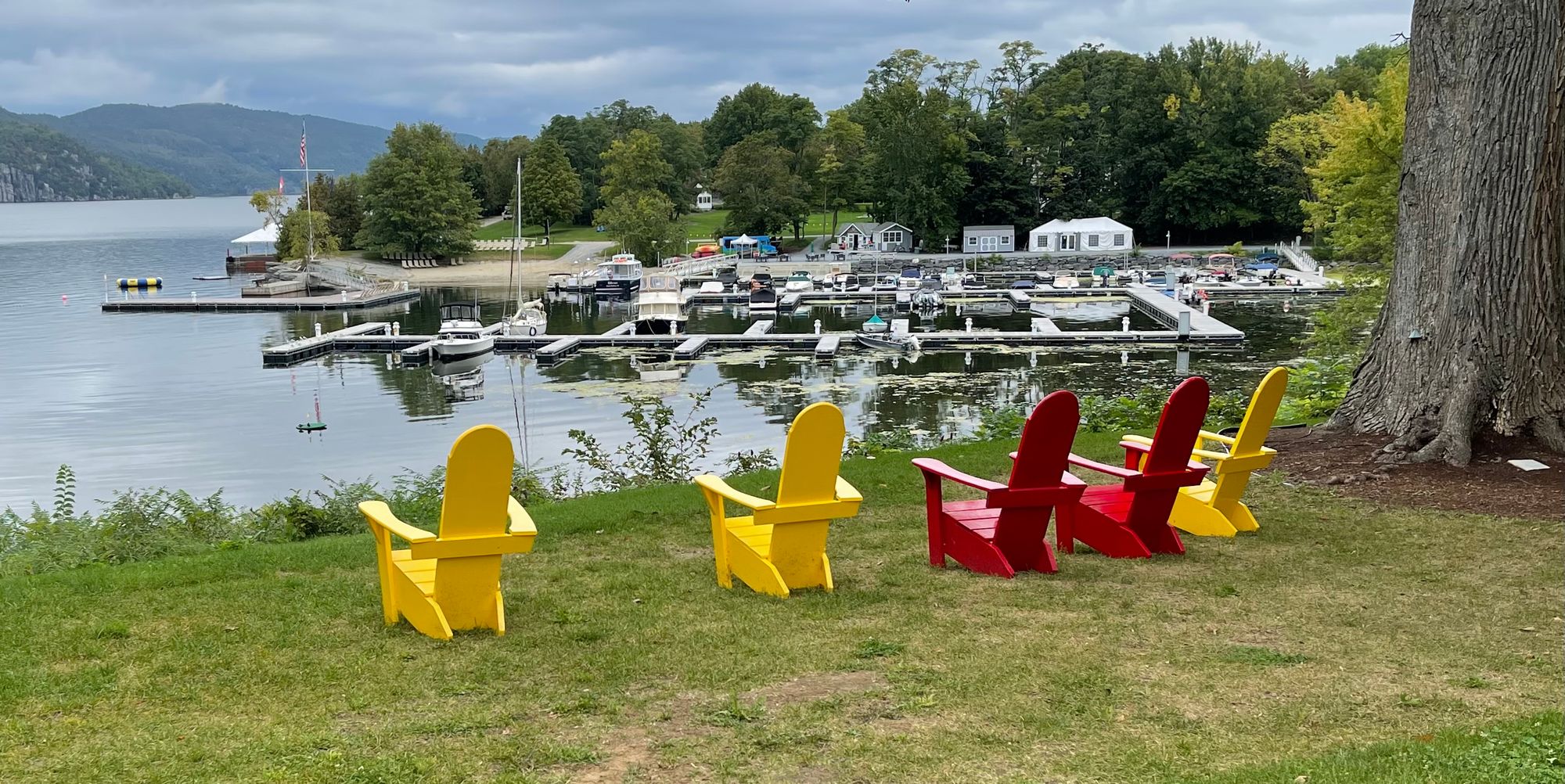
Newport, Vermont Info Center, Vergennes and Basin Harbor
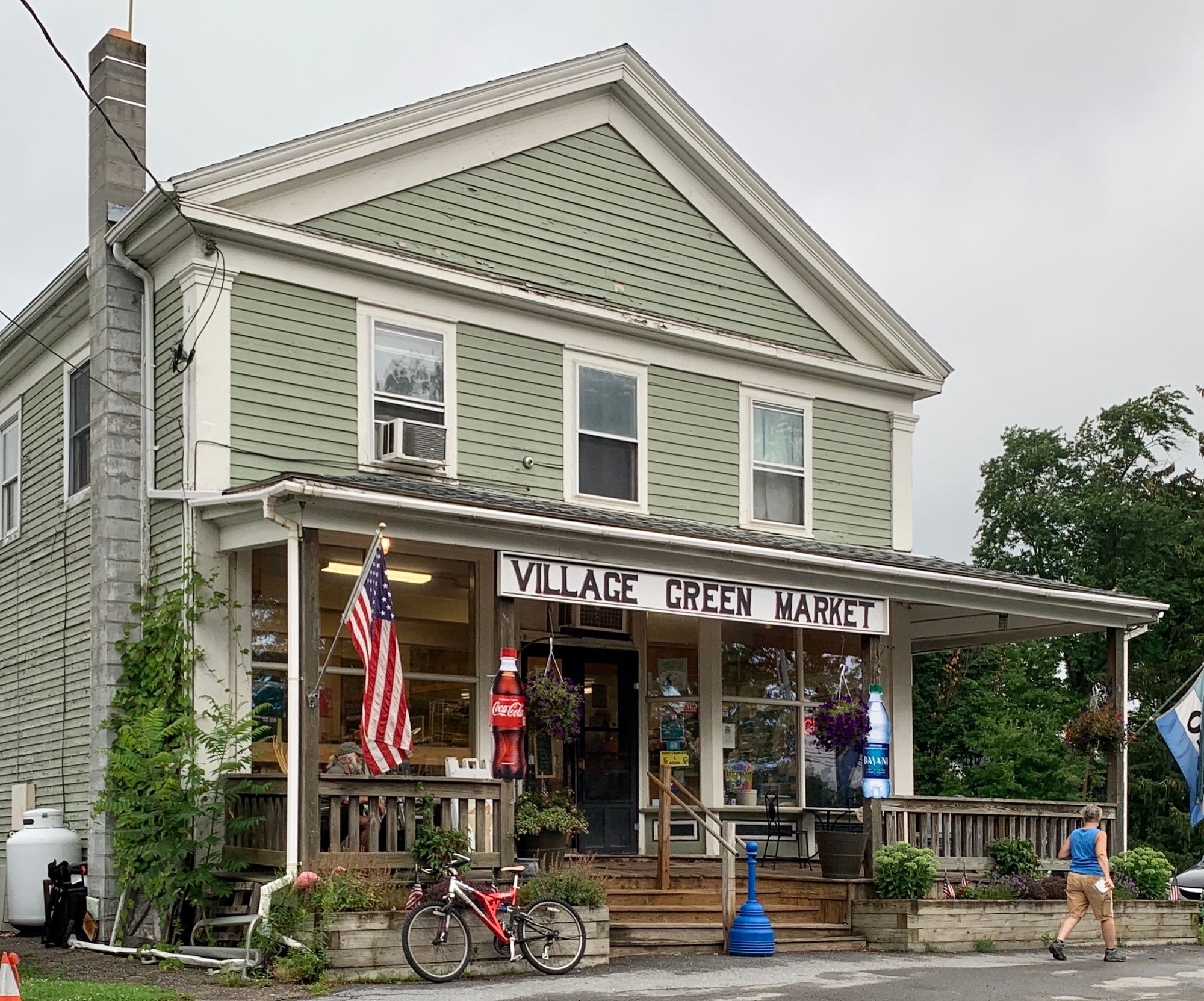
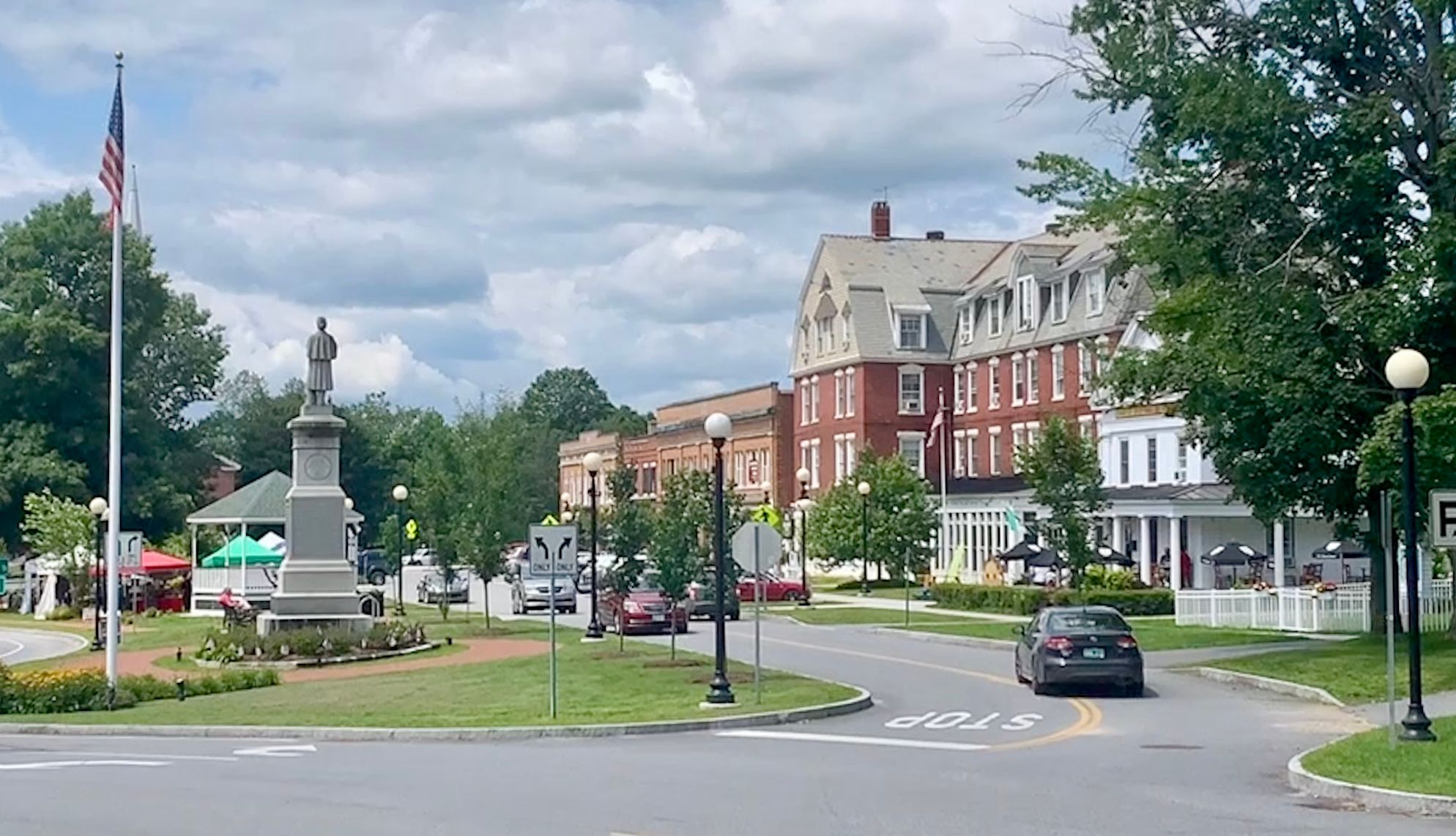
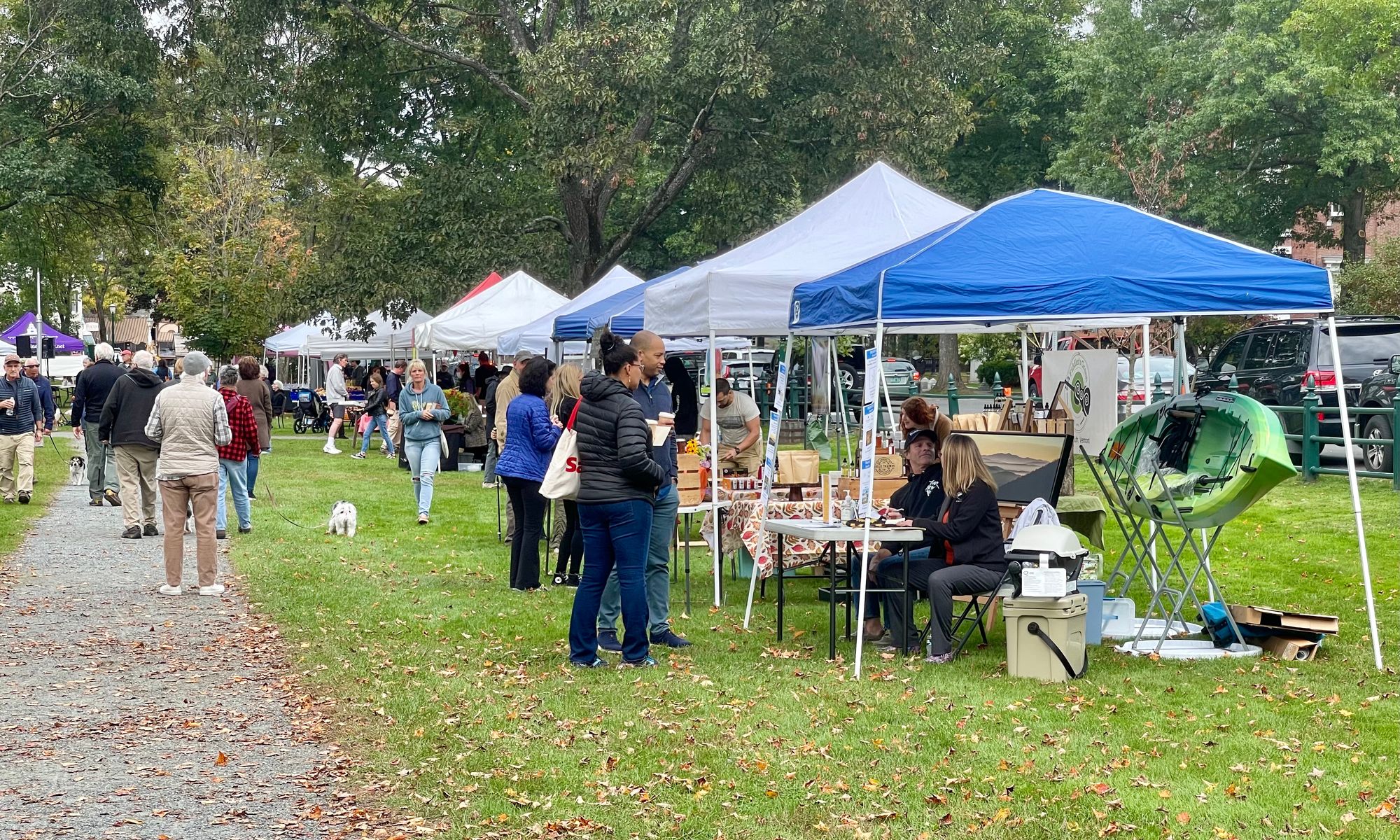
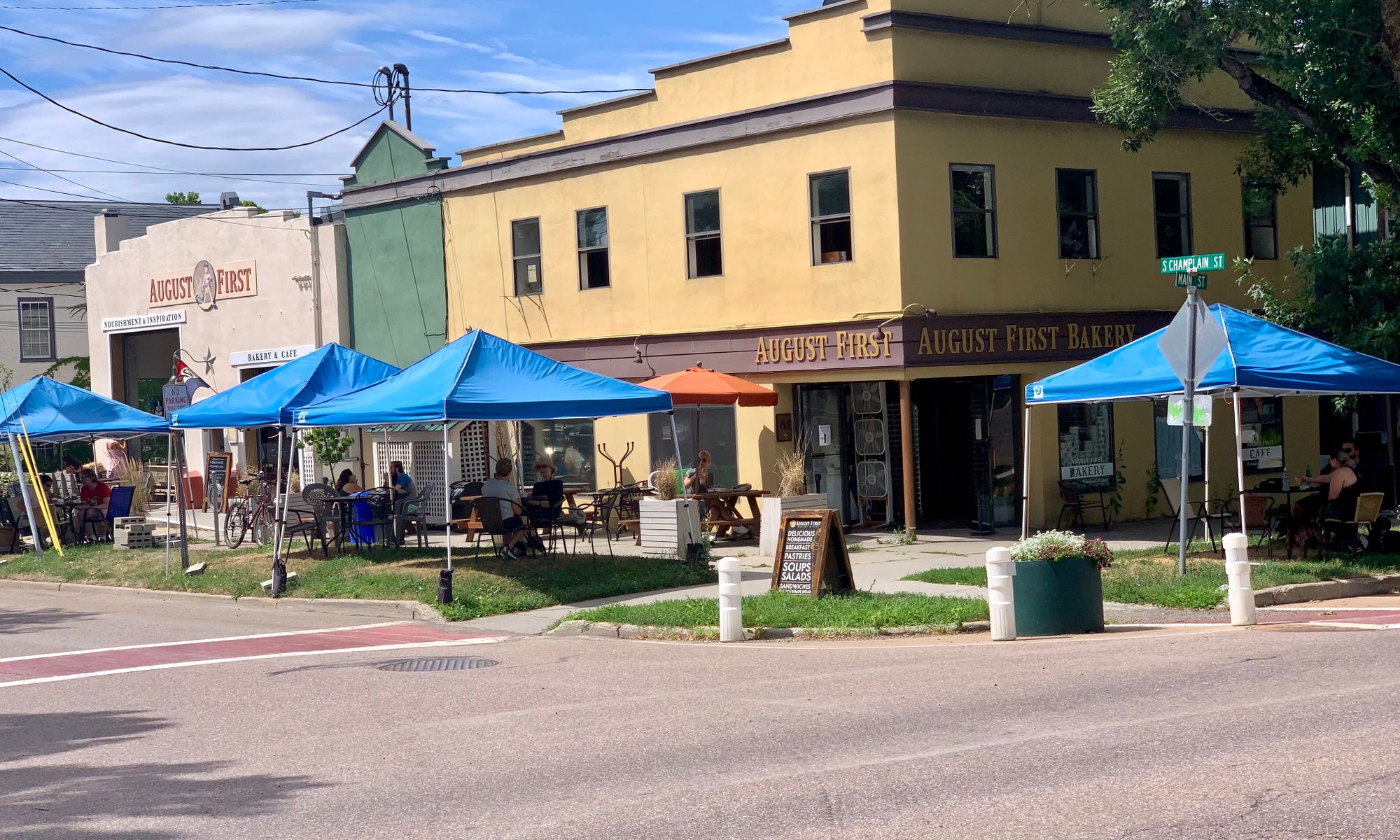
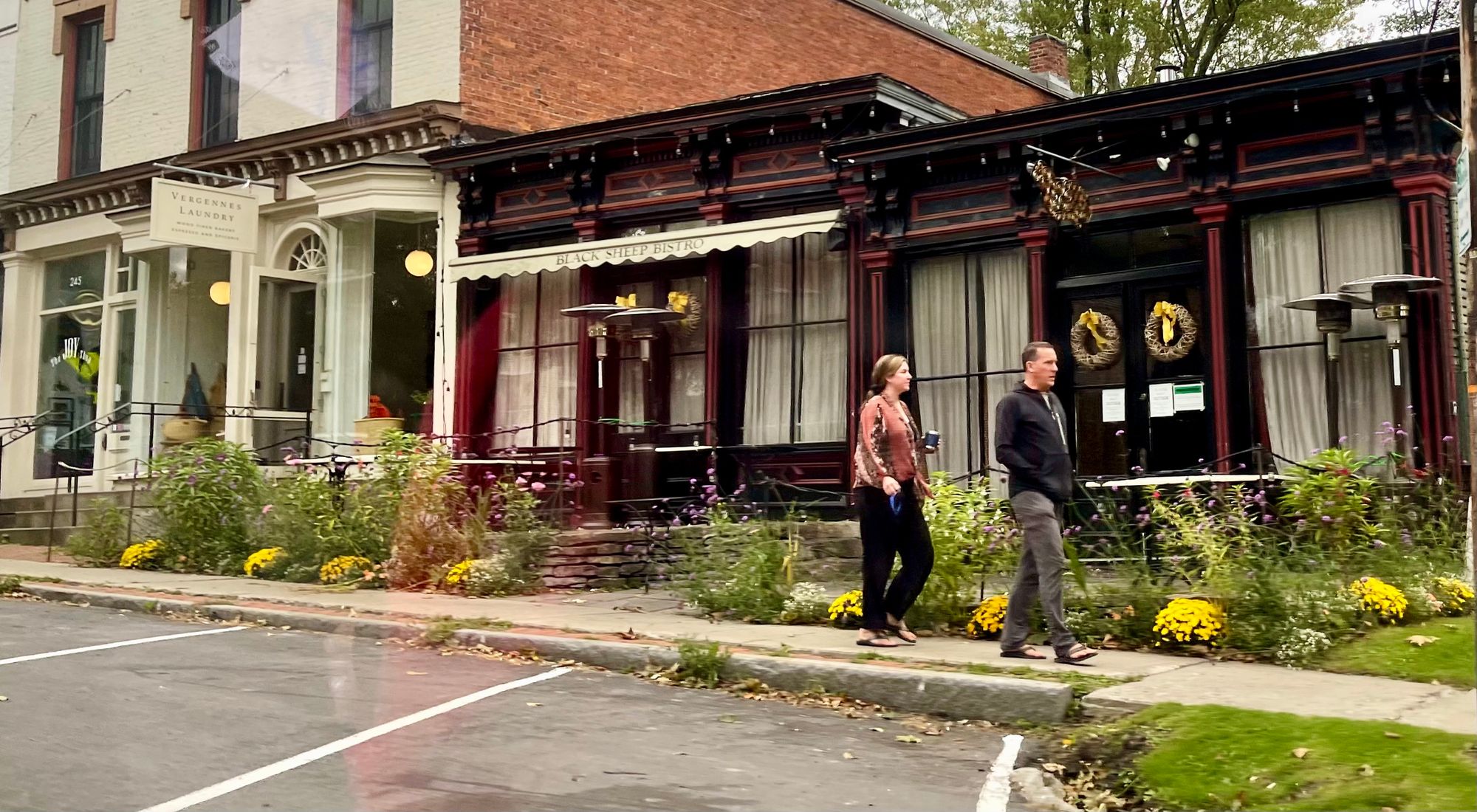
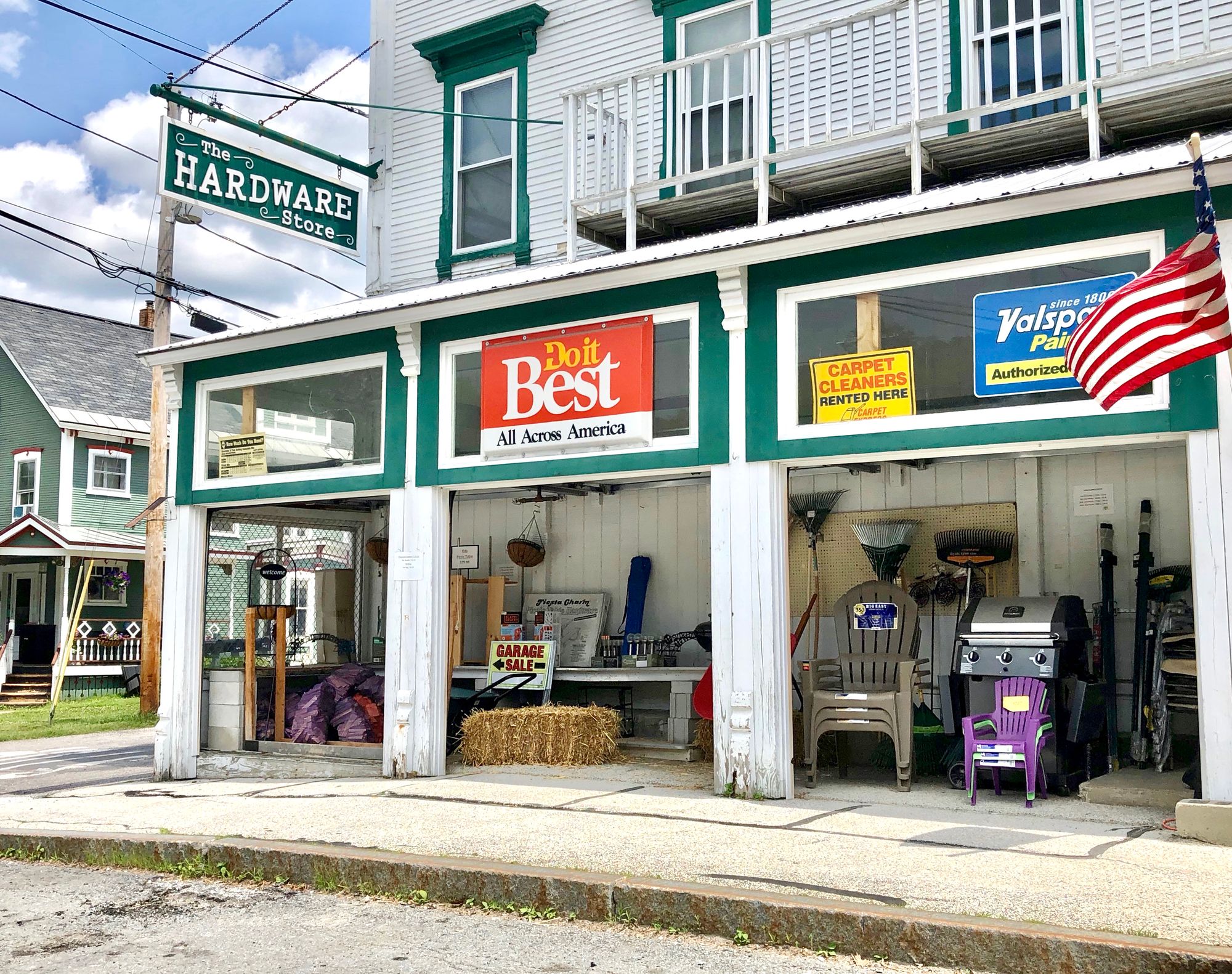
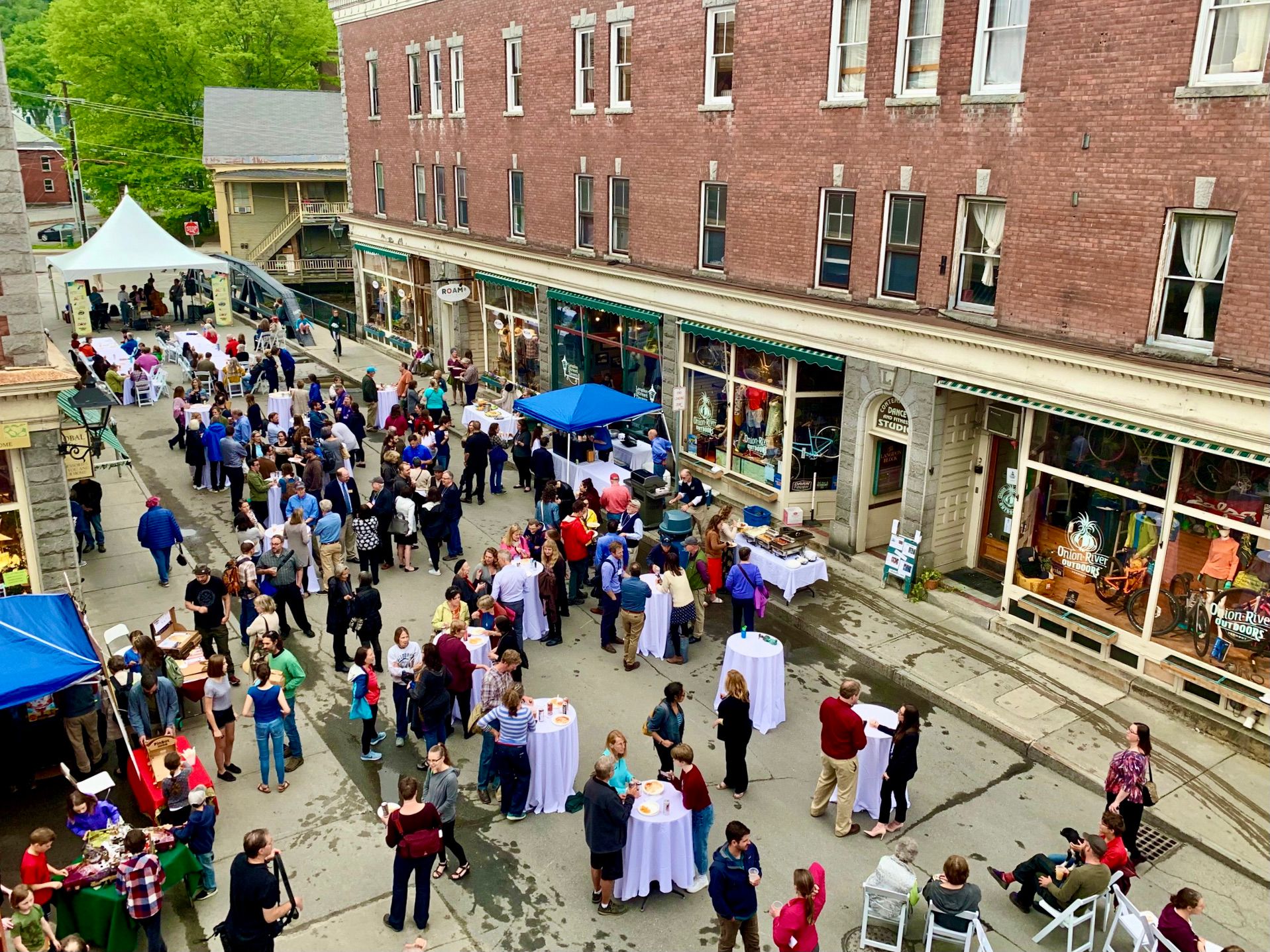
New Haven, Brandon, Woodstock, Burlington, Vergennes, Rochester, and Montpelier
Takeaways:
The social life of communities happens most frequently and joyfully in business districts, squares, and other welcoming spots that are connected to create a whole. And crucial to small towns reviving their social life is the acknowledgment that the best gathering places "triangulate" a number of activities—strolling, shopping, people watching, finding food or dessert, or just hanging out. These things happening together in one spot is powerful, creating a space where everybody wants to be.
To start, focus on social life. Vermont has a quintessential setting: beautiful vistas, great historic buildings, and small-town character, all of which make up the famous backdrop that has made Vermont one of the most desirable states in the nation. So a new emphasis on social life could be the future foundation of Vermont Life.
Catalytic Strategies for Vermont Downtowns
We have boiled down what we learned during our Vermont travels to six core approaches that towns can implement:
1. Be Aware of the Impacts of Major Intersections, Narrow Sidewalks, and Overly Wide Streets.
The biggest obstacles to vital community life in Vermont are auto-dominated streets and large intersections. These places become hostile to pedestrians and harm local social and economic life. This, in combination with widespread inactivity in public places (including most parks and public buildings), has meant that most towns we visited have had significant losses in social life. We would add that most have lost their center or "heart."
This is not only happening in Vermont, unfortunately: These are trends that speak to a broader pattern in many communities across North America. This focus on expanding roads and intersections to increase capacity has been going on for at least 70 years and has gradually sucked the energy out of small towns across the continent.
A quote attributed to us: "If you plan cities and towns for cars and traffic, you get more cars and traffic. If you plan for people and places, you get more people and places."
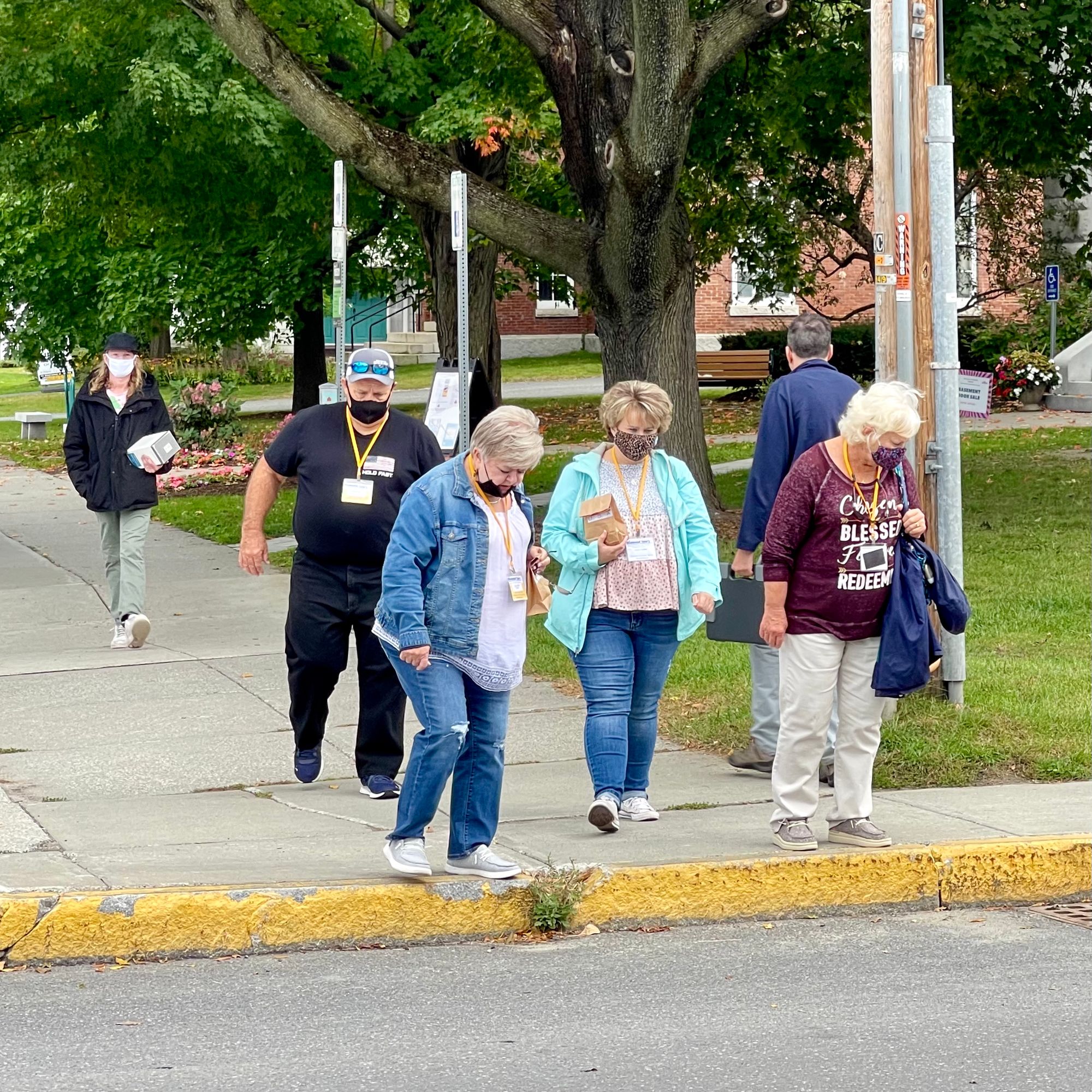
2. Reclaim, Remake, and Reconnect Sidewalks as the Fundamental Backbone of Small Towns (TIP: This Means Giving Less Space to Cars).
Major intersections dominate the center of most towns and often in places where the perceived "center" of the town had once been. On top of that, sidewalks around those intersections are often too narrow — a combination that makes for un-walkable, inaccessible places lacking in social activity.
Capturing space back from cars can be done DIY-style with a paintbrush or a temporary café, as we have learned during the pandemic. Ideally, as communities invest in better infrastructure, it becomes more and more possible to make these experiments permanent.
3. Focus Energy on Making Town Greens, Parks, and Other Spaces Multi-use, Multi-purpose, and Less Passive.
People want variety: When they visit a public space, they often hope to find lively activity and many chances to socialize. Bringing back the "public square" as one such place presents a new opportunity for small towns to quite literally provide people with common ground, where they can connect as friends and neighbors. So, re-inventing Town Greens as central places with a variety of things to do will be key, whether that is by organizing new programming, providing more amenities, or working with local entrepreneurs to create opportunities for vendors or markets. Options abound!
4. Help Public Buildings to Become Strong Anchor Institutions by Expanding their Role in Communities.
Historically, City Halls had opera houses or fire stations within the same building, meaning lots of different activities under one roof! Today, we can replicate this interconnectedness among public buildings by "bringing the inside out," which here means engaging with people by allowing activities to spill out into surrounding areas and public spaces nearby. Museums can start creating outdoor public art exhibits and library reading rooms in unique locations around town – through initiatives like these, public buildings can reach out and diversify what they offer to their communities. Other institutions can join in, too: post offices, banks, etc.
5. Create a promenade, a place to stroll...
A promenade is a place to walk, get exercise, see friends, or window shop. But it’s also important that there are many things to see and do along the route, with no dead zones of more than 50 feet in length. That means being careful that parking lots, blank walls, vacant areas, and large streets that are difficult to cross do not disrupt an area used for such activities.
On another note, while the primary purpose of these promenade strolls is usually social, people also like to have some destination around which to gather: a café, playground, bookstore, ice cream shop, or other public venues. Having destinations to keep in mind can help a daily stroll become a habit.
6. Make it Happen: Focus on People and Product
One of the most vital things a community can have is a real network of small public spaces that draw people on a day-to-day basis. They don't have to be formal or even particularly large; the steps of a local building or a bench outside of a café are perfect examples of these types of spaces. It is through the presence of these places that small-town social recovery can happen. To go further, communities need a center (or multiple centers) to anchor this network. The concept of the Power of 10+ can guide the creation of just such a place: Connected, vital, and dynamic.
7. Shaping the Future of our Communities
"If architecture is frozen music; and planning is composition; Placemaking is improvisational street performance."
The last 50 years have seen an explosion in disciplines devoted to transportation and mobility, planning, and design. Design includes architecture defined by object and uniform design standards; planning has been relegated to support other disciplines to help them justify their agendas; and transportation has become the de facto definer of communities around their narrow agendas of capacity building, safety and mobility for vehicles. Each discipline has become its own audience.
It's becoming pretty evident that a lot of the work done in the past years, carried out by various disciplines like architecture or traffic engineering, is not working. These disciplines often work in siloes, and as a result, define their outcomes in a narrow way – which can crowd out the improvisation that makes public spaces great, and historically what made these towns what they once were. It's time to bring them back.
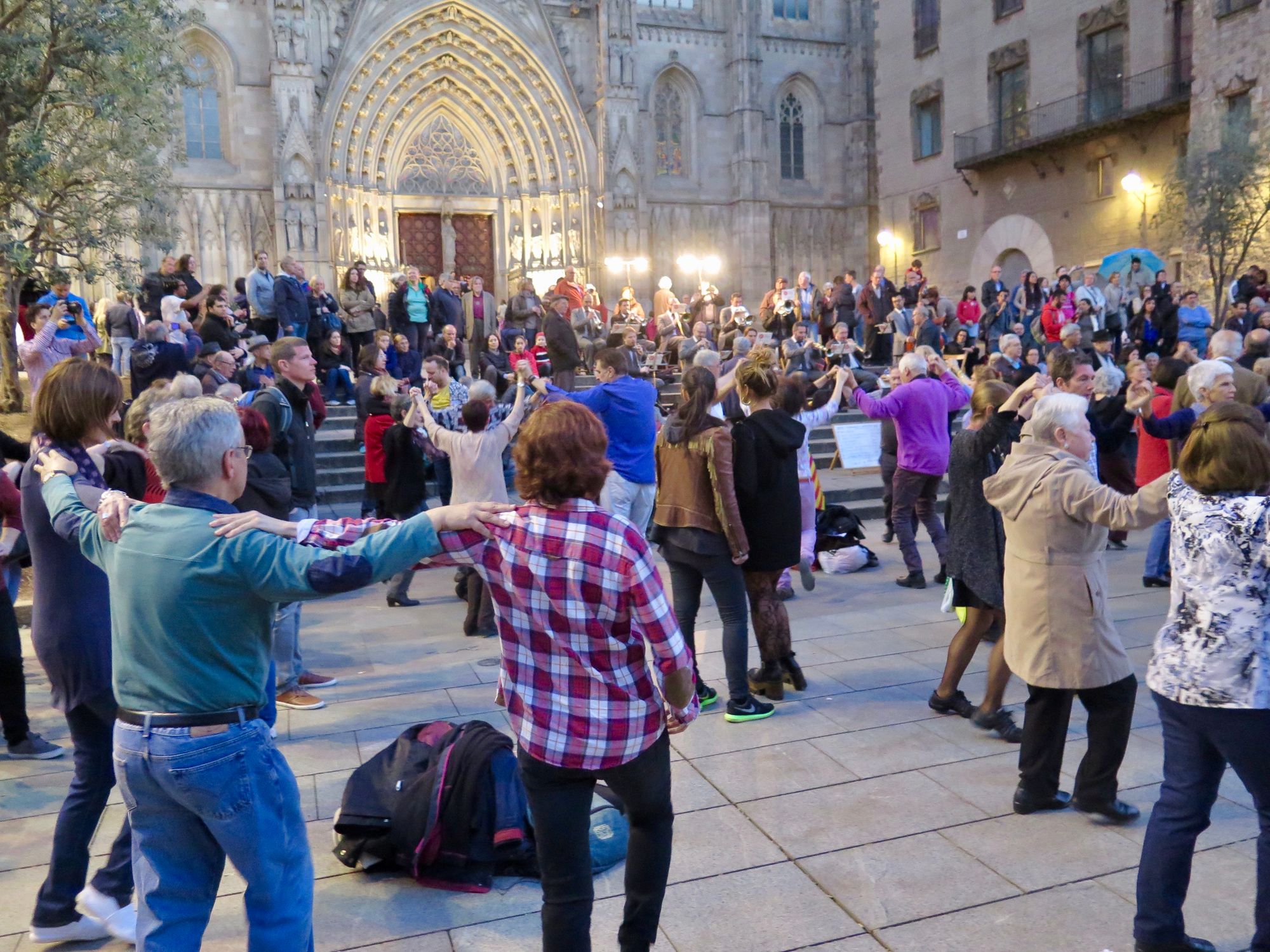
Selected Vermont Towns
Rochester, Vermont
We were immediately taken by this small Vermont town. It has beautiful homes with porches, a small inn, a green, and some quirky, interesting places to stop and explore. It has all the qualities of a great small town, except for the fact that the road going through it is like a highway. Slowing it down would add a lot of reasons to stop and explore.
Opportunities: The road winding through Rochester is oversized, and therefore a recipe for speeding cars. Slowing down the vehicles by narrowing the road, especially where there are interesting places to stop, would have a big impact. If Rochester took this approach, the town could enhance existing destinations or add more for visitors to explore, such as the bookstore, a great hardware store open to the street, and a Green. Adding amenities, such as a playground and seating along the main street edge of the Green, could improve continuity, extending the perception of the downtown from just a few stores to link up with a longer stretch of existing destinations.
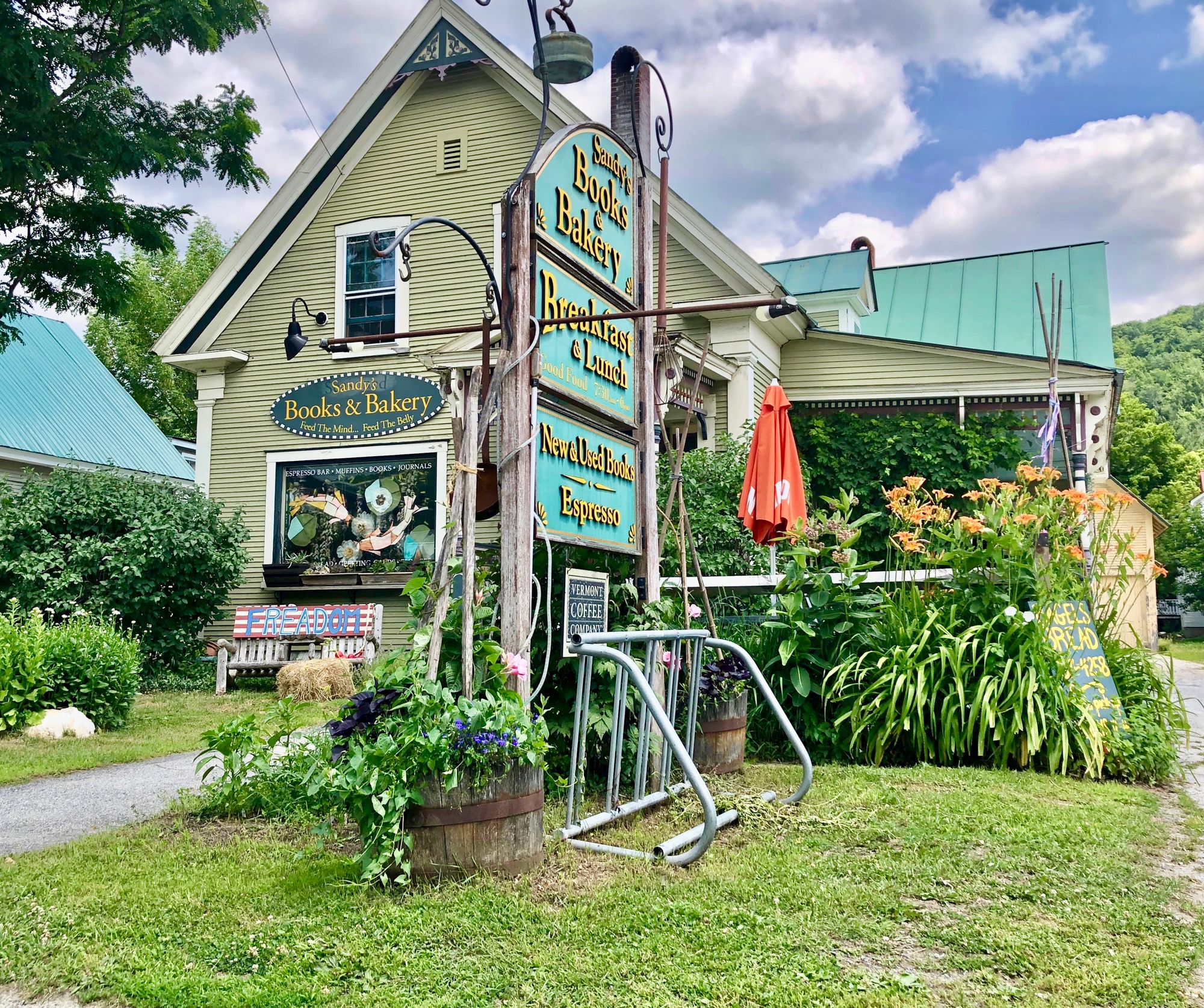
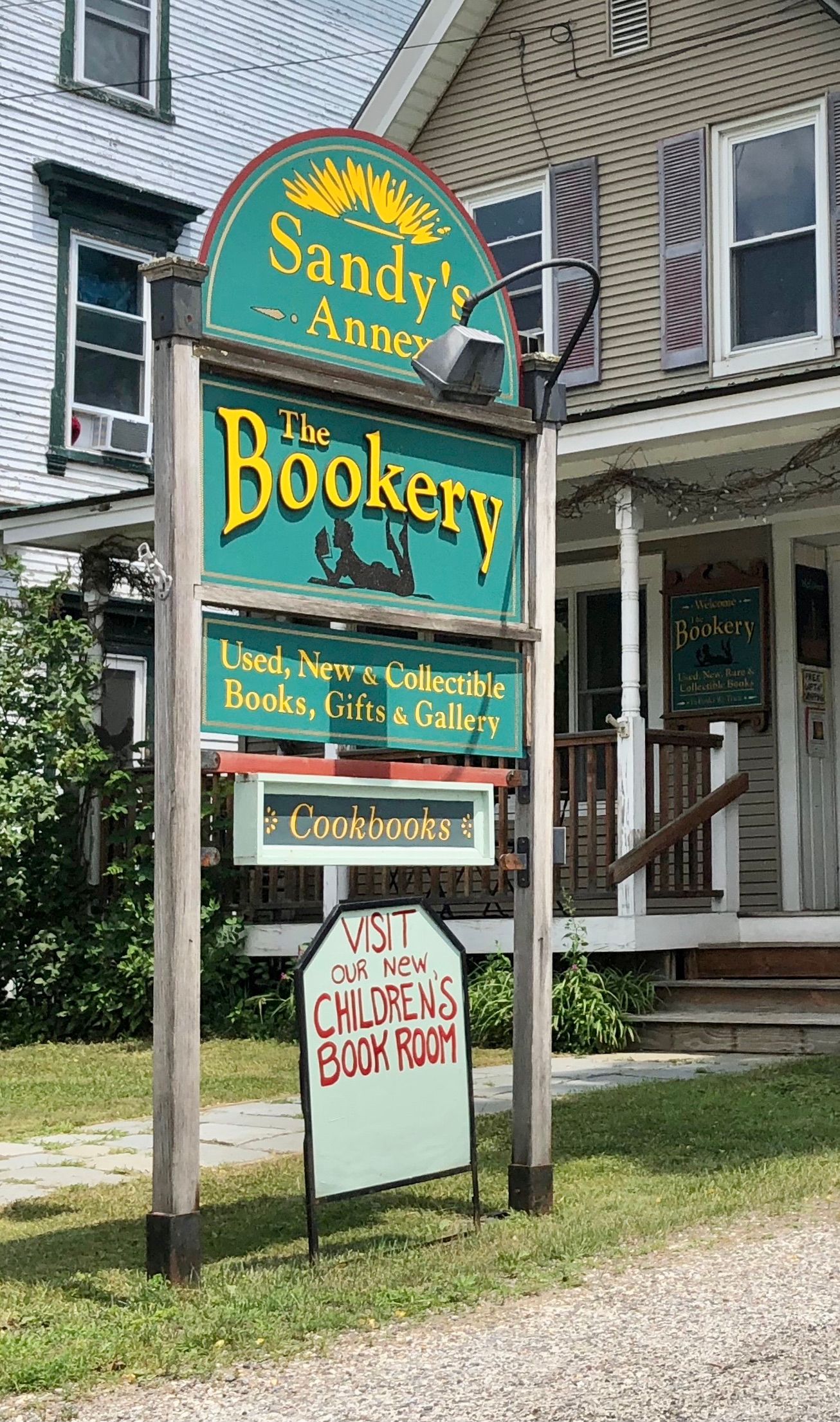
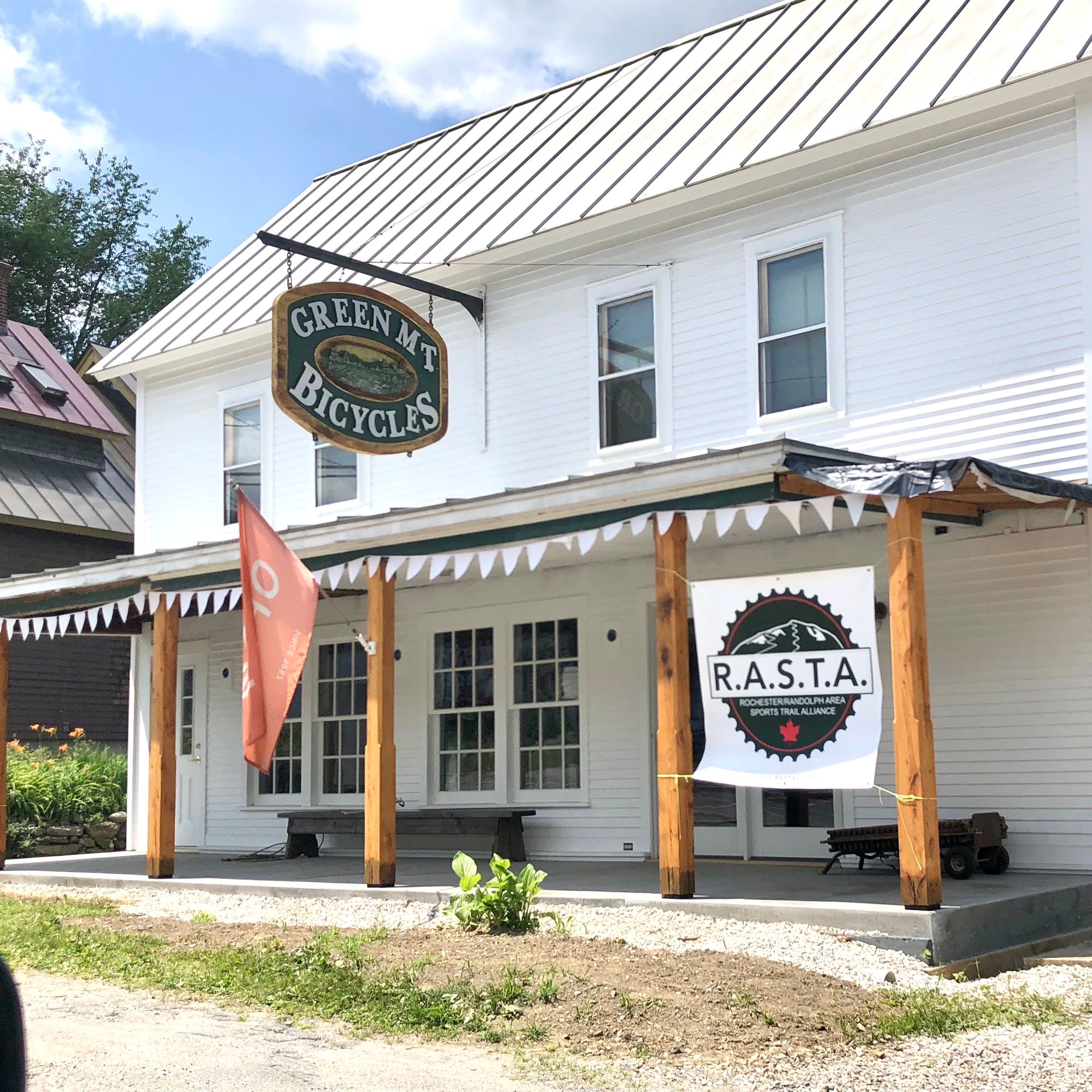

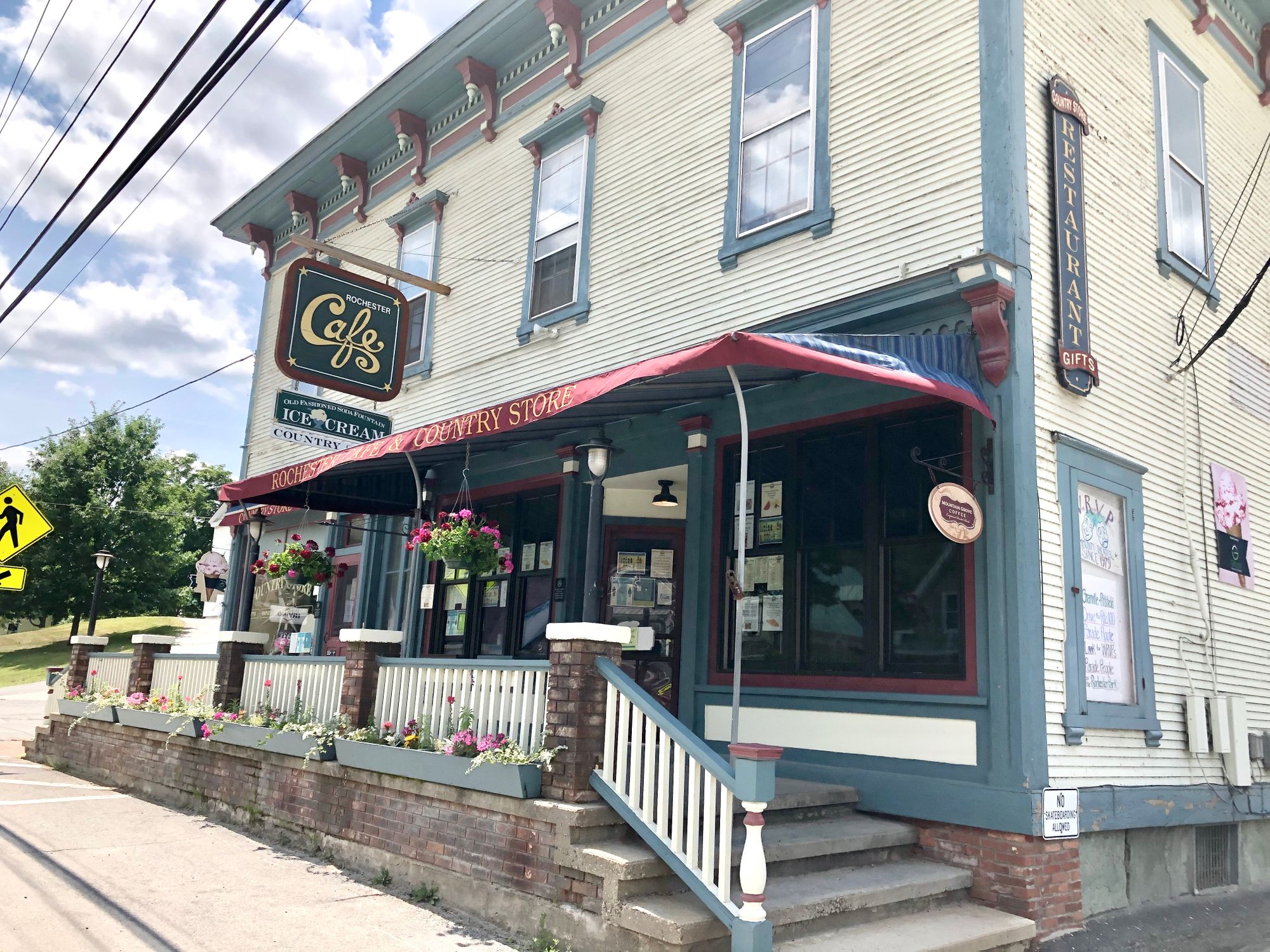

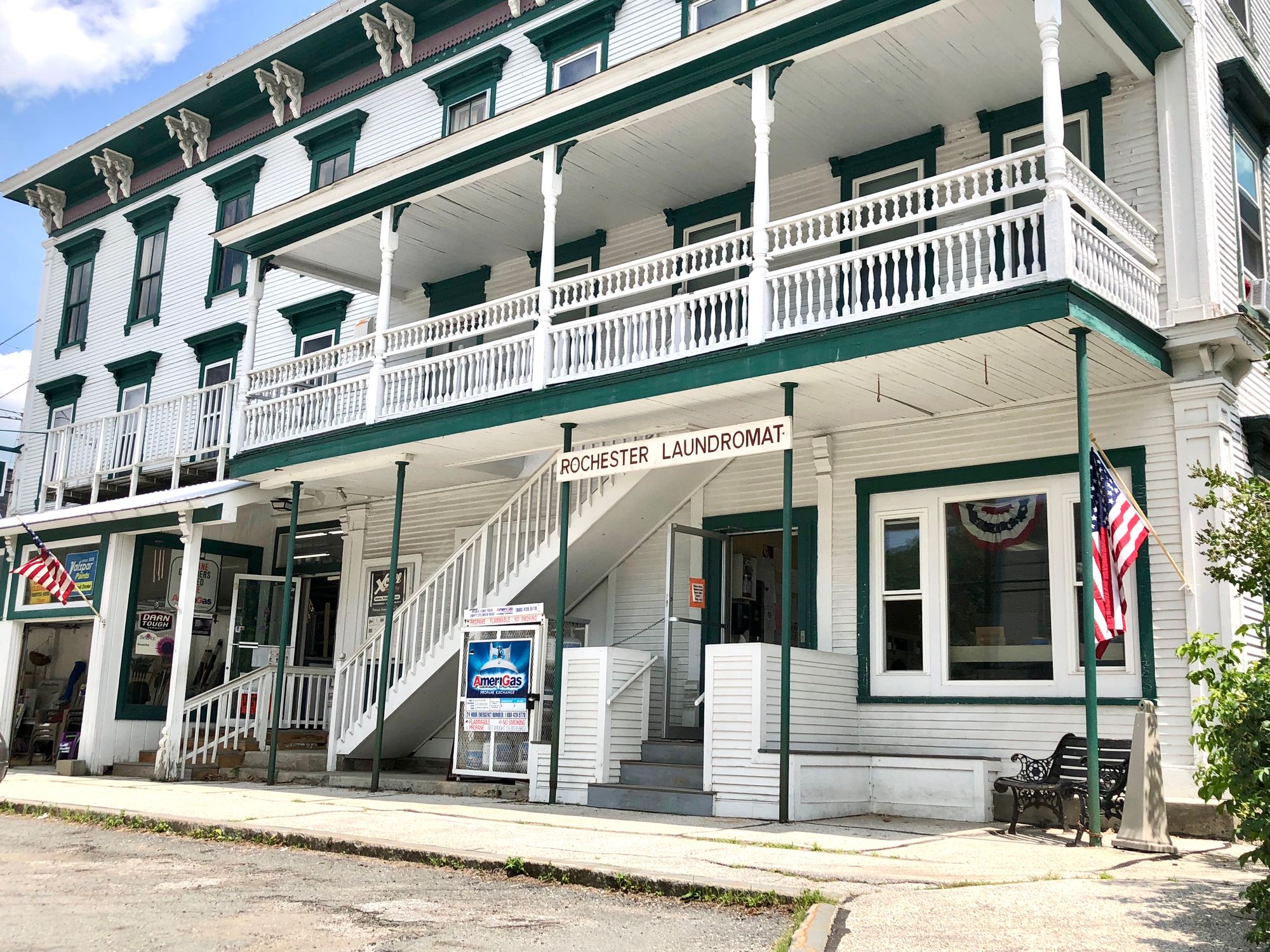
The downtown has a number of exciting destinations that give it a unique quality.
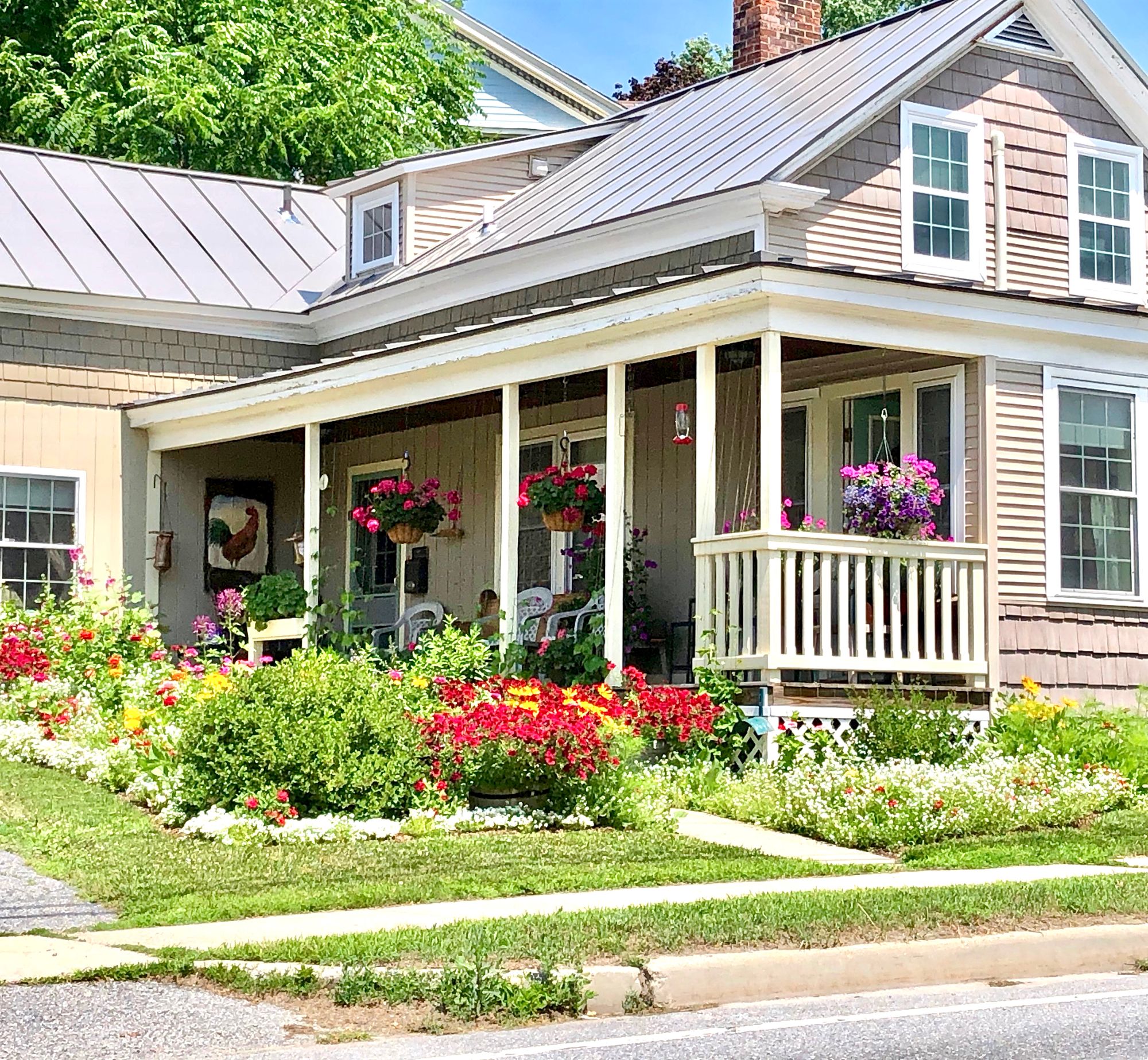
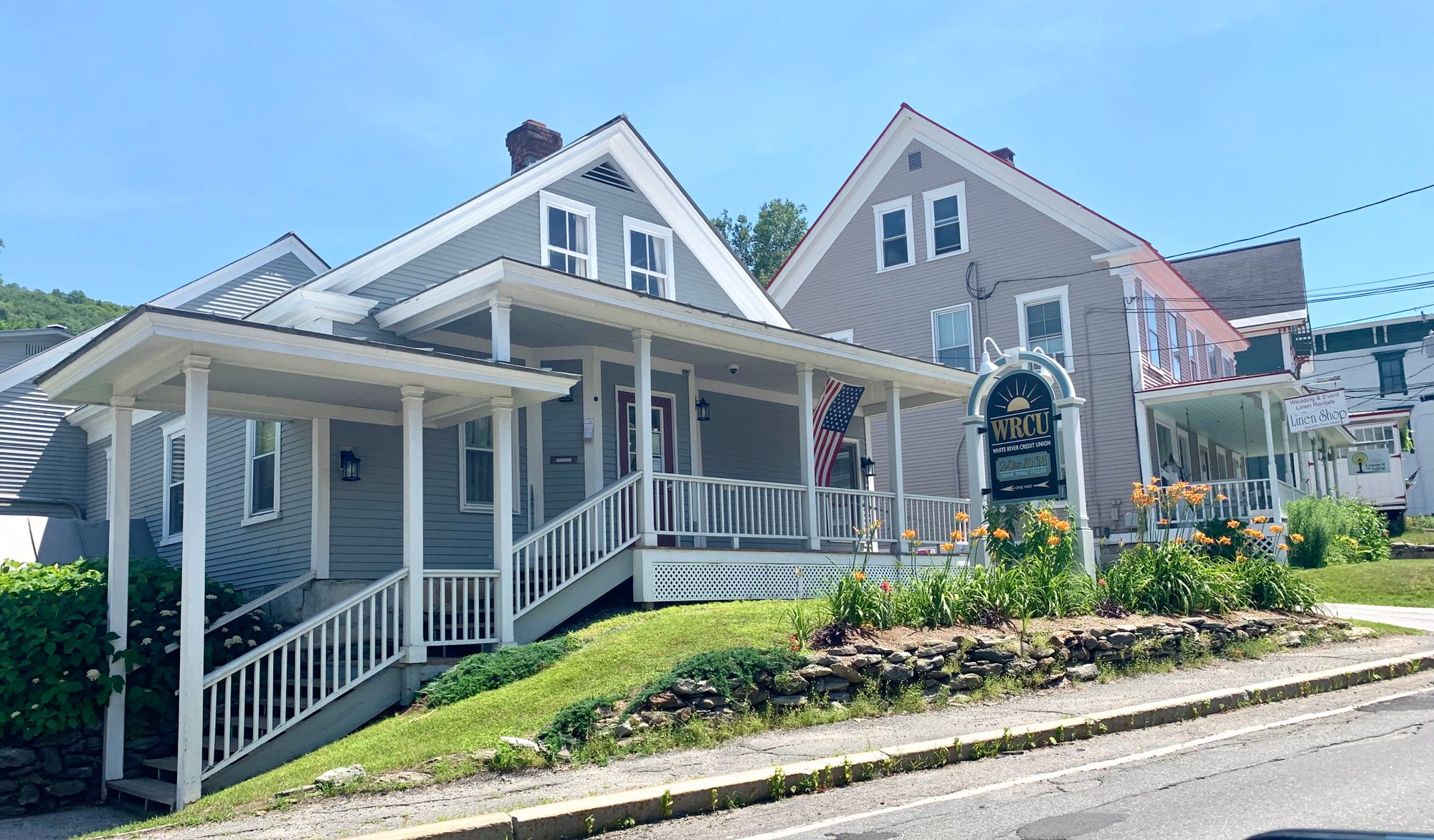
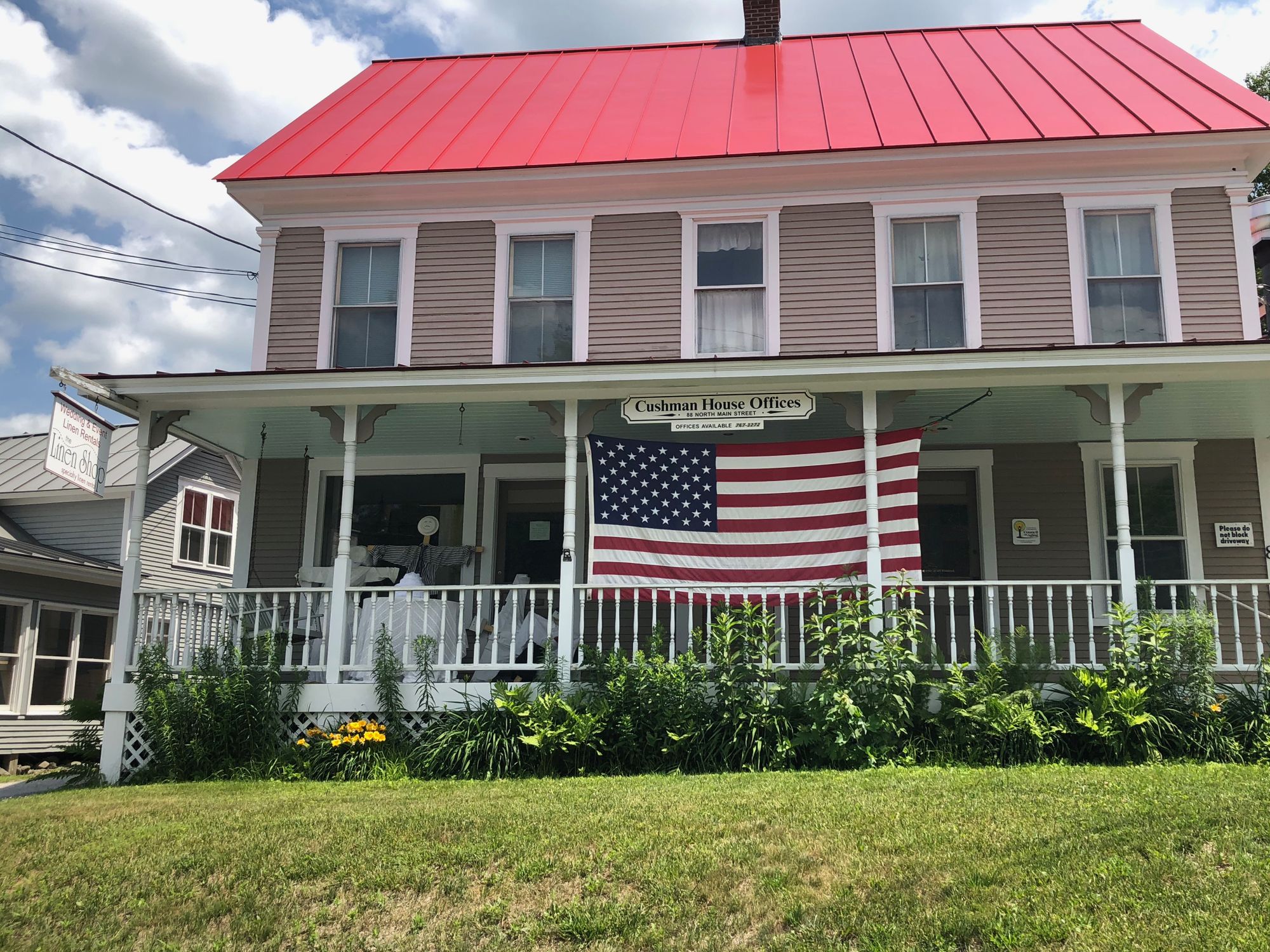
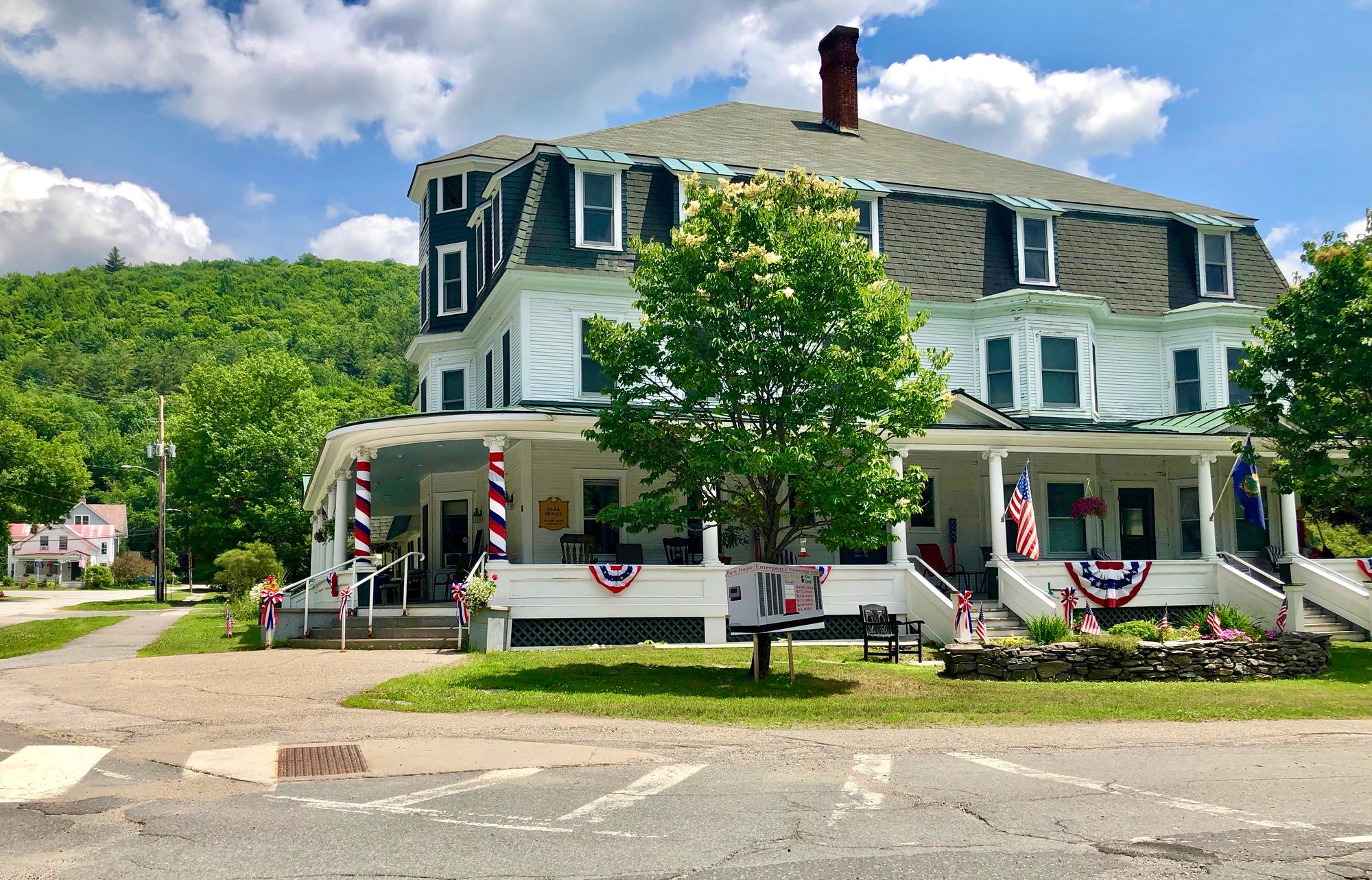
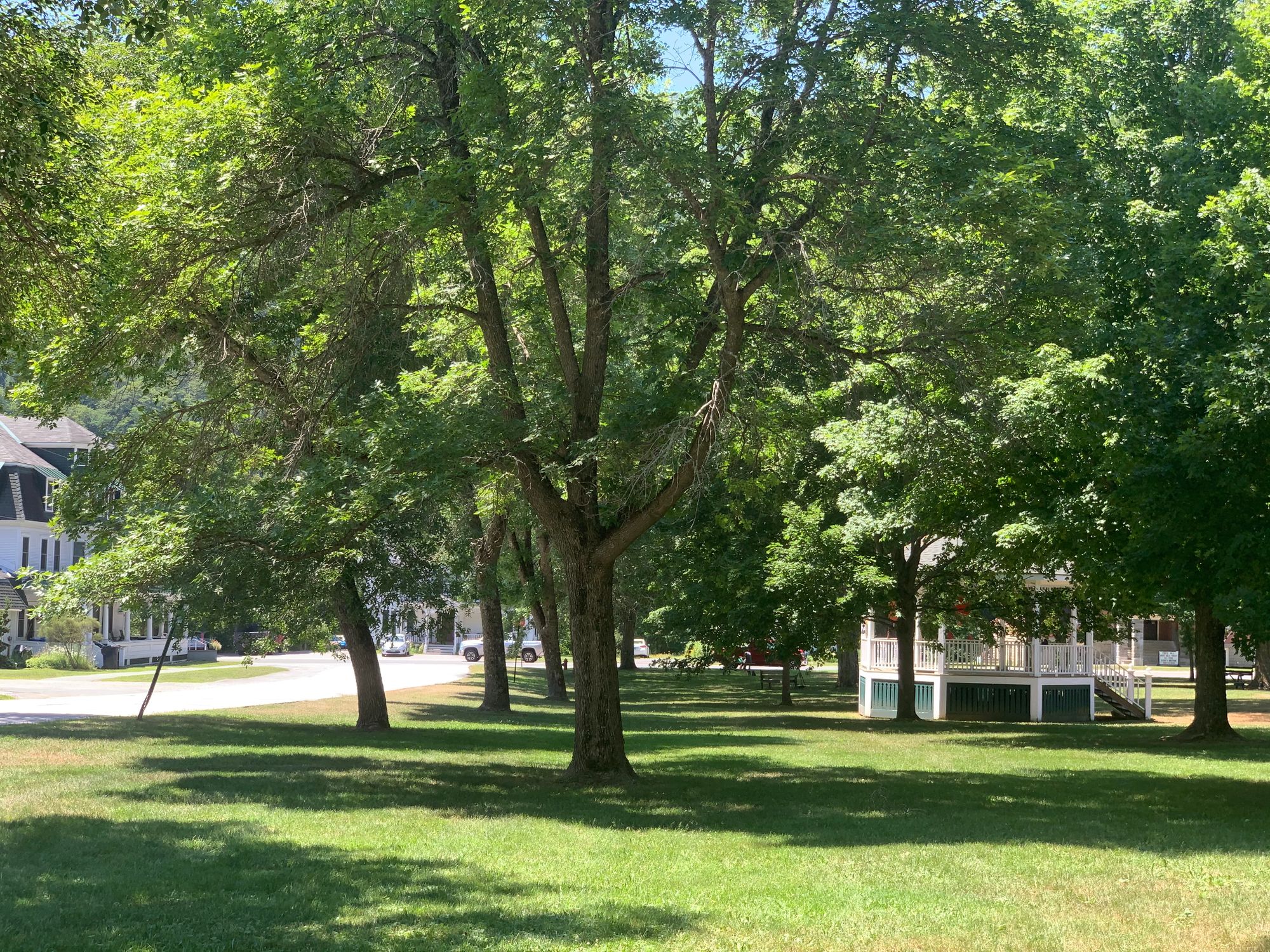
There is a real opportunity to enliven each entity in Rochester to create more presence in an already-special town.
Bristol, Vermont
This is a stunning community. Every aspect of it speaks out as a place cherished by those living there. It has beautiful homes, well-kept and well-used, its Green has one of the best playgrounds of any we saw, and community institutions are spread out within neighborhoods.
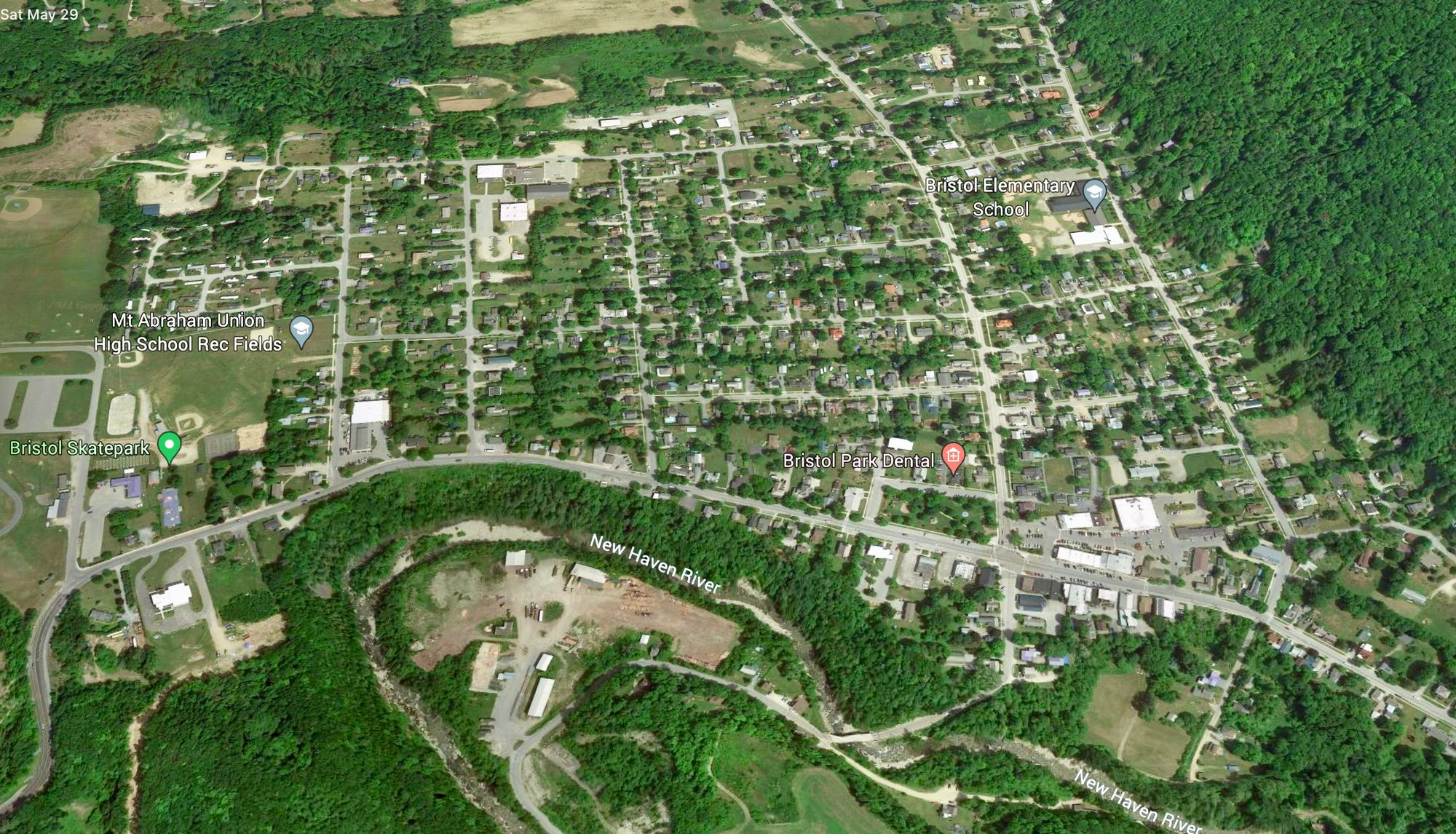
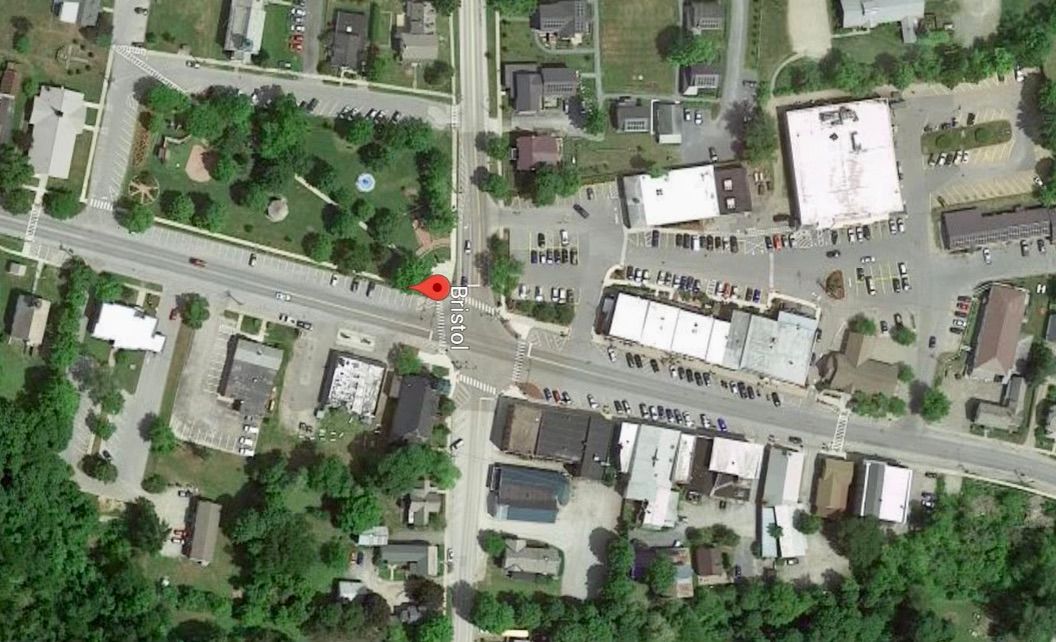
The town is compact. Every home is within a 10 to 15-minute walk of the downtown, but the downtown is a series of isolated destinations. The Green and Main Street are separated by a large intersection
However, it was easier and safer to walk and ride bikes in the past, especially for children and seniors. Restoring that feeling of safety and welcoming is critical for the future. Meanwhile, the Main Street in Bristol has shrunk in use over the years, partly as a result of road and intersection "improvements." Even after recently widening the sidewalks by just a few feet on each side of Bristol's Main Street, it is still overly wide, and its center auto-centric. Due in no small part to its size and design, the main intersection is a divider, not a connector. We know that intersections can make or break the social activity in a downtown area: So why do we continue to build them at this scale?
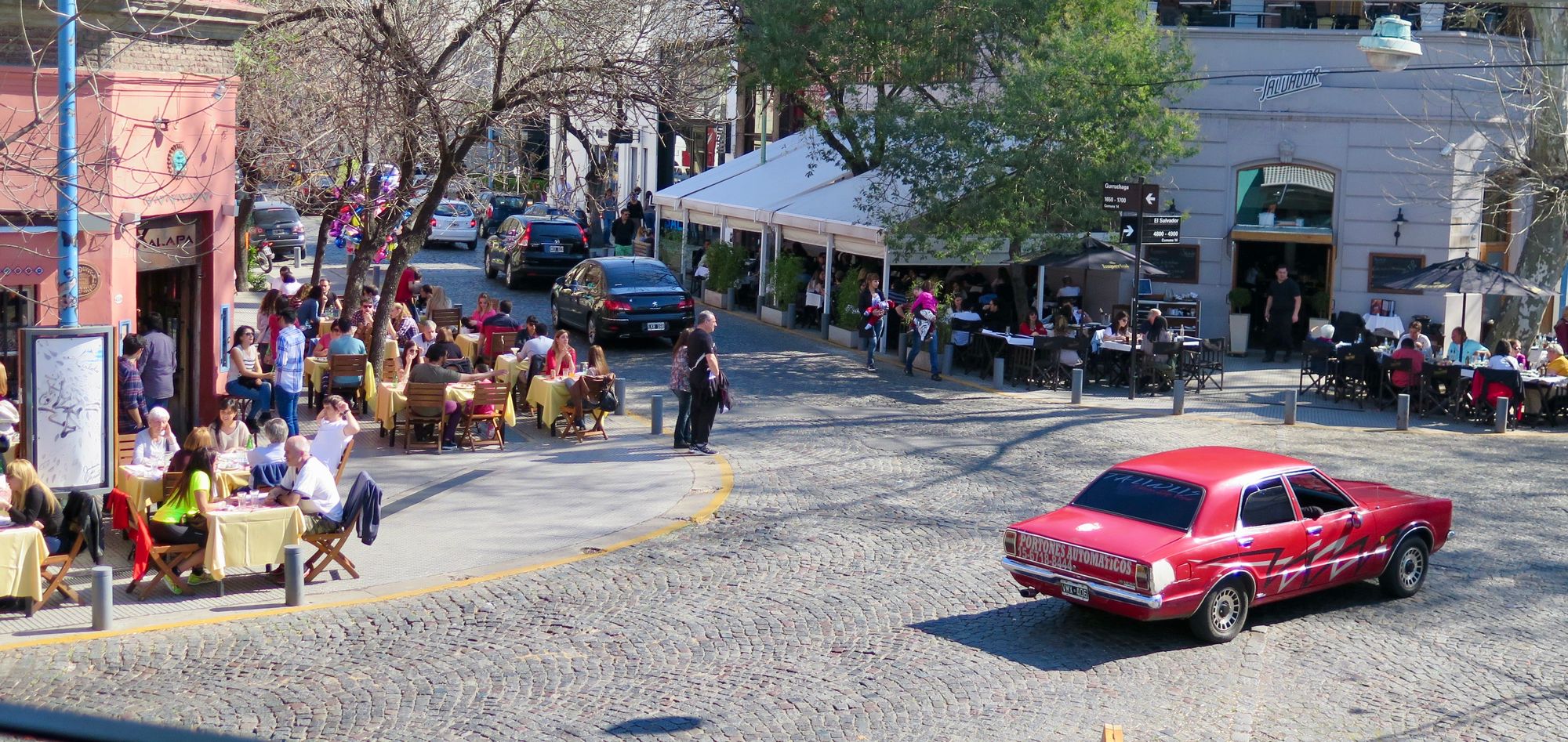
This results in a minimal connection between the Green and the main part of the downtown. Creating a true center that connects these places would be a game-changer for Bristol.
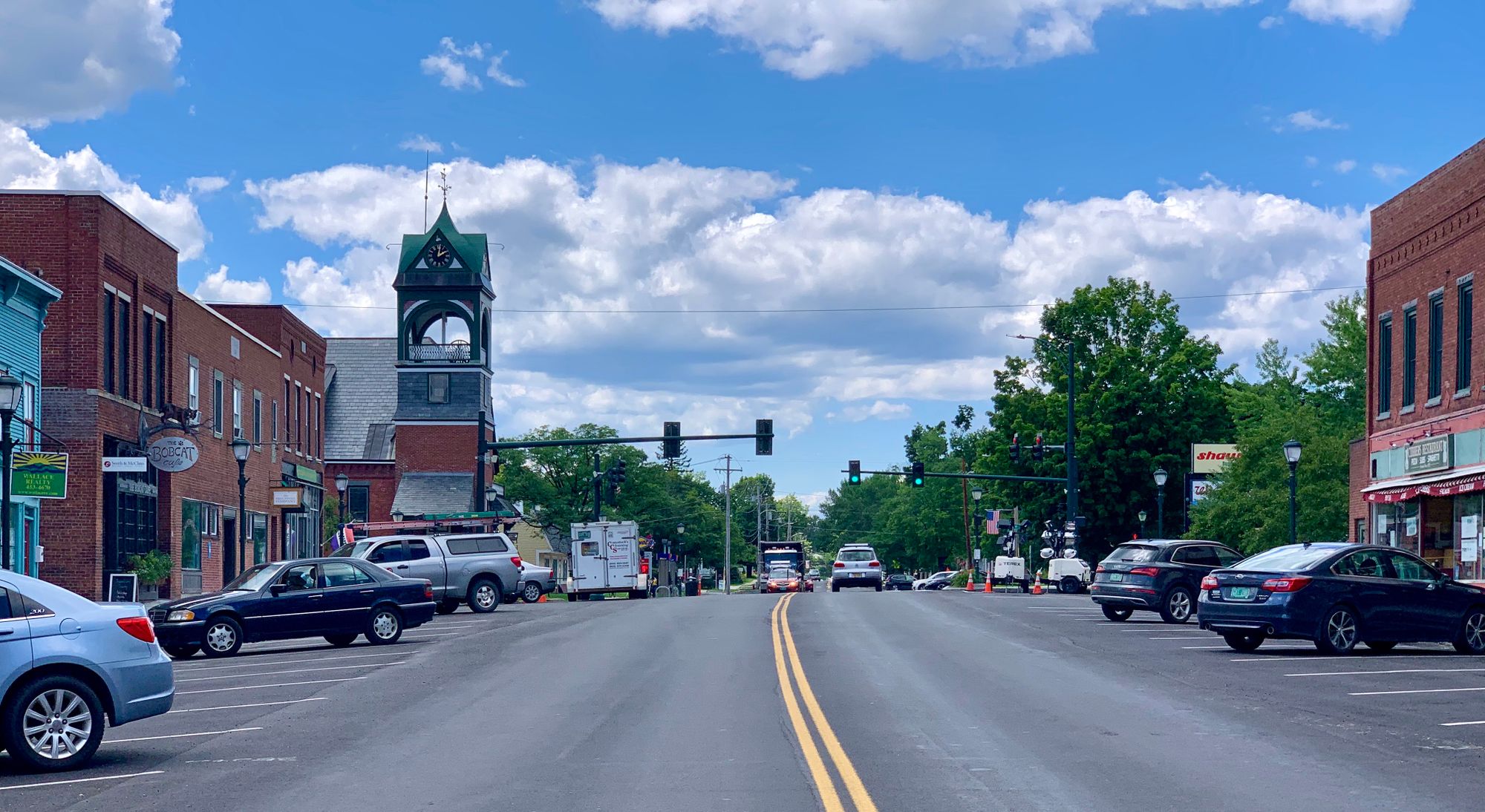
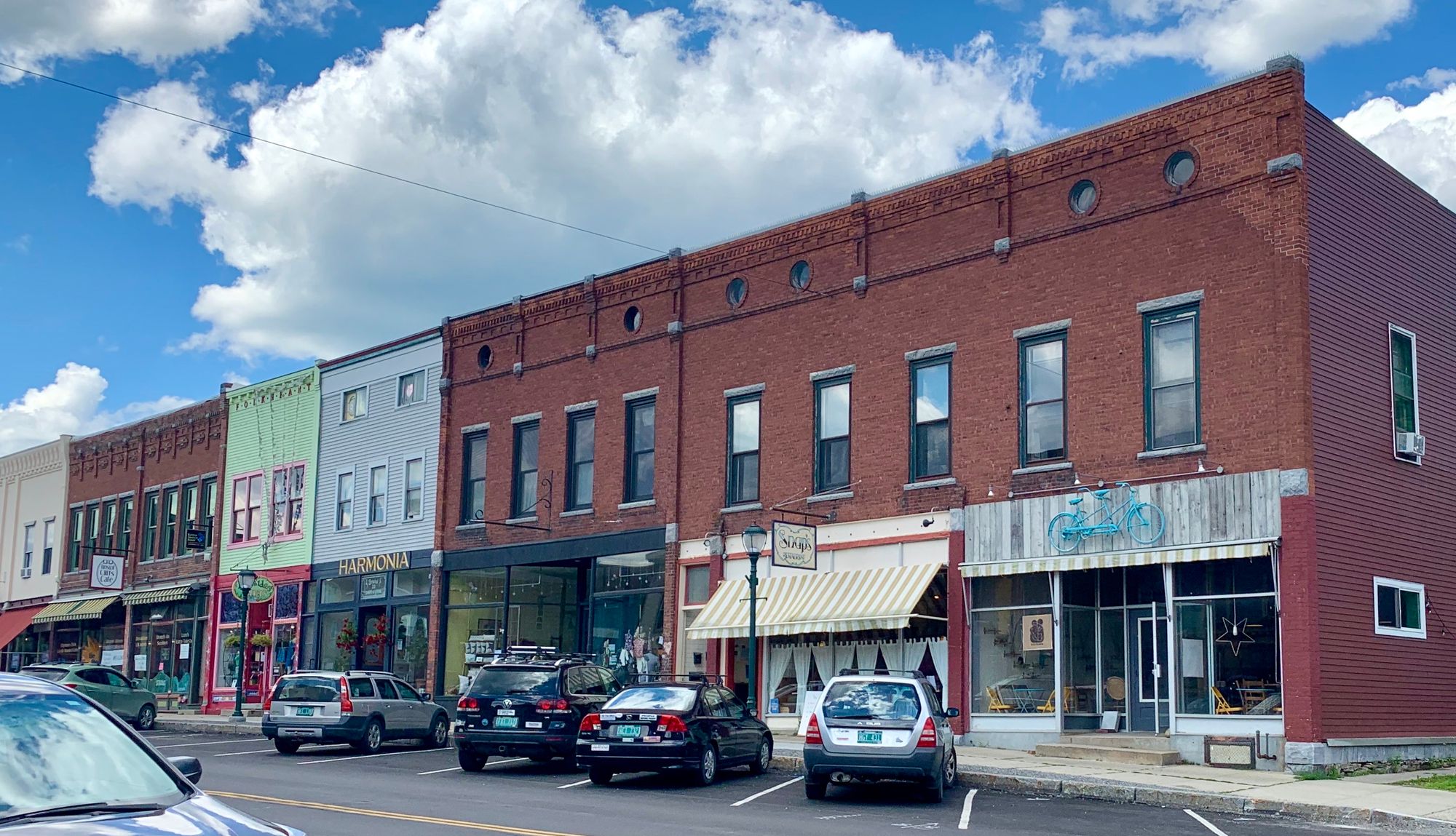
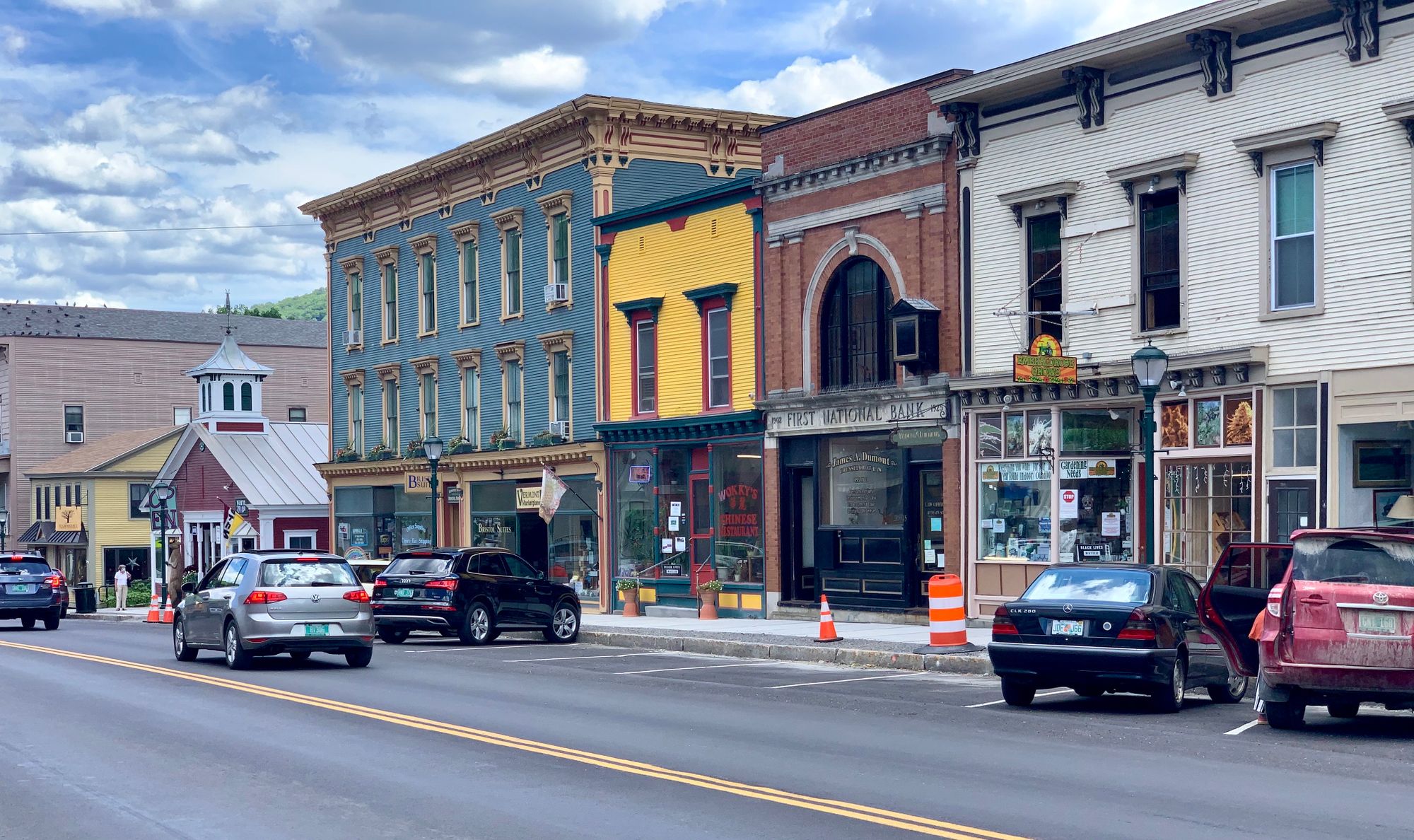
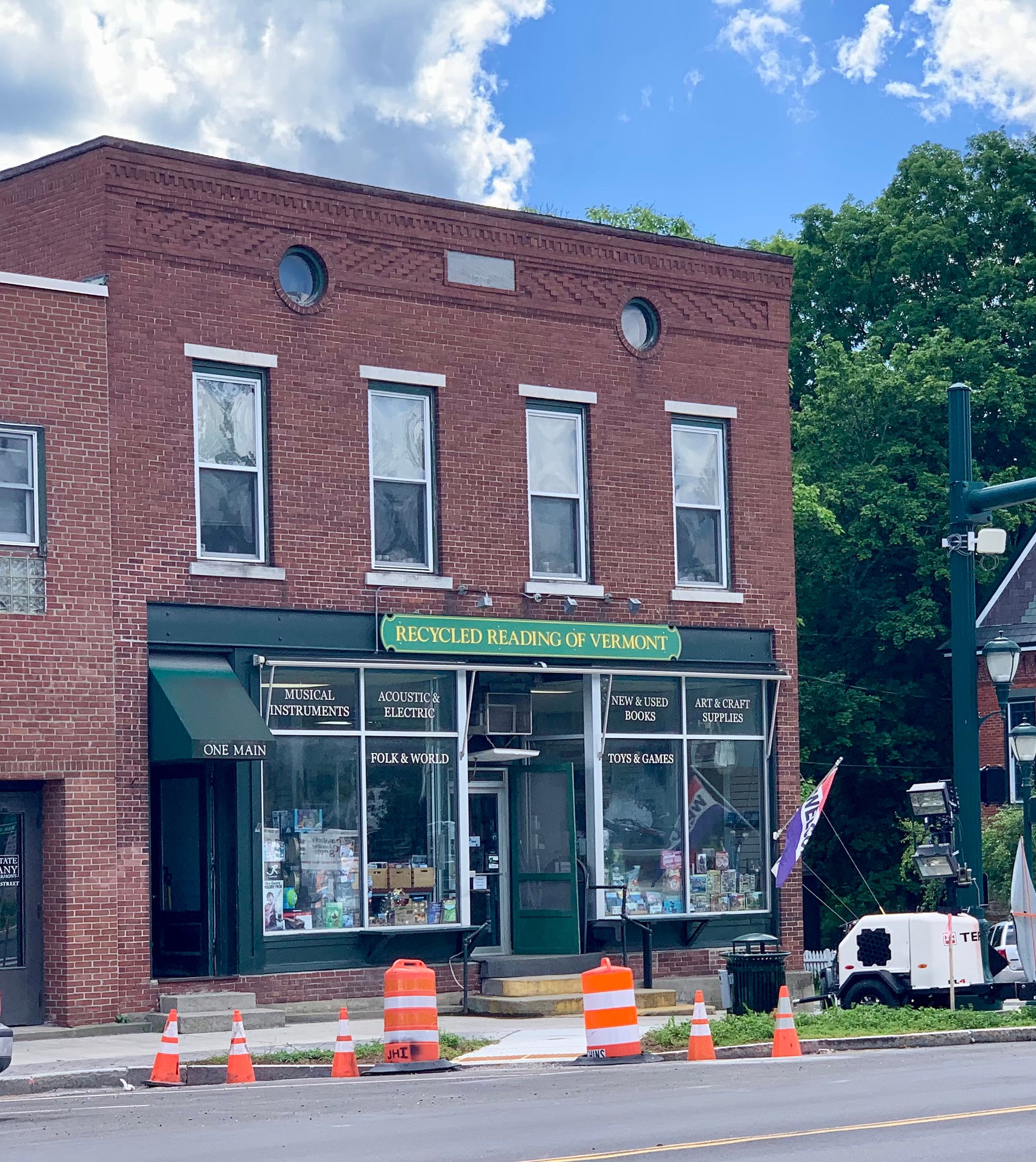
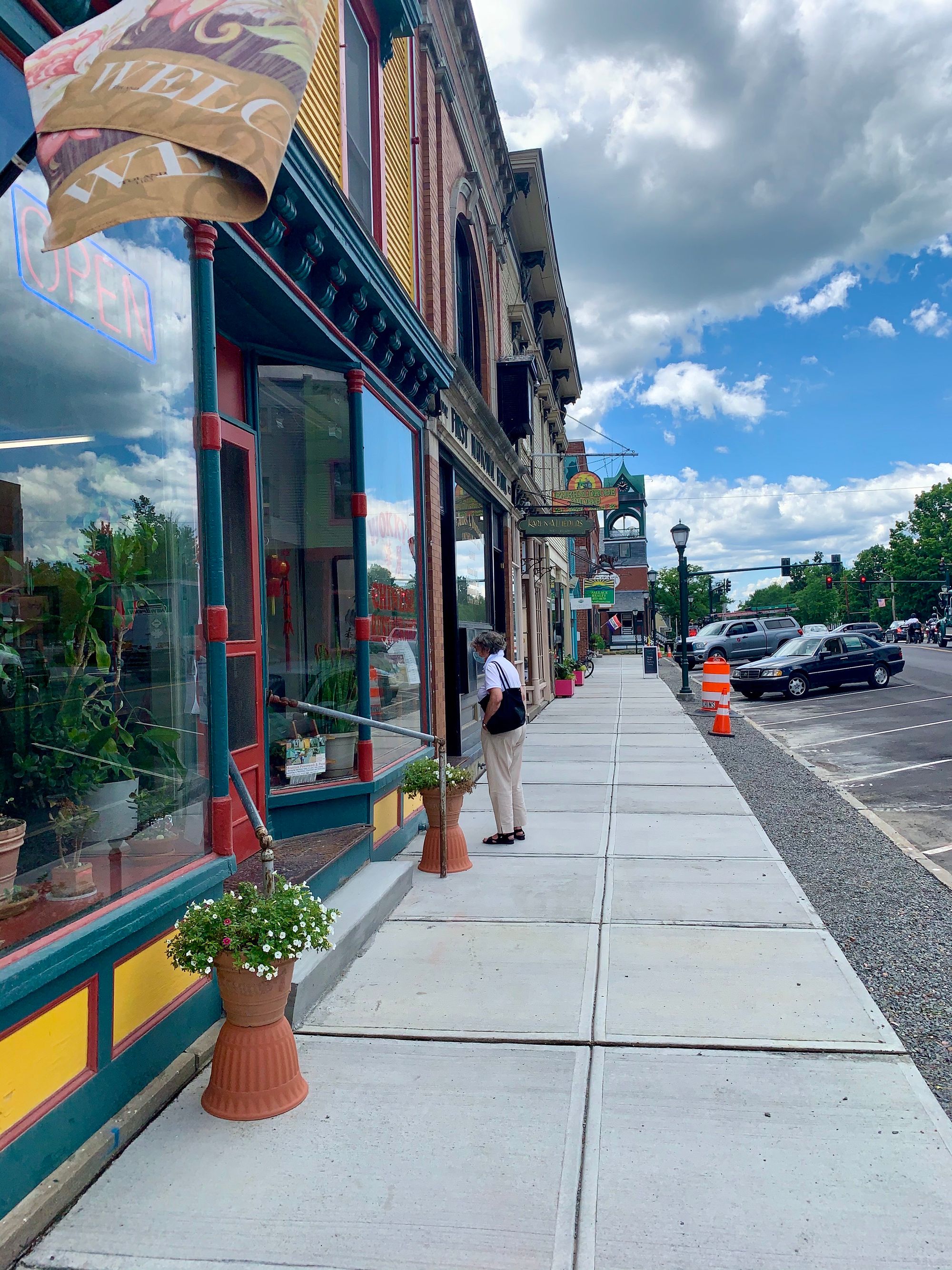
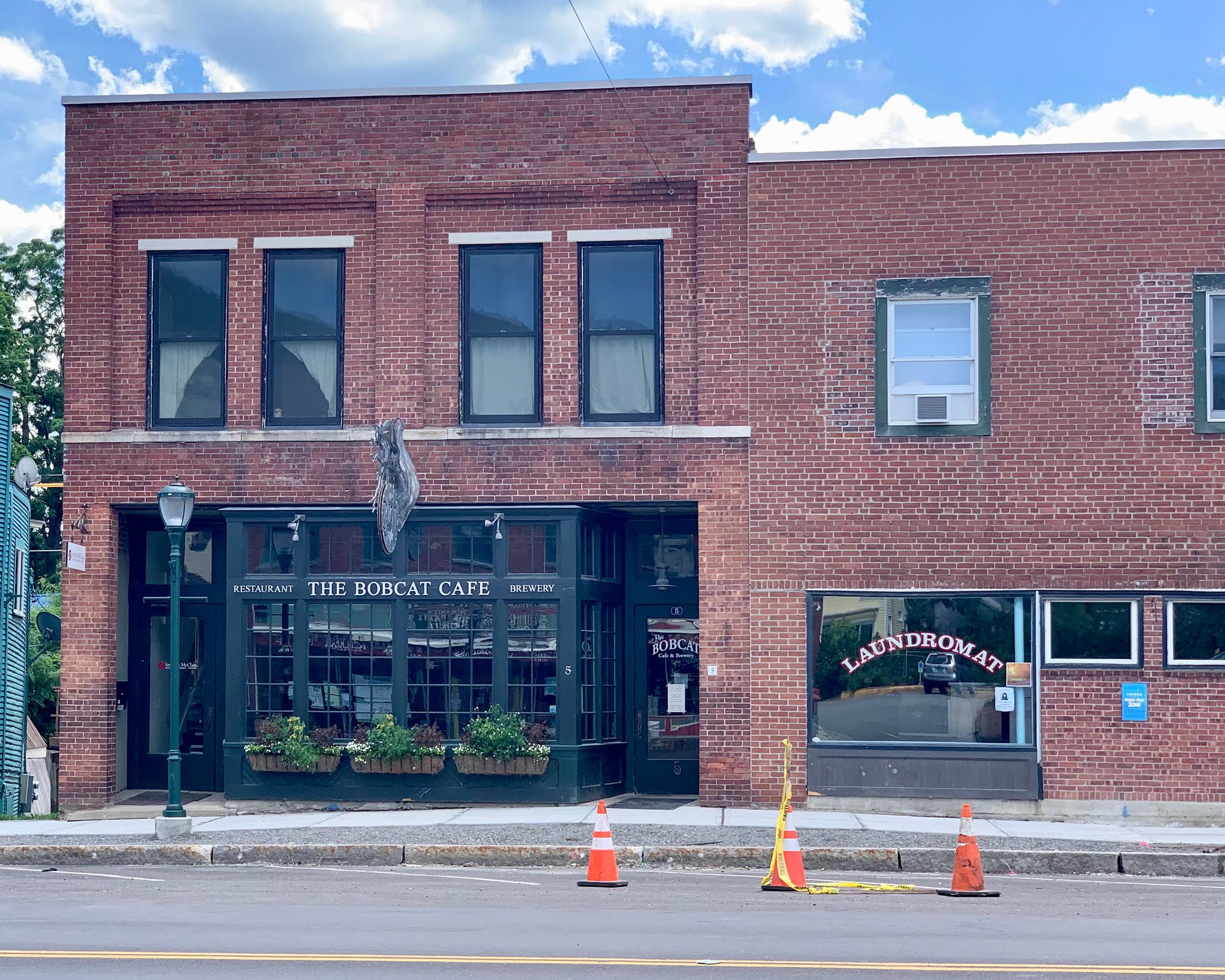

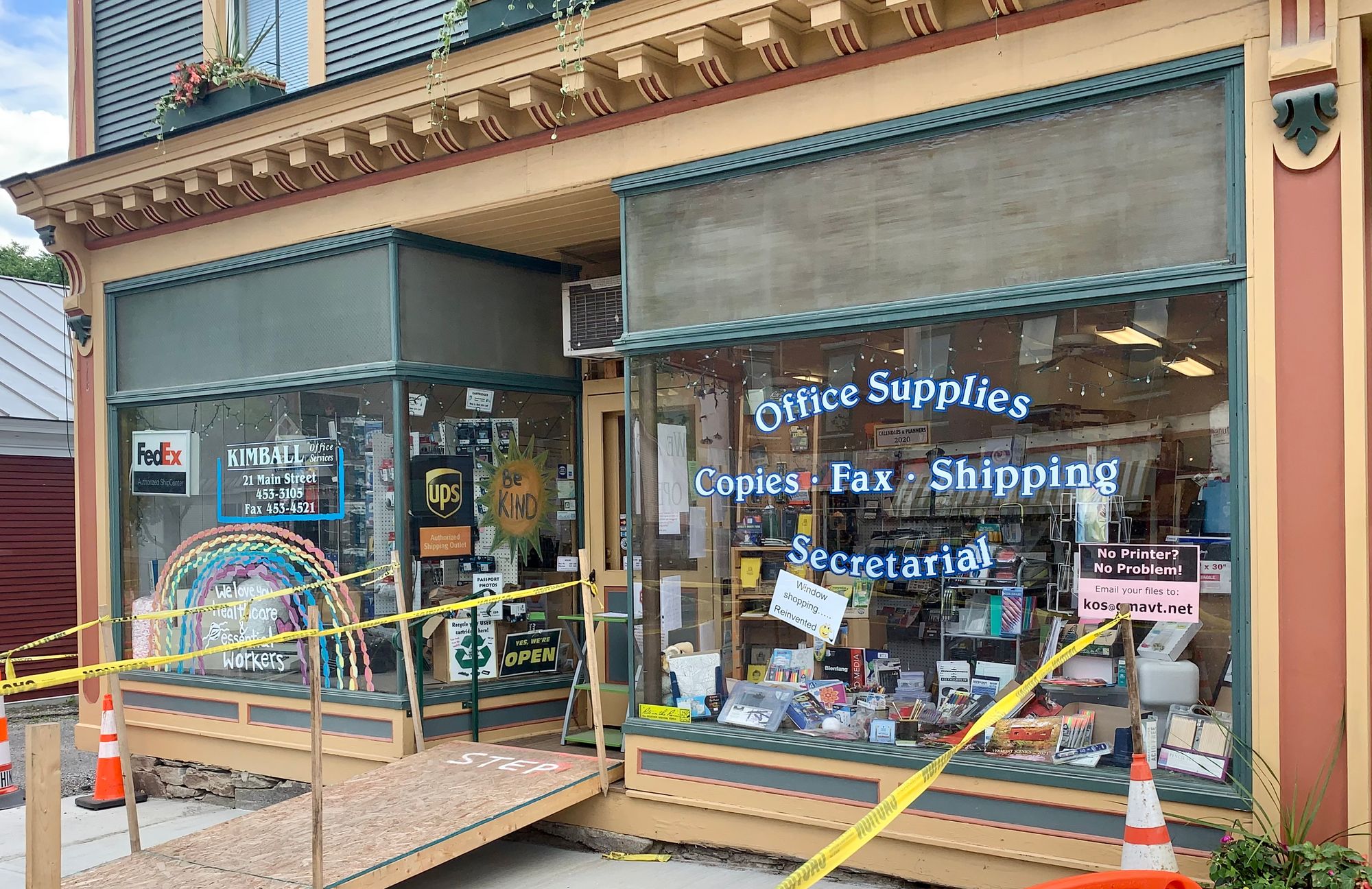
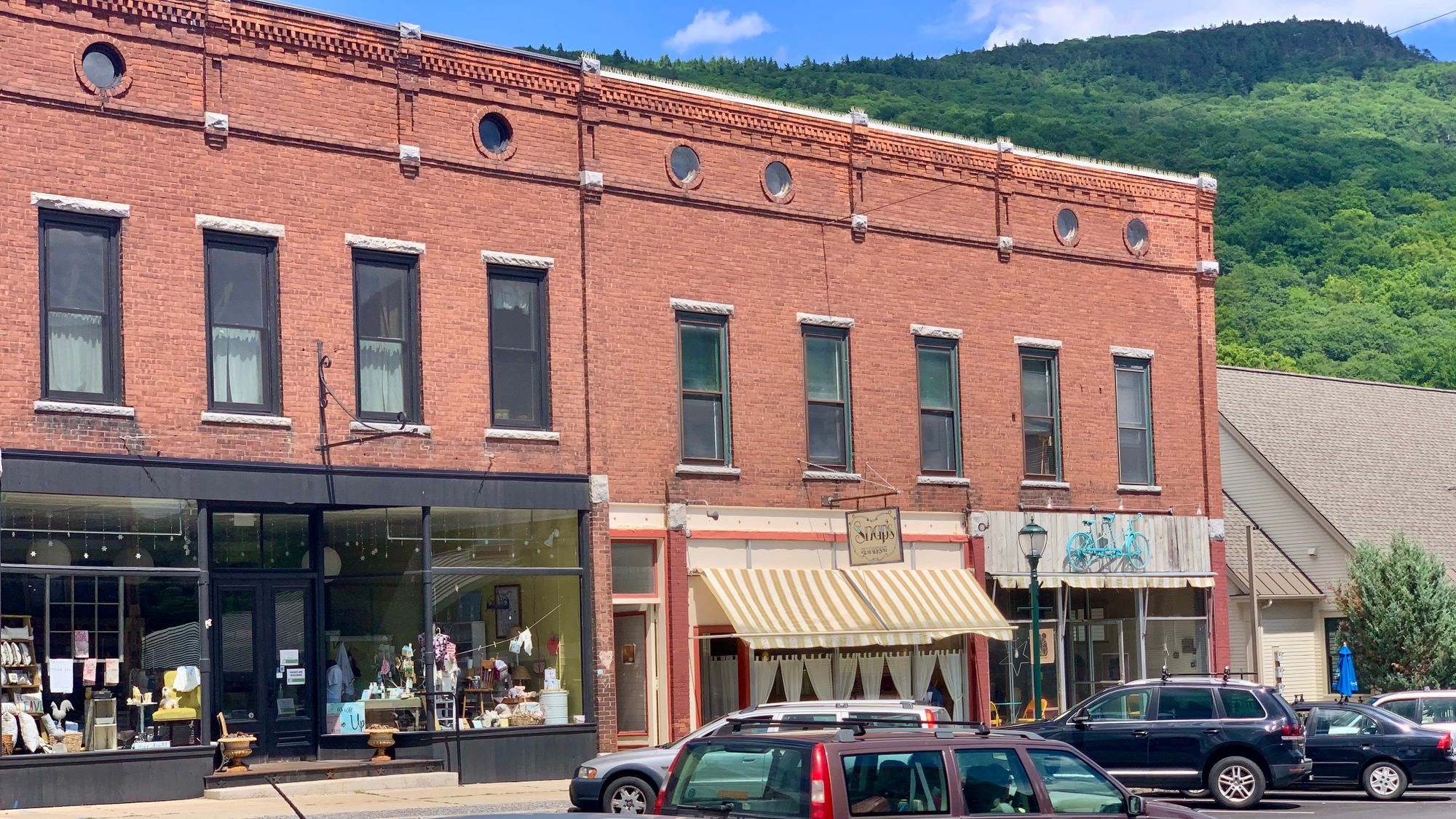
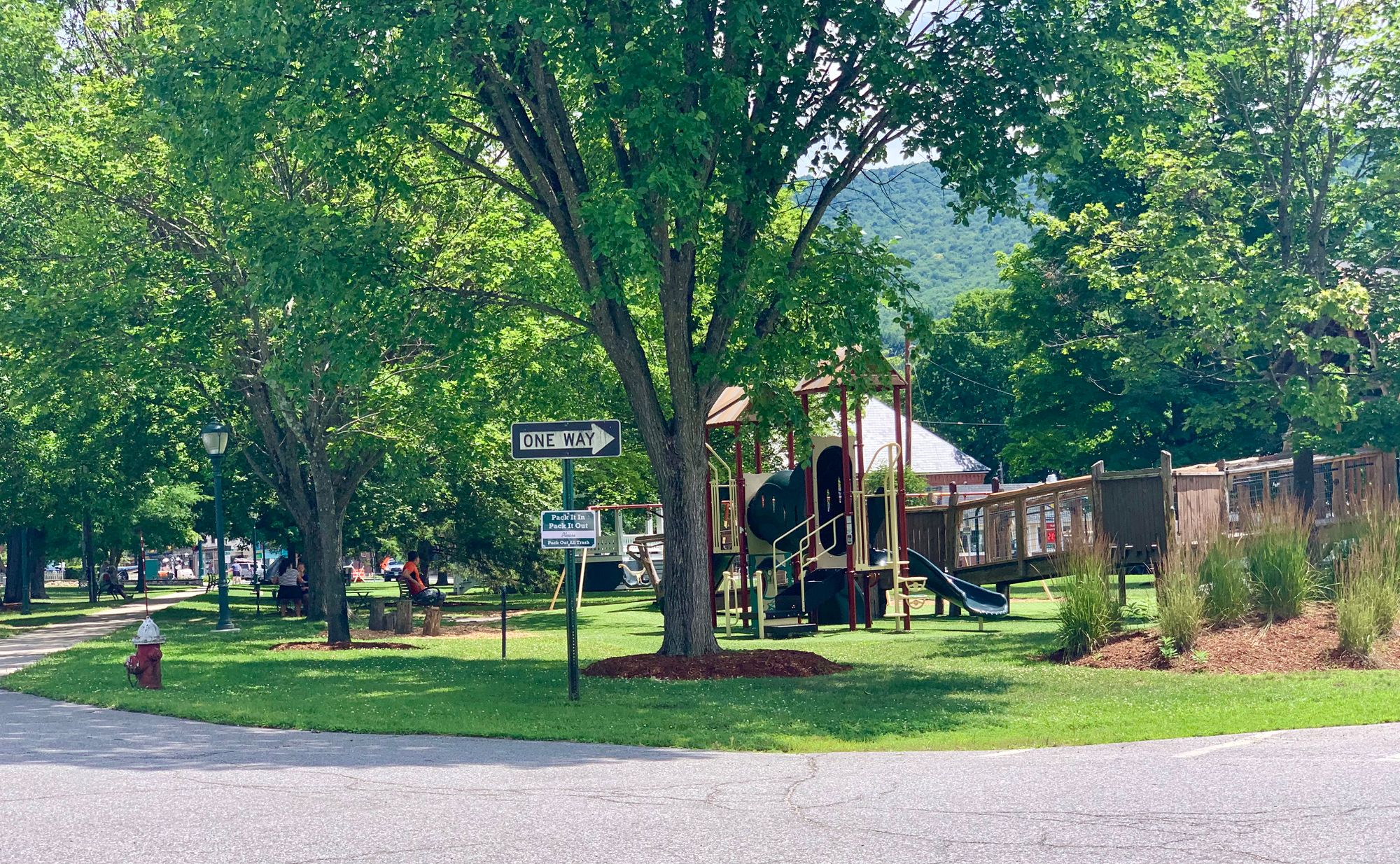
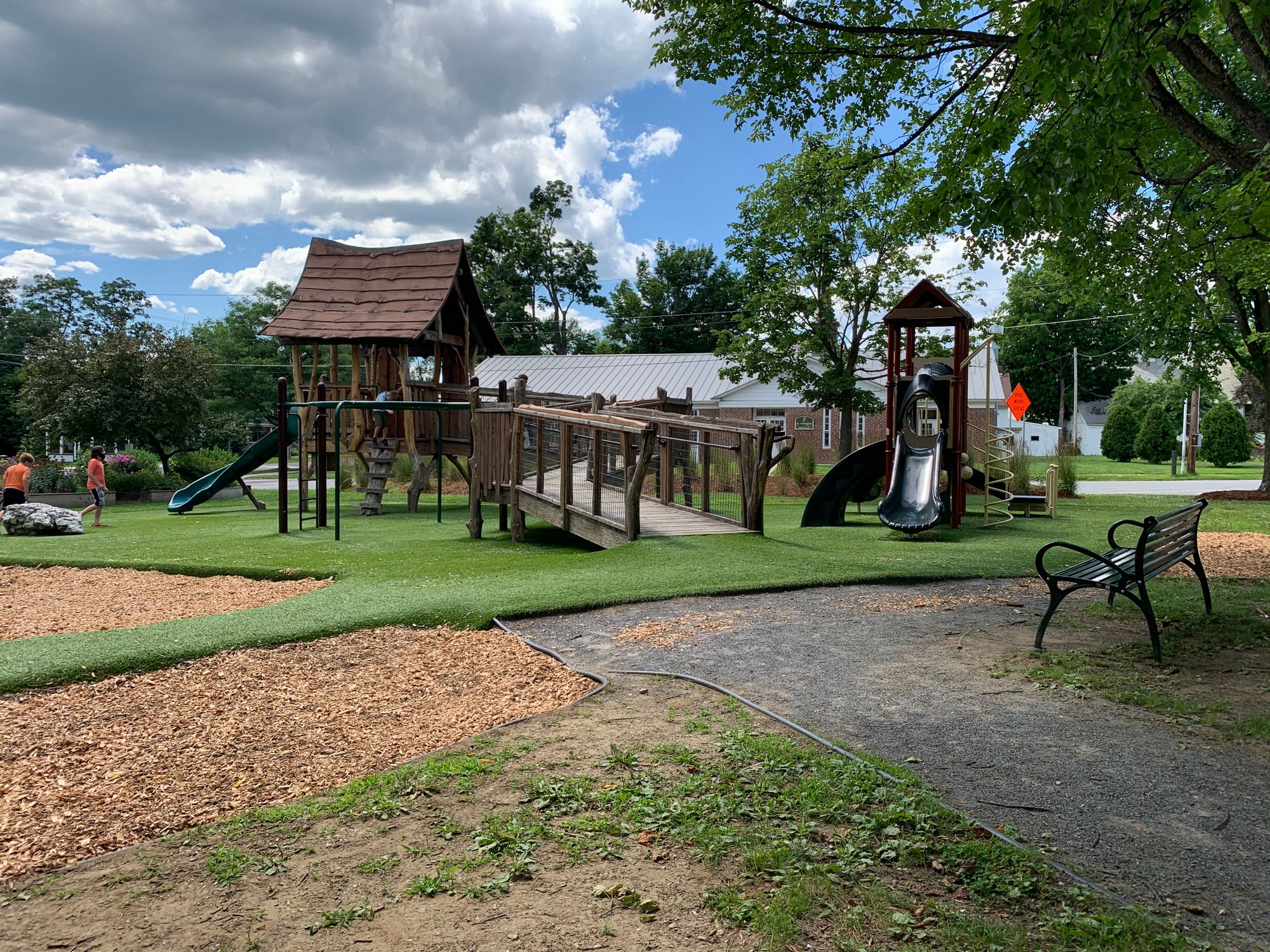
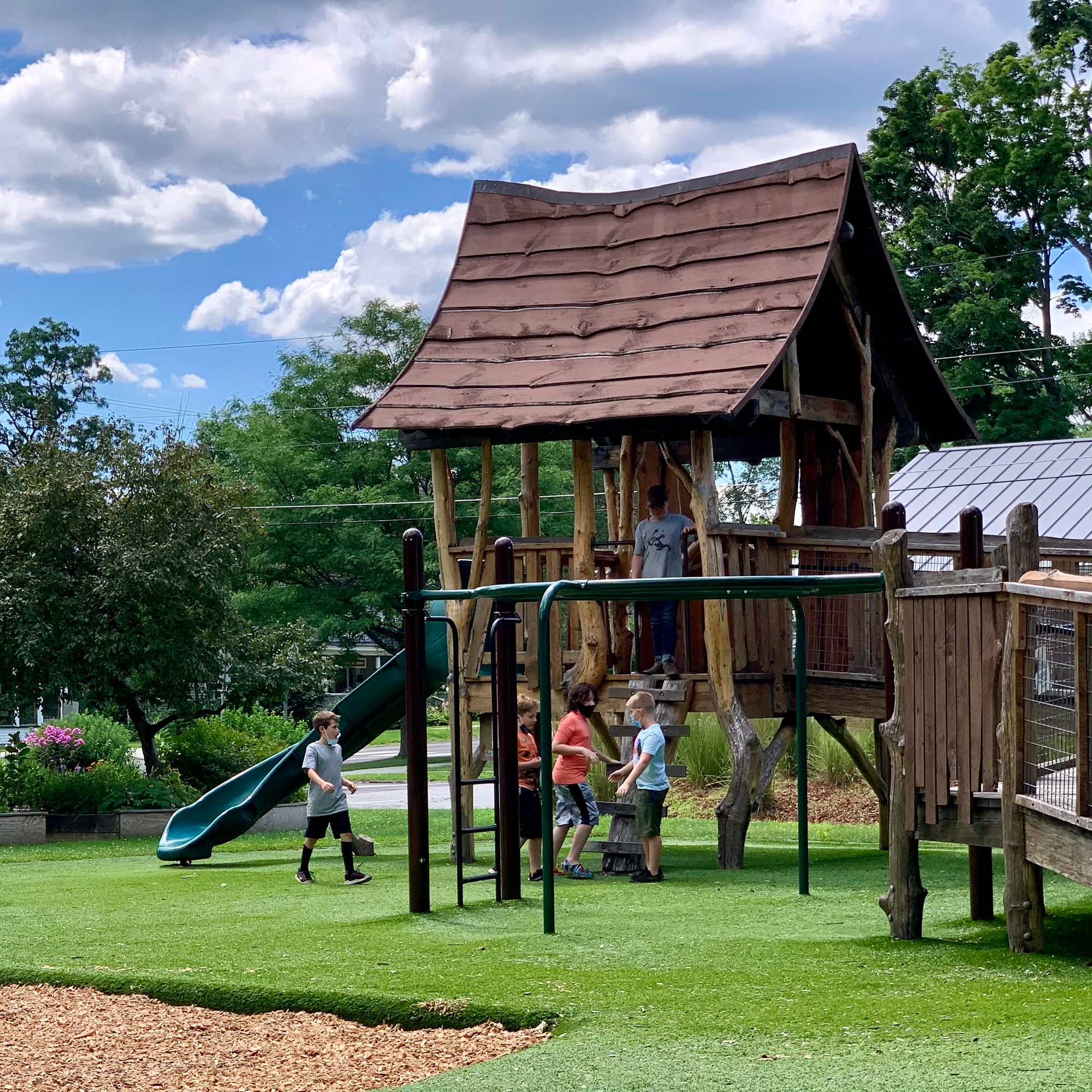
The Town Green is one of the best in Vermont, with a very fine playground.
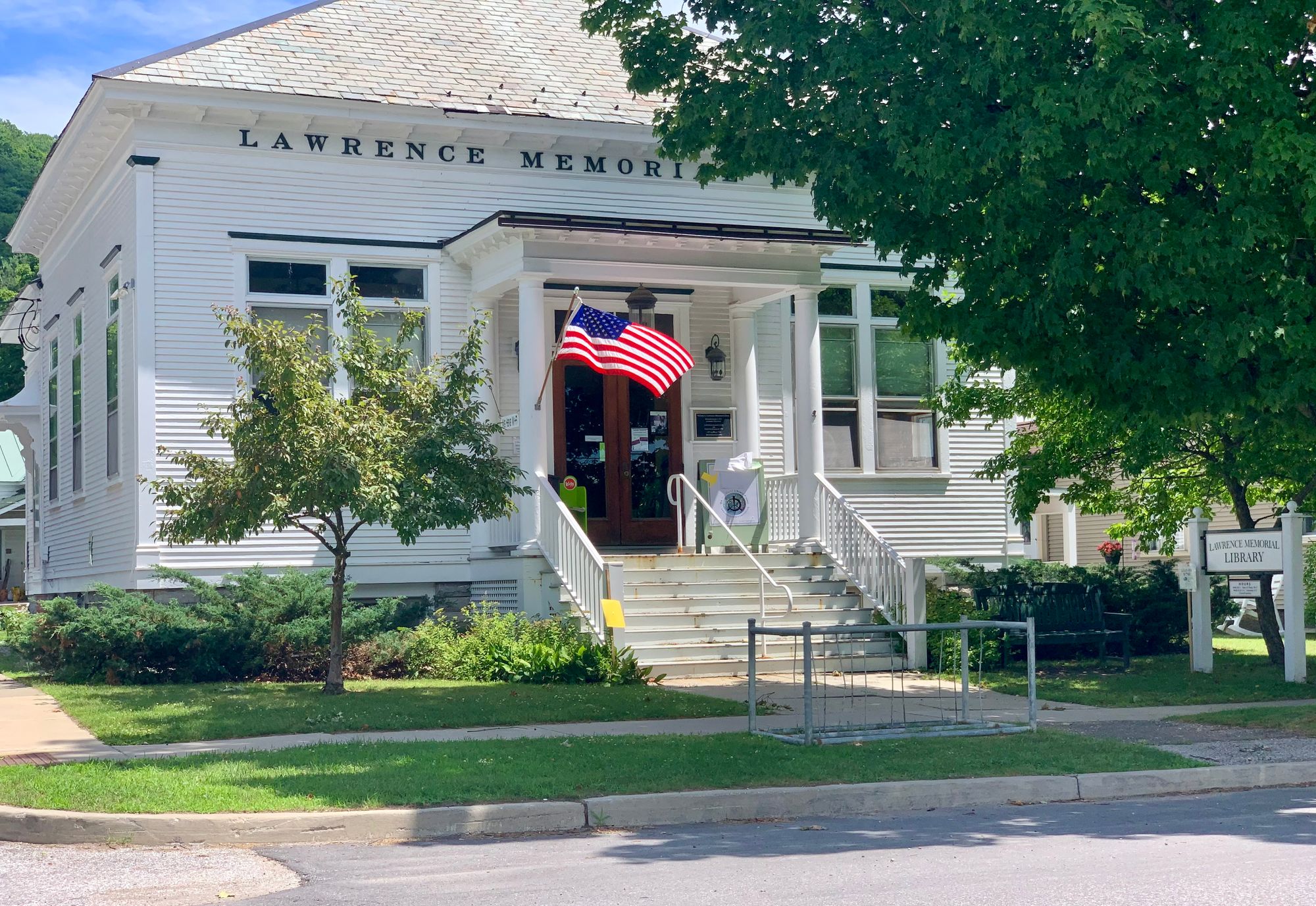

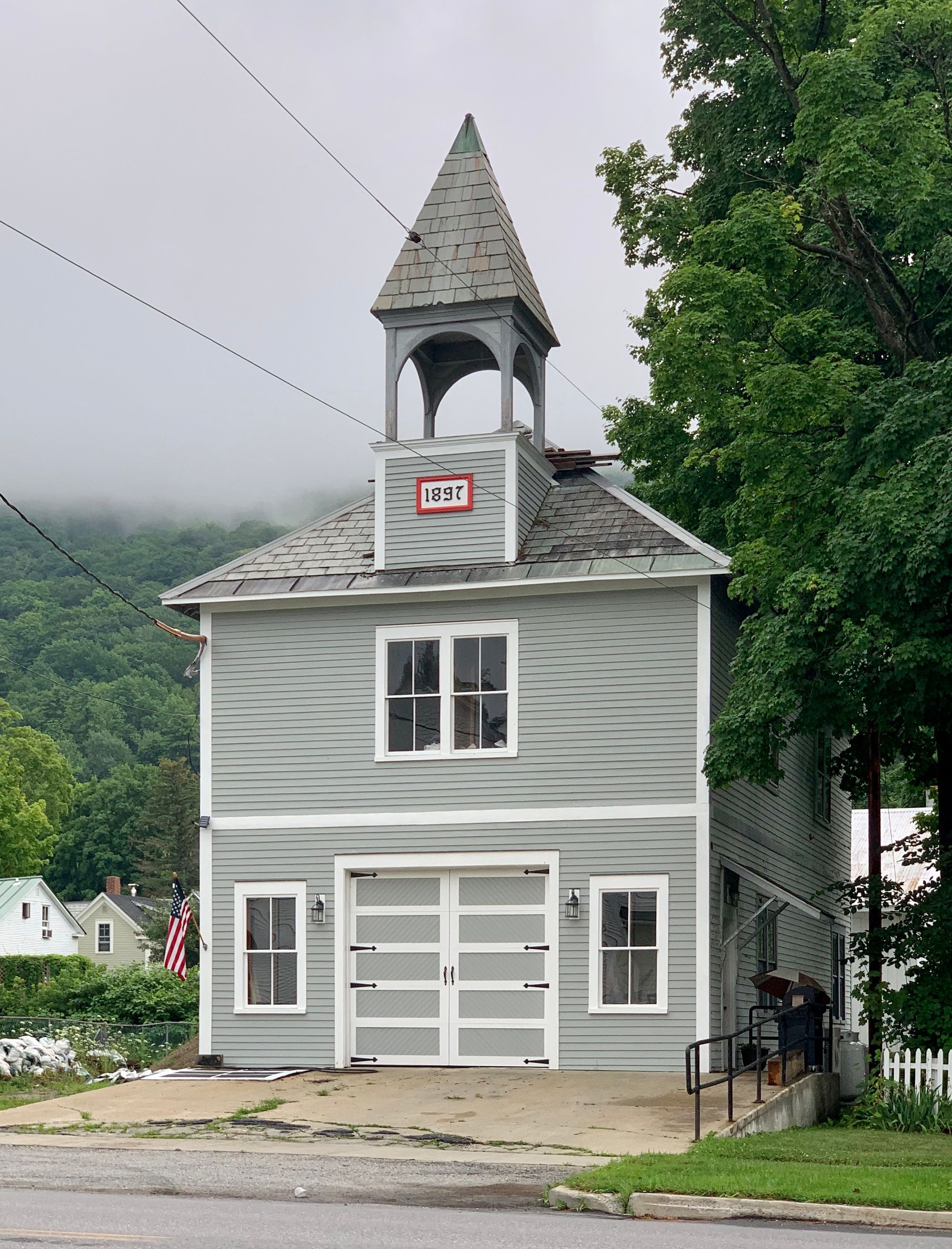
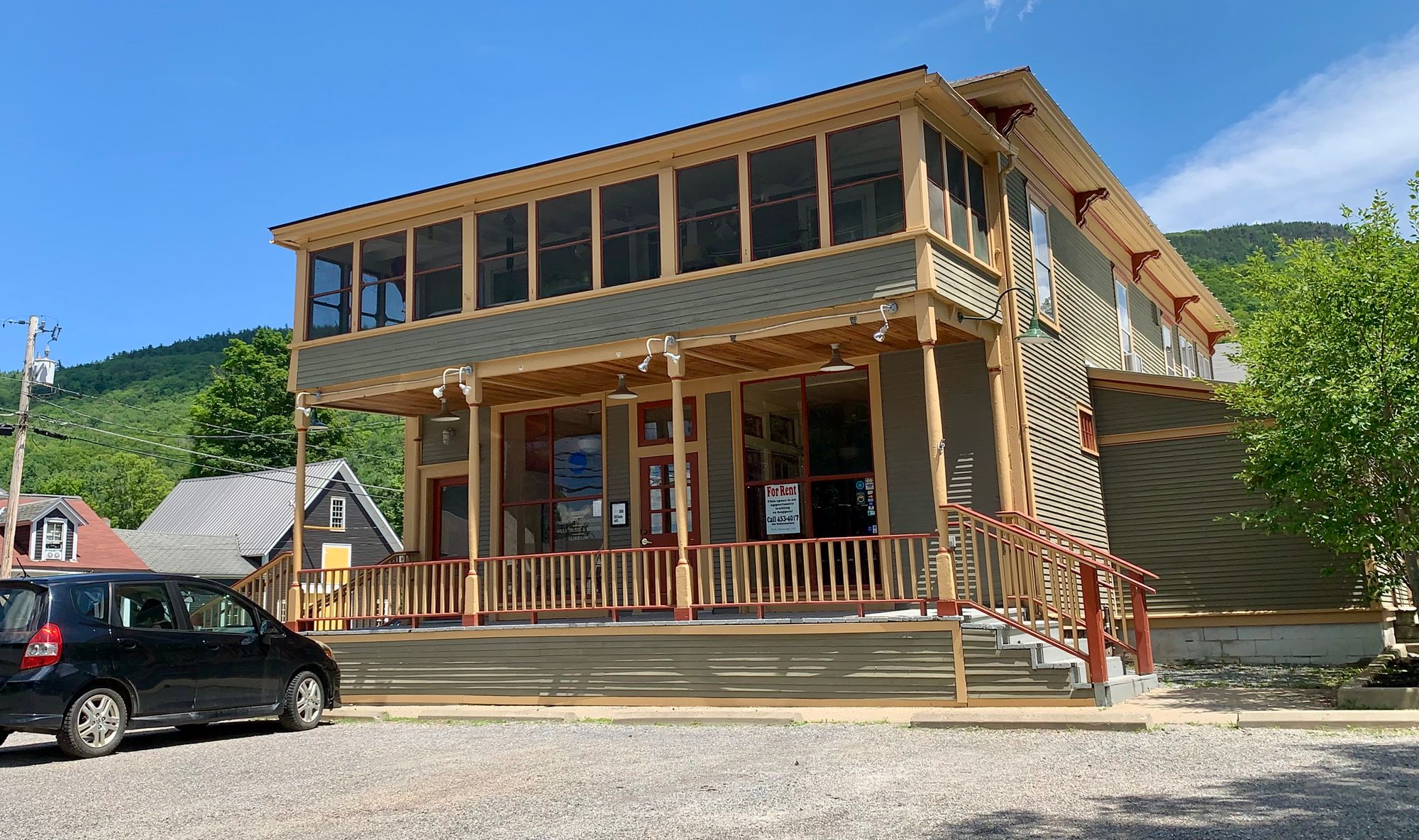
Public buildings are spread out within the community.
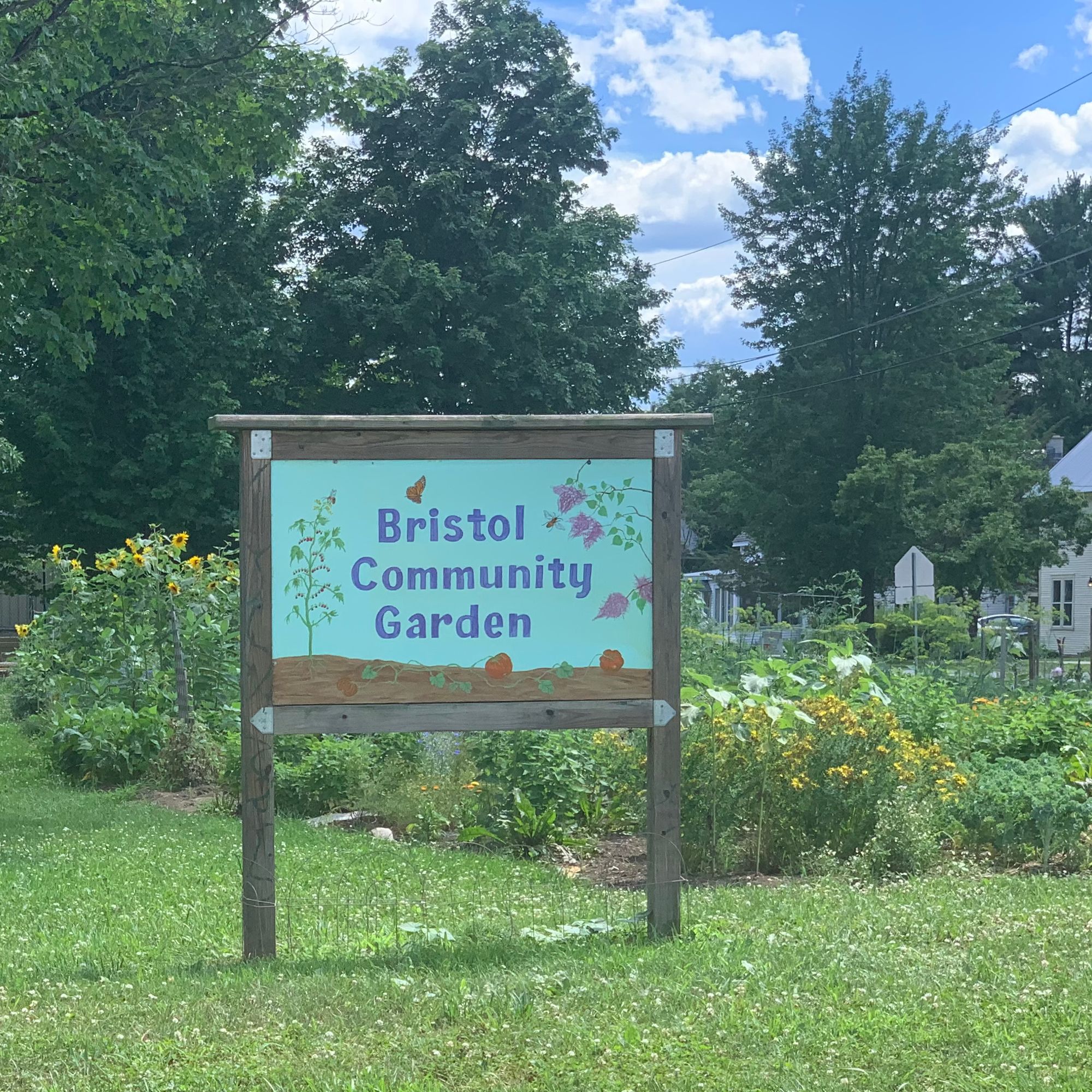
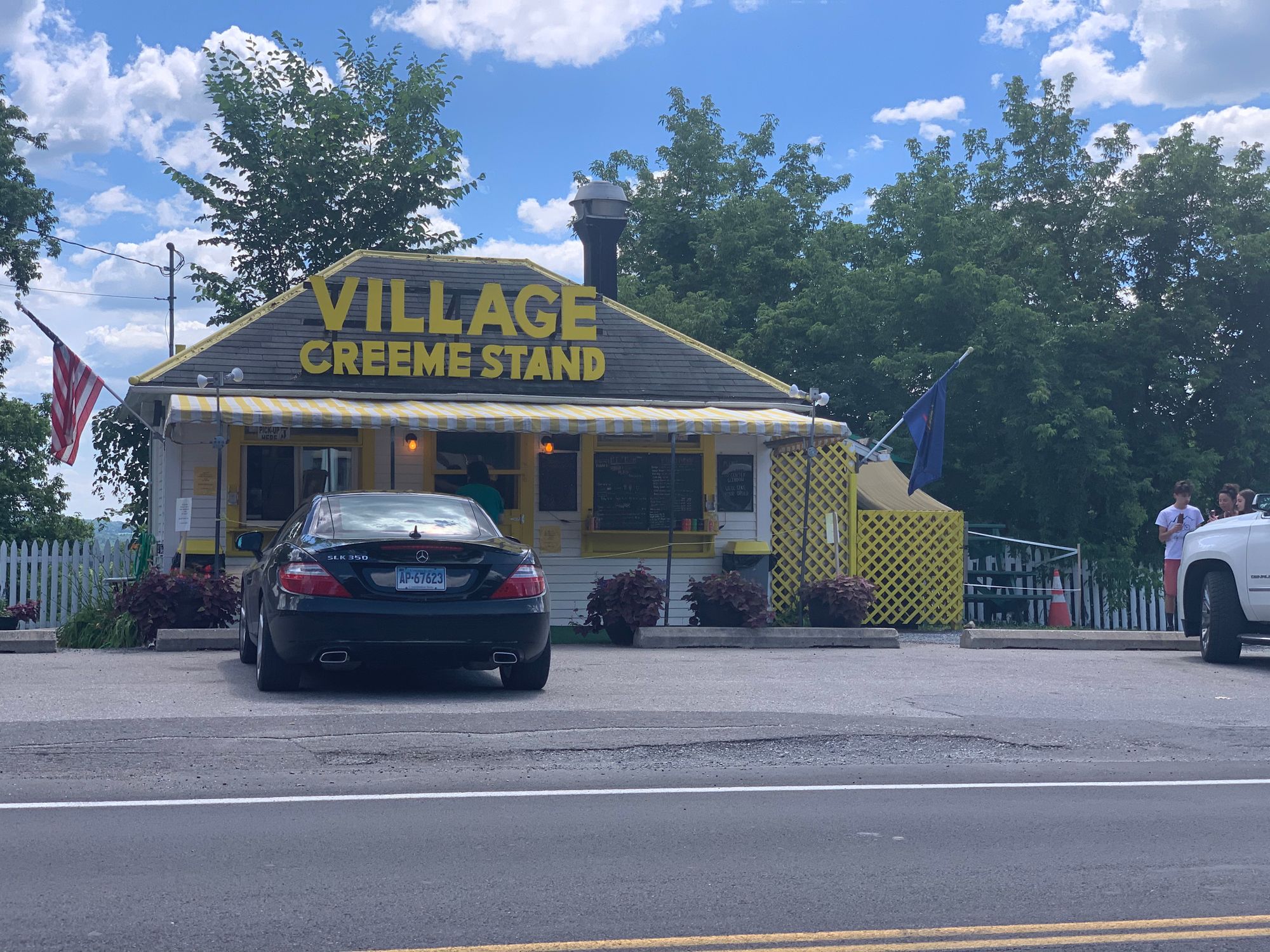
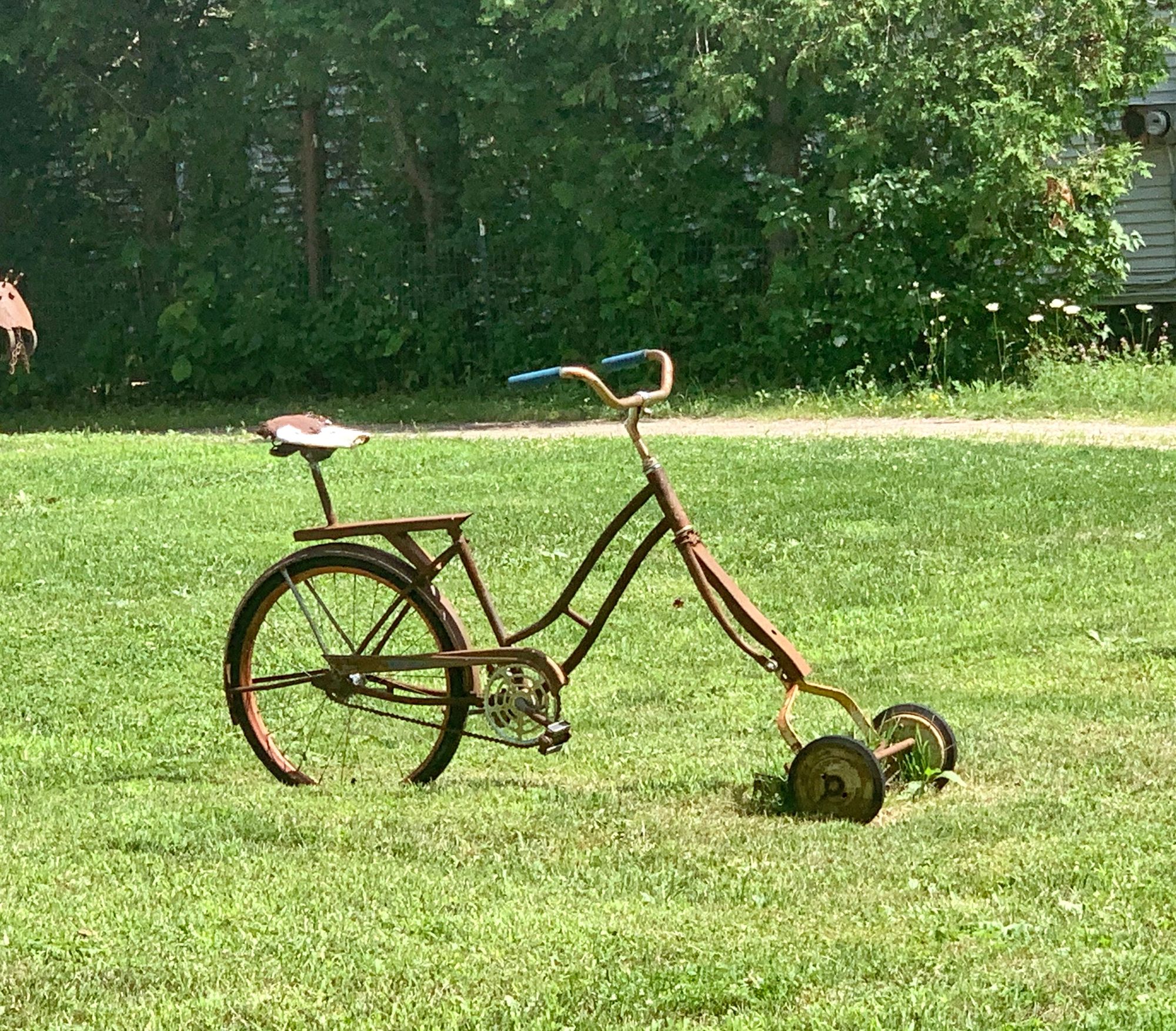
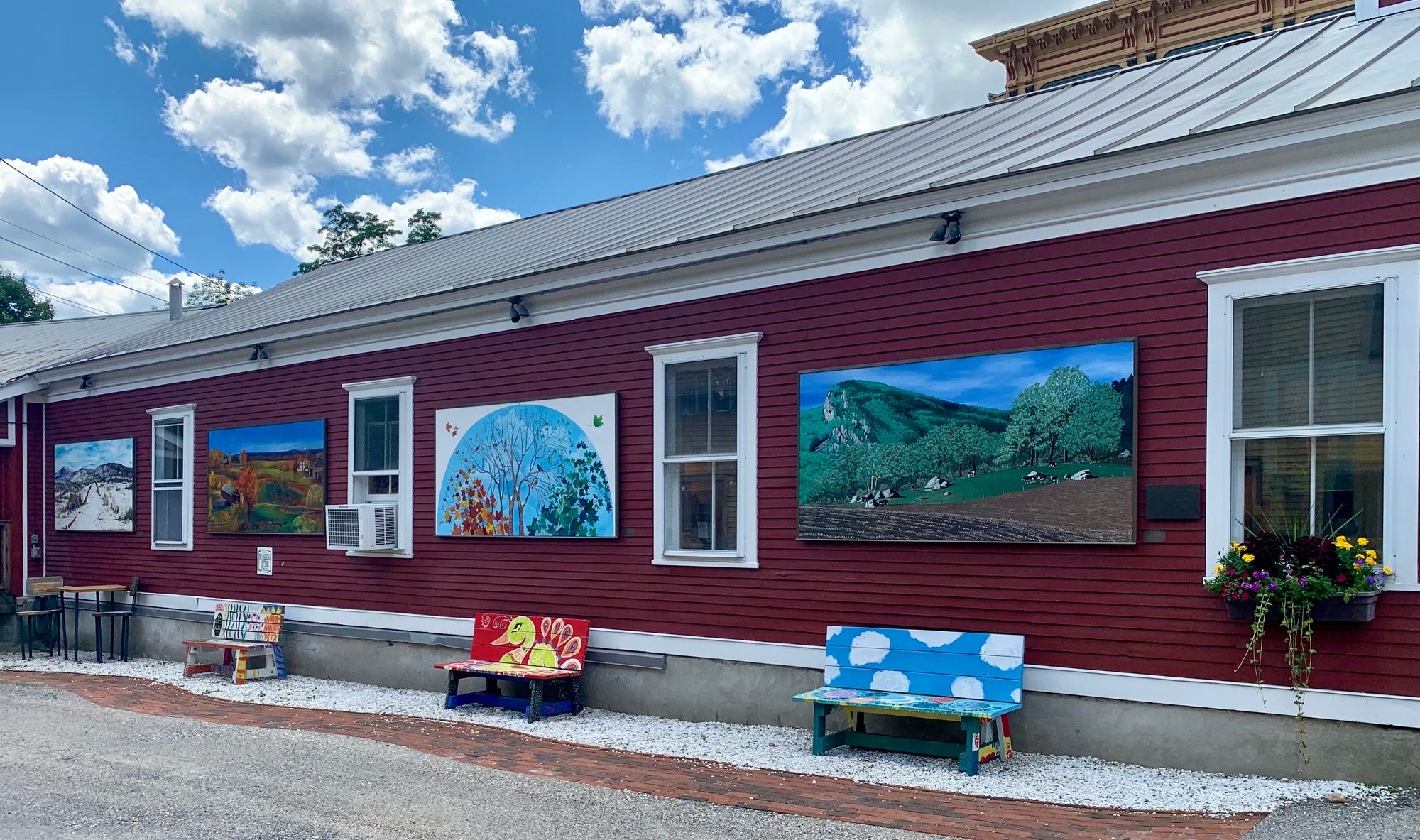
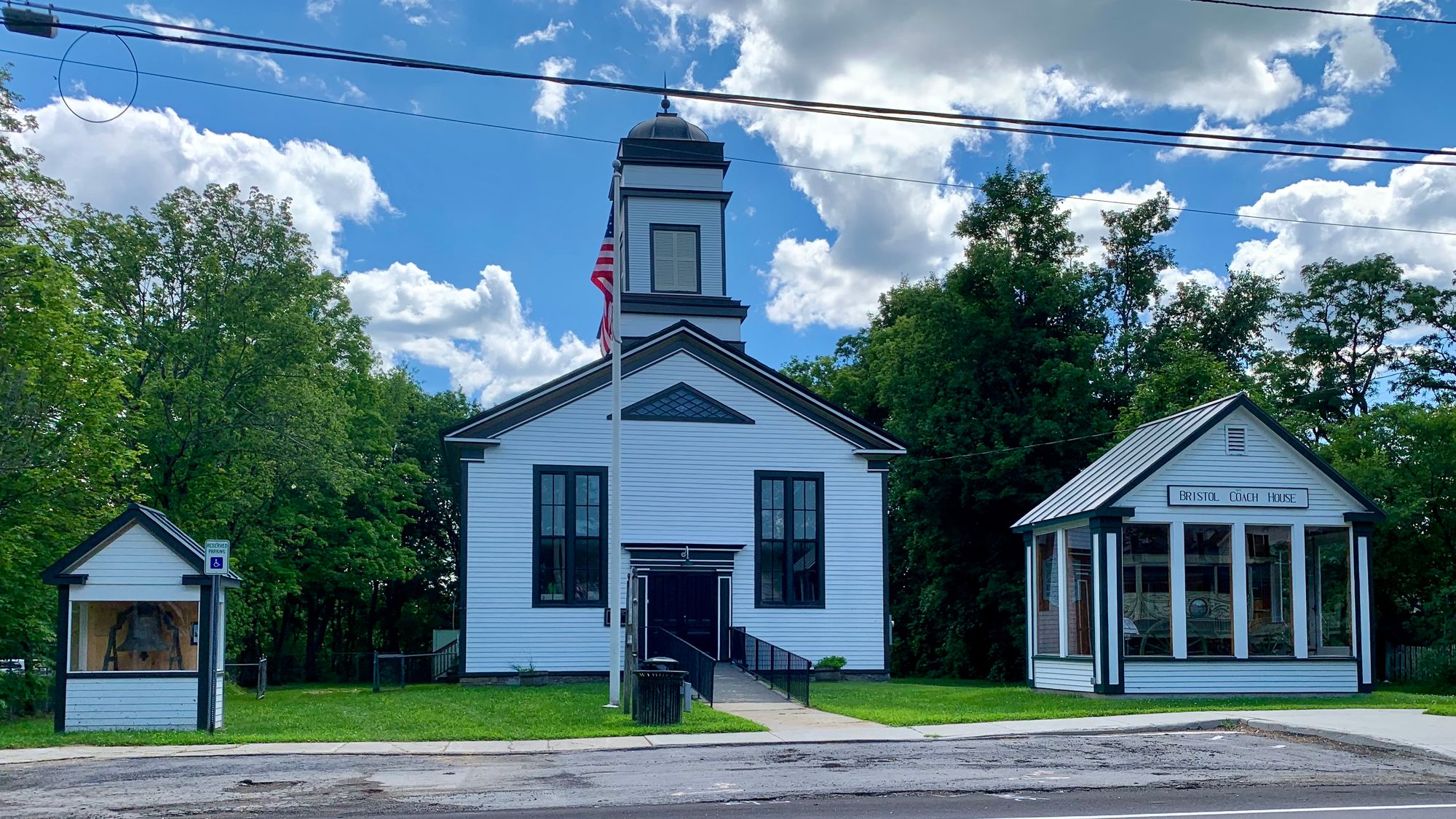
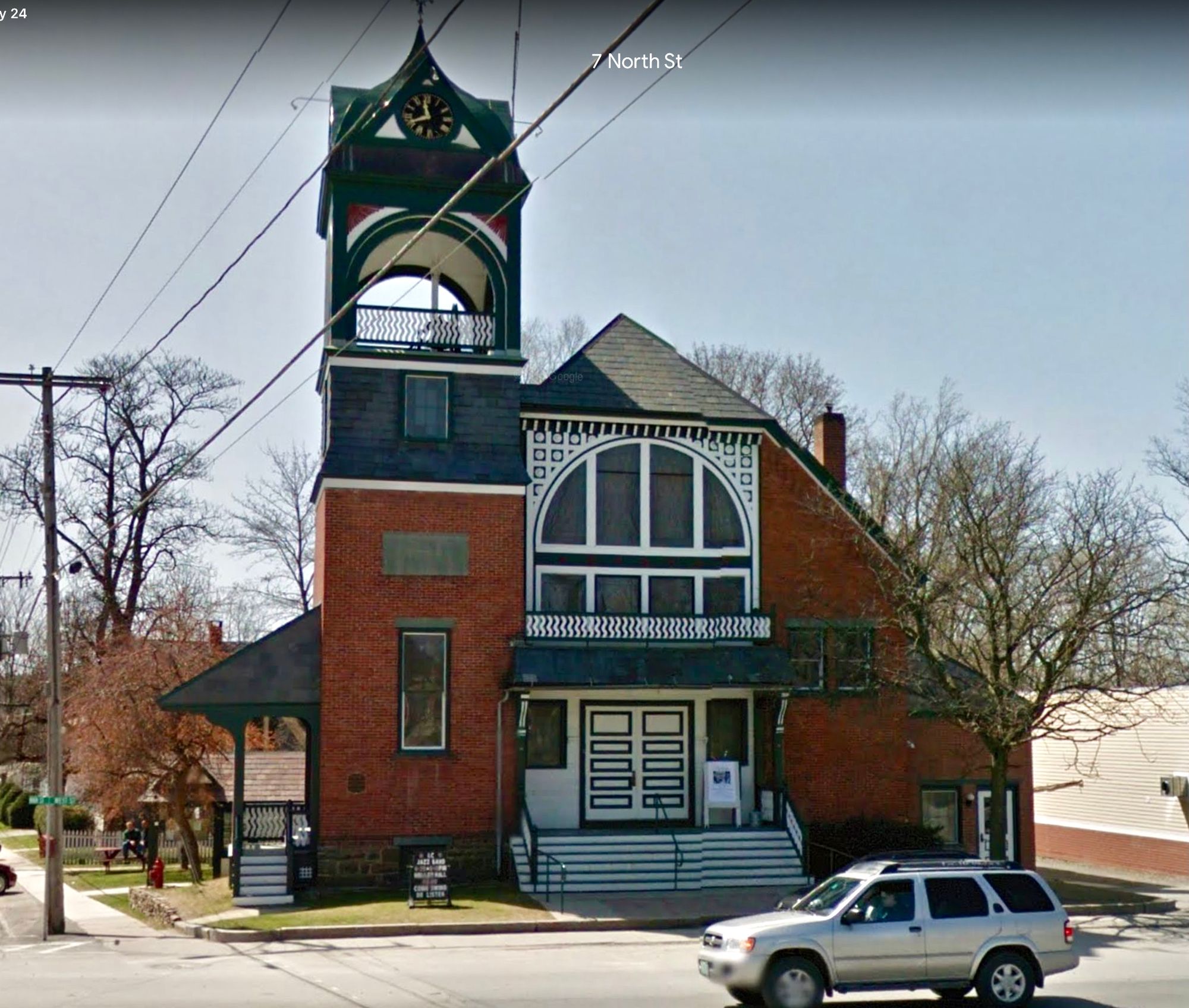
Other aspects of Bristol add significantly to the character of a special community.
Lastly, Bristol has impressed us with its many wonderful porches. Some are used as places of expression, with signs and other ways of communicating different messages to neighbors. We think that the intentional revival of social activity in the context of a front porch would be wonderful for the social life of small neighborhoods, but it would take a community-wide effort.
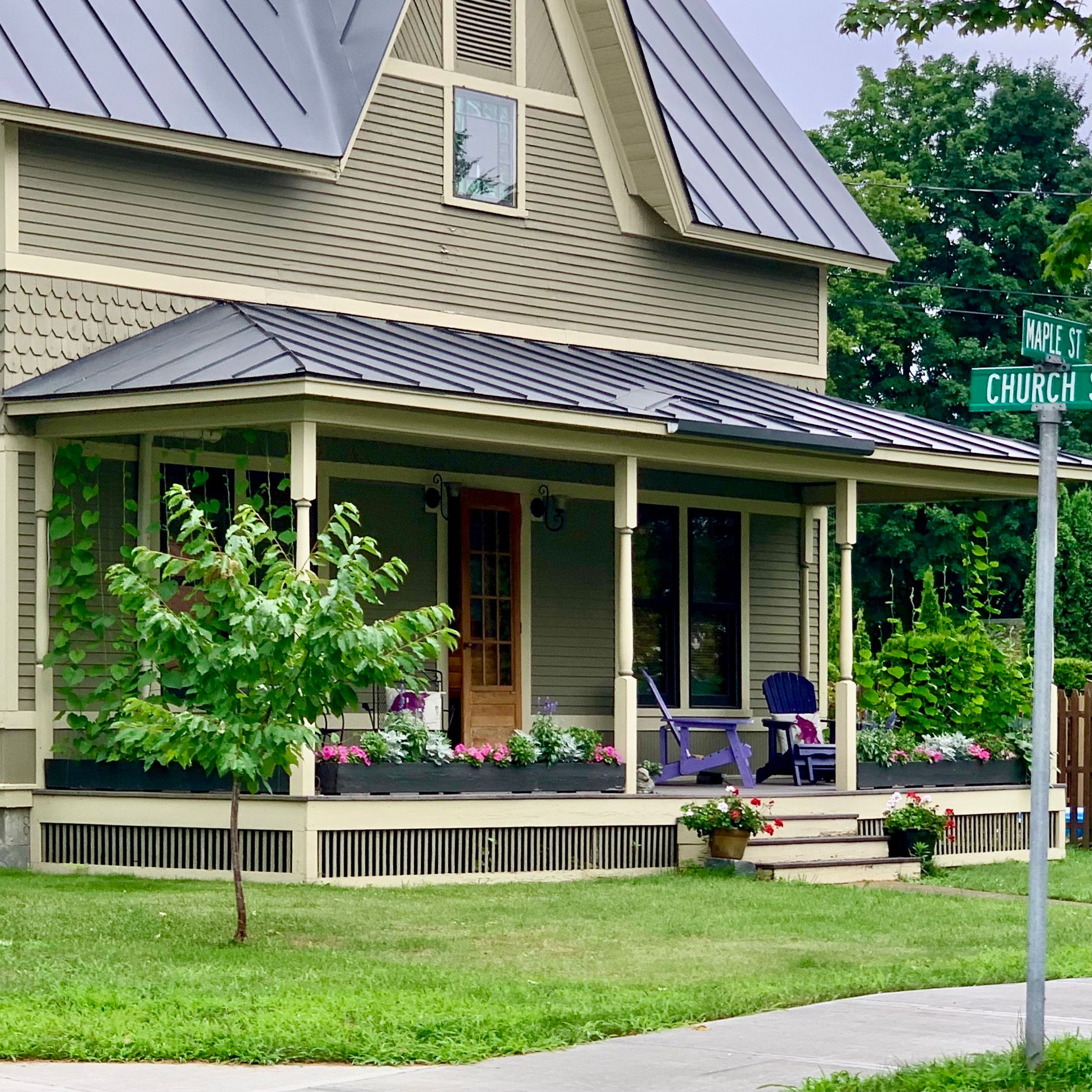
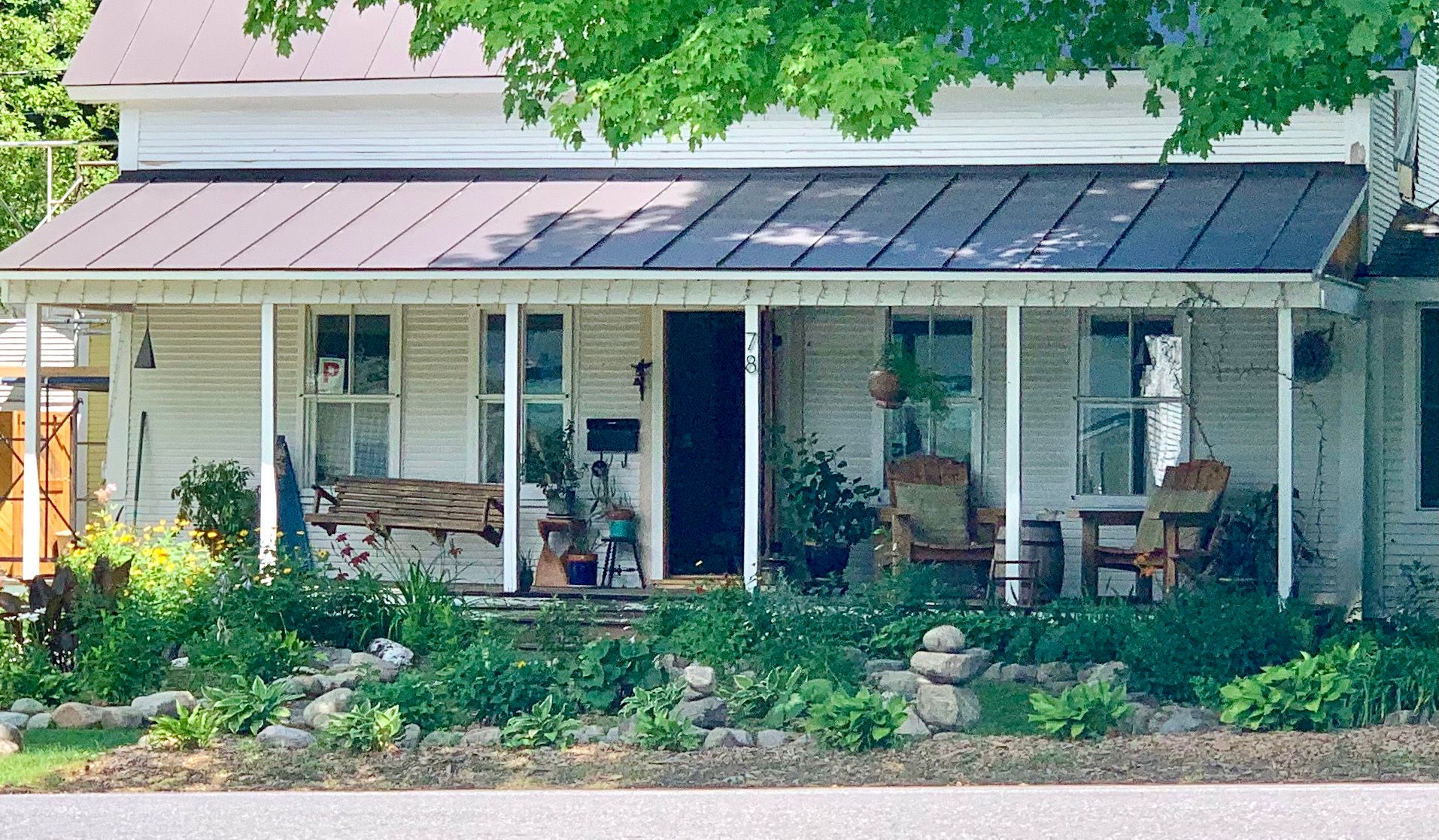
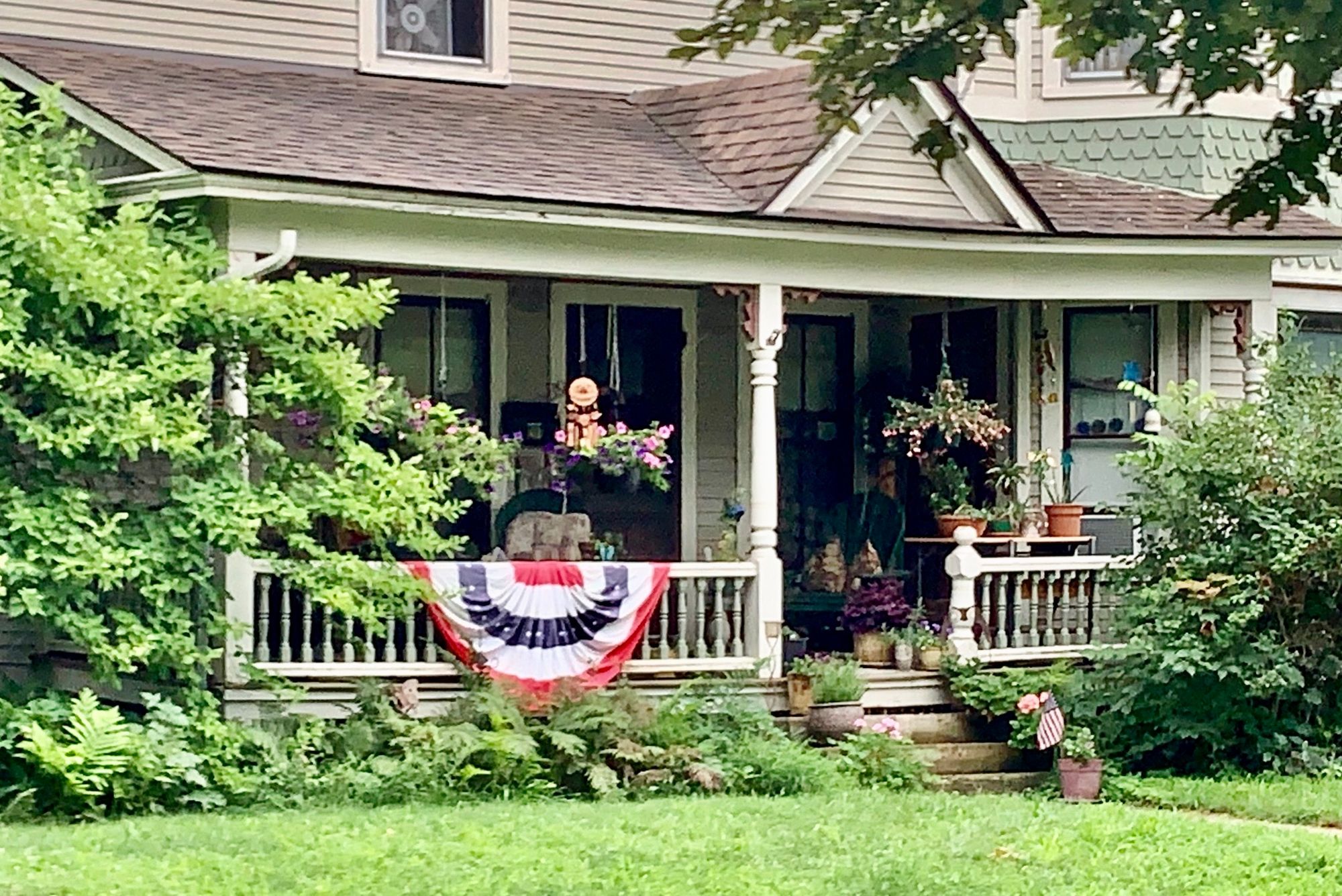
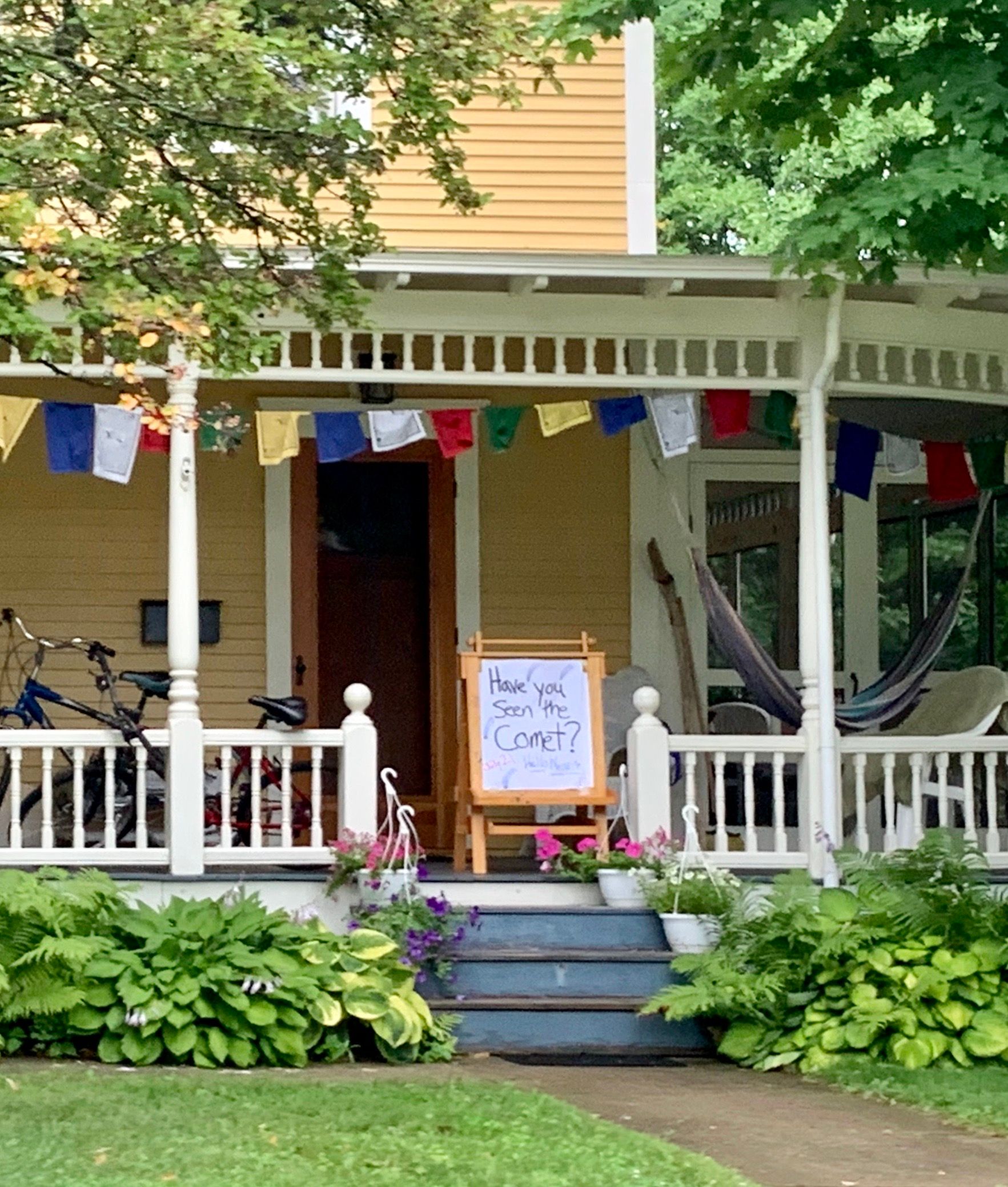
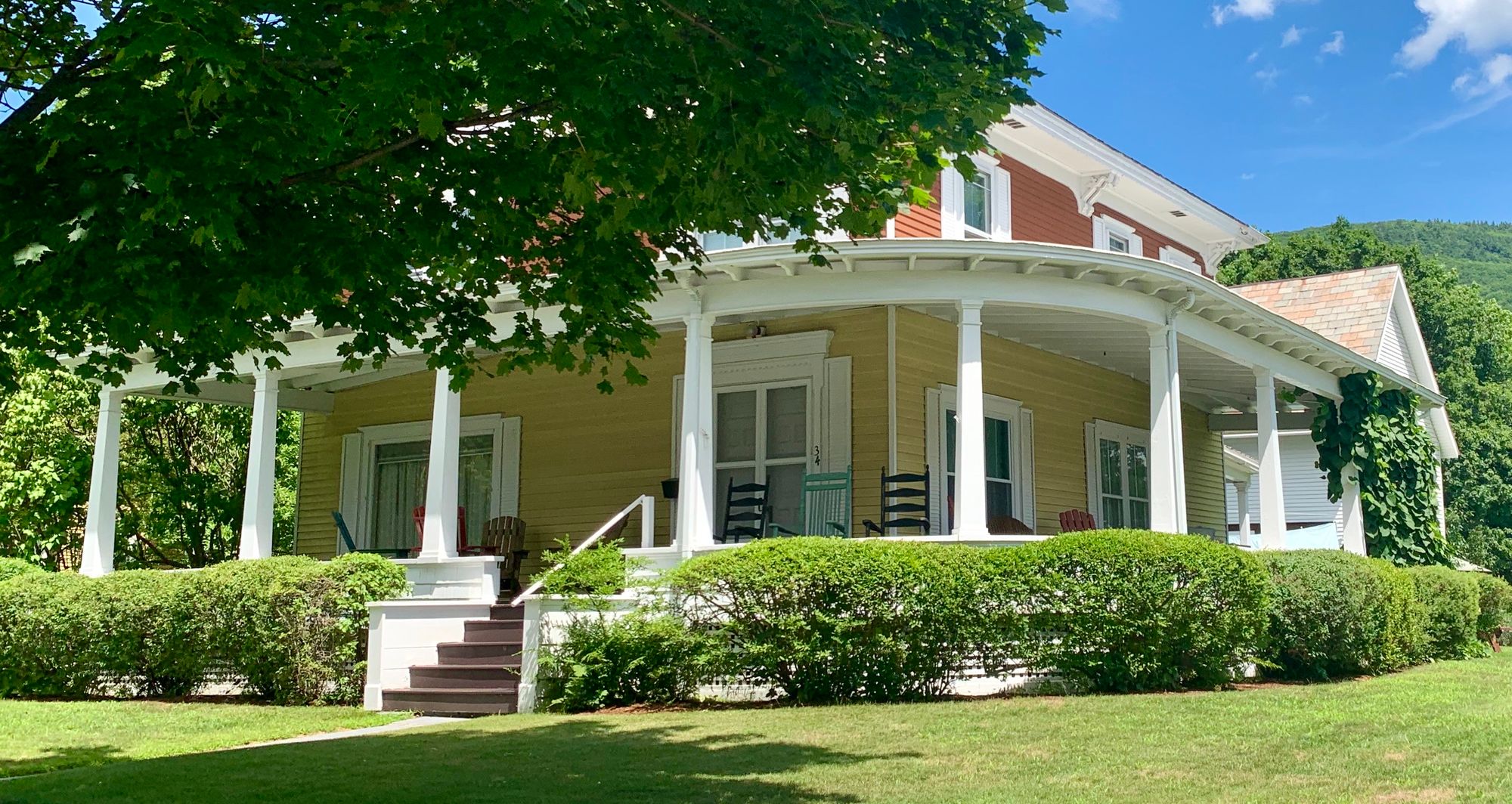
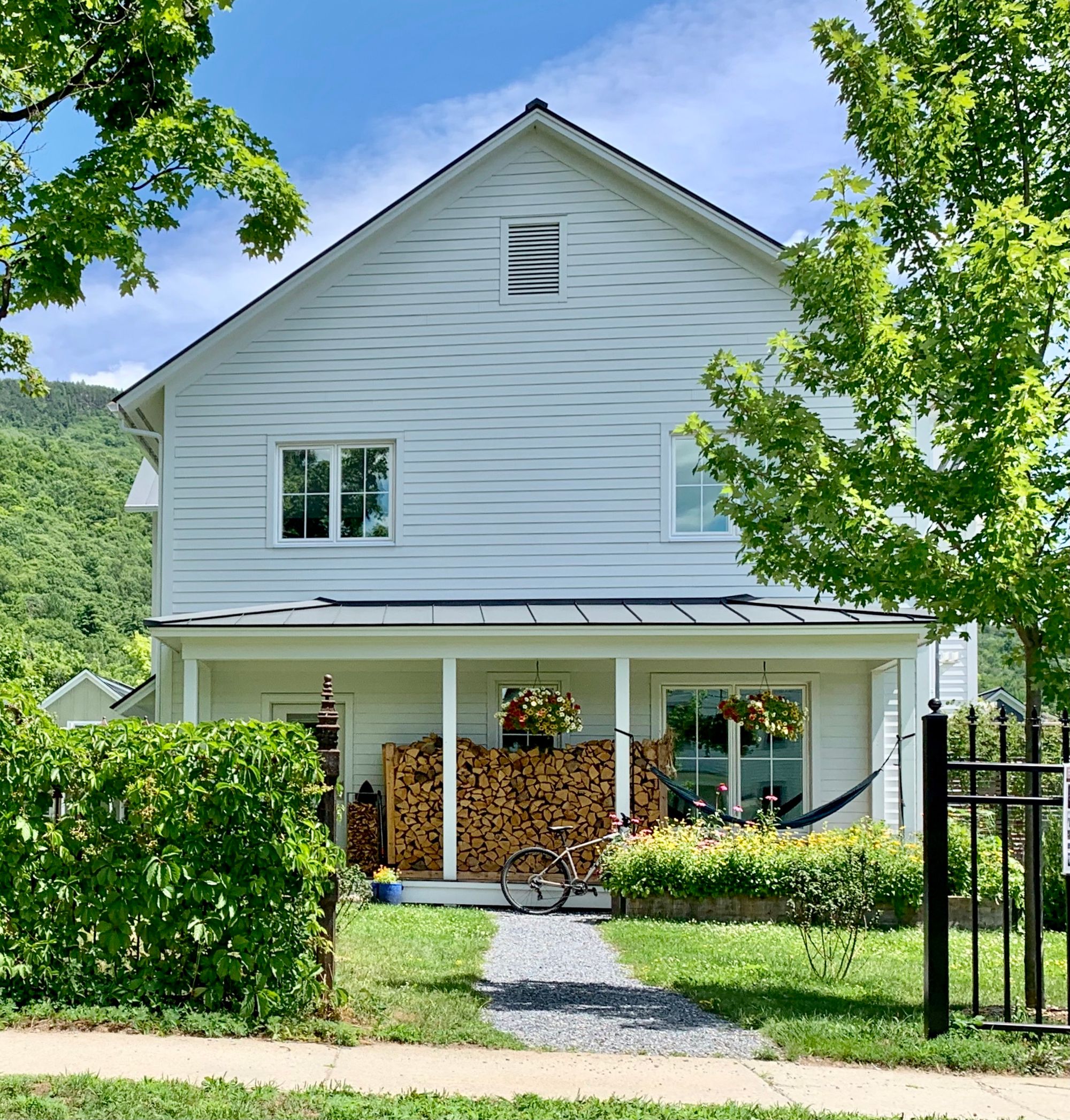
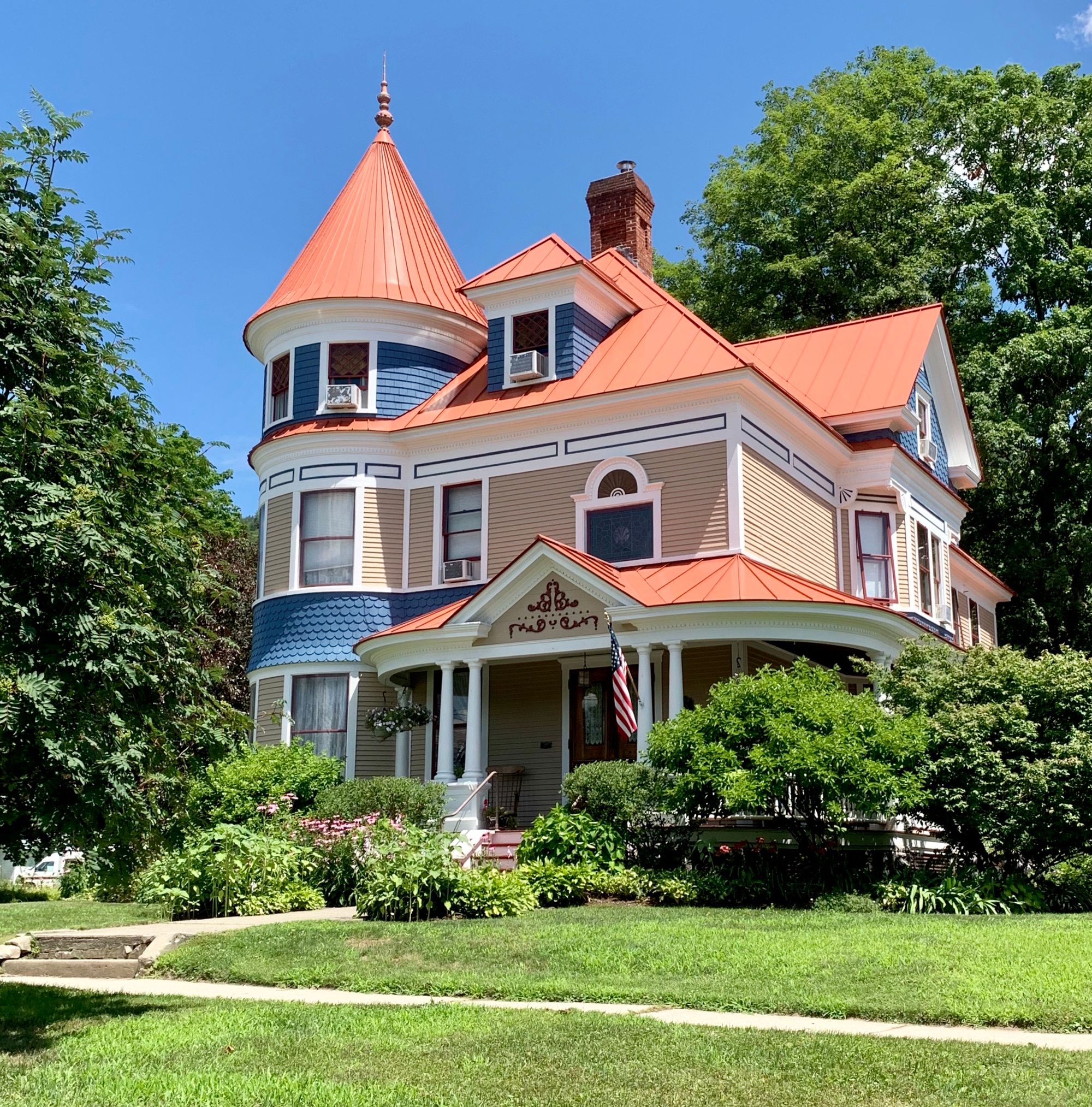
Porches are on most houses, and each is unique!
Opportunities: When we see how one single catalytic intervention could transform what is already a very special community like Bristol, we can't hold back: Bristol could really benefit from narrowing its main road, which could be the first step towards a very walkable downtown. A starting point could be as simple as reducing speed limits, making way for both shared and separated bike lanes, and making room for a few clusters of retail stores along both sides of the road. By creating small hubs like these, Bristol would fundamentally shift the perception to that of a local road, better fit to the scale of the community.
Woodstock, Vermont
Woodstock is a thriving small town in a very desirable part of Vermont. It has rolling hills and an enticing terrain that attracts many owners of second homes and many retired families. The Rockefeller/Billings family was a major factor in preserving the character of Woodstock. The families also protected large areas of farmland and open space, along with a working farm and museum that serve as local attractions. Most of the buildings have been restored and are lived in or have stores catering to both tourists and locals.
Opportunities: Woodstock's main intersection could become a main square, connecting to a more active Green (or second square). Together, these elements could create a dynamic center of the community. To start, the main square could be accomplished by narrowing the pavement and extending the curbs at both intersections, thus creating the necessary space for a new center for the town. By activating and adding attractions to the Green and connecting to destinations like the Woodstock Inn, the town would have an opportunity to improve its public perception and to add to the area where people can gather or stroll. Overall, Woodstock is one of the most walkable towns we visited, but because the center is not fully functional in its role as the starting point, most of those opportunities are not easily discovered.
Woodstock Green and Main Intersection
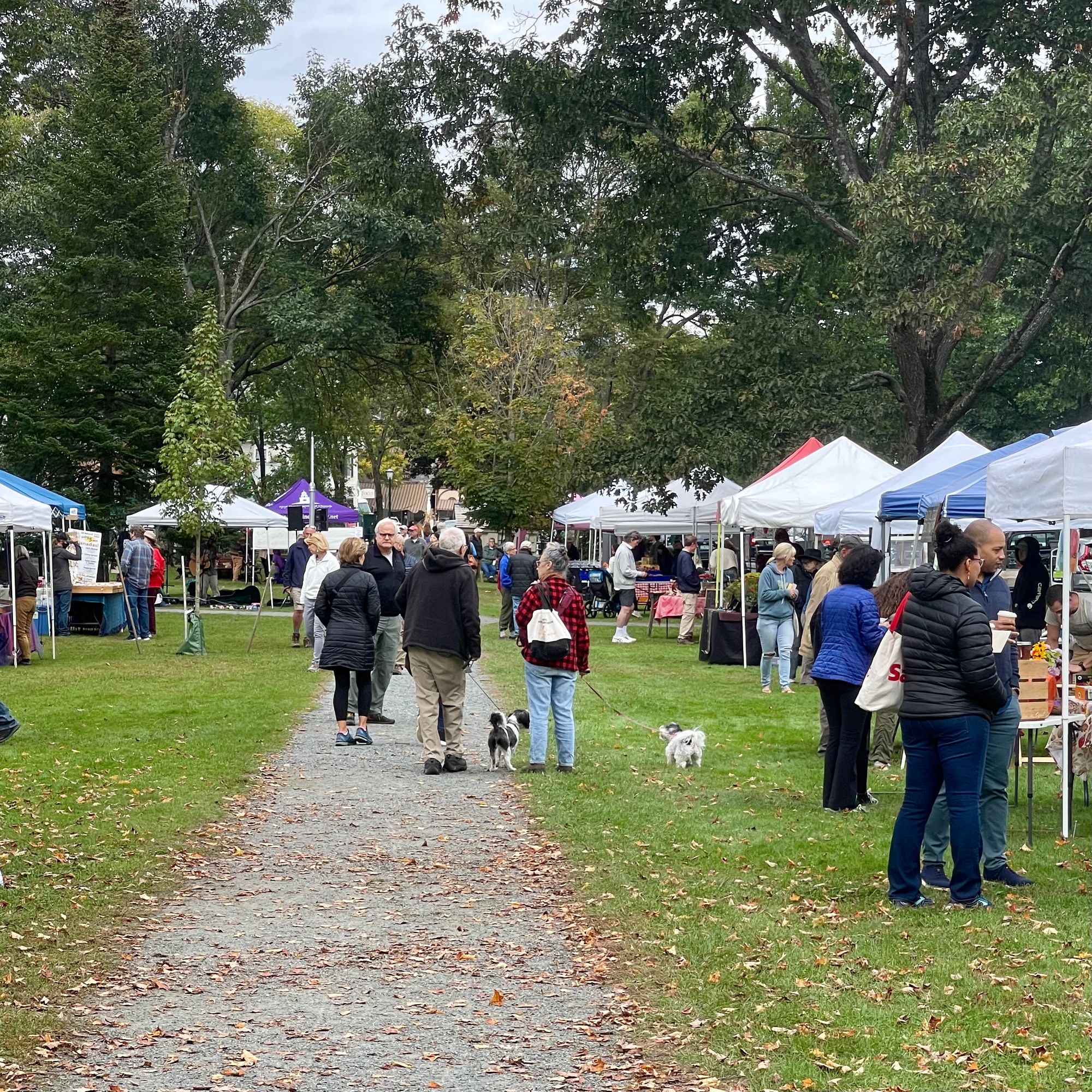
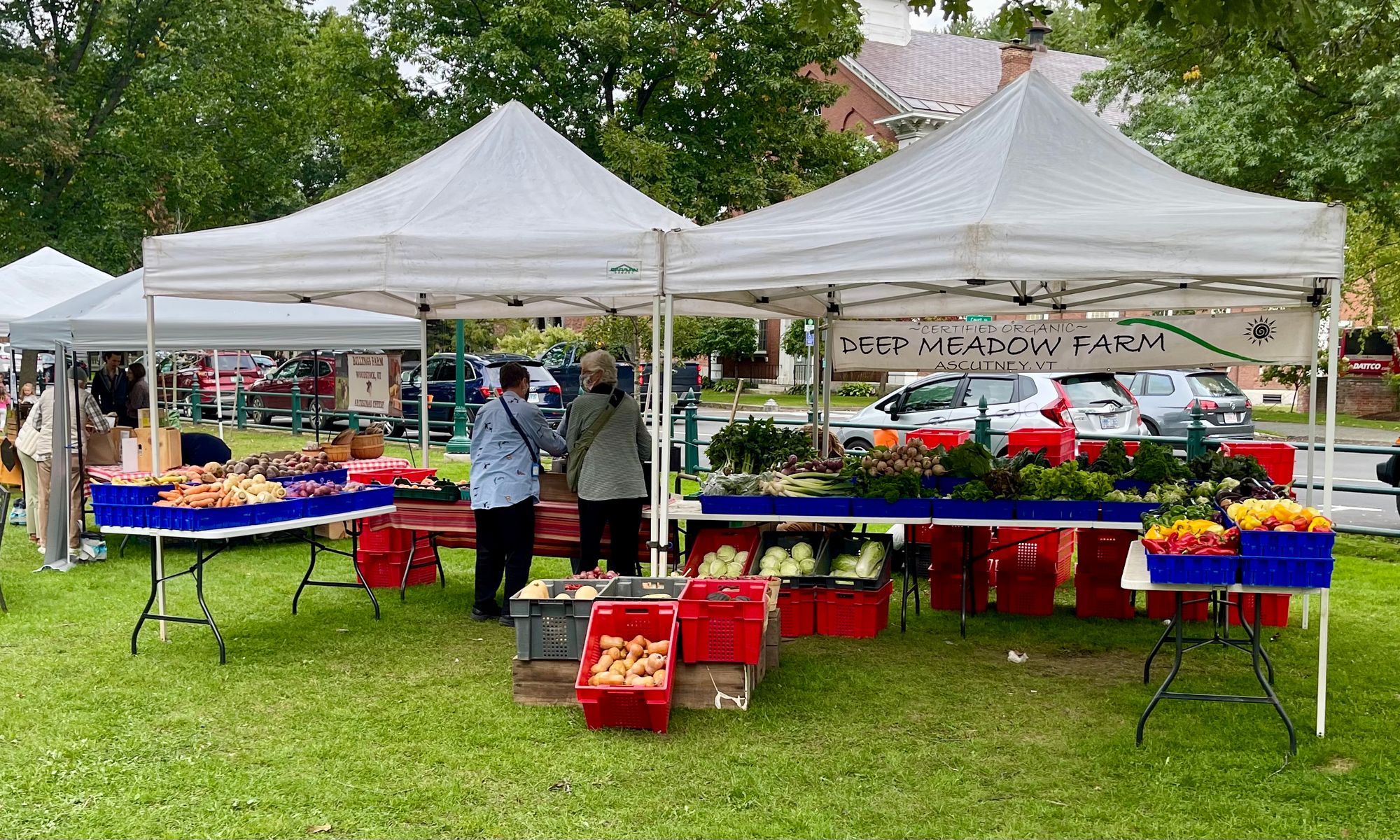
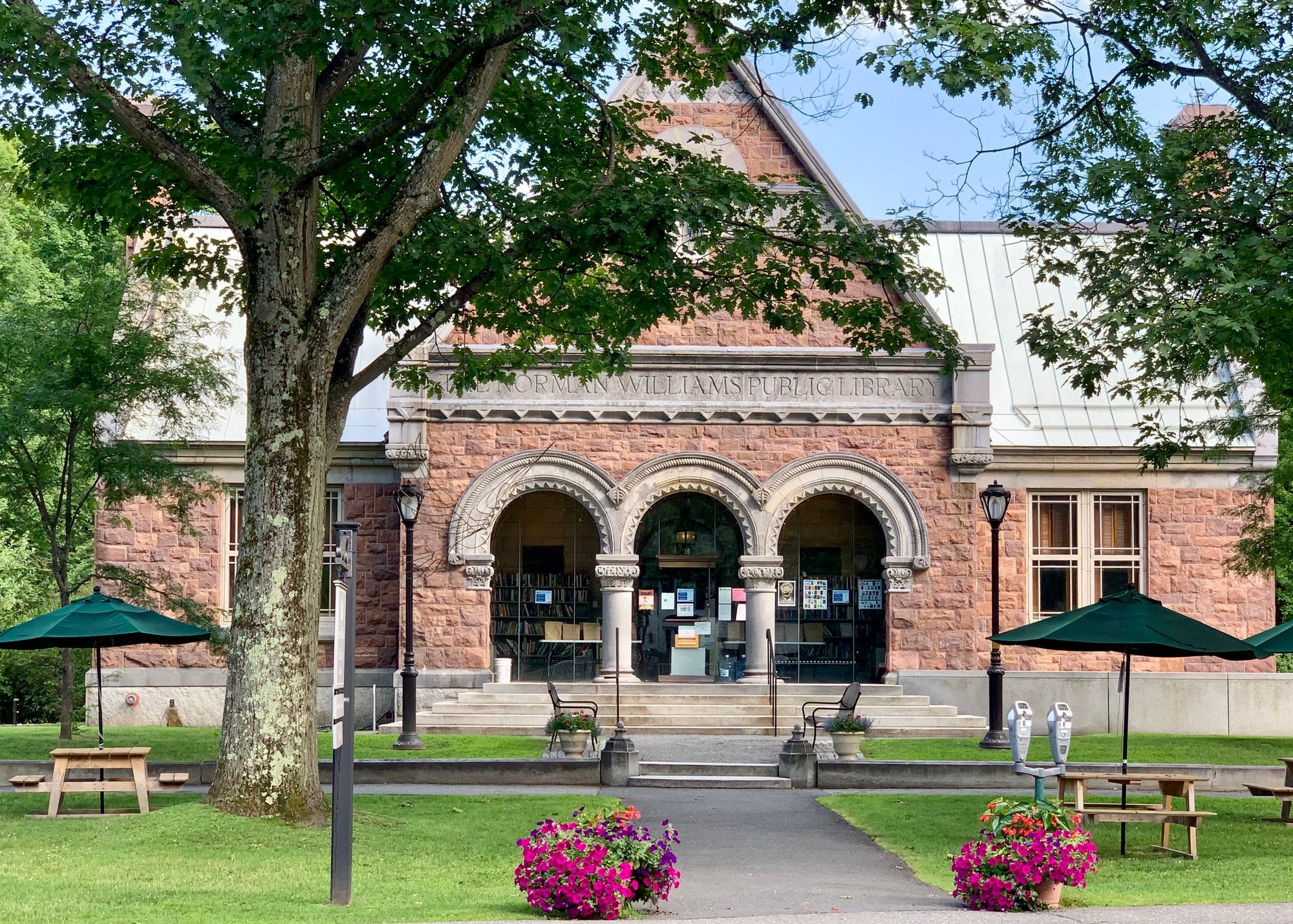
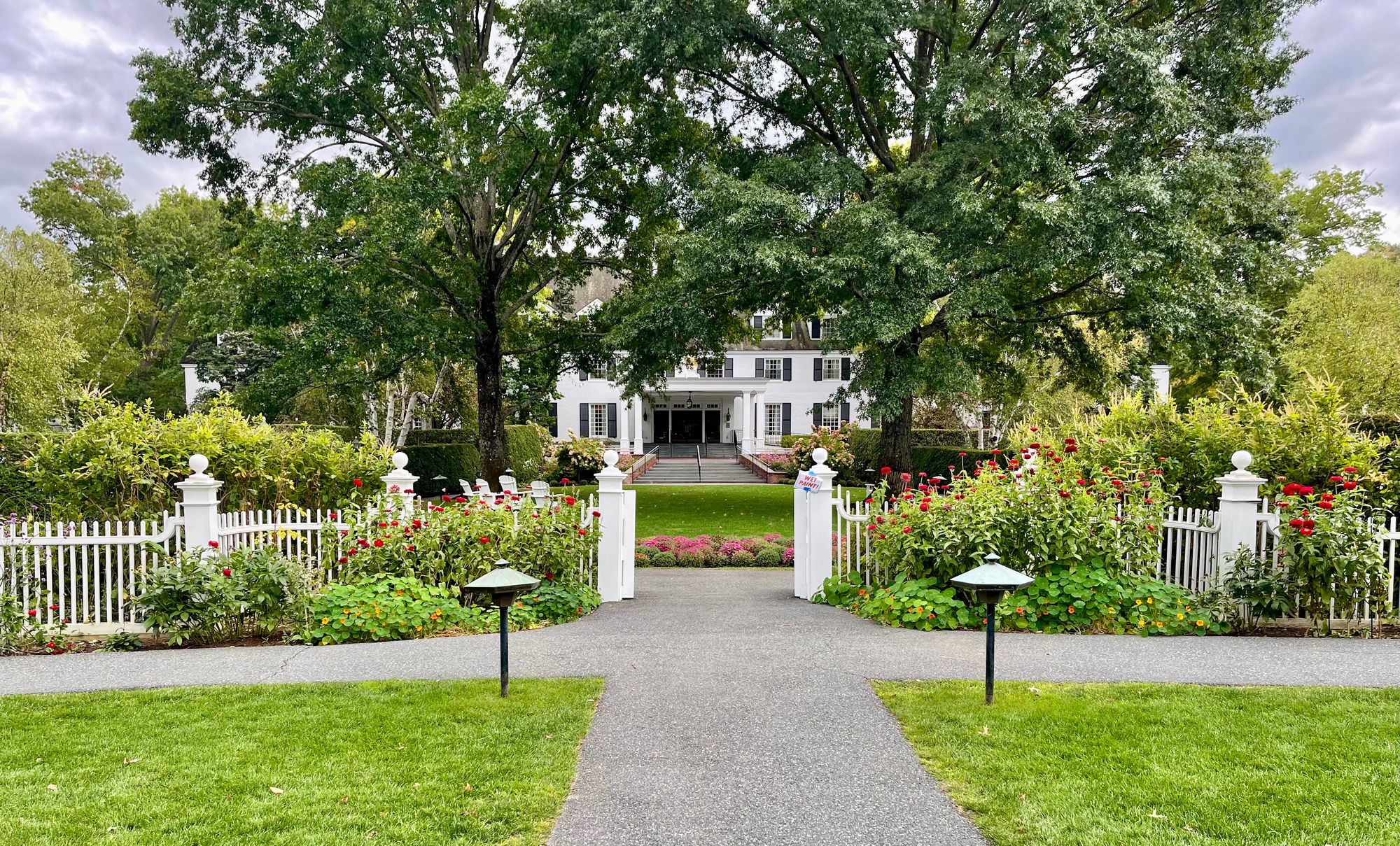
Wednesday Market, Library, and Woodstock Inn
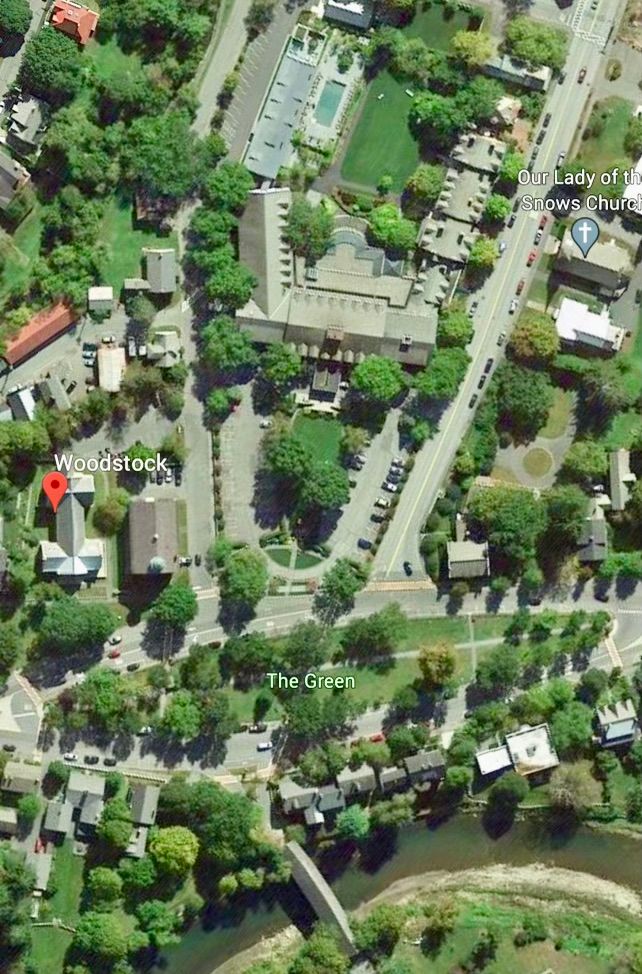
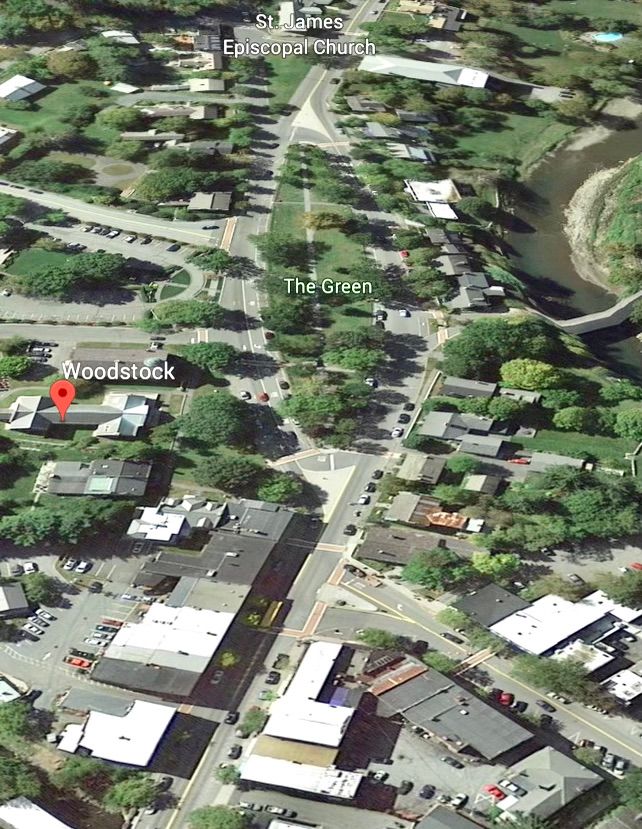
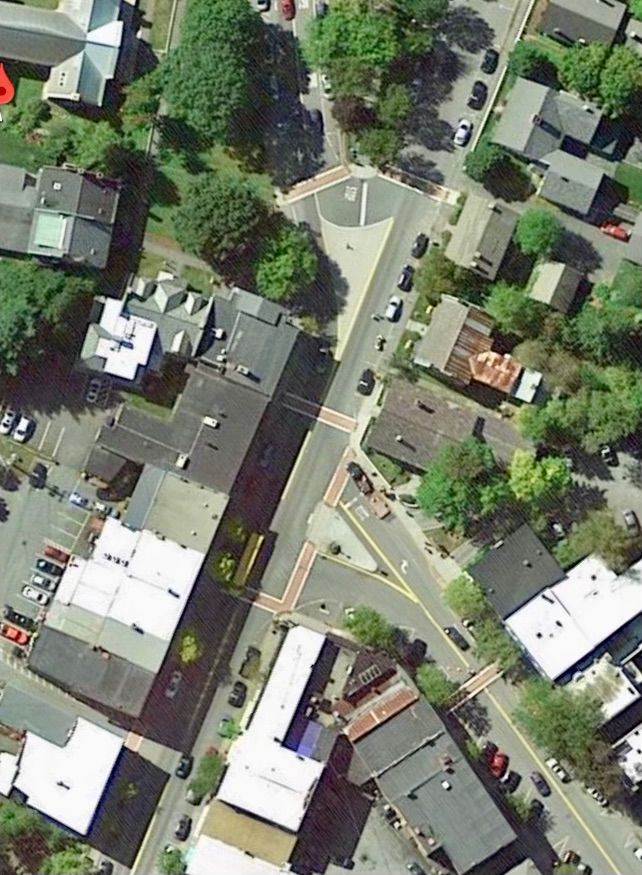
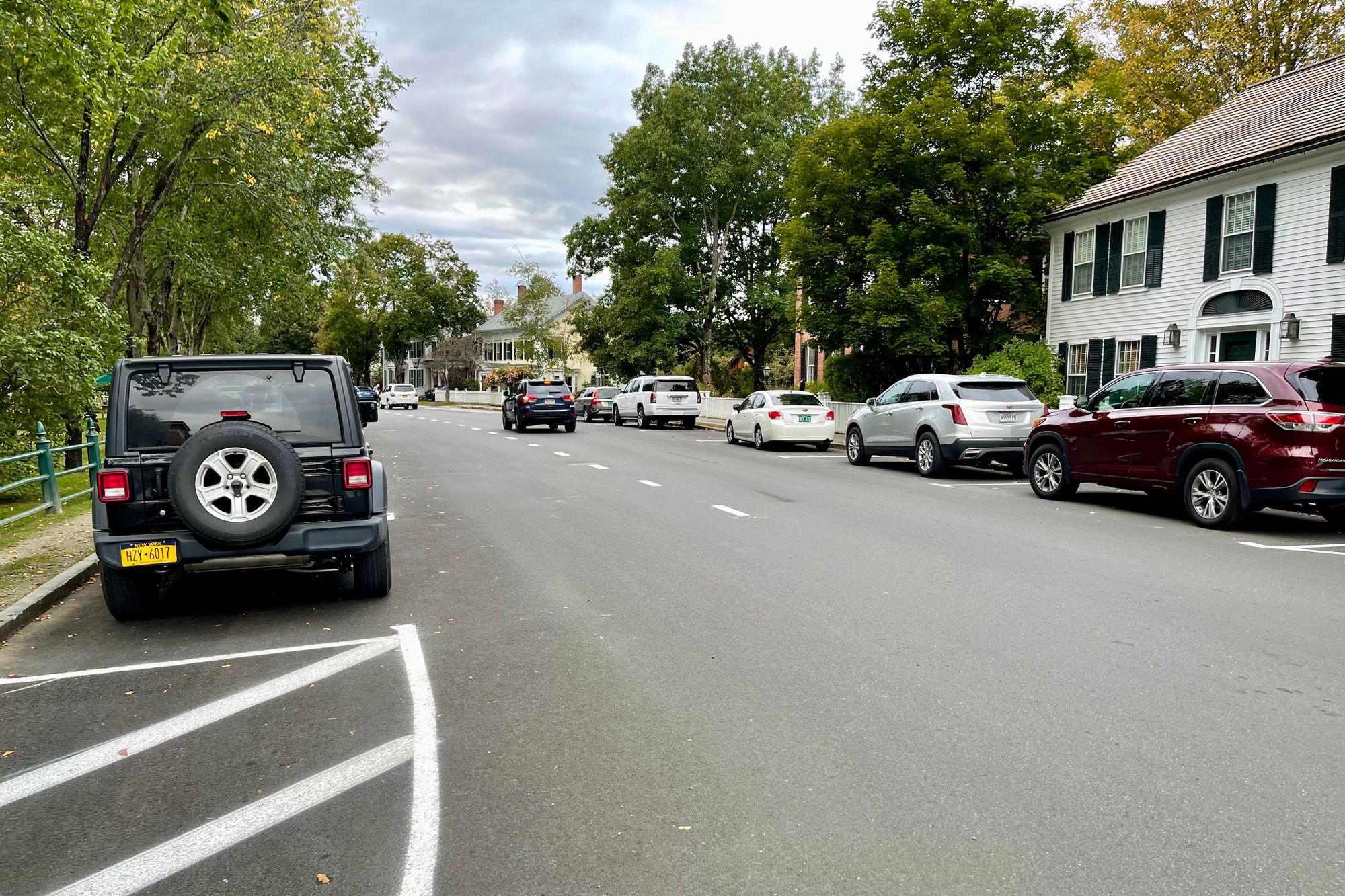
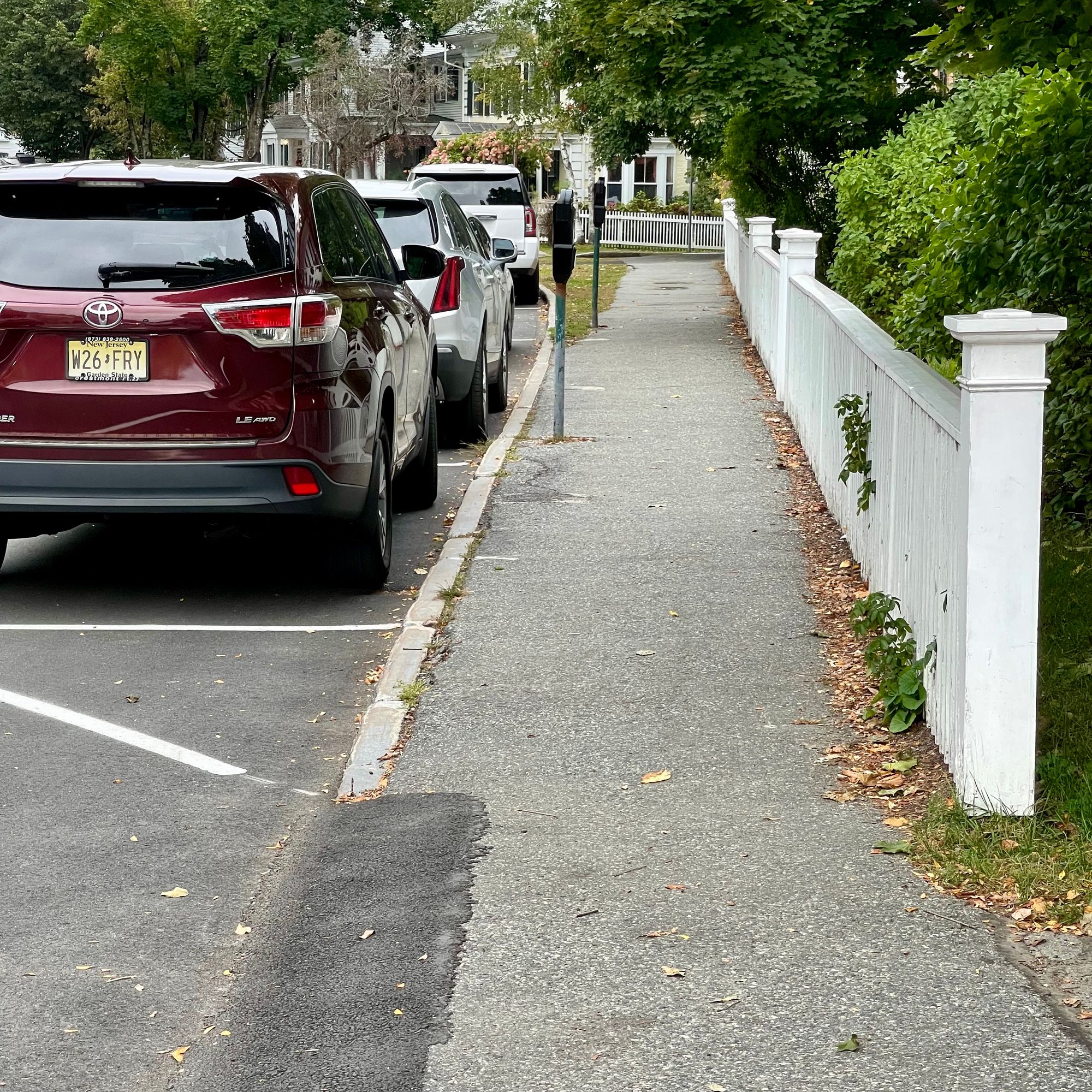
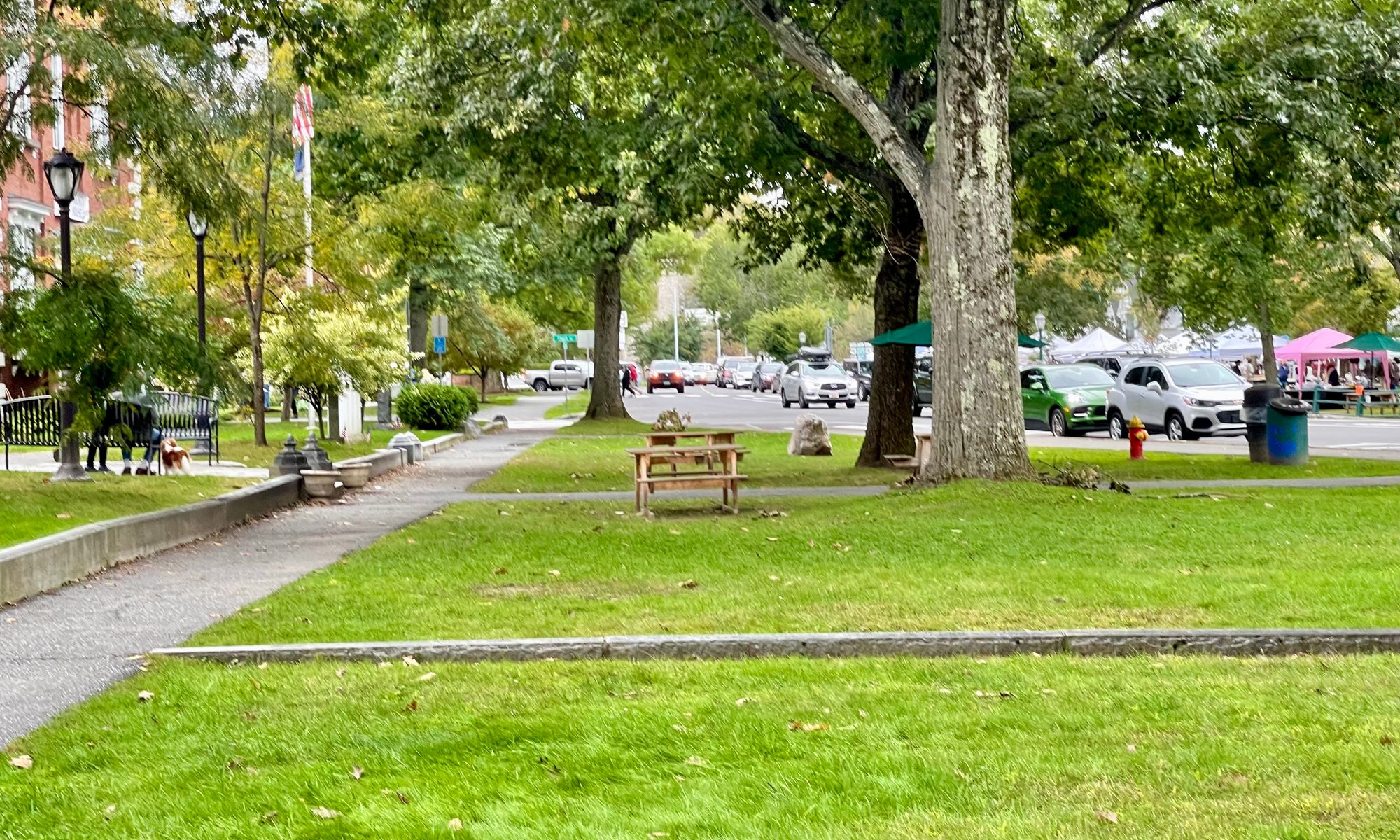
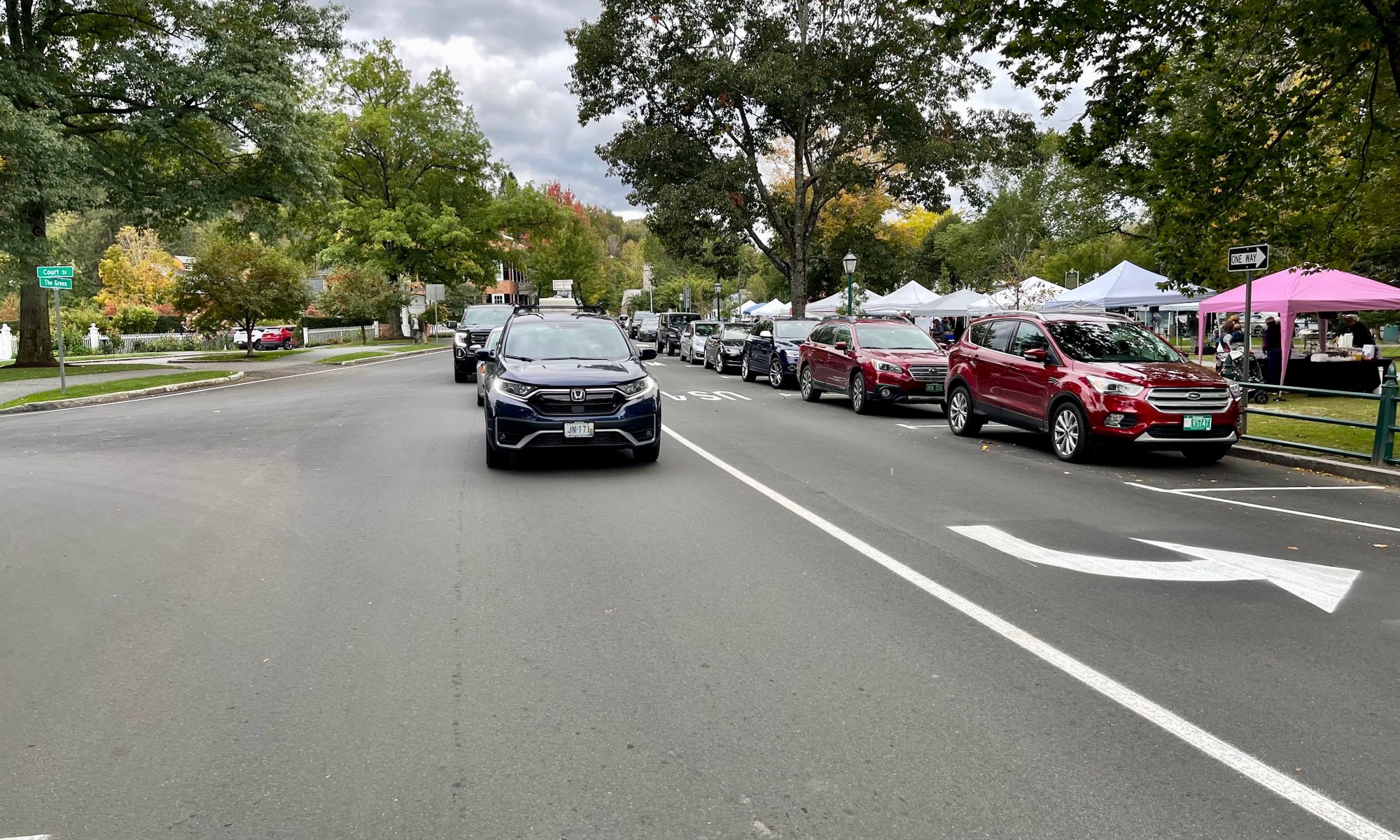
Woodstock Inn, Downtown including the Green, and the Downtown core. As of now, featuring wide roads and narrow sidewalks.
Main Intersection as a Square
With simple sidewalk extensions, the center of town could become a real hub. Even now, with its limited space, it is acting as one. By adding sidewalk space and creating a true central plaza, the perception would dramatically change. This expansion of sidewalk space could also extend further along each of the roads and alleys that connect to the main intersection, extending out like an "octopus" from the center and the Green with various options to enjoy the richness of one of Vermont's most special communities.
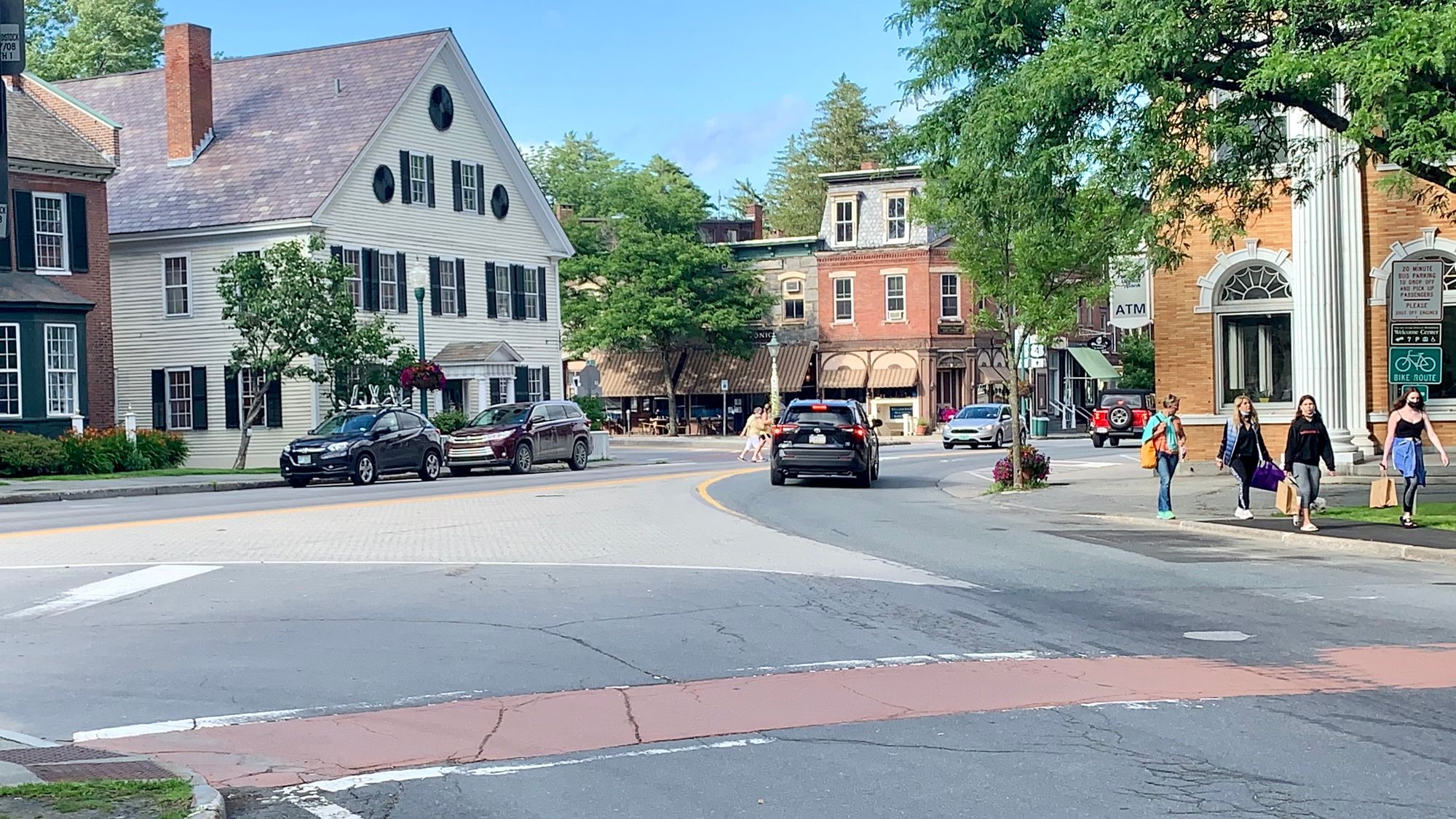
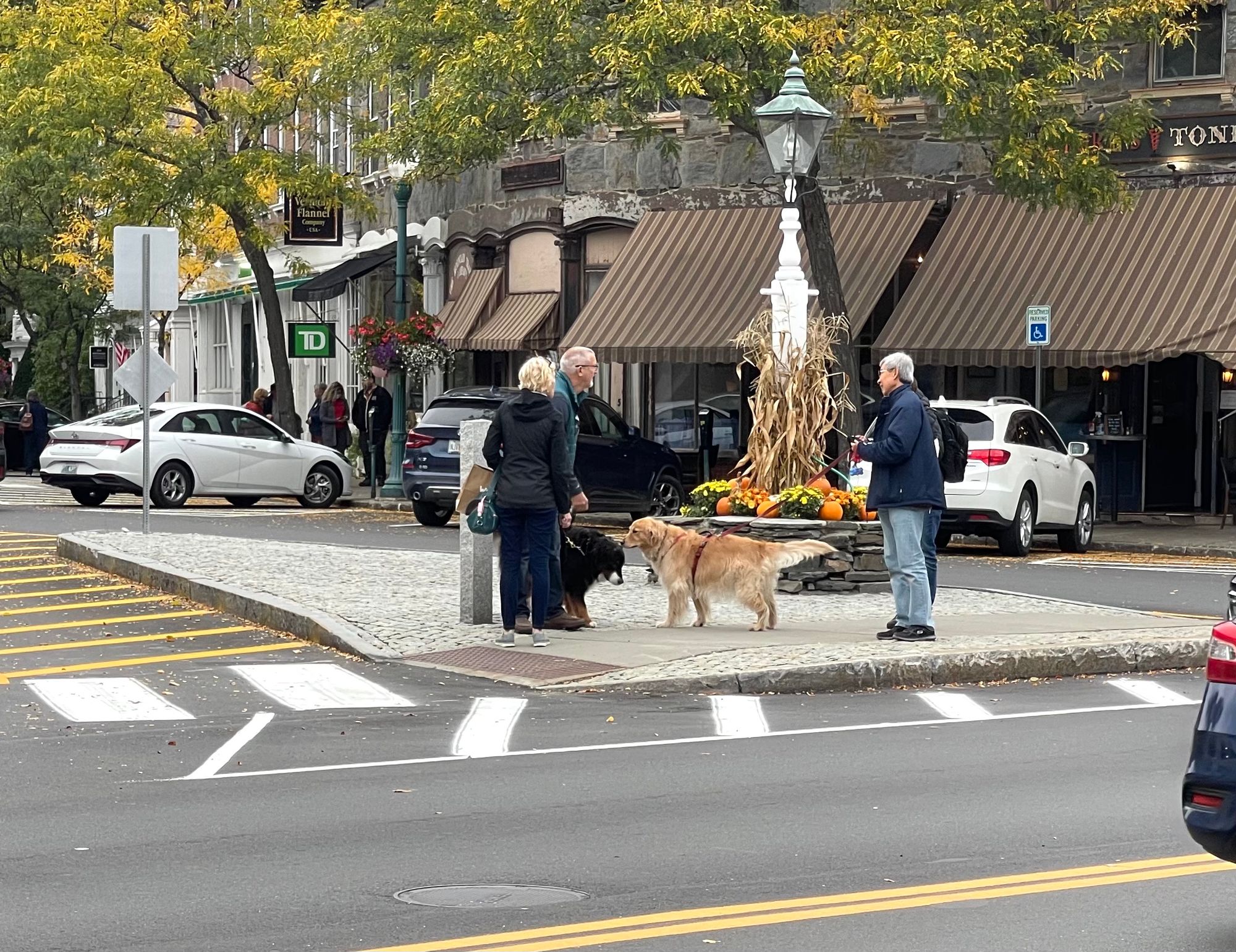
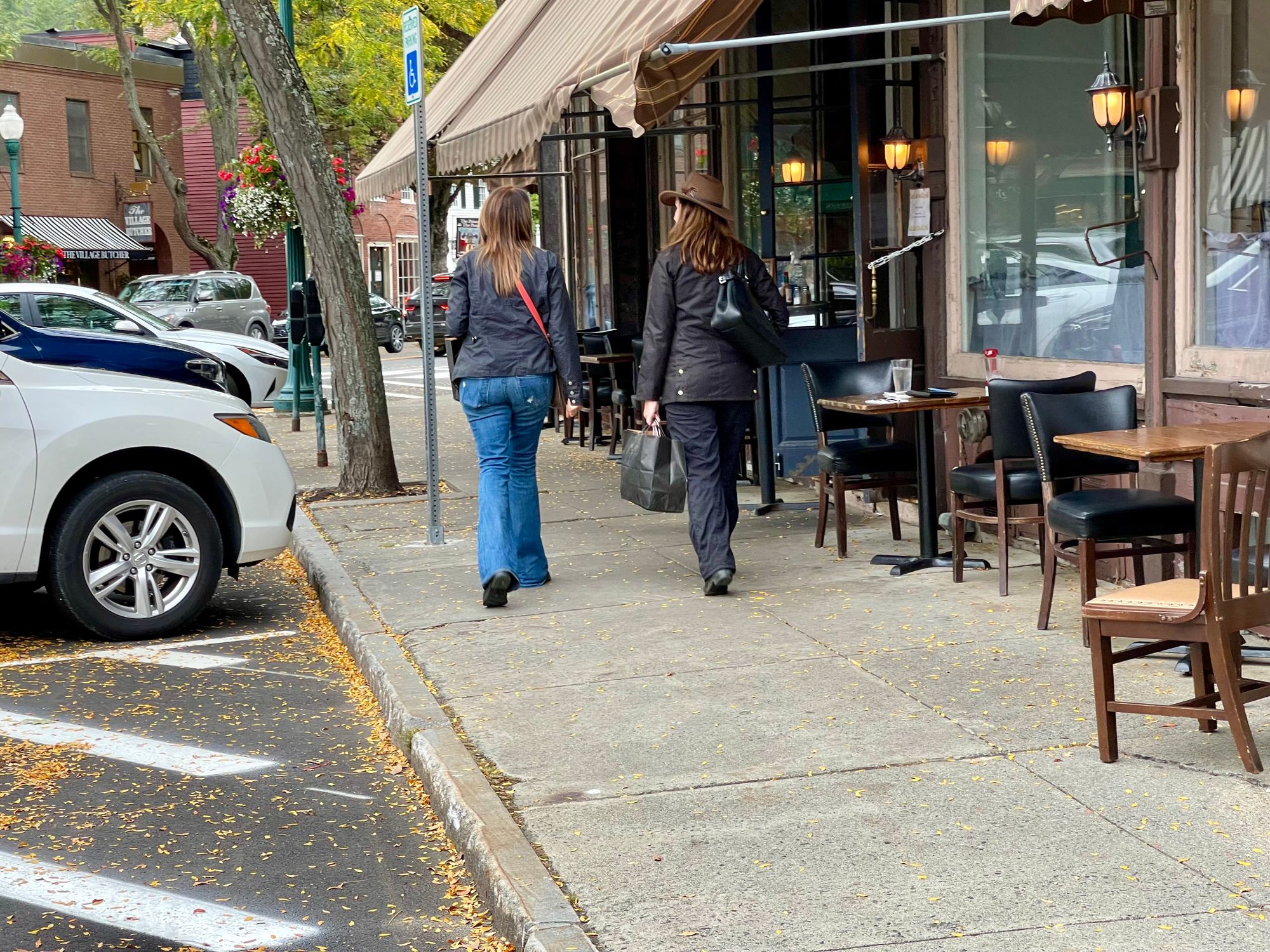
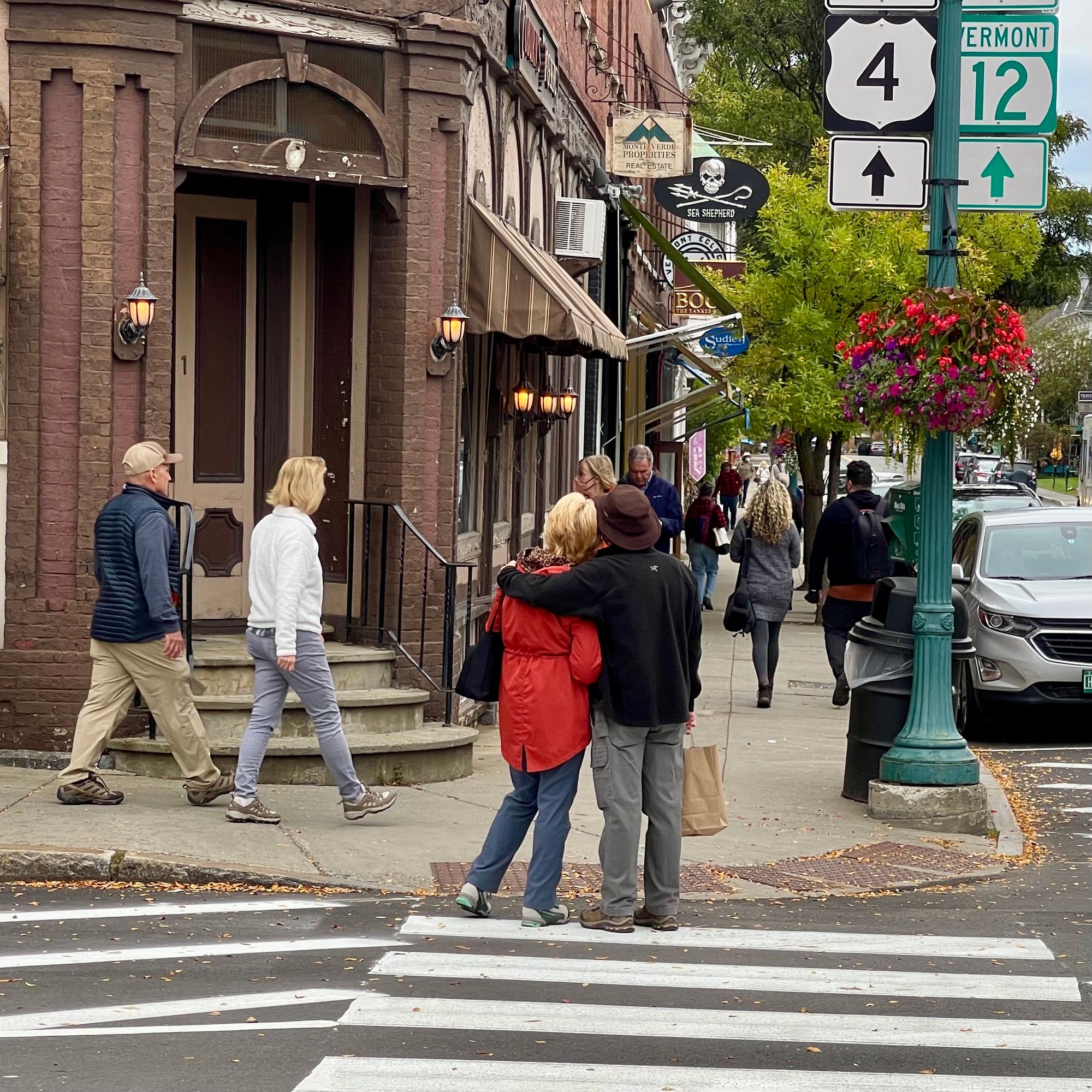
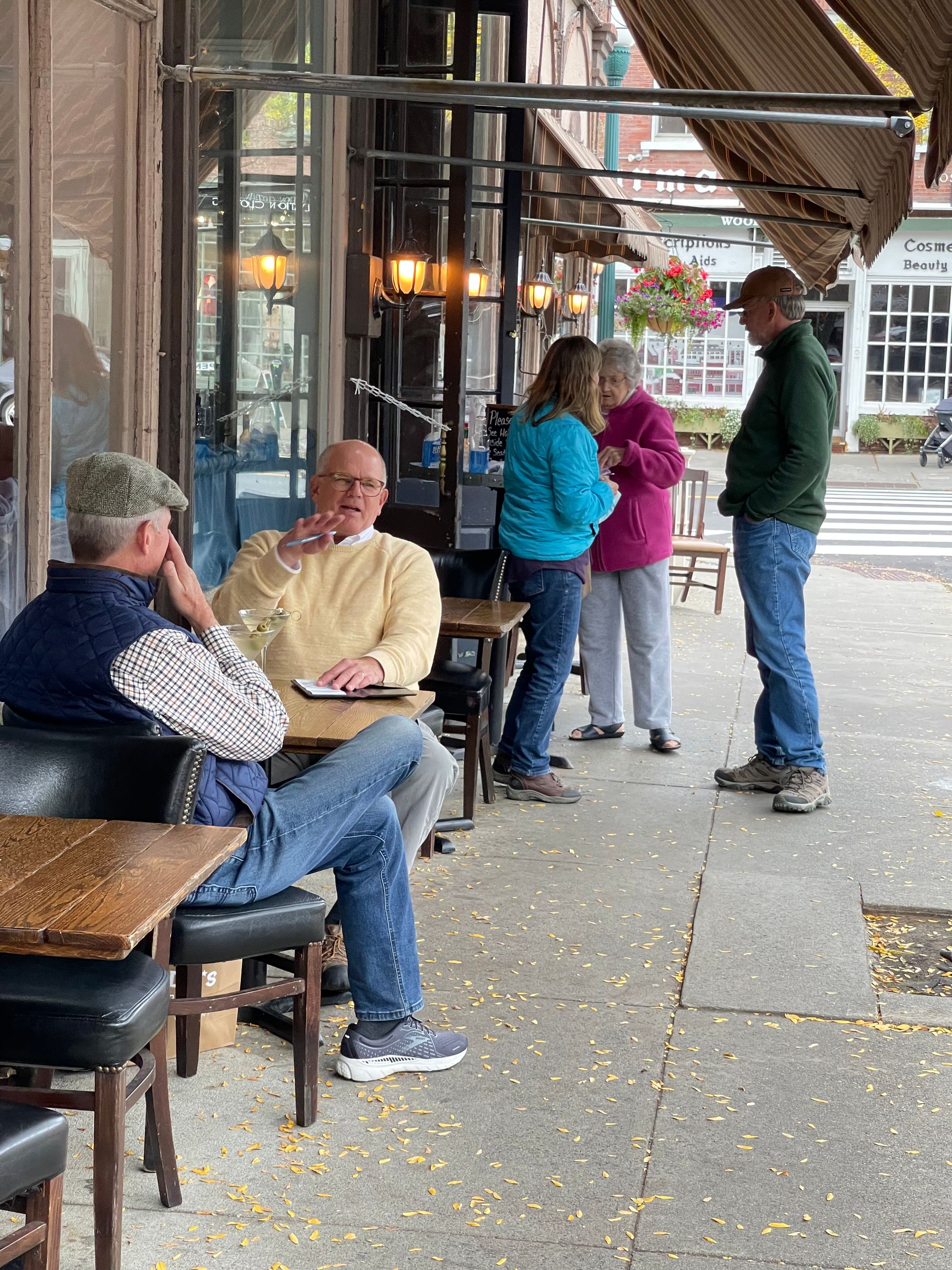
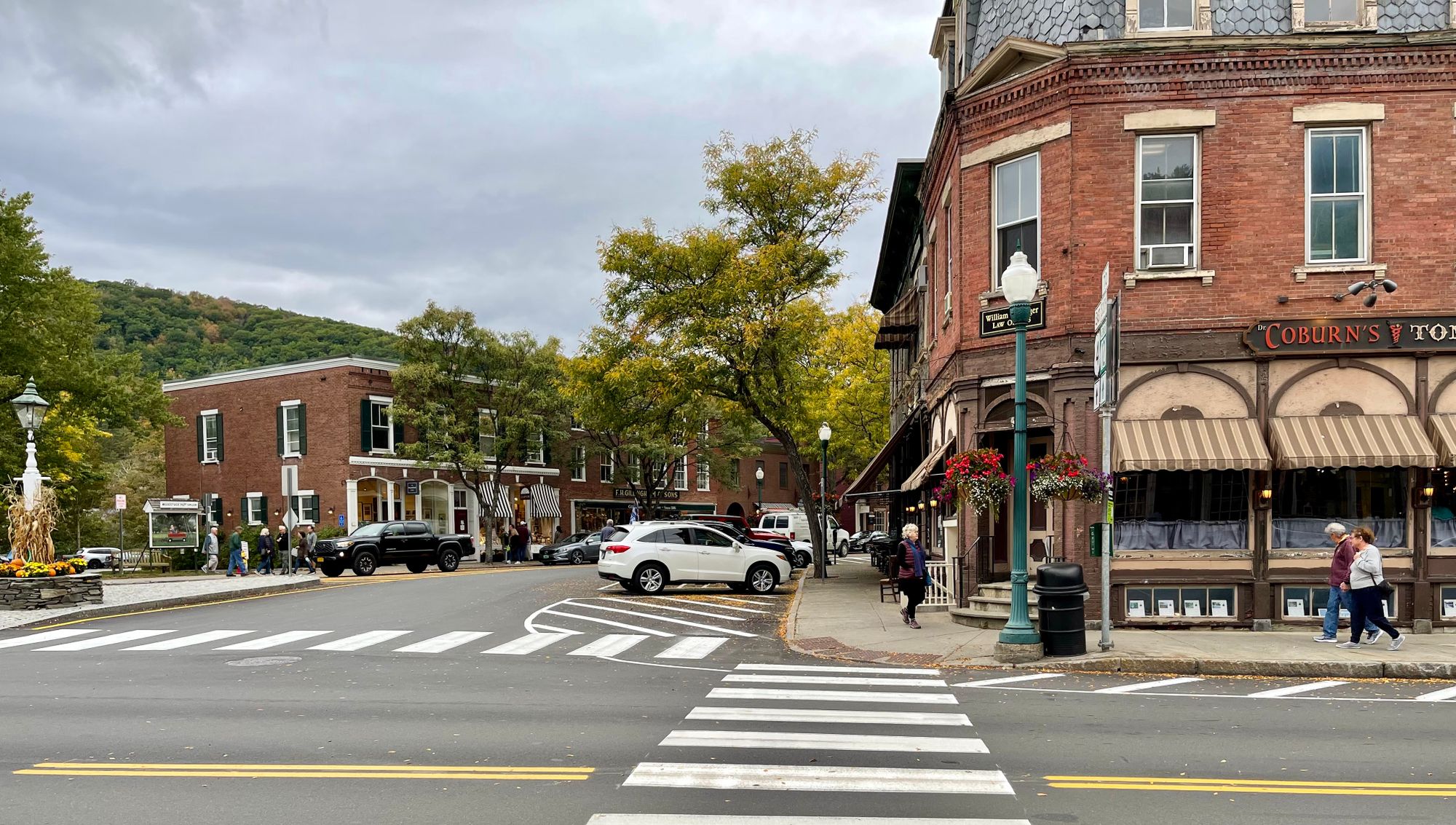
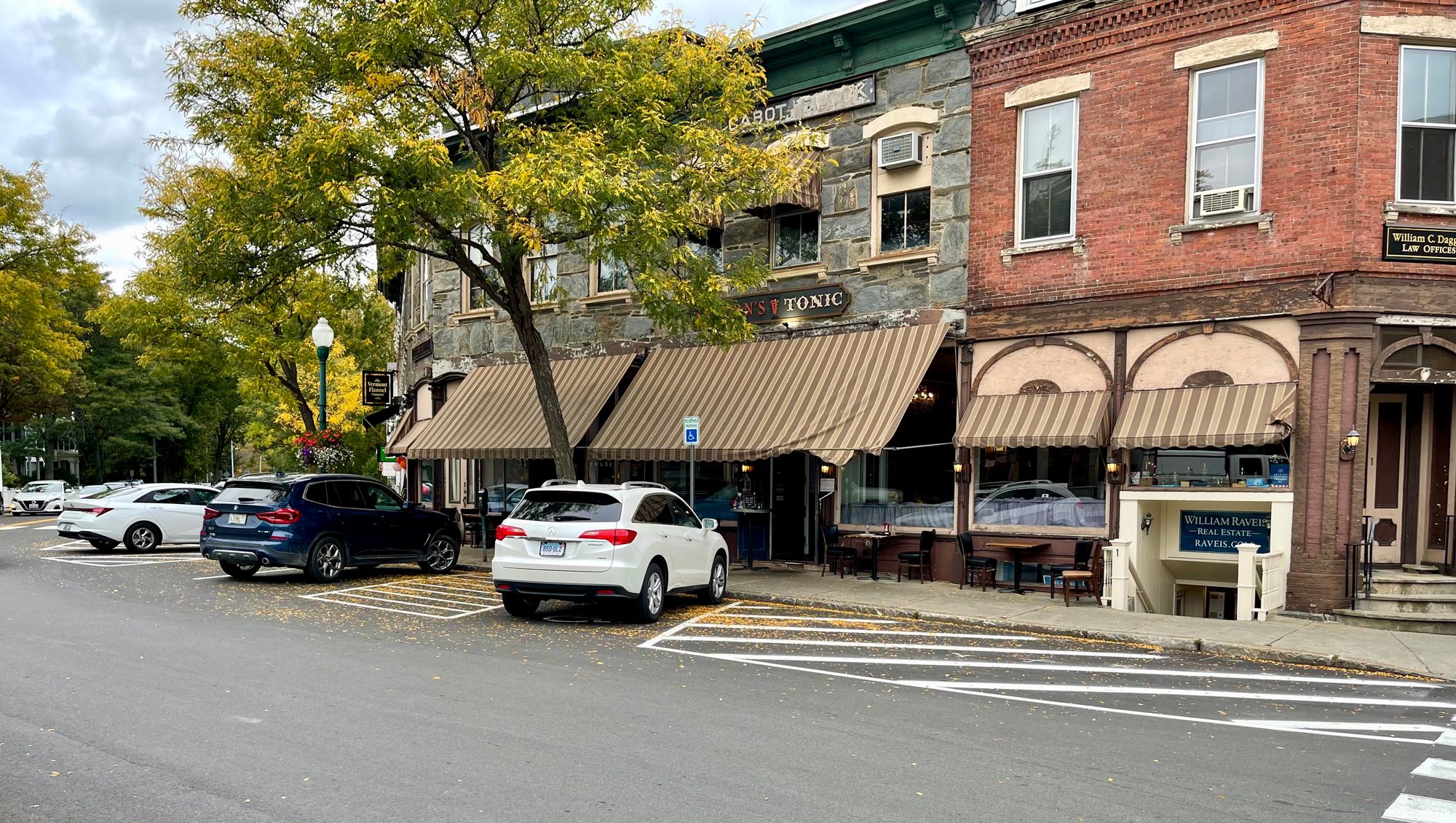
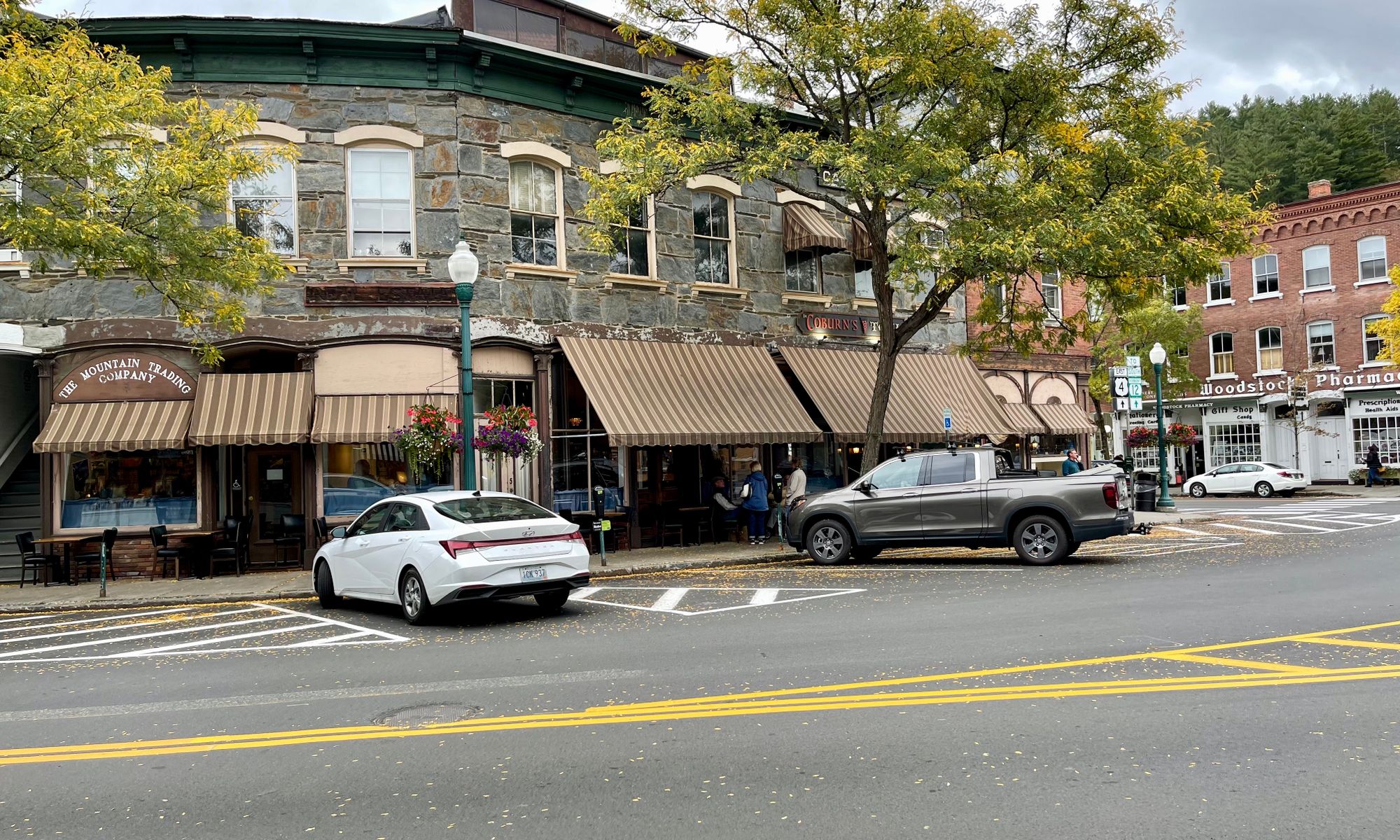
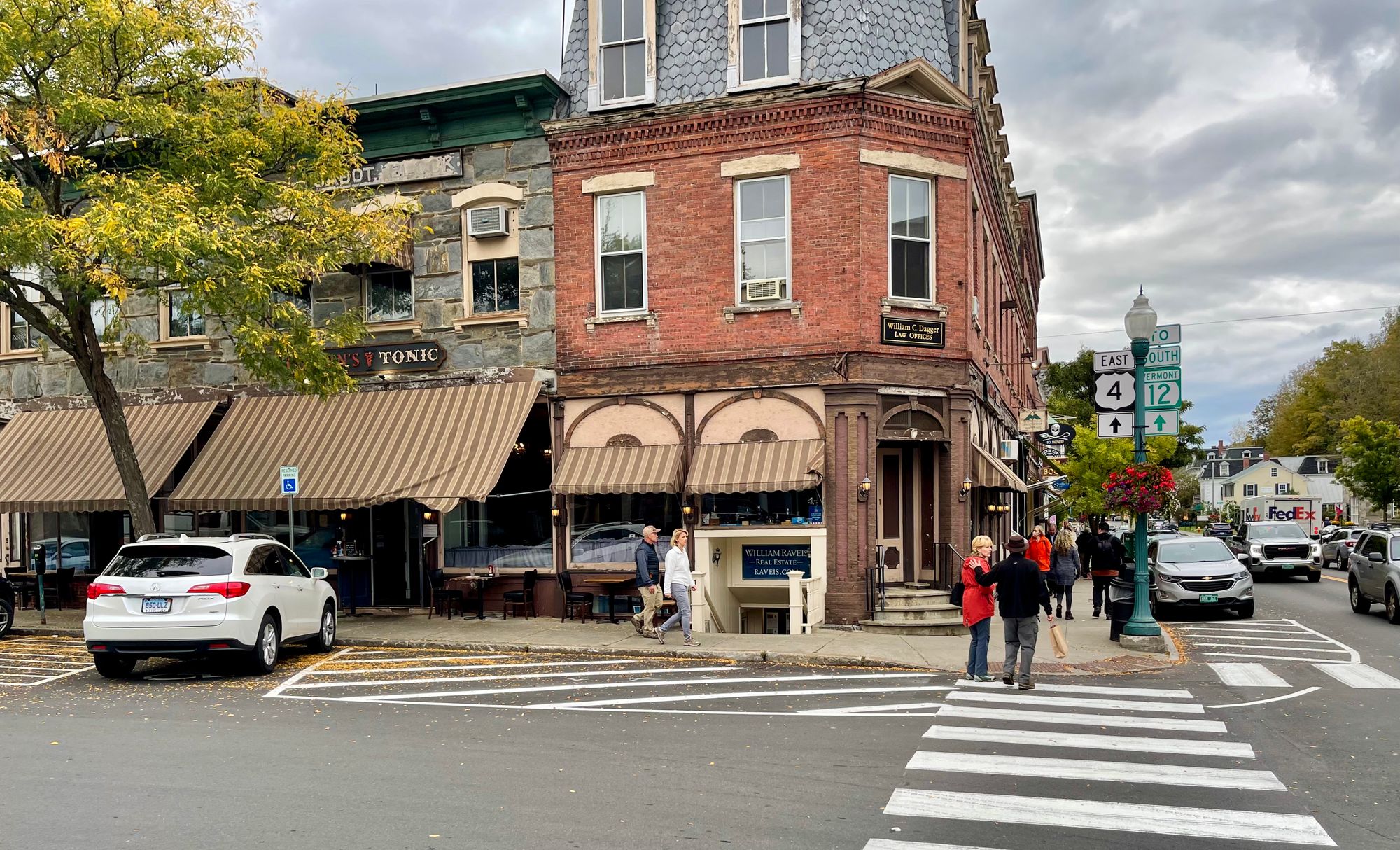
Eastern side of intersection has the most potential to become a major anchor. It has the afternoon sun and a key site looking westward toward the Green.
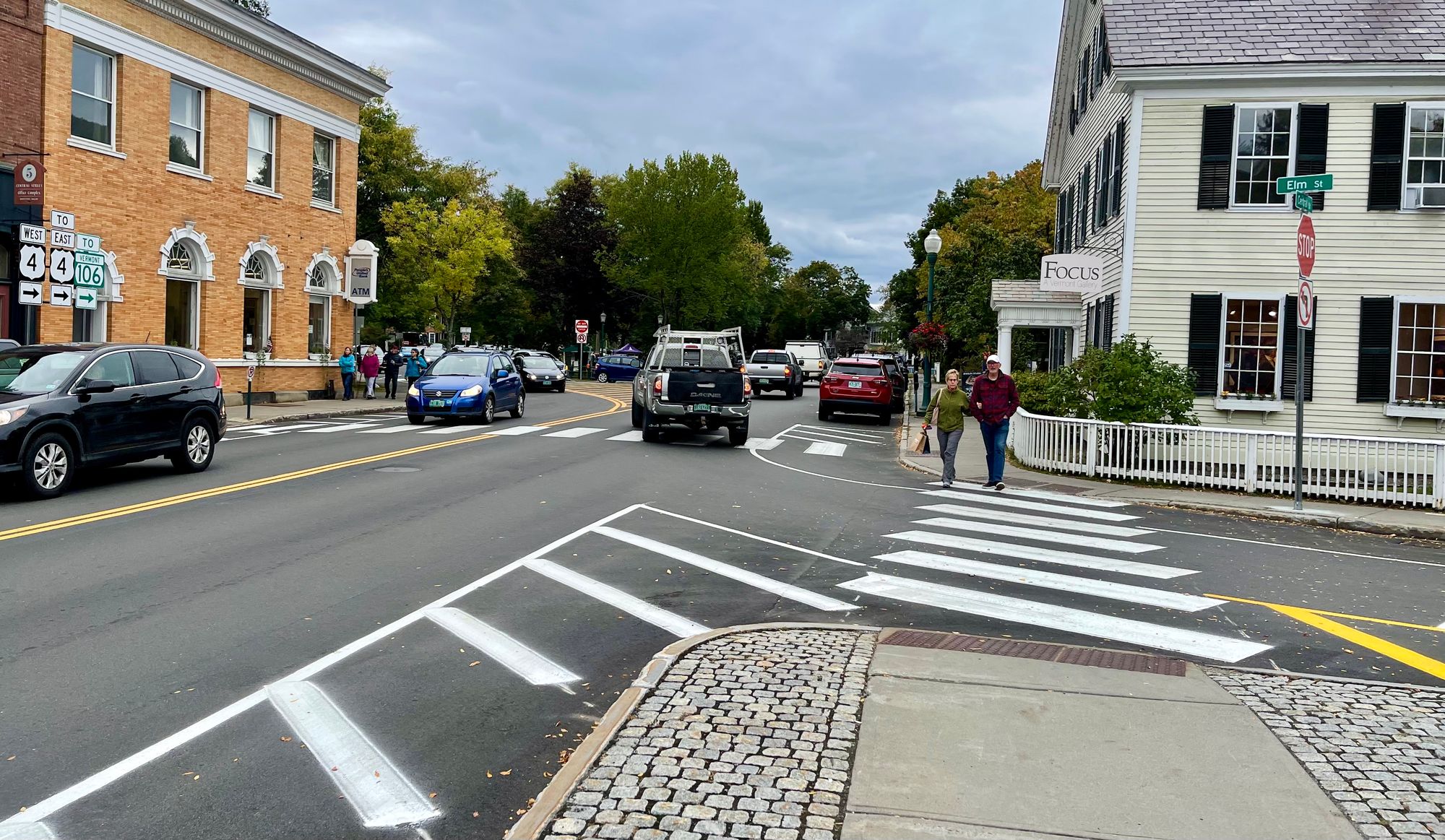
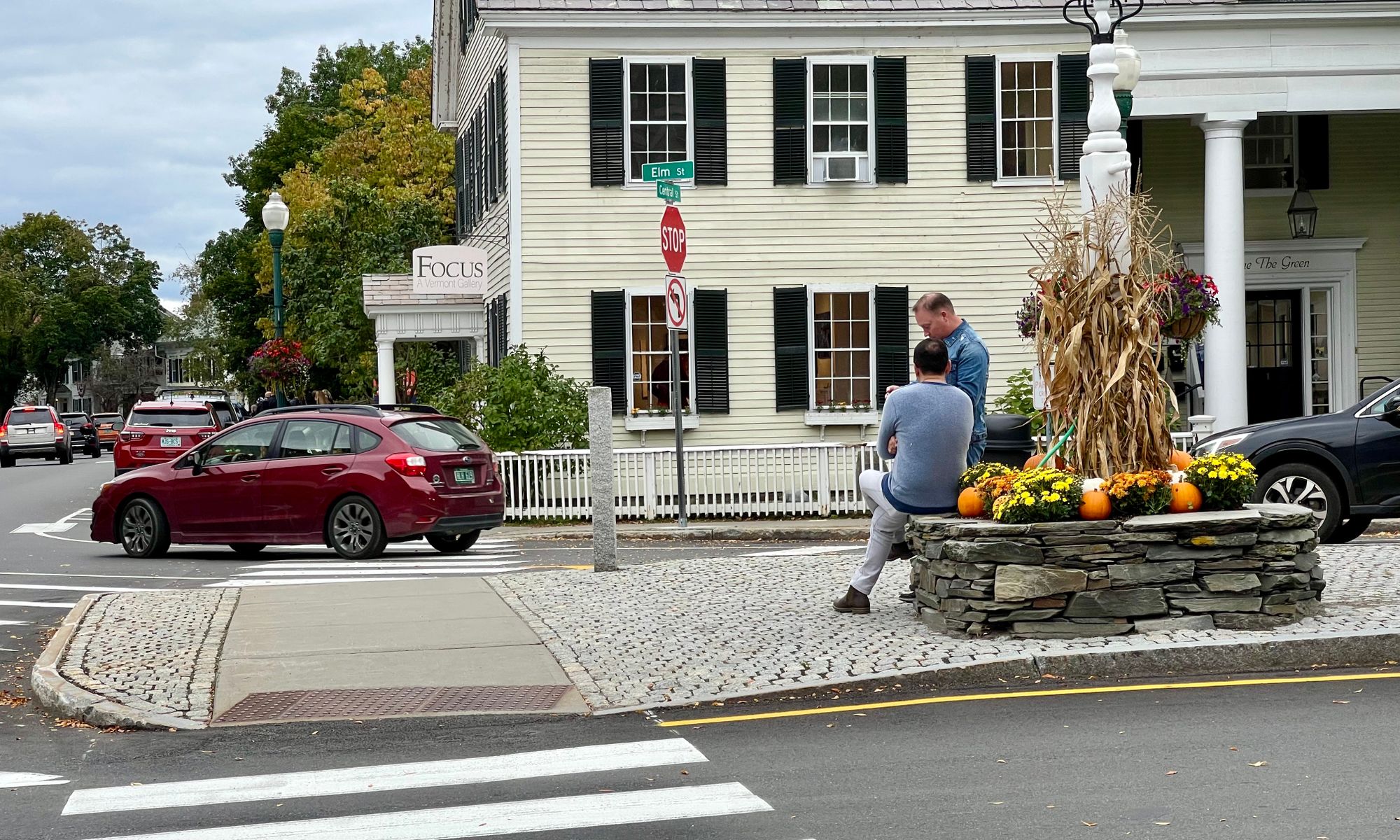
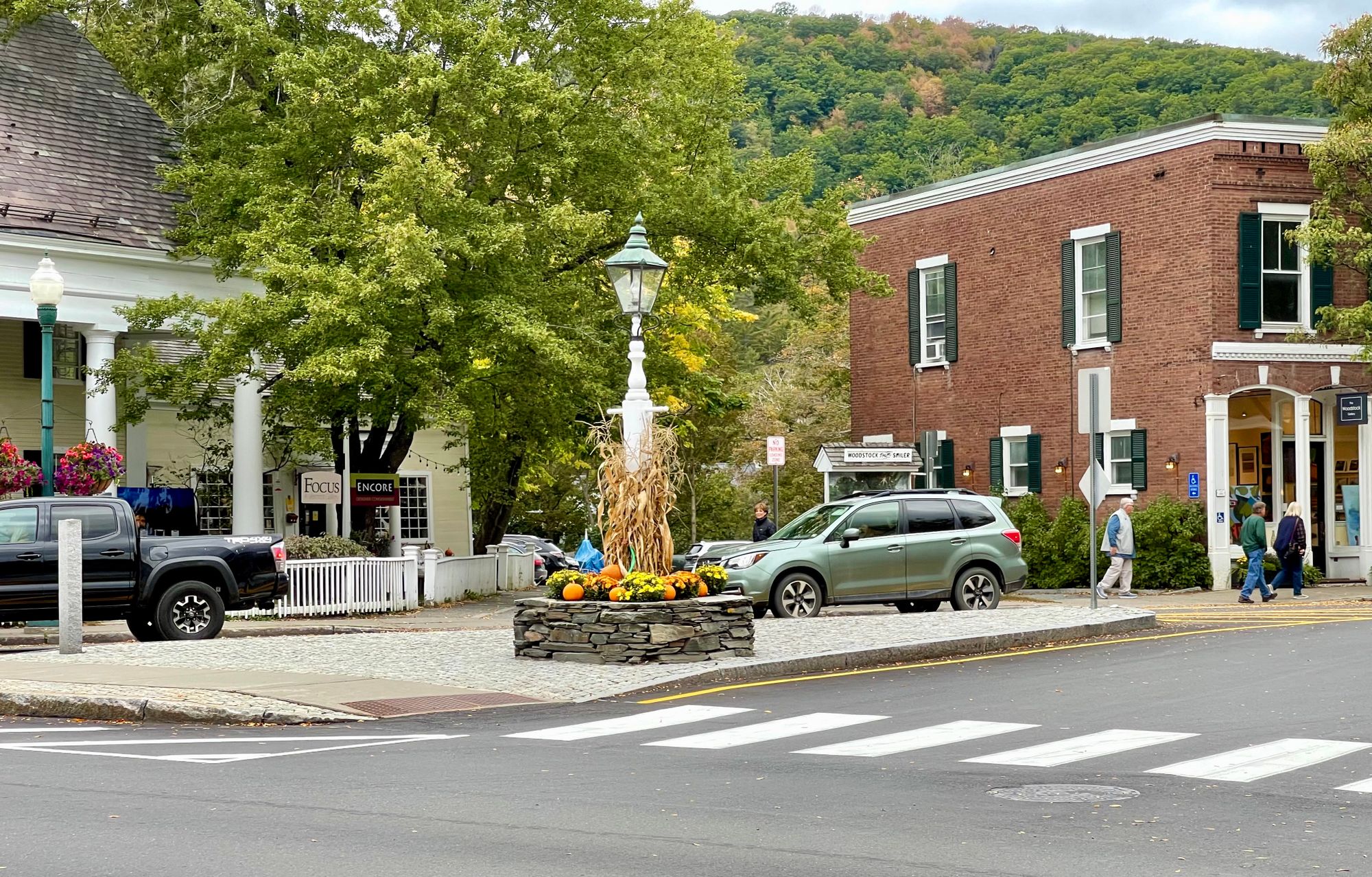
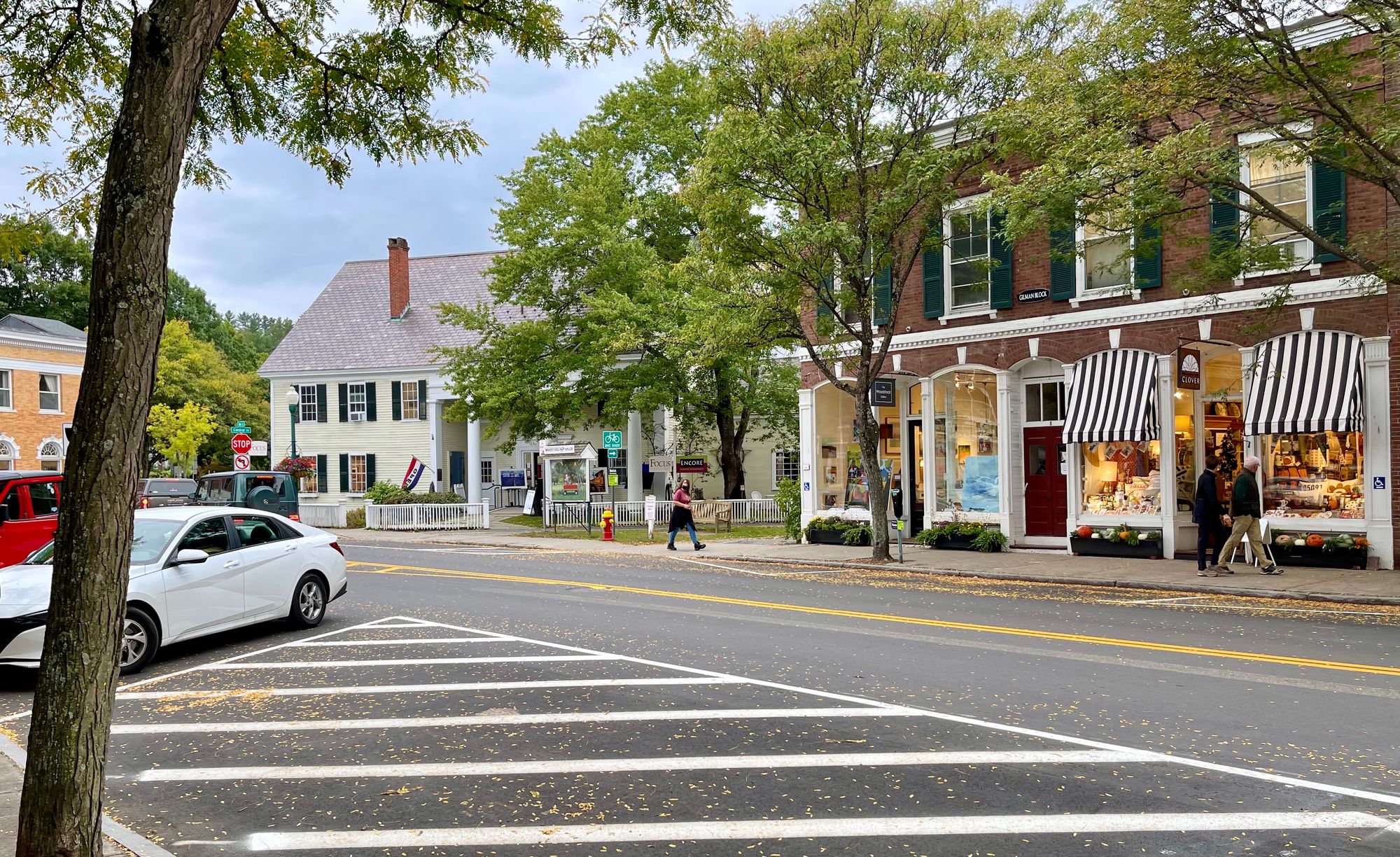
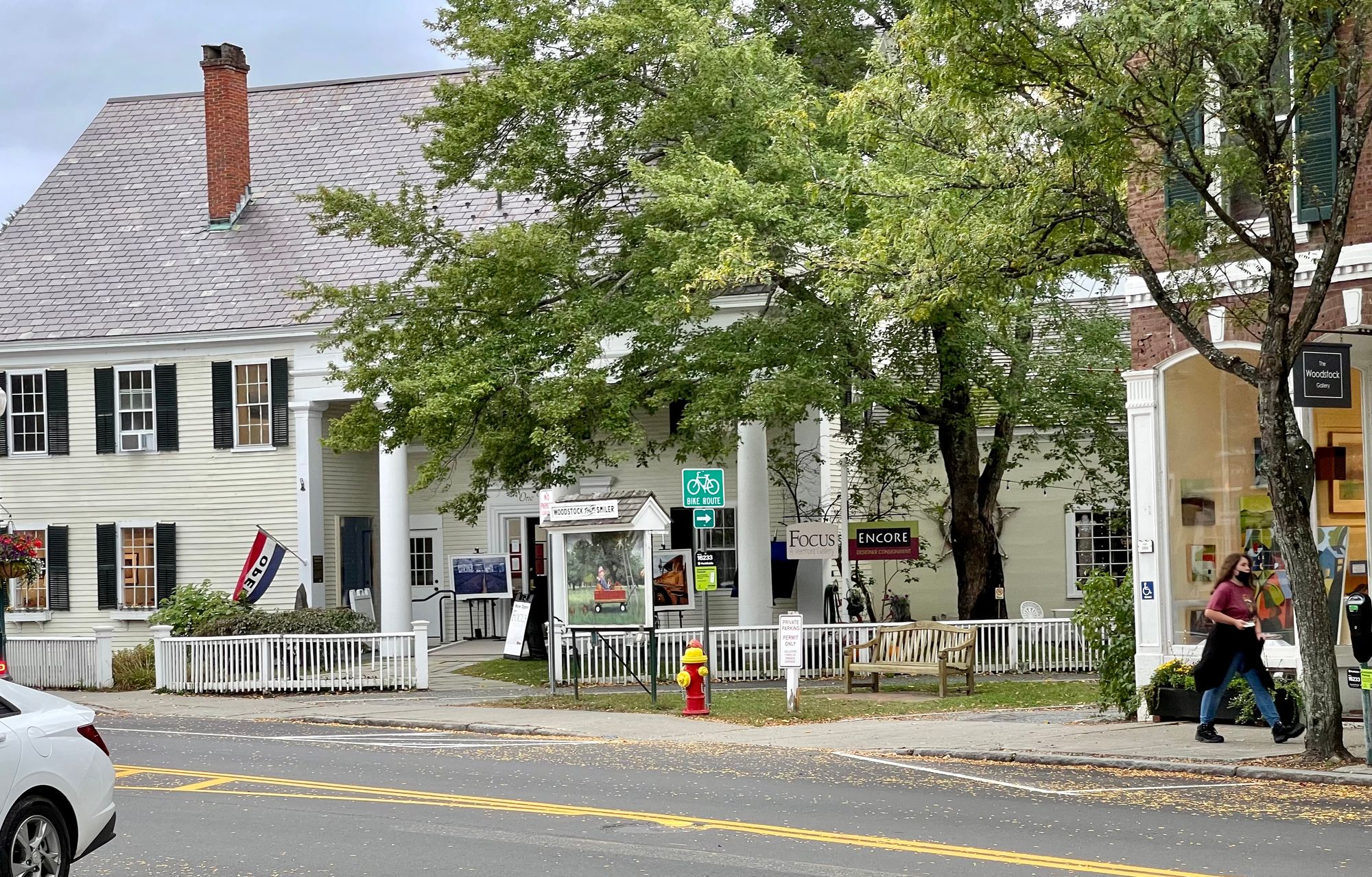
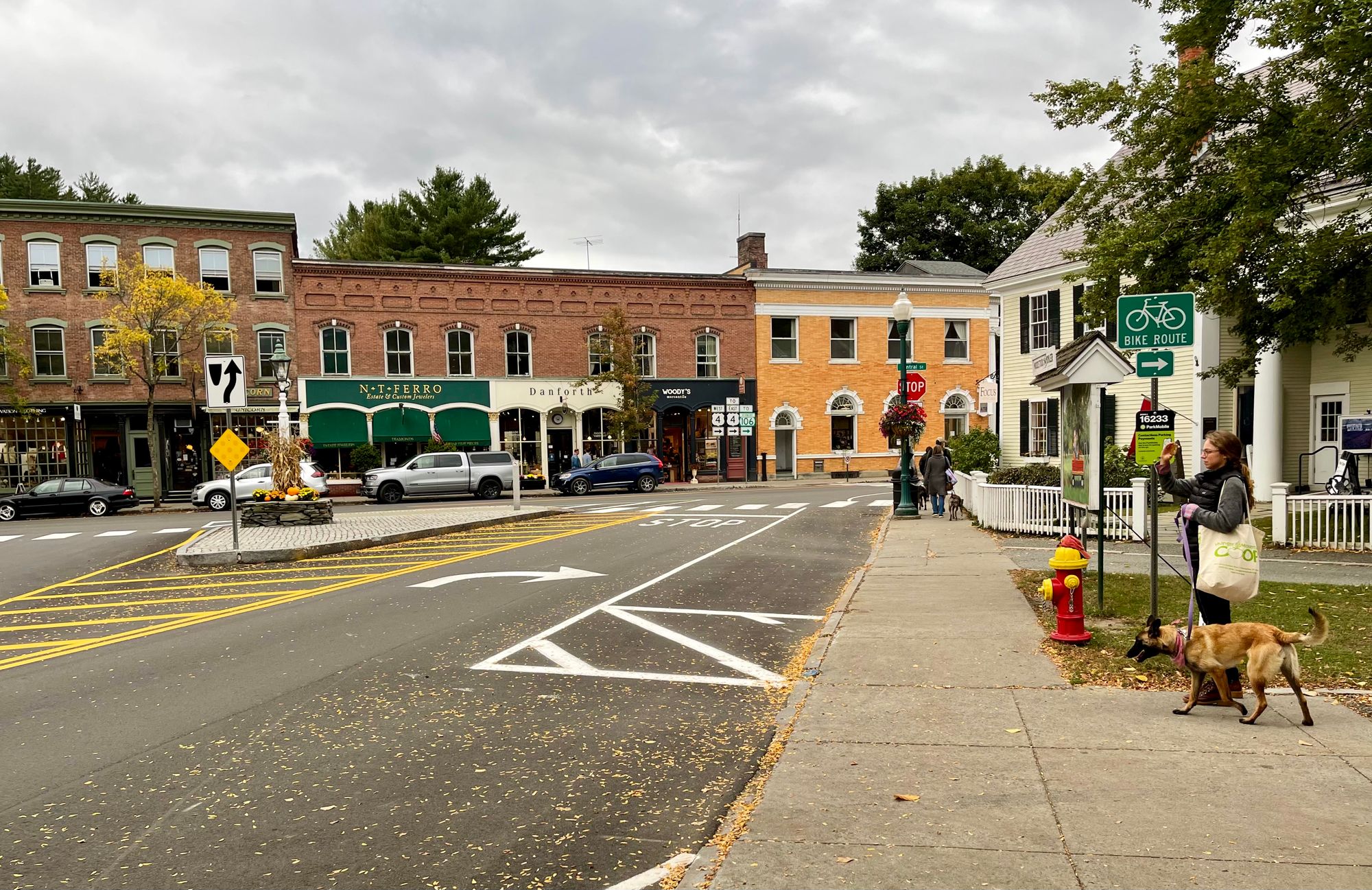
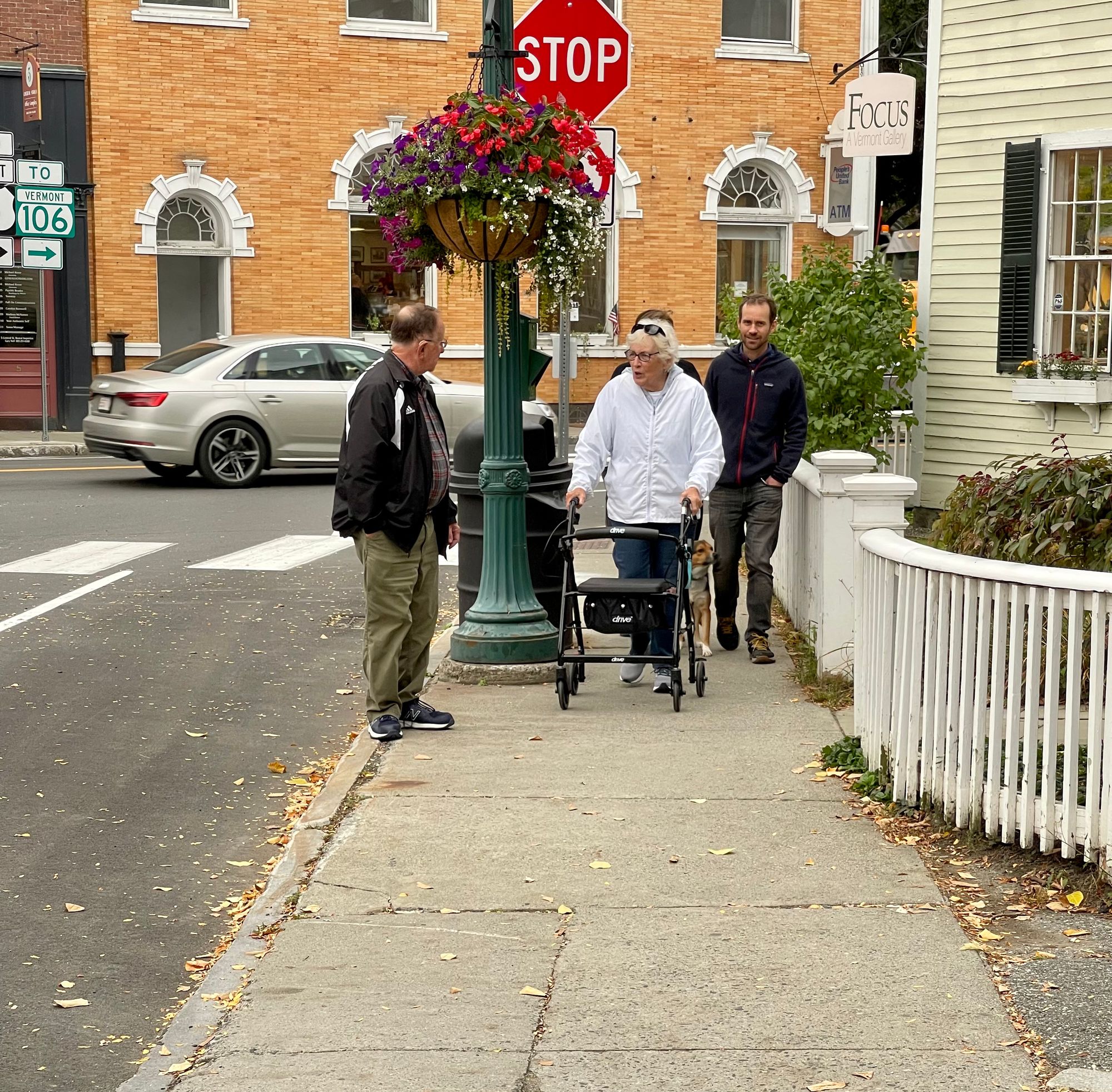
Woodstock Main Street
Strolling is the main activity in the downtown areas of Woodstock, even stretching into the neighborhoods around the center. The narrow sidewalks in the center create a hostile setting without basic amenities, which could (with a few additions) make the area more enjoyable to the many people exploring each nook and cranny of the downtown. Meanwhile, a good strolling main street requires a minimum width – adding a few feet to the sidewalks (or a sidewalk extension that removes parking) would be transformative.
What is also remarkable (and a genuine asset) is that, as one travels out from the center, the historic buildings, the nearby river, open fields, and links to the Billings Farm and trail system make Woodstock a true experience. These dimensions give visitors ample opportunities to explore a small town in a beautiful part of Vermont.
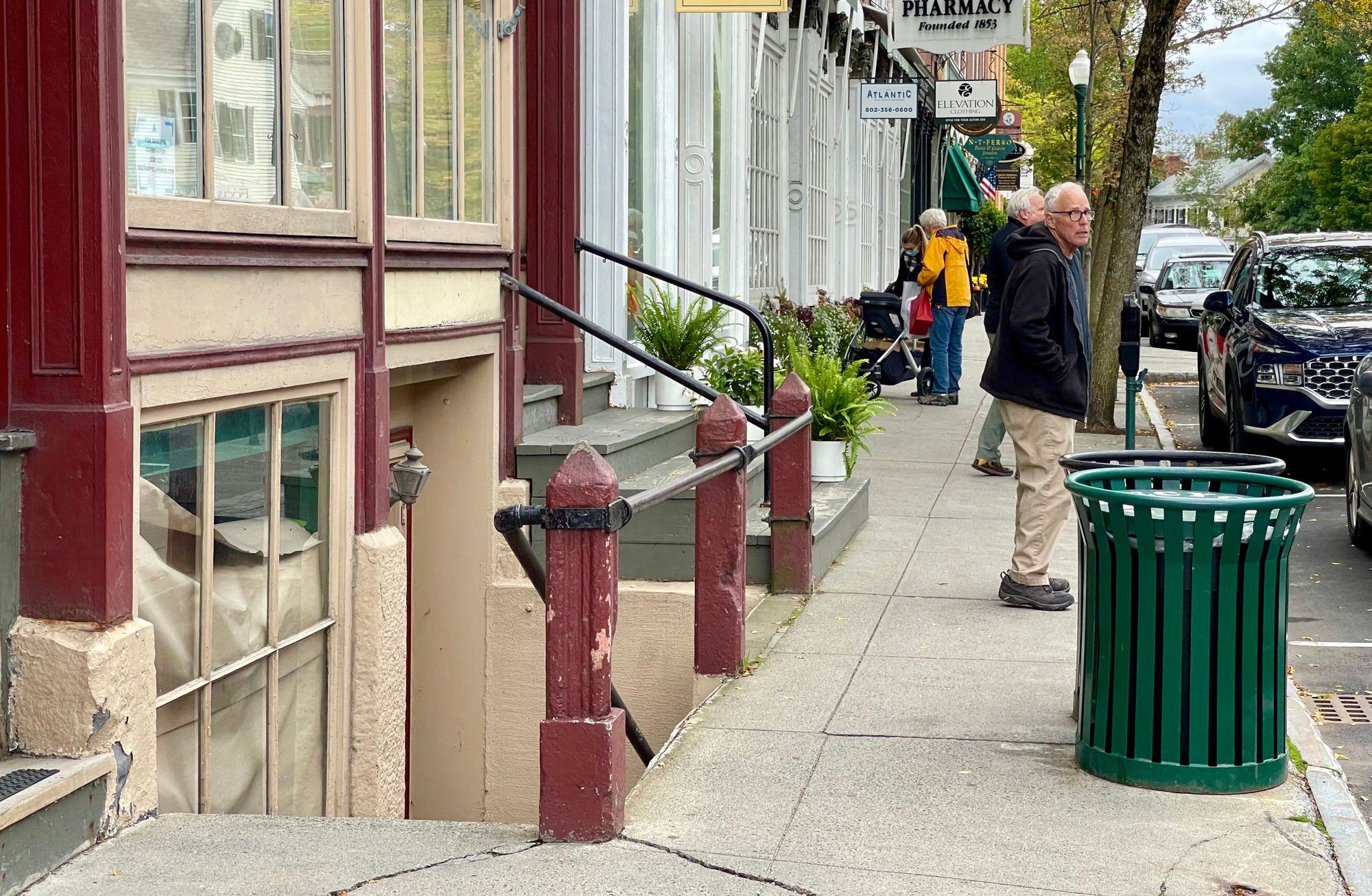
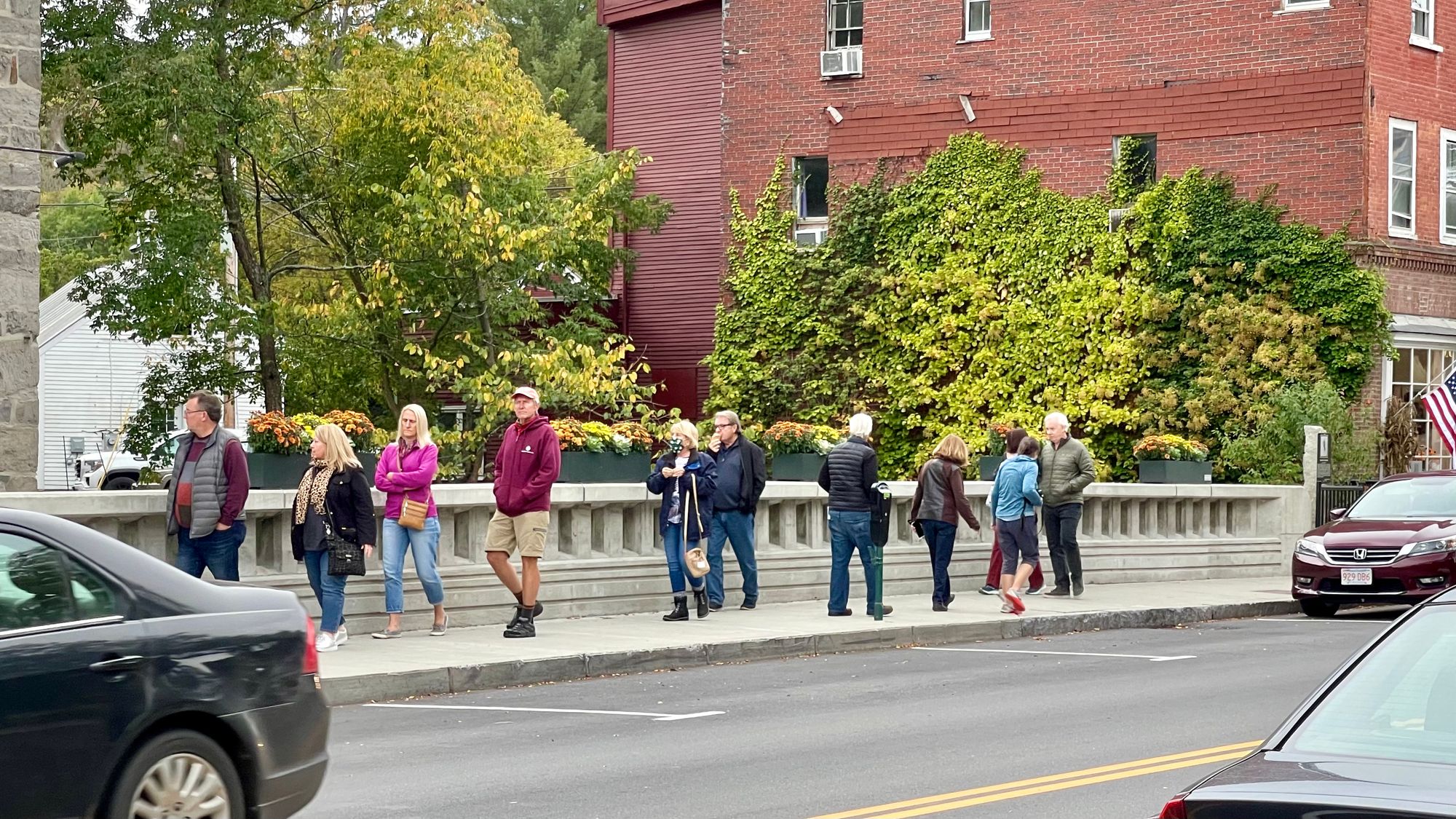
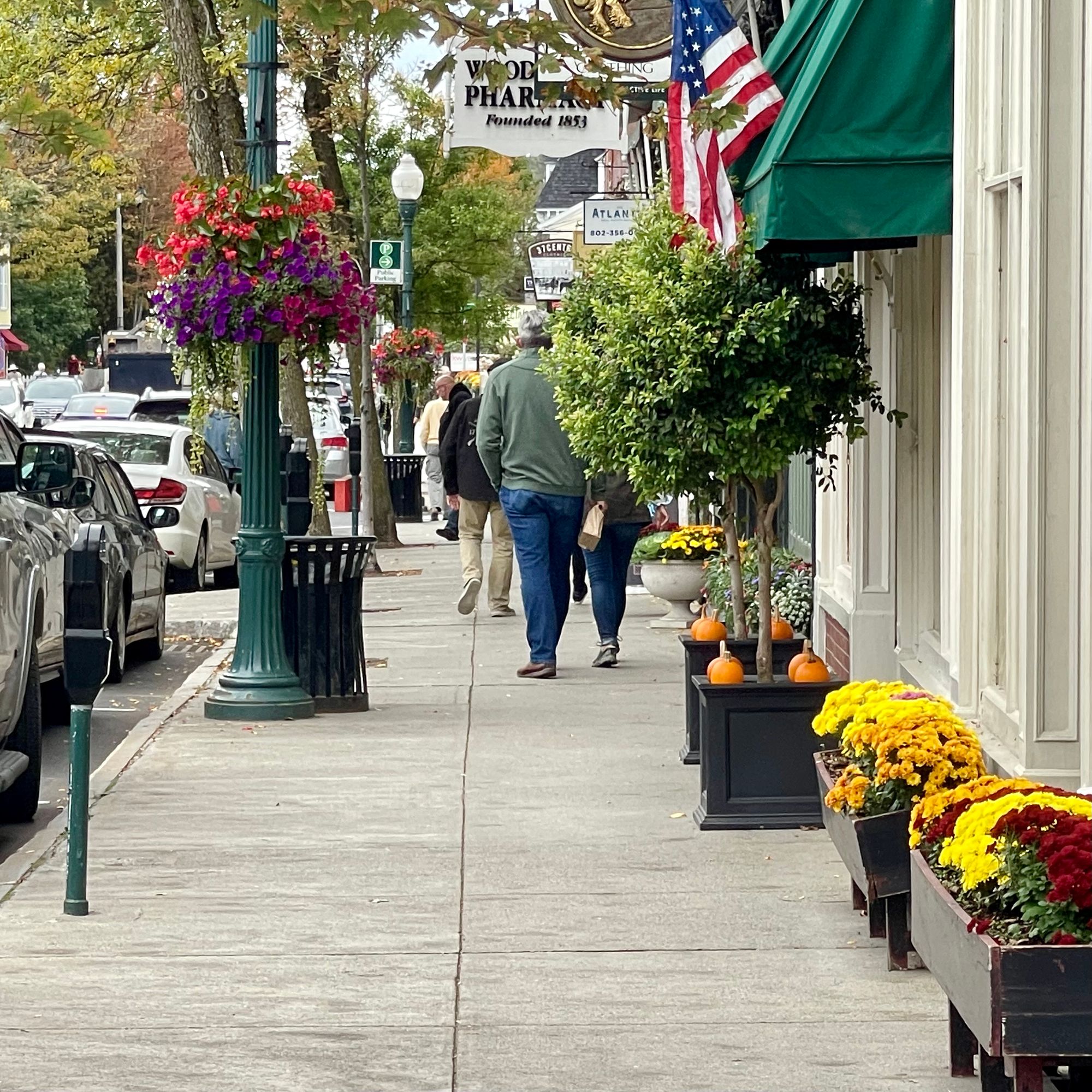
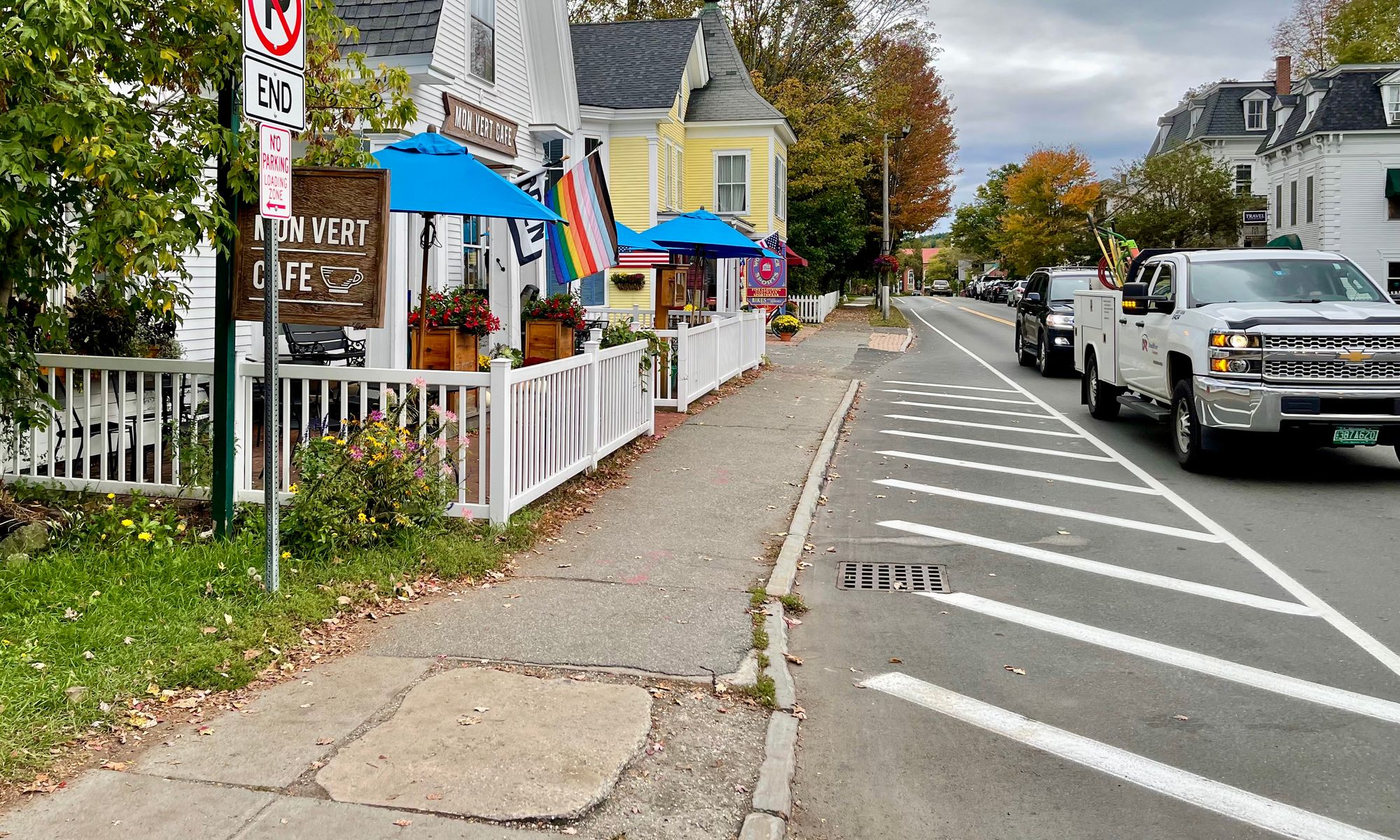
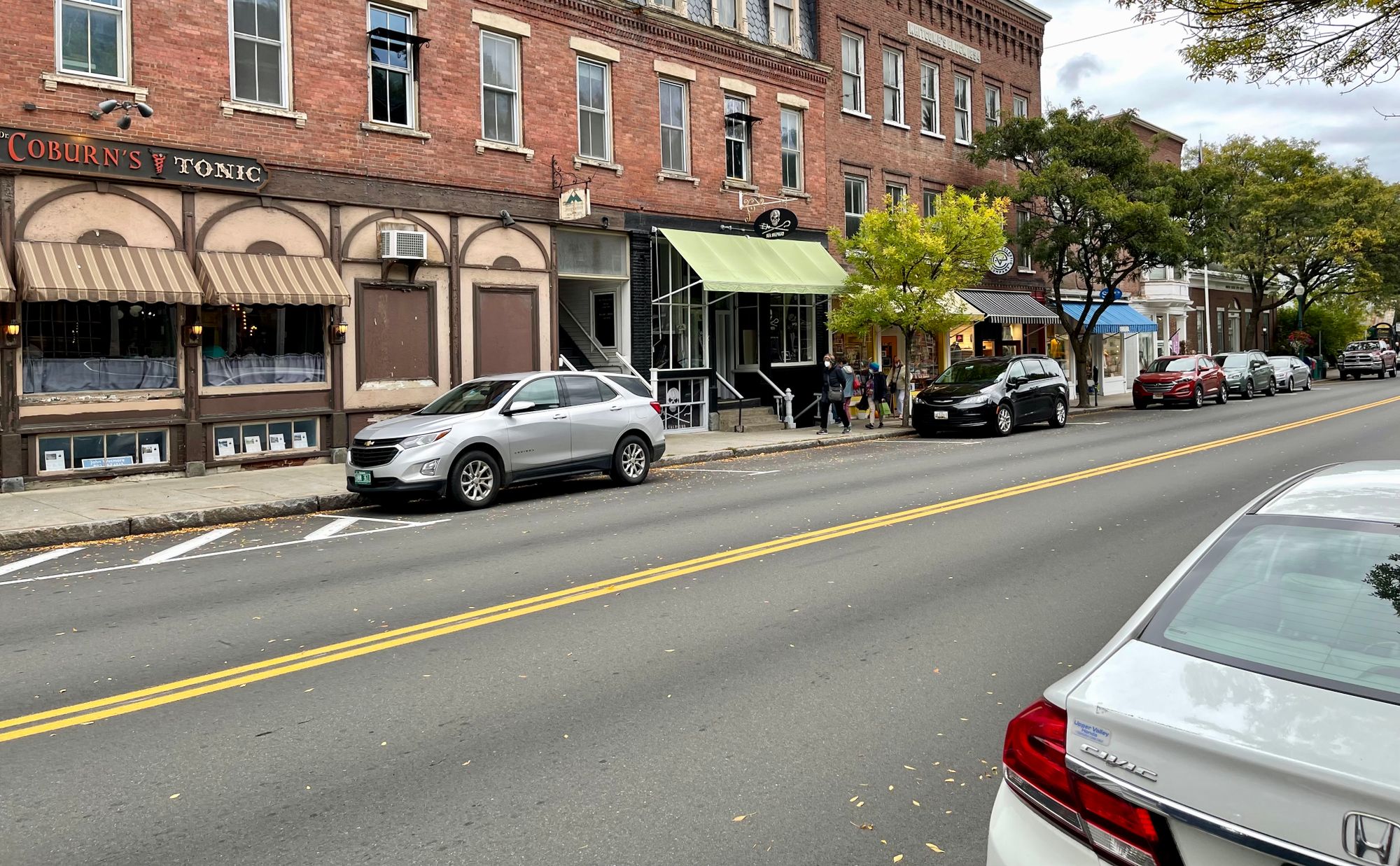
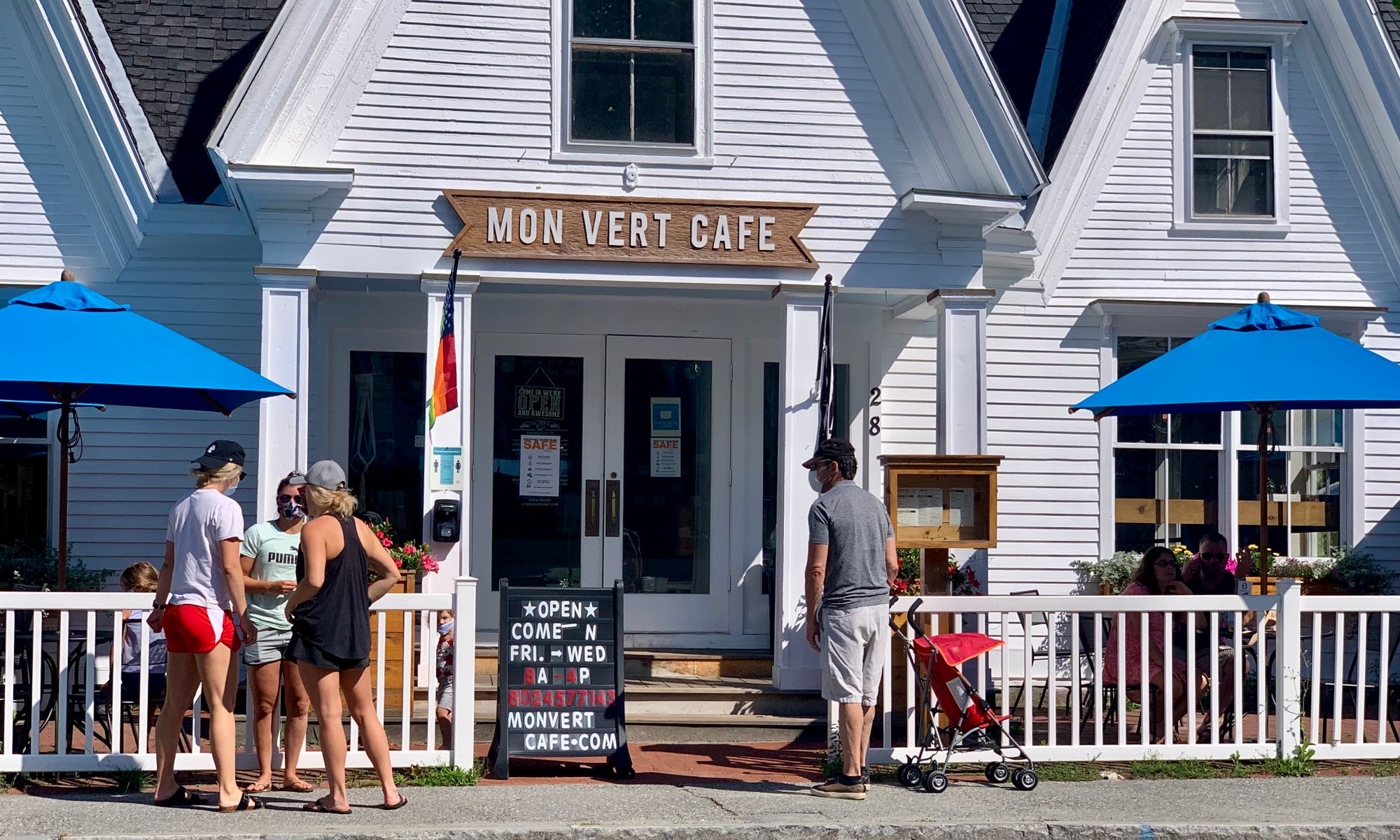
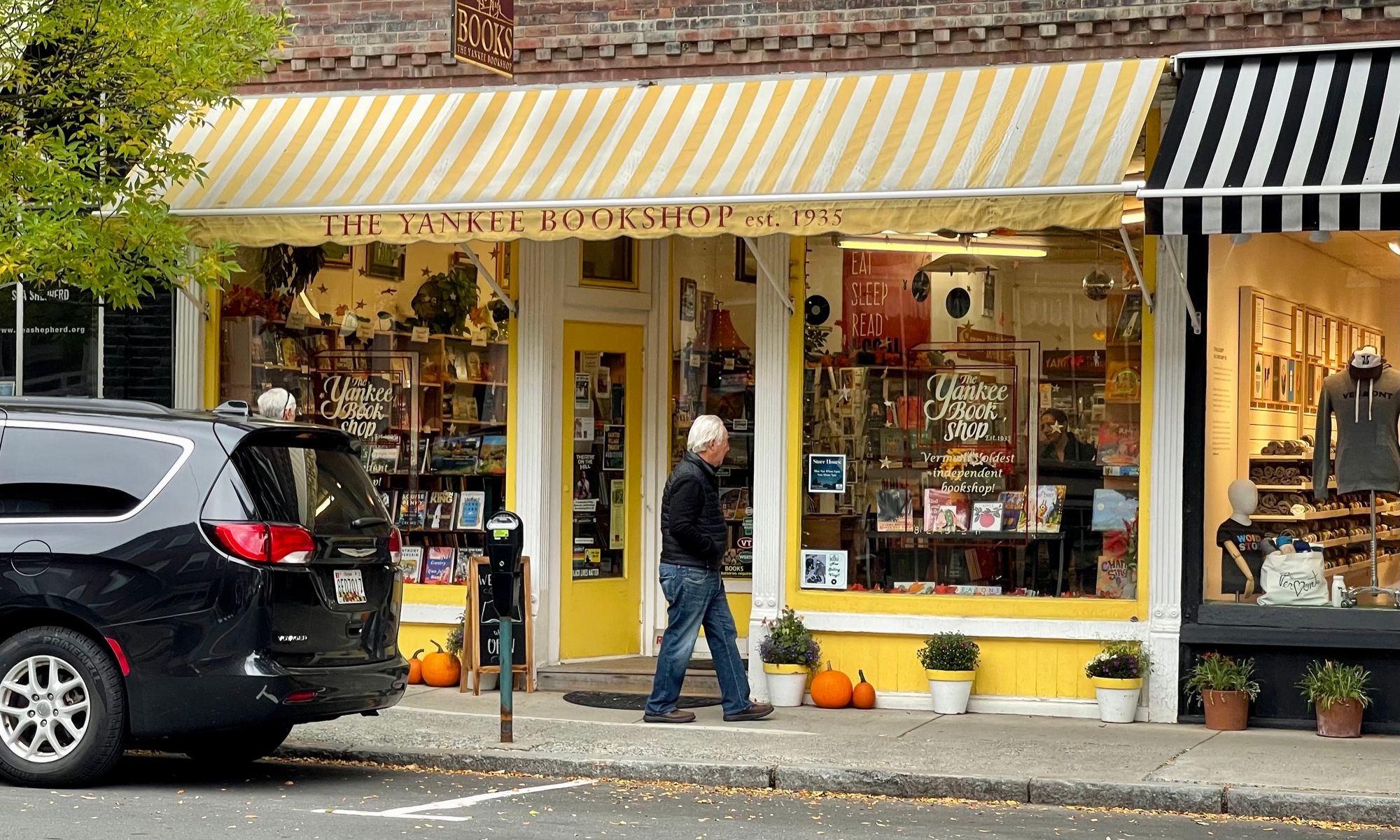
Vergennes
Vergennes is a small but very prominent town along the western side of Vermont. It has a small downtown cut up into different parts. It could easily reconnect and even build on that perception by creating an "edge" of attractive activities along the Green. Moving the visitor center to the main street side of the Green and adding small, perhaps daily, stalls in fair weather would attract users. The activities could be unique to Vergennes, such as an ice cream stand, food stands, and other local artisans (like my favorite Chair Smith) as a way of drawing people to a thriving, connected downtown. By filling the gap which the "Green" creates between the library and City Hall, both sides of main street could together create the impression of a very vital center for the community.
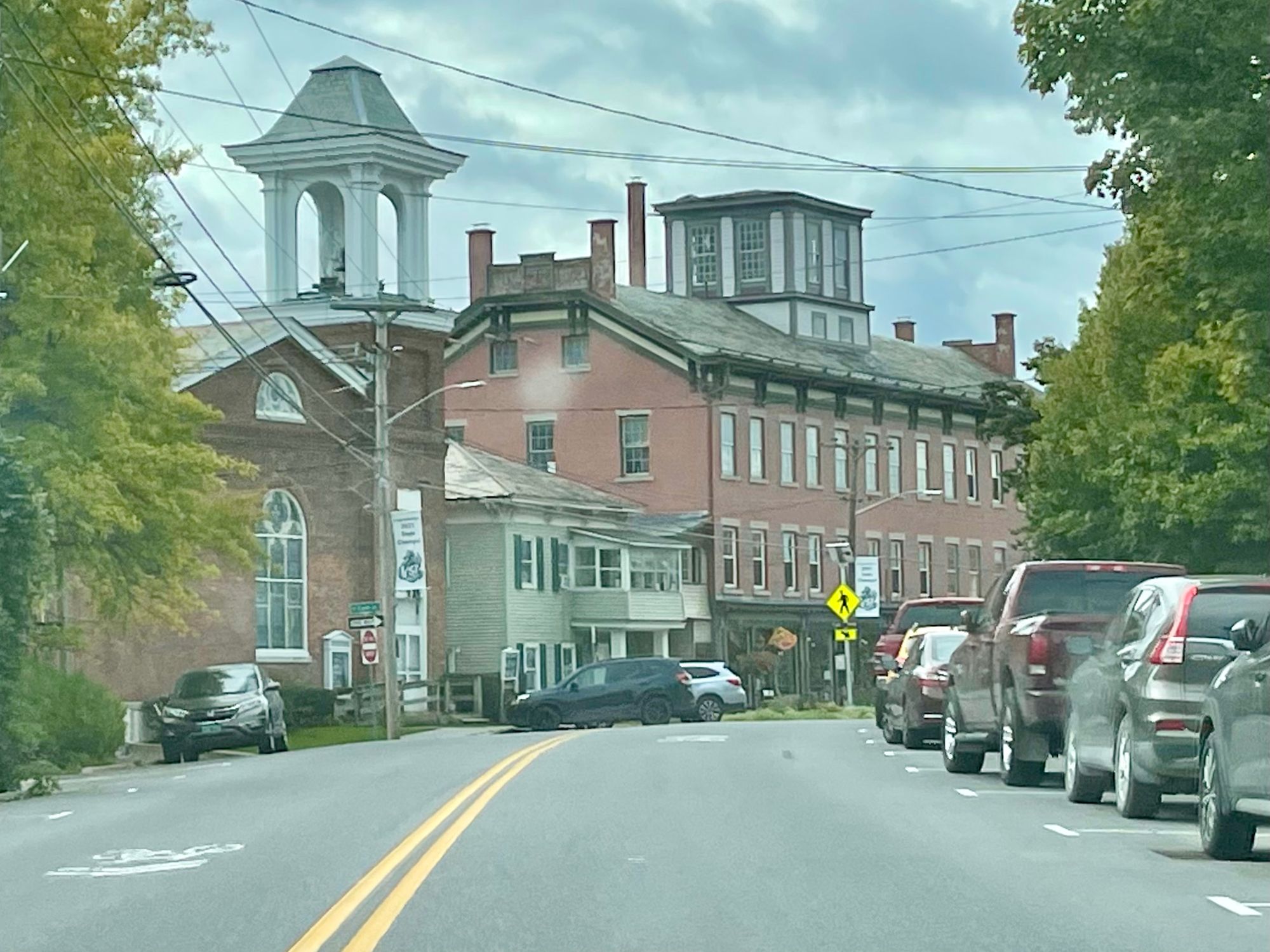
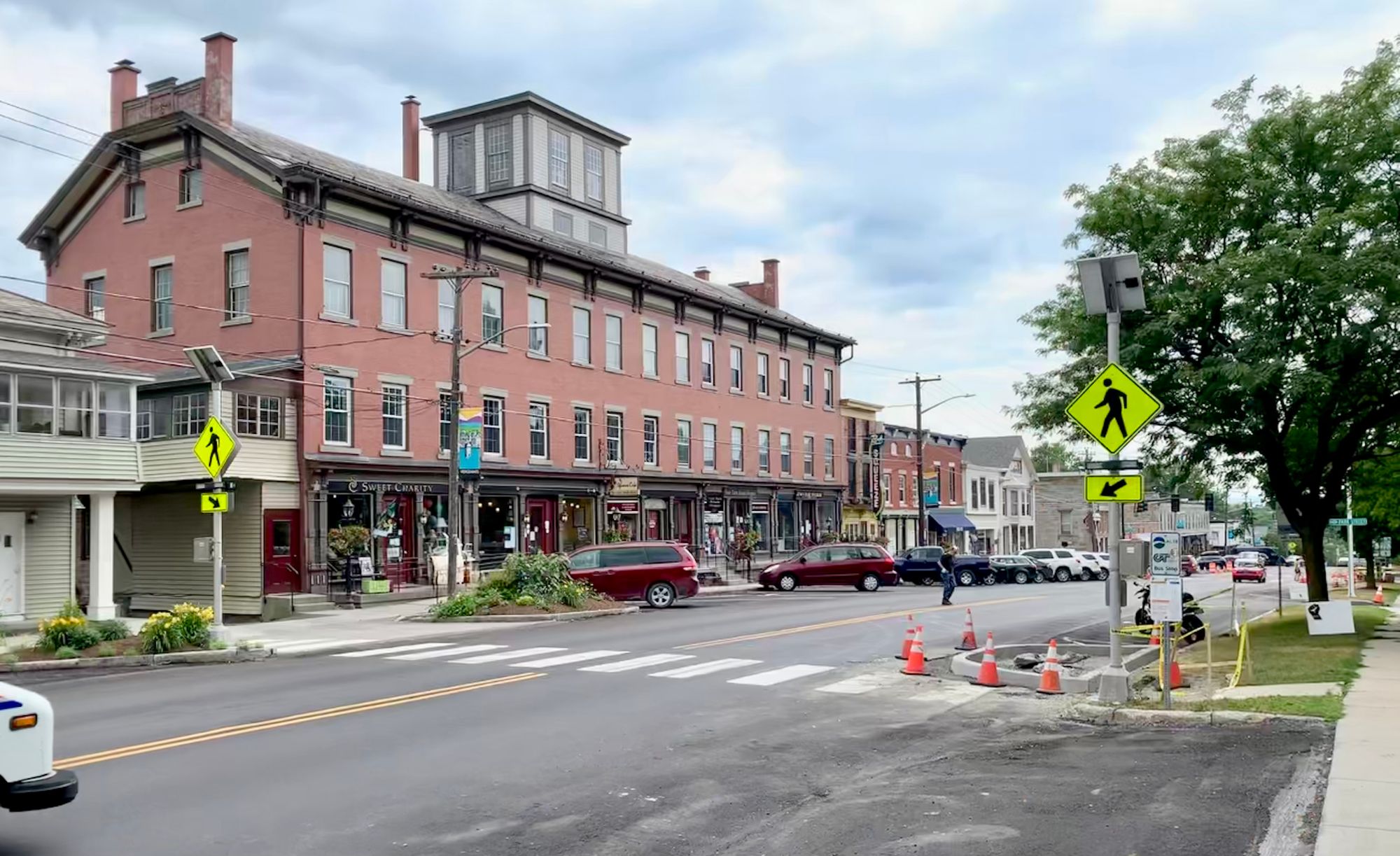

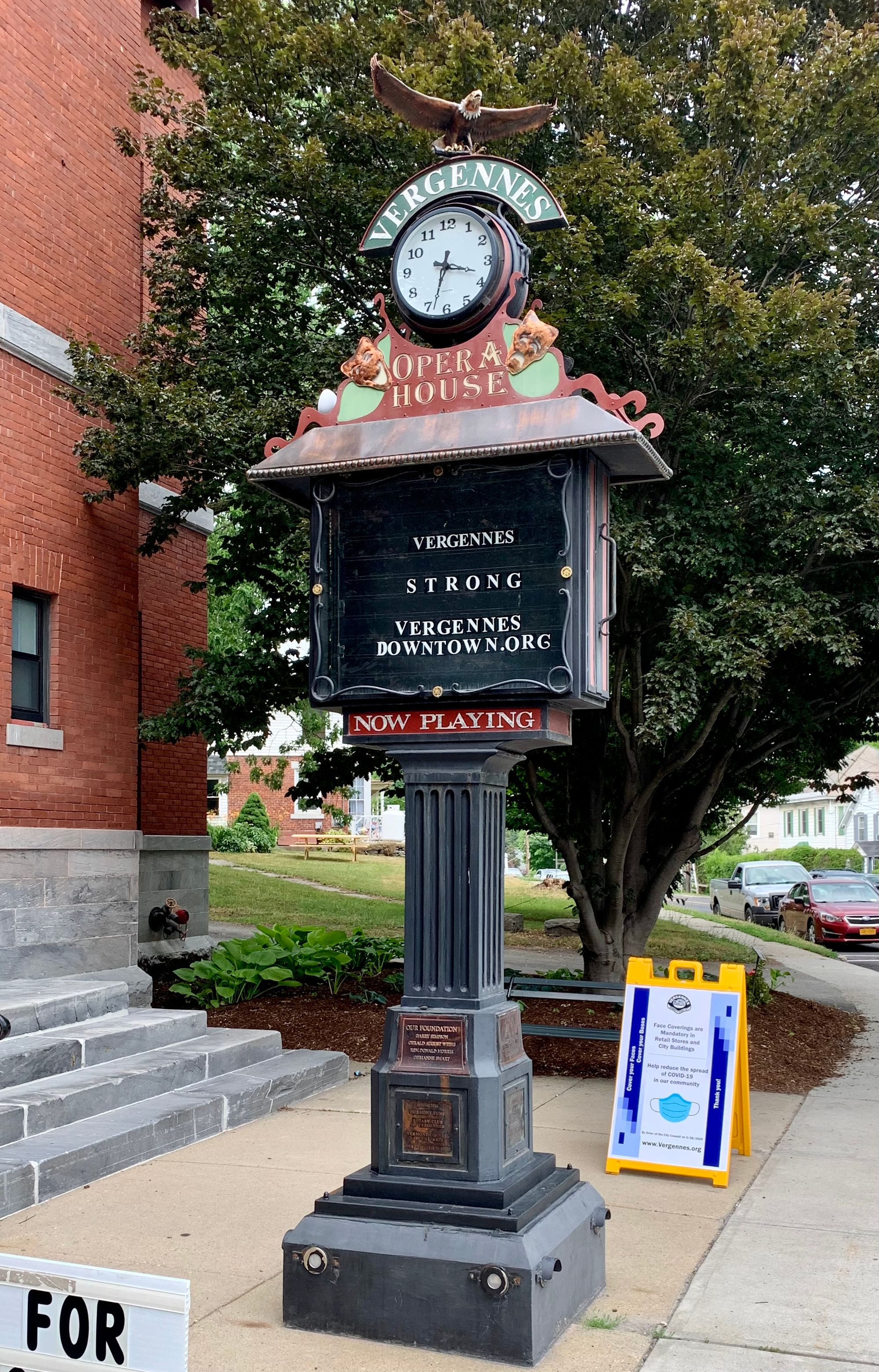
City Hall and Opera House
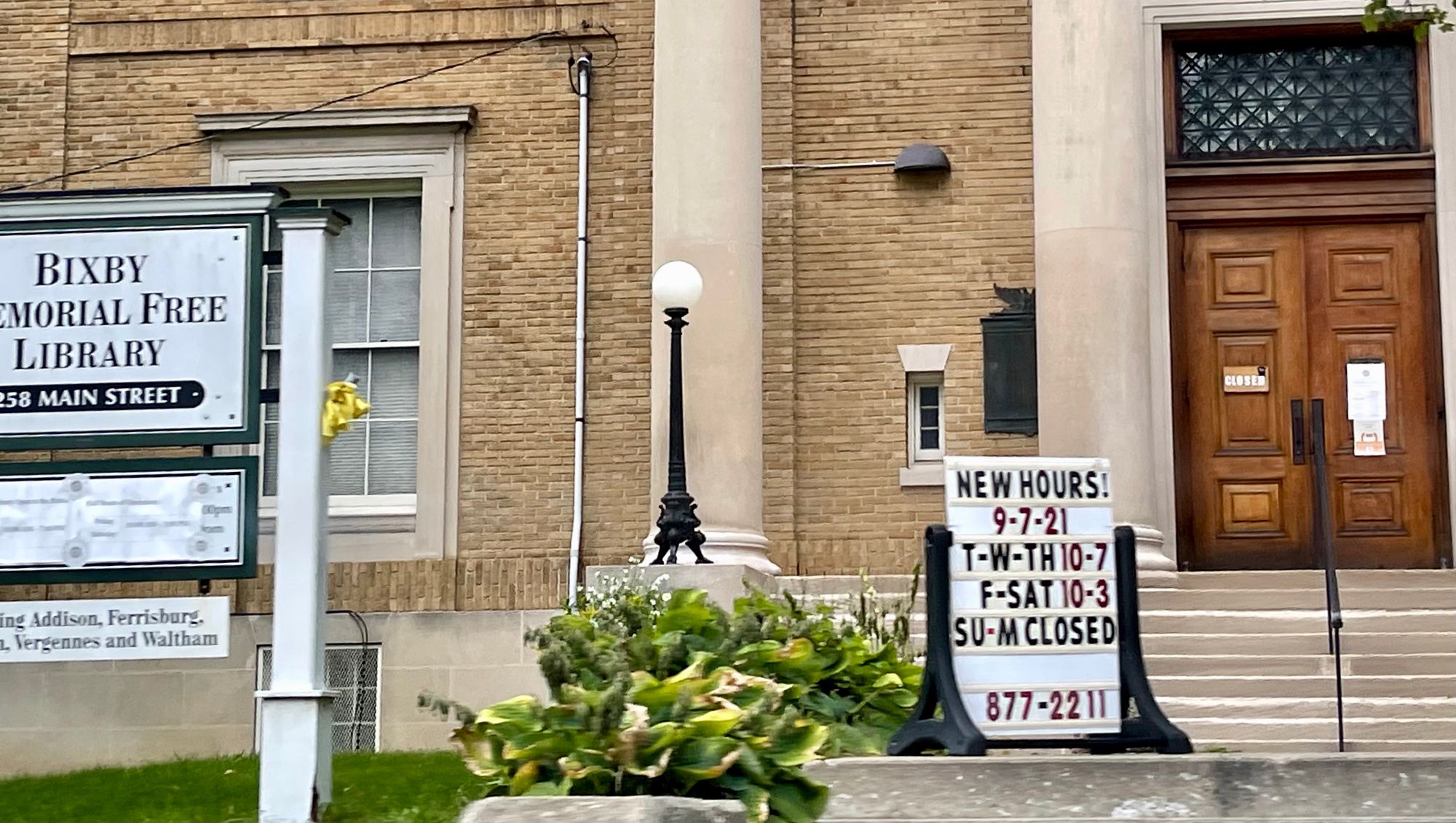
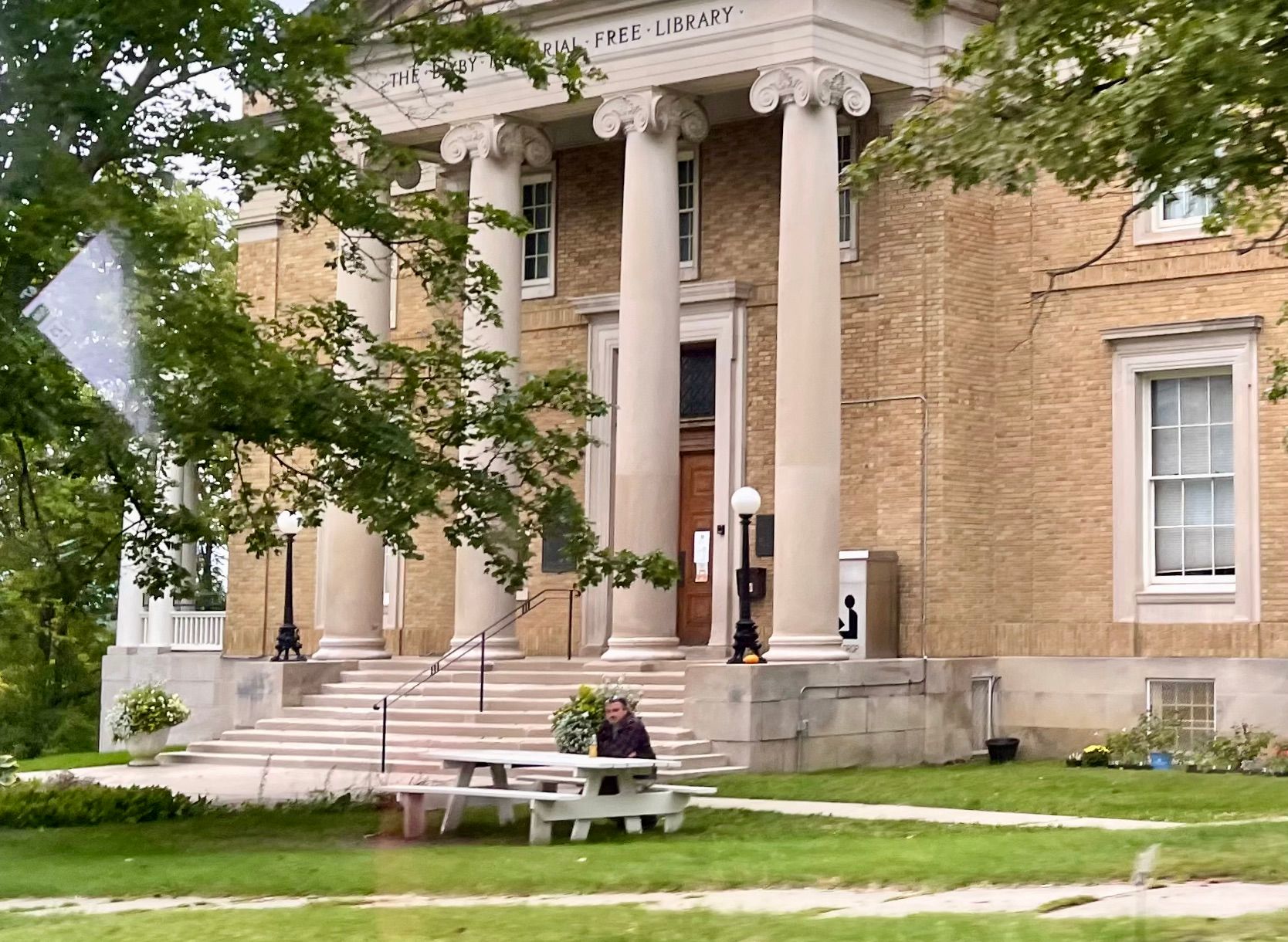
Main Intersection: Four Corners, including the Green
The main intersection is the heart of Vergennes. It has beautiful buildings and a Green with a full set of trees. It is the perfect setting for a LQC (Lighter, Quicker, Cheaper) activation that would have a transformative impact.
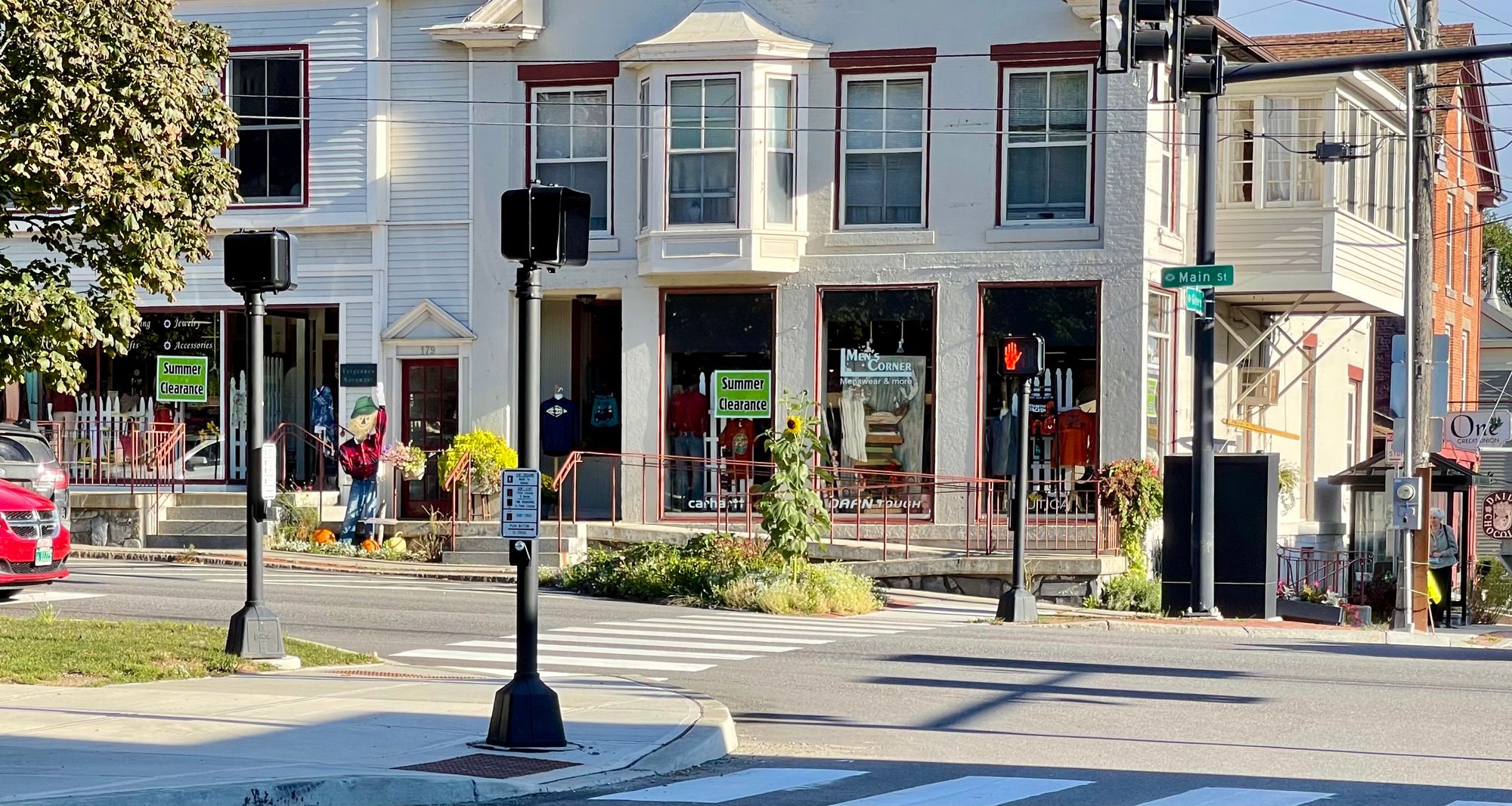
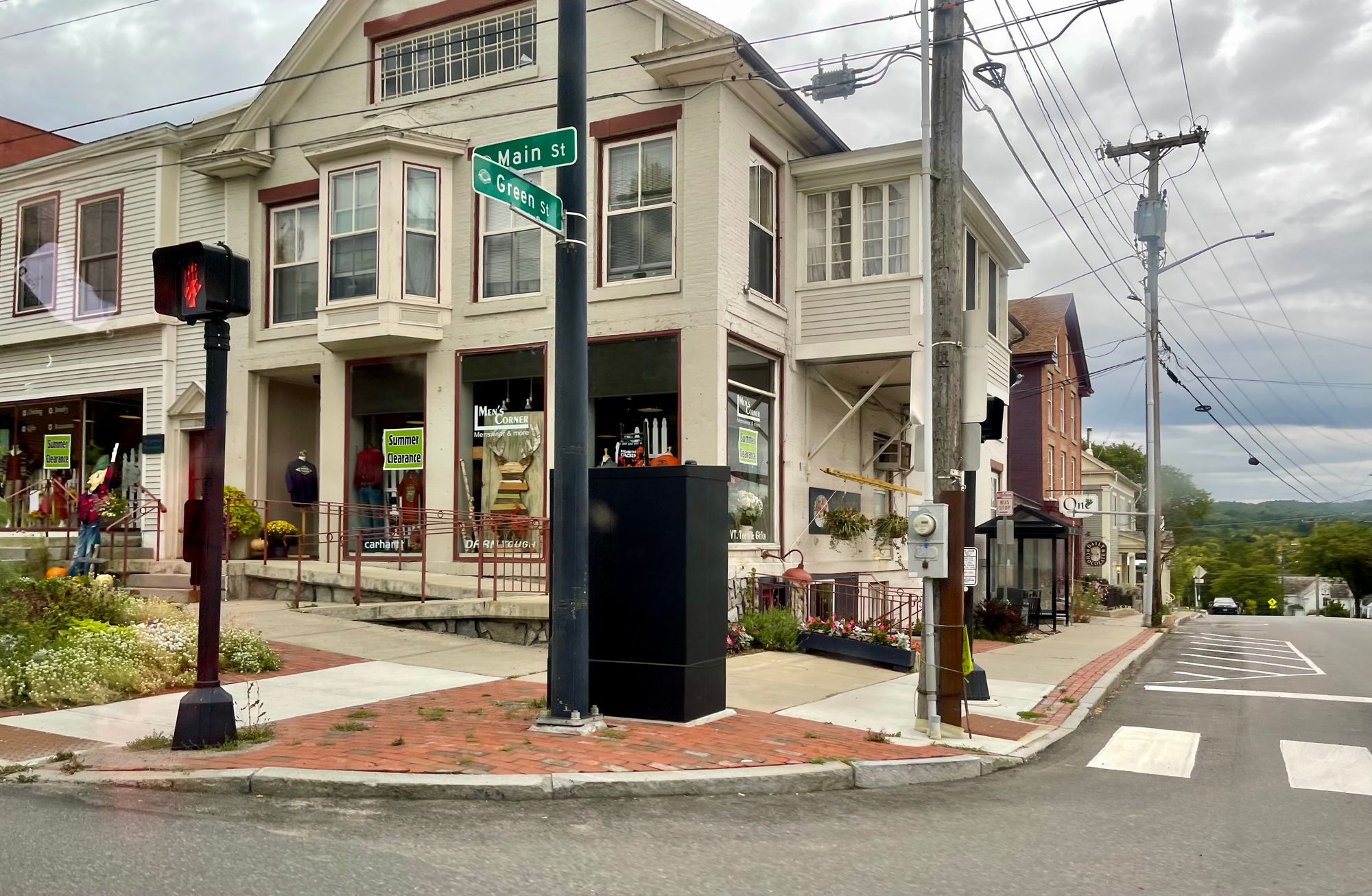
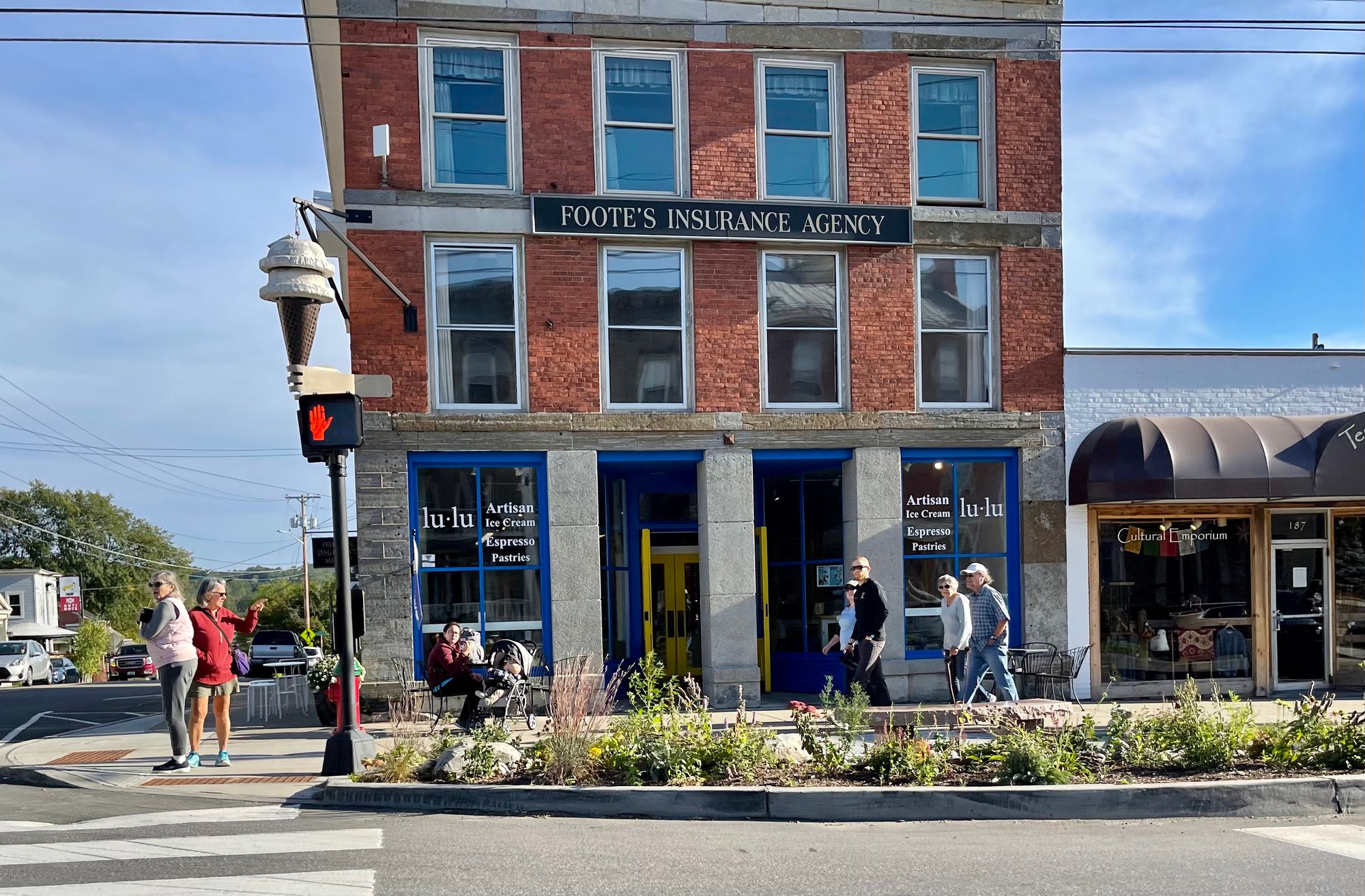
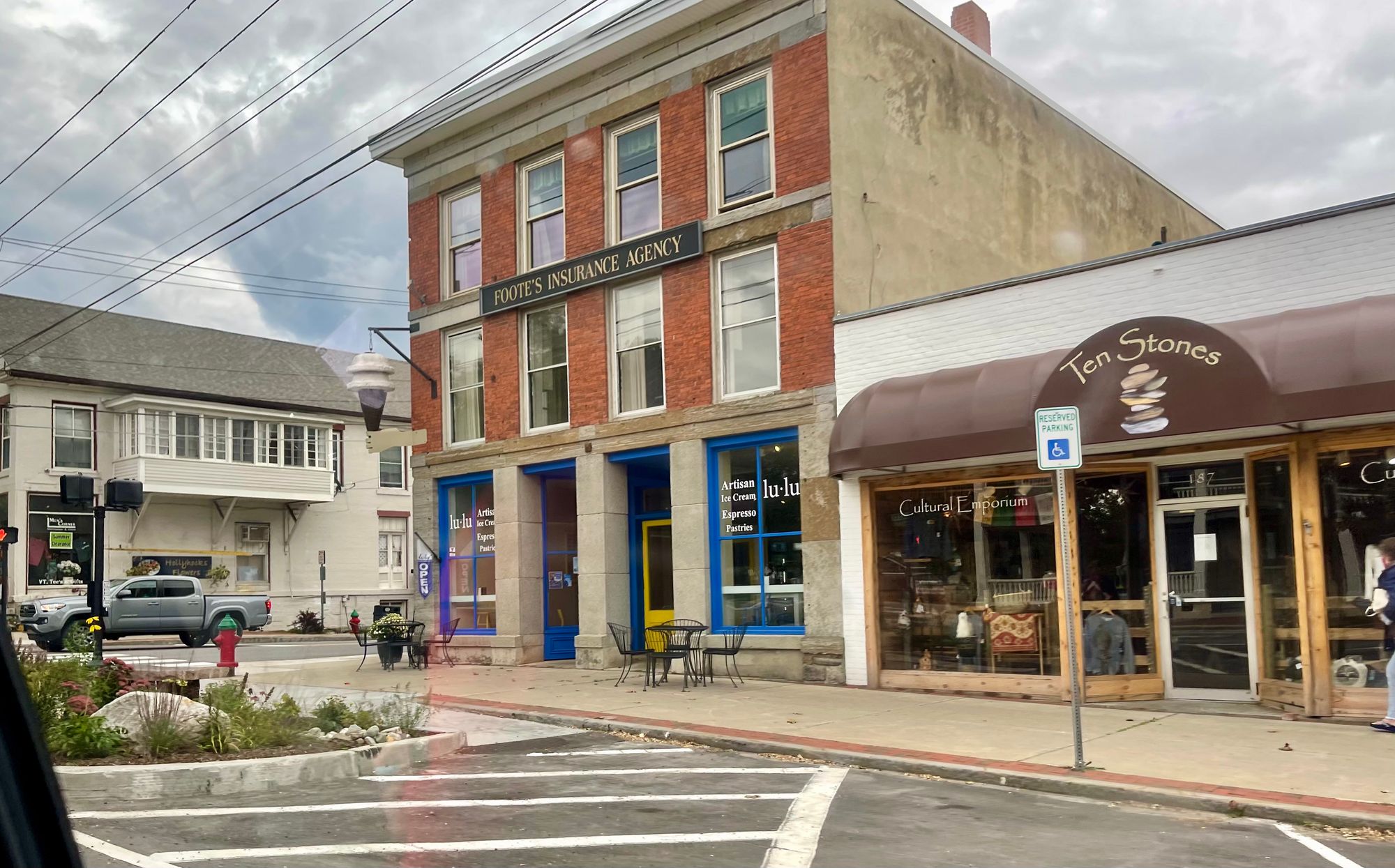
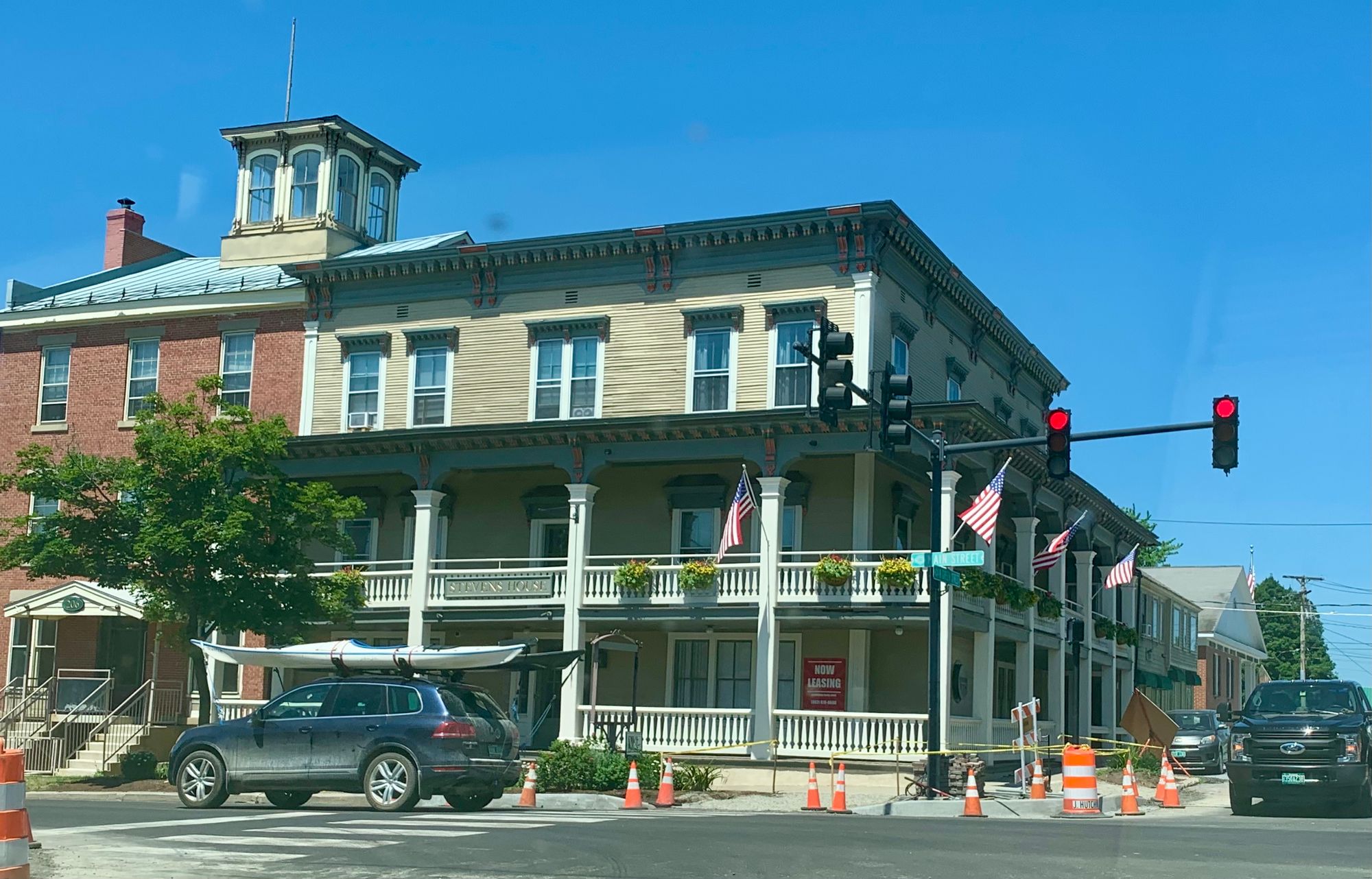

Close the Gap
Some other small improvements could add to these efforts: pruning up the trees, perhaps removing a few from the Main Street side; adding seating and a small gathering spot on the corner; setting up a place for small market day stalls and temporary kiosks... All of this would work to draw attention by adding activities to the edge of Main Street, and could have a big impact.
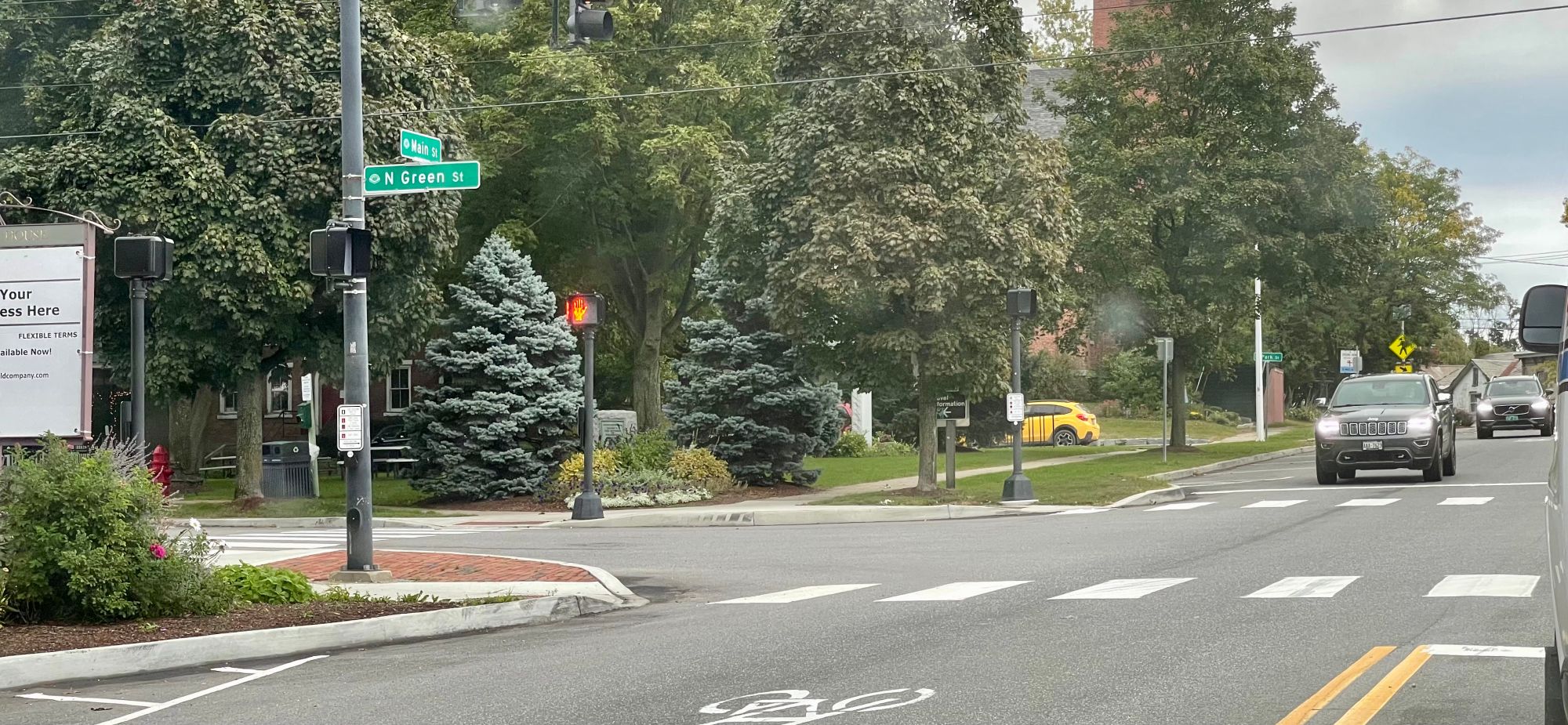
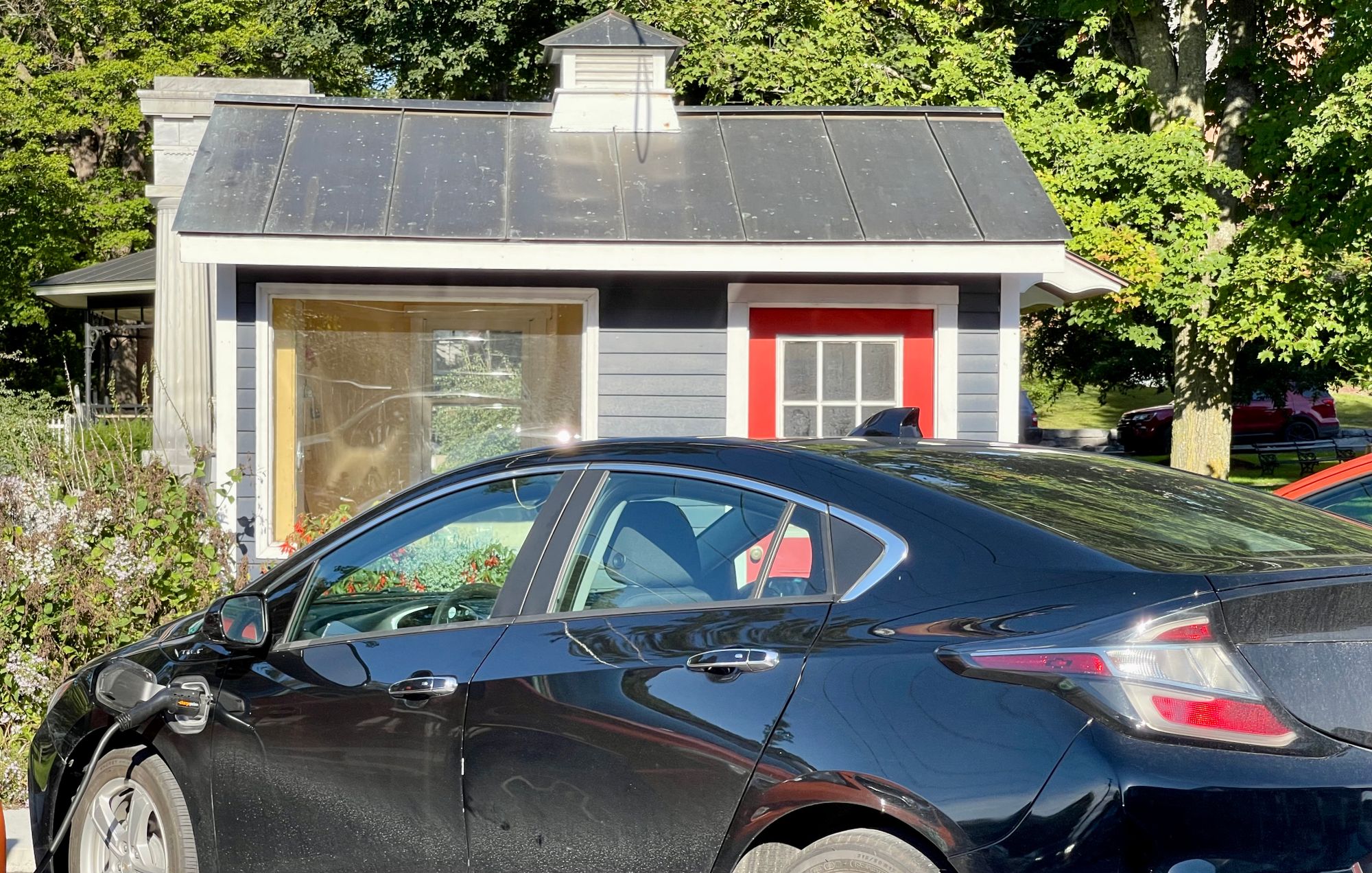
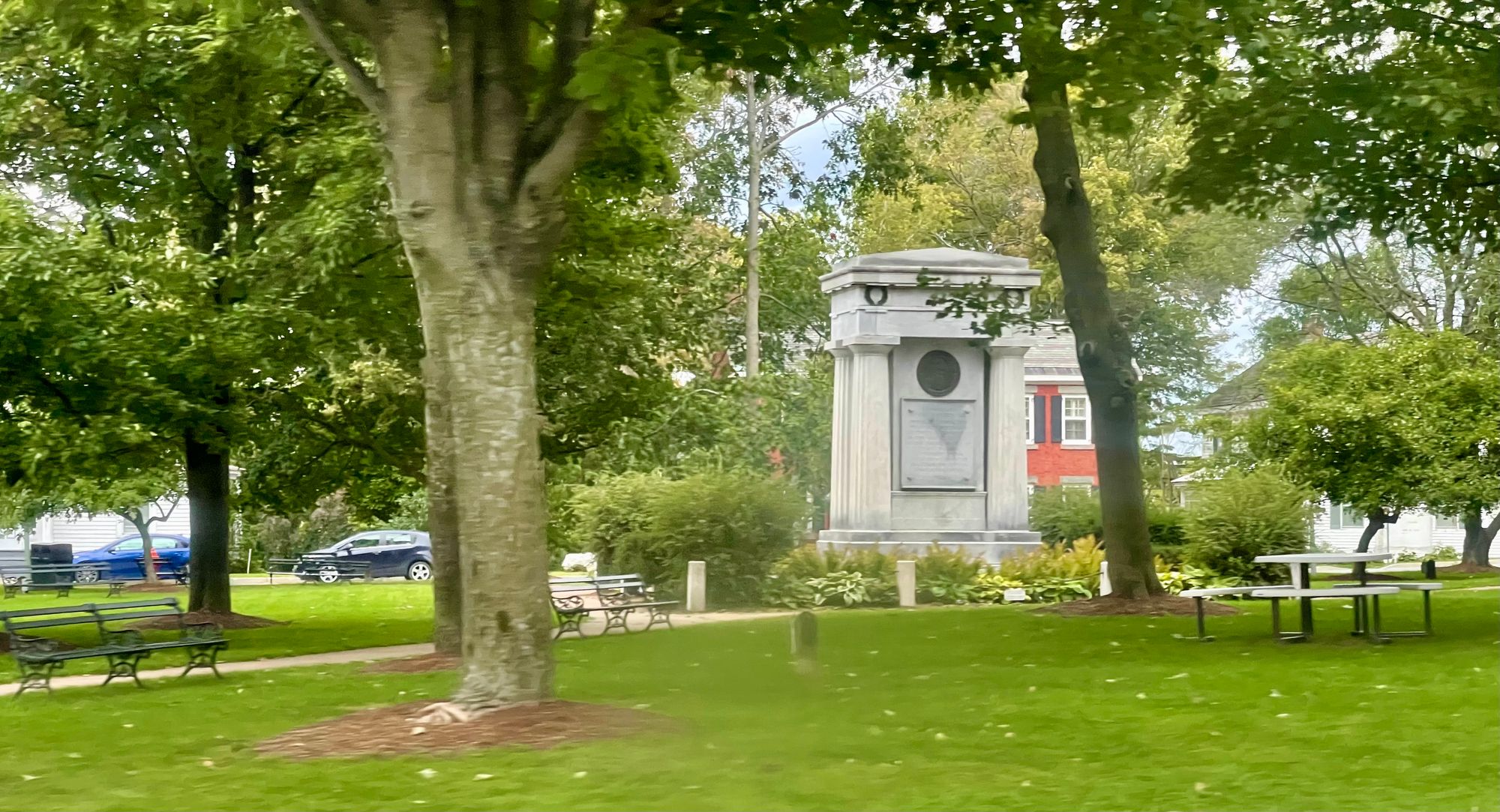
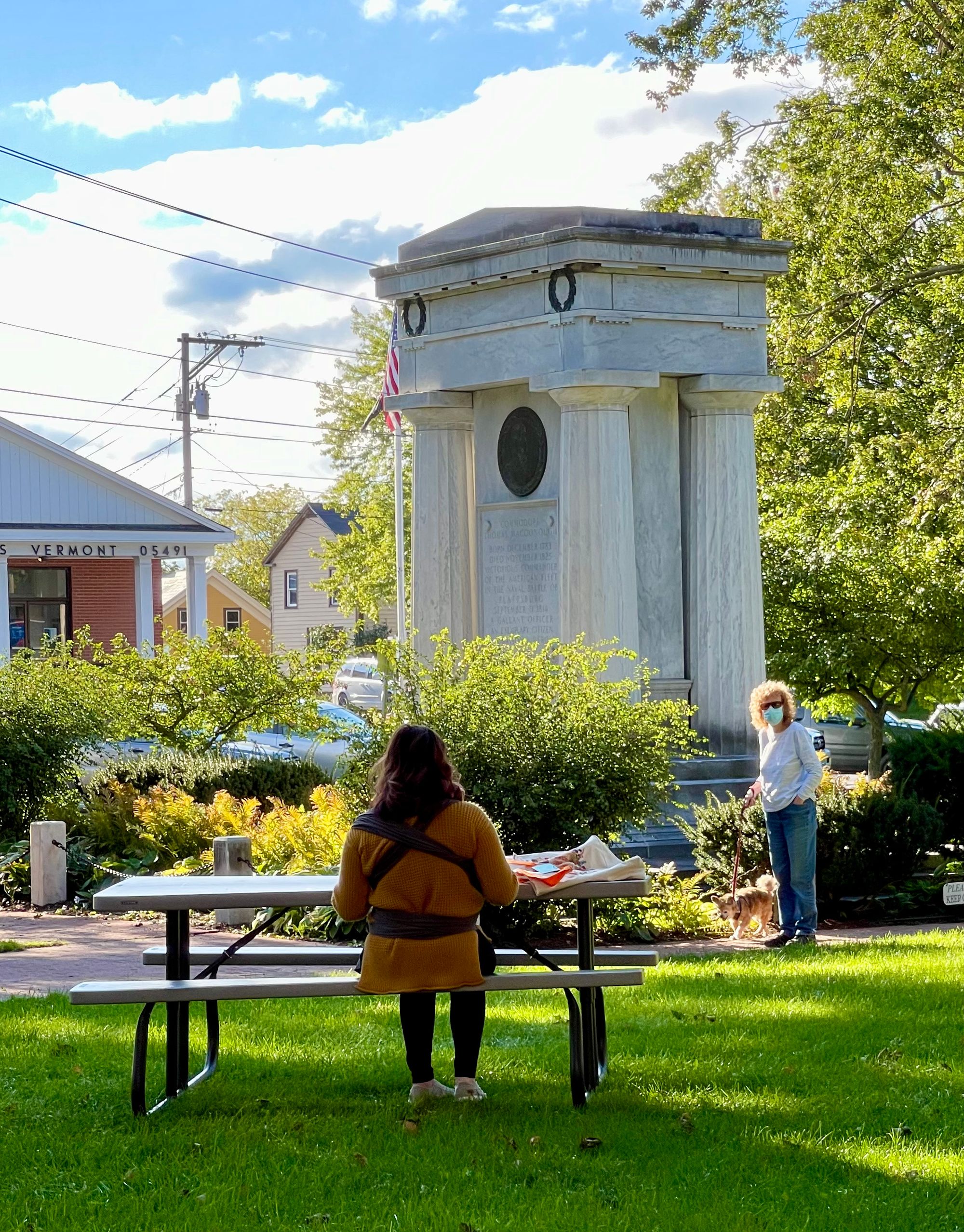
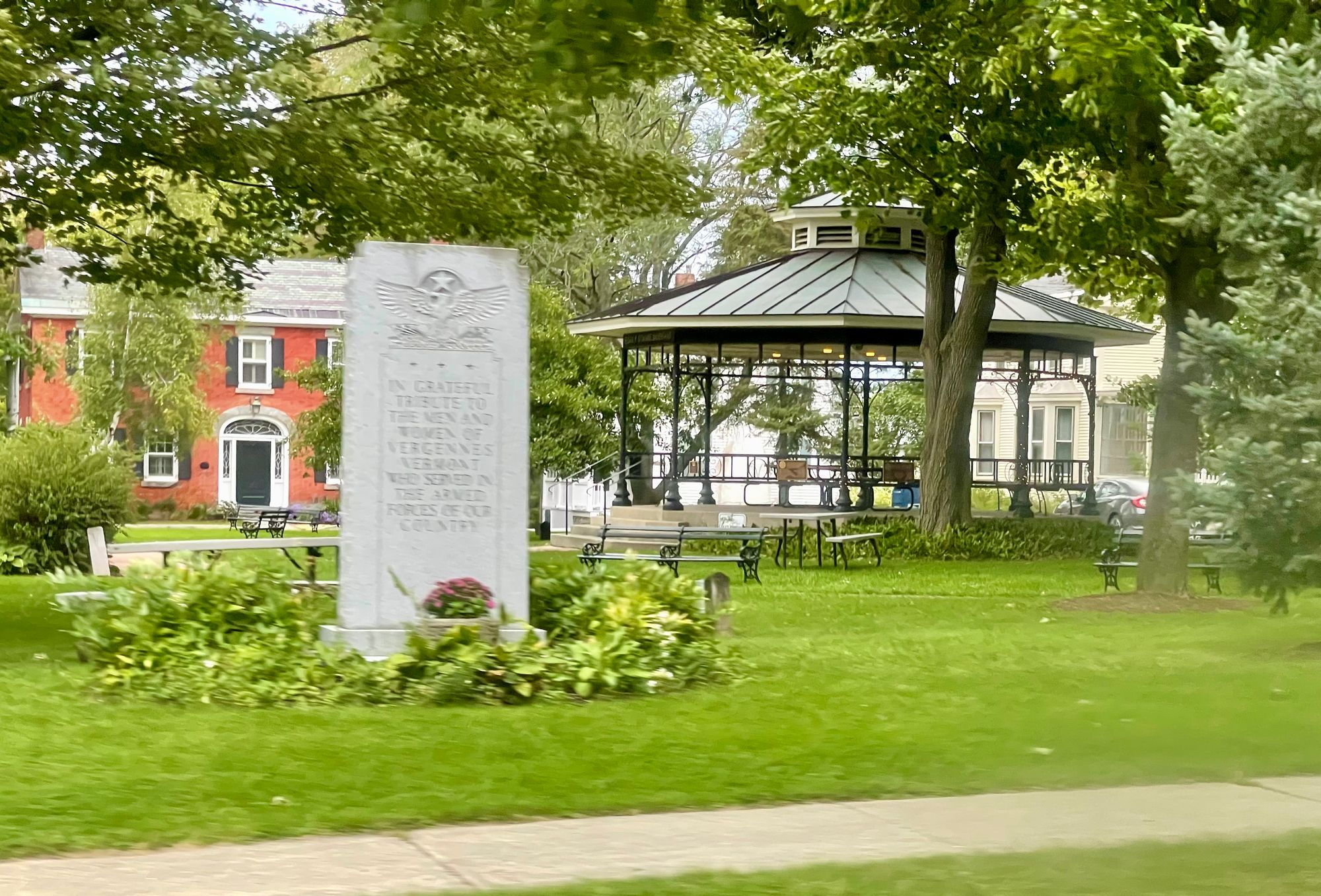
Most uses of the space are invisible from Main Street.
Inspiration for Vergennes

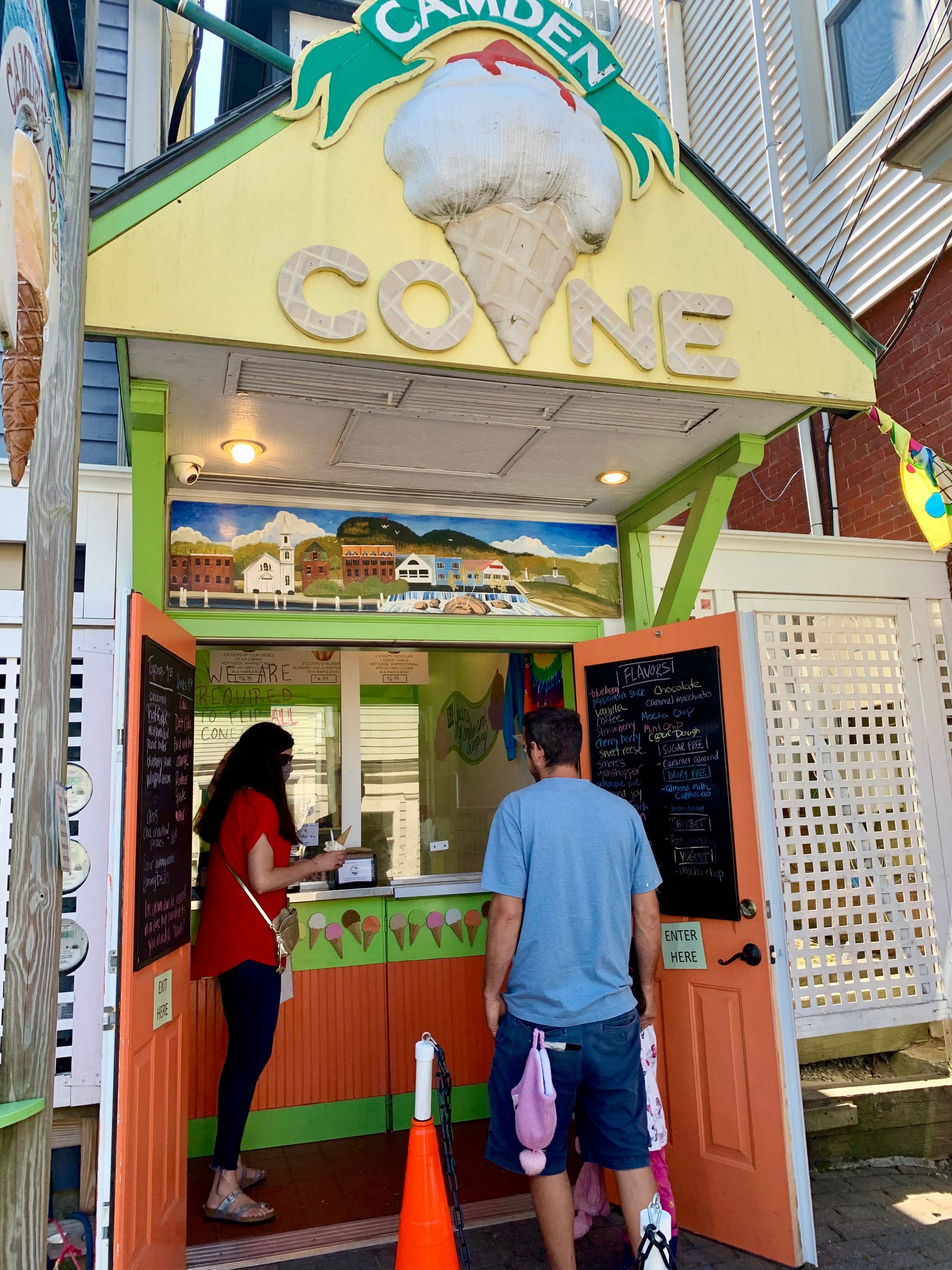
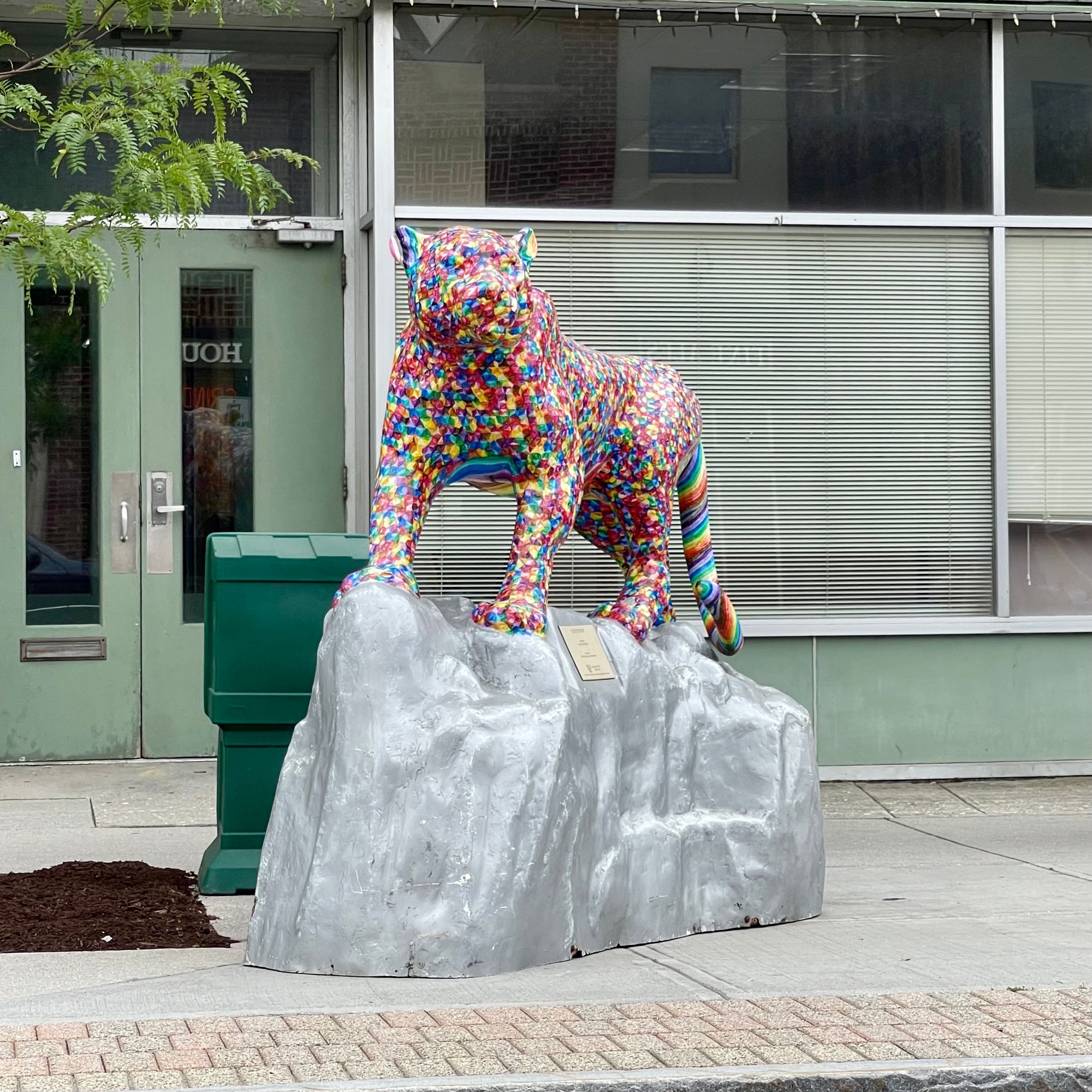
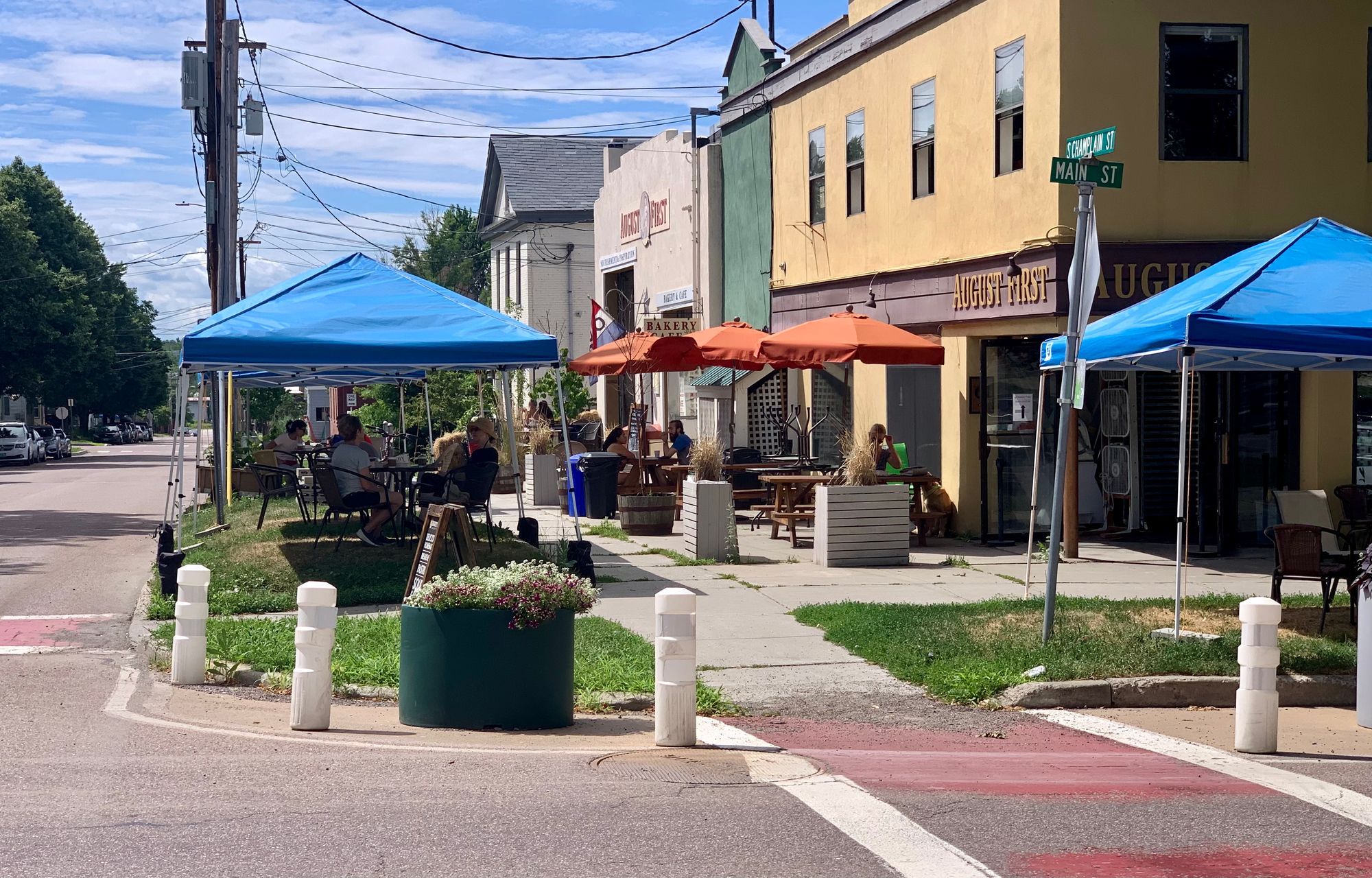
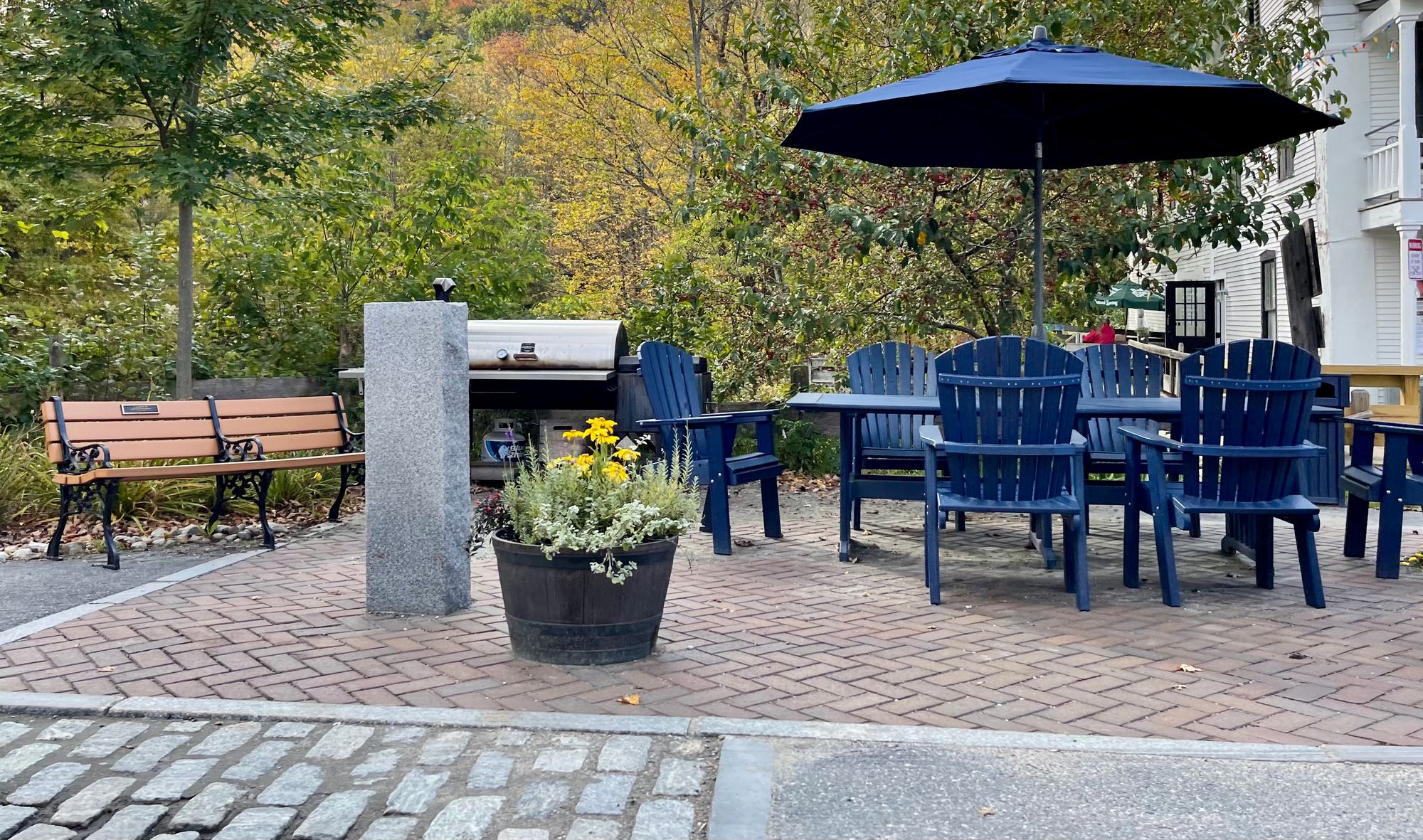
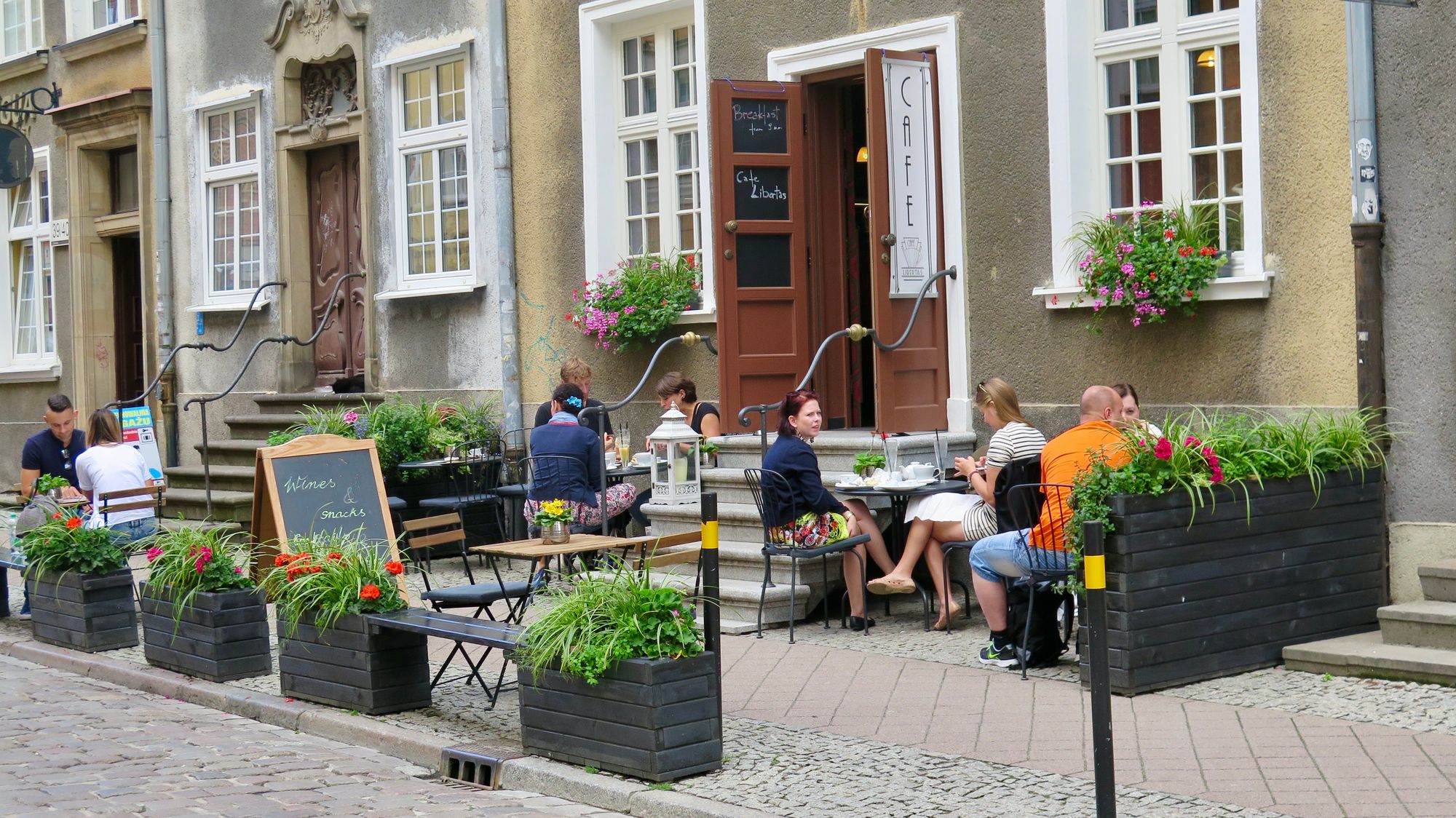
Springfield, Camden, Maine, Bennington, Burlington, Warren and Gdansk, Poland
Connect to the Waterfalls near Vergennes
While the nearby waterfalls may seem quite far out of town, it is mainly because of local road design and an unfortunate lack of sidewalks in the downtown. This could easily be remedied with a sidewalk, some amenities, and a few adjustments to the buildings as you walk to the Falls. Together, these ideas would give the downtown a sense that it is much bigger. In fact, it might give a reason for existing building structures to become destinations, as is the case for similar buildings next to the water in nearby Middlebury and Woodstock, Vermont.
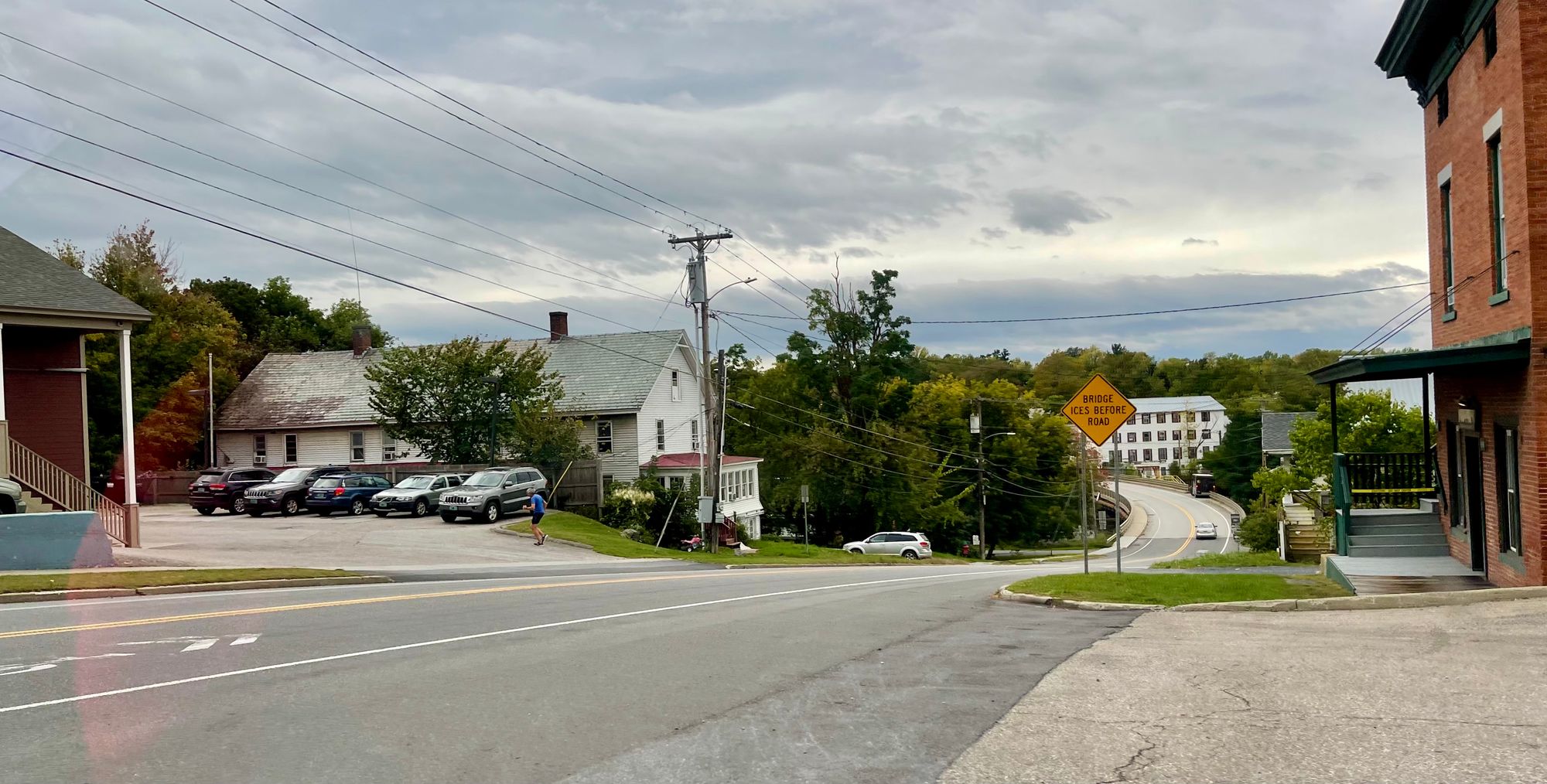
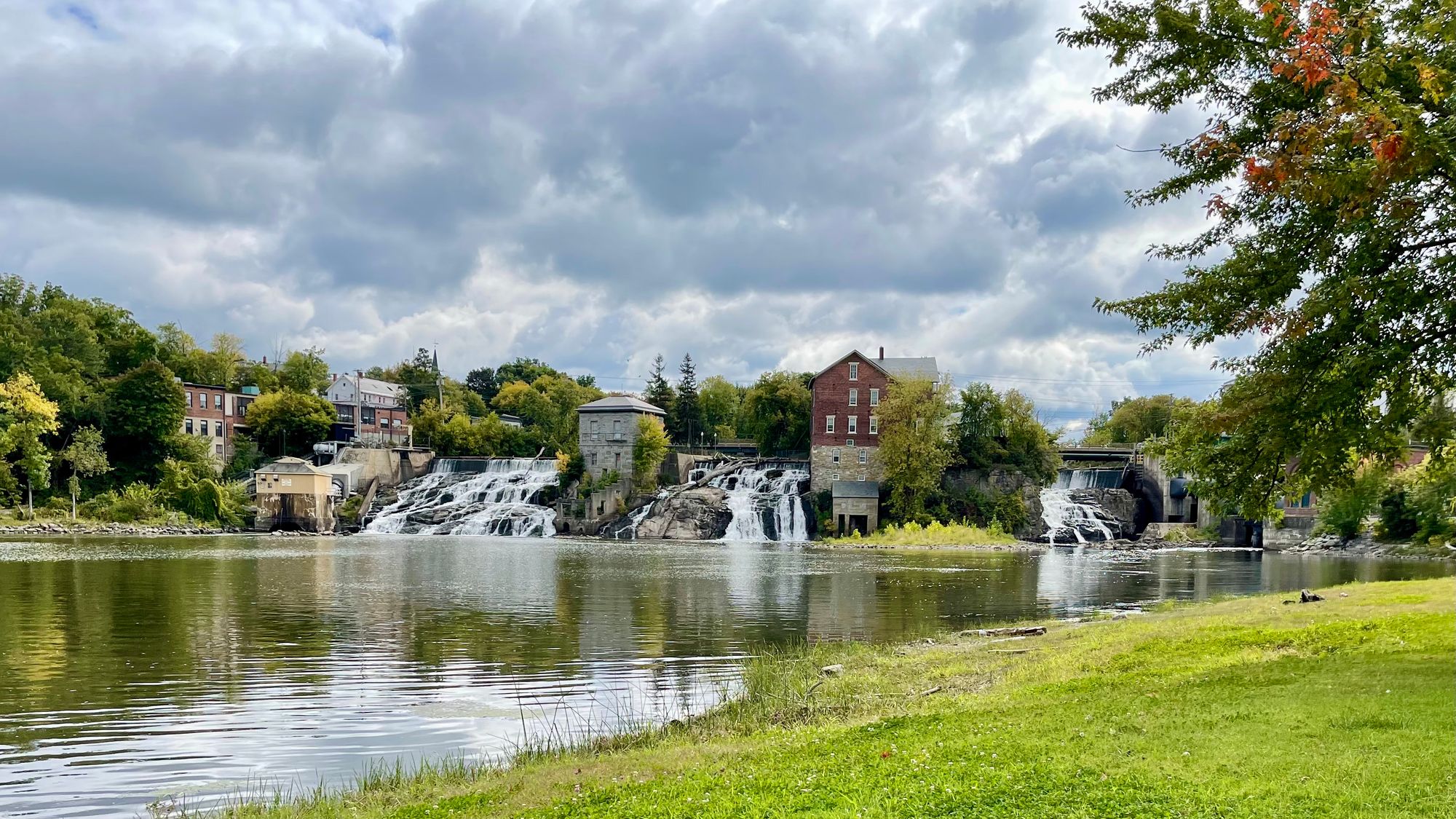
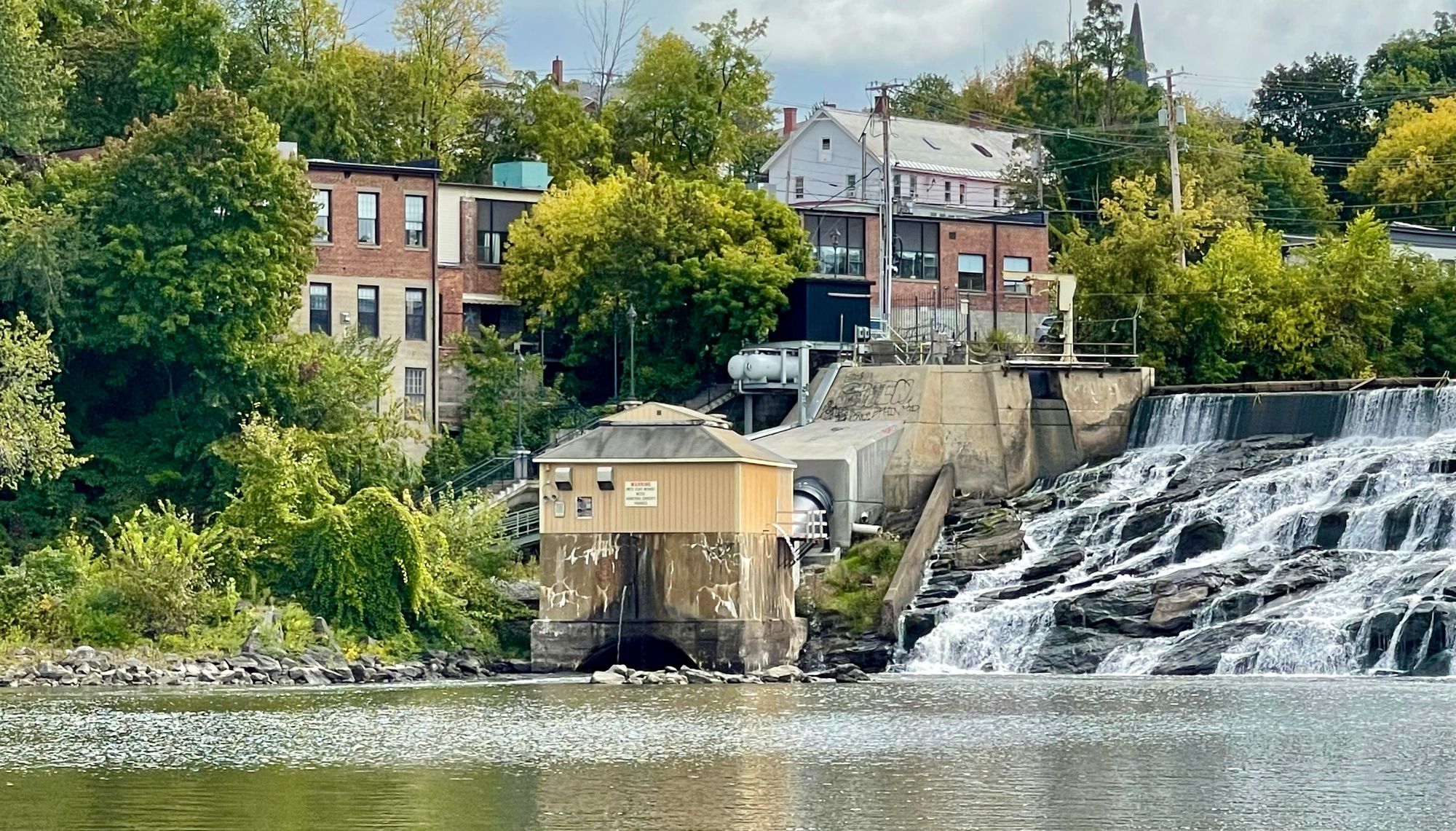
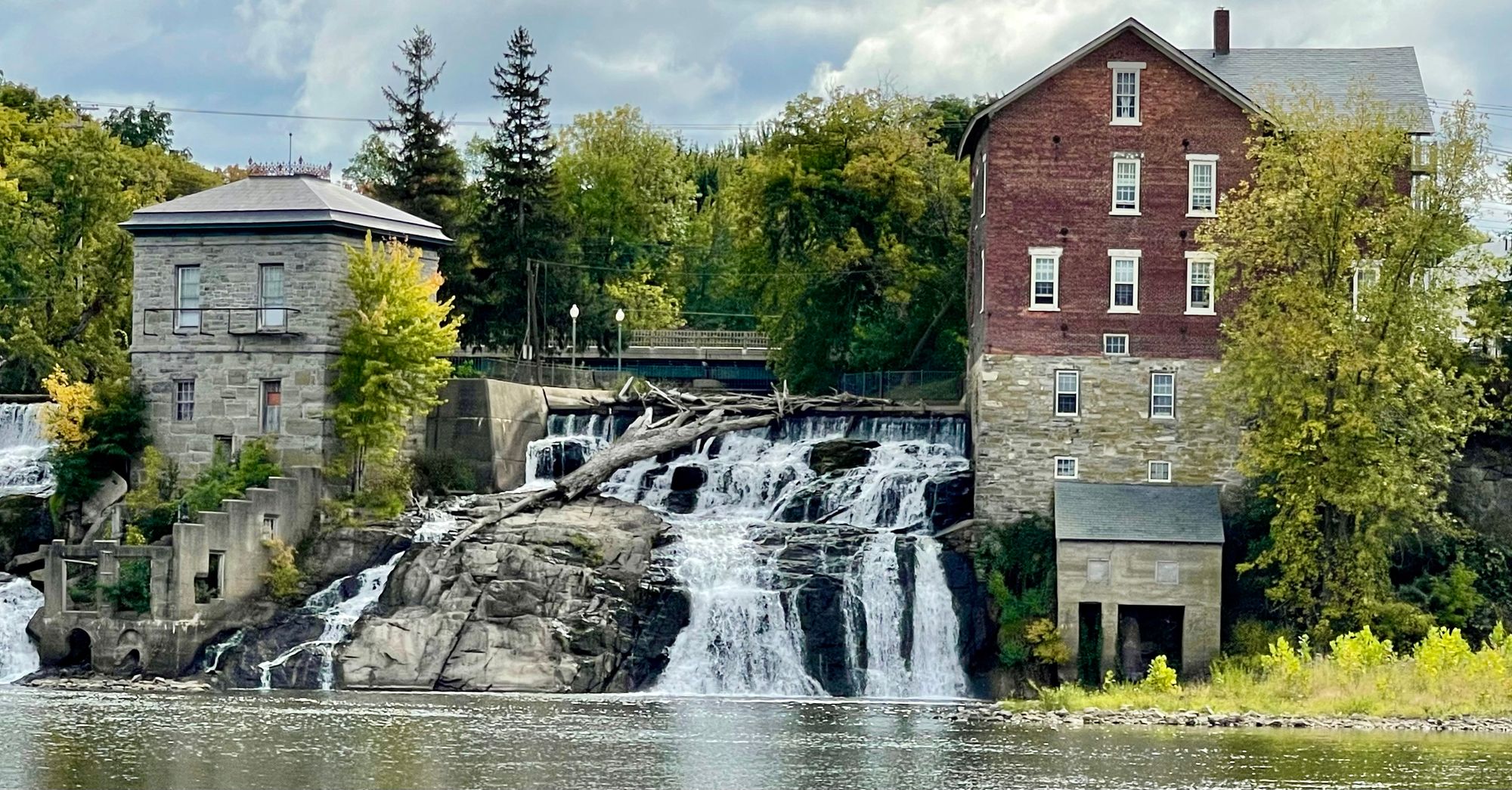
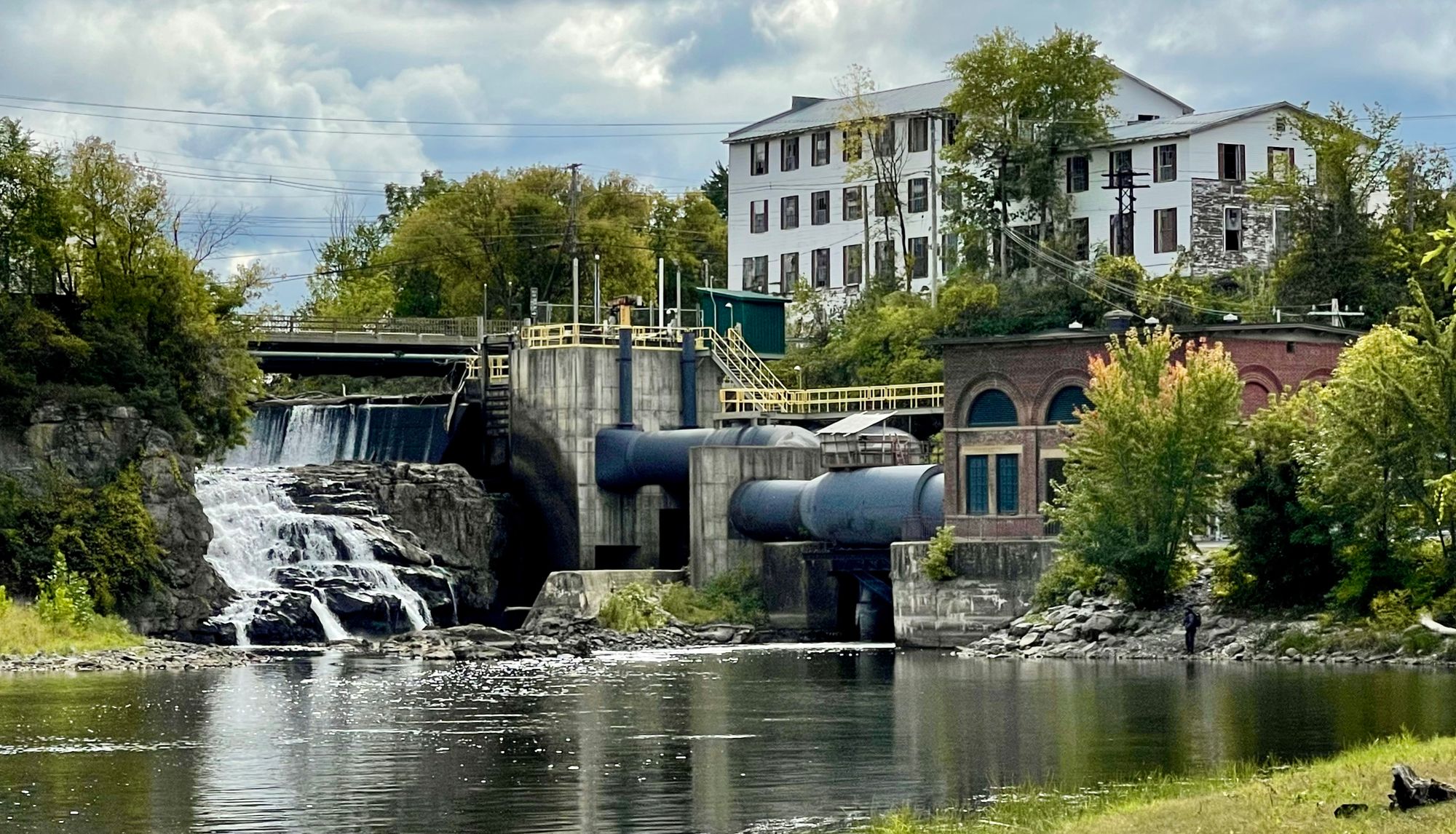
These histooric factory buildings based on power from the Falls could become incubator centers for small businesses and a separate destination similar to Middlebury where they are significant destinations.
Montpelier
Montpelier is a popular draw for people from around the region and even around the world because of its historic Capital district and busy downtown — in no small part because it evokes a historic feeling of what it was like more than 75 years ago. But more needs to be done to its public spaces. The good news: It won't be hard. The "bones" are definitely there.
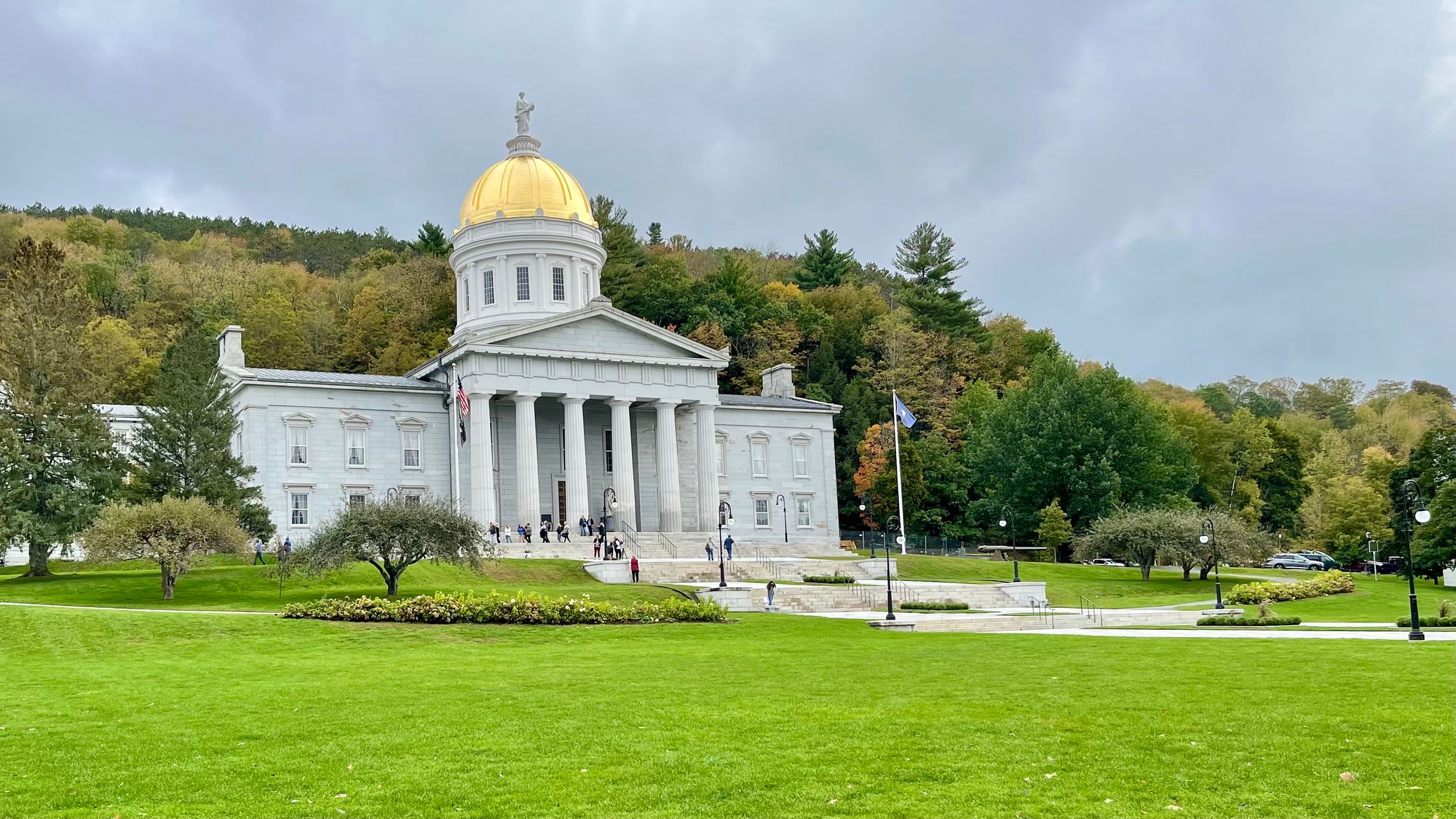
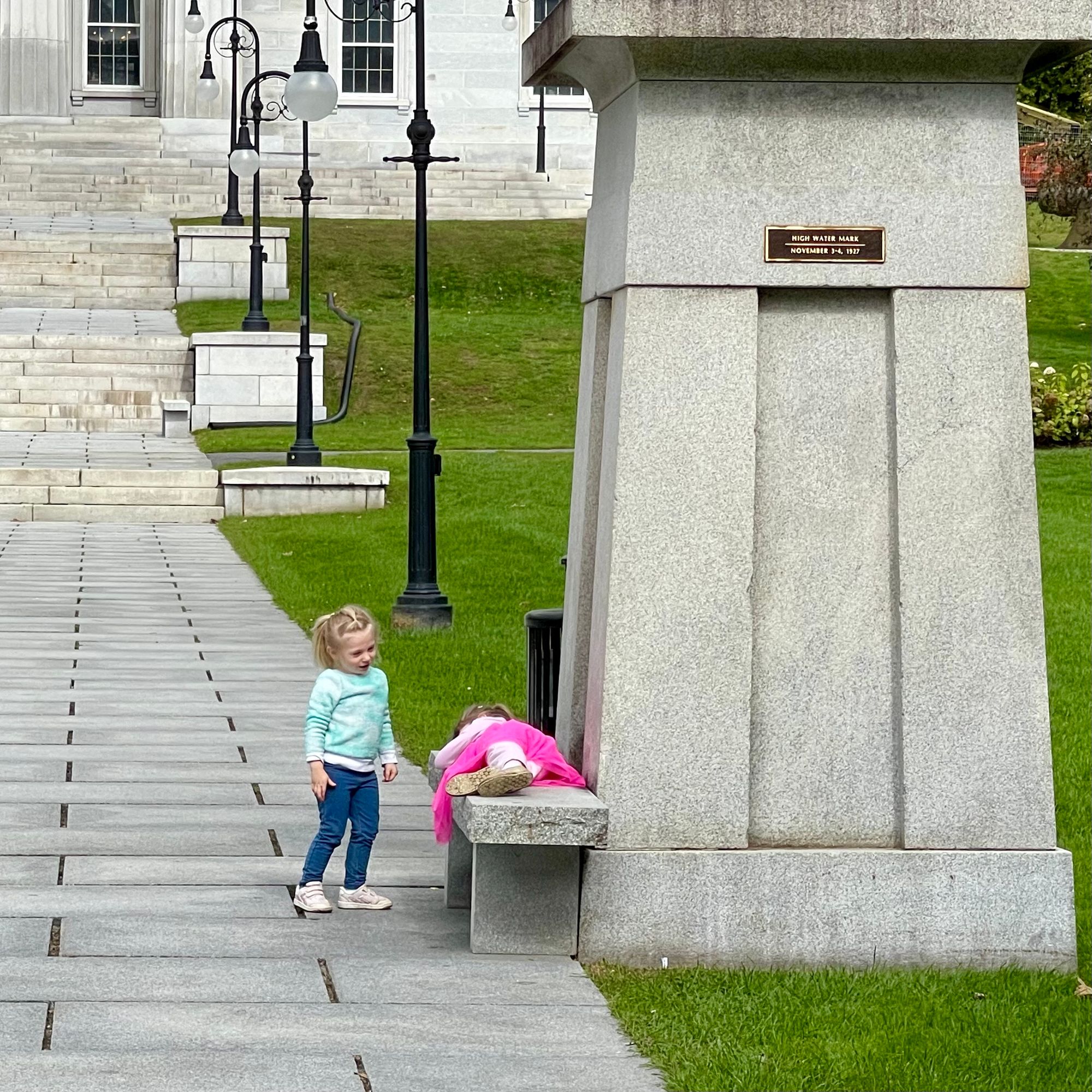
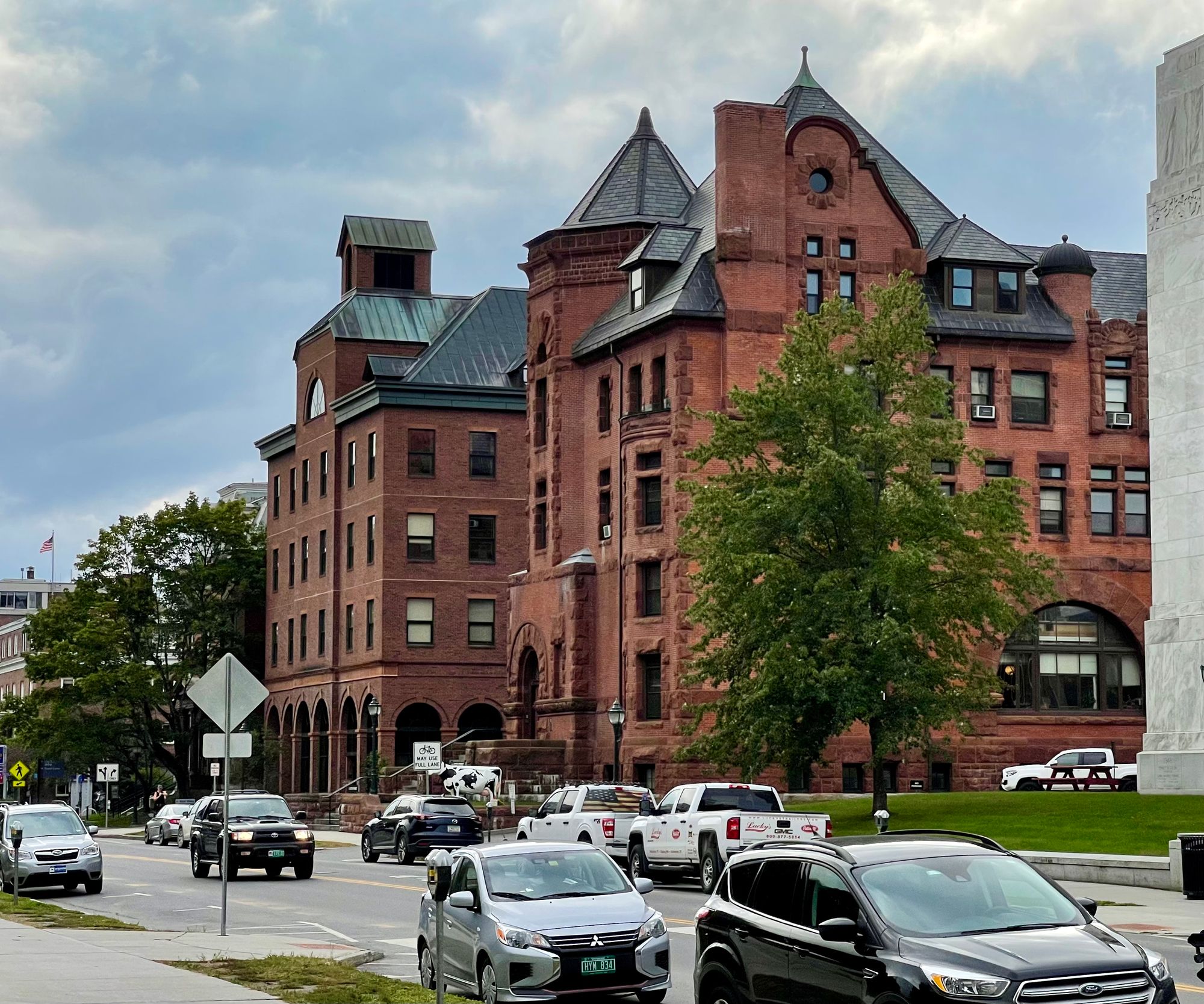
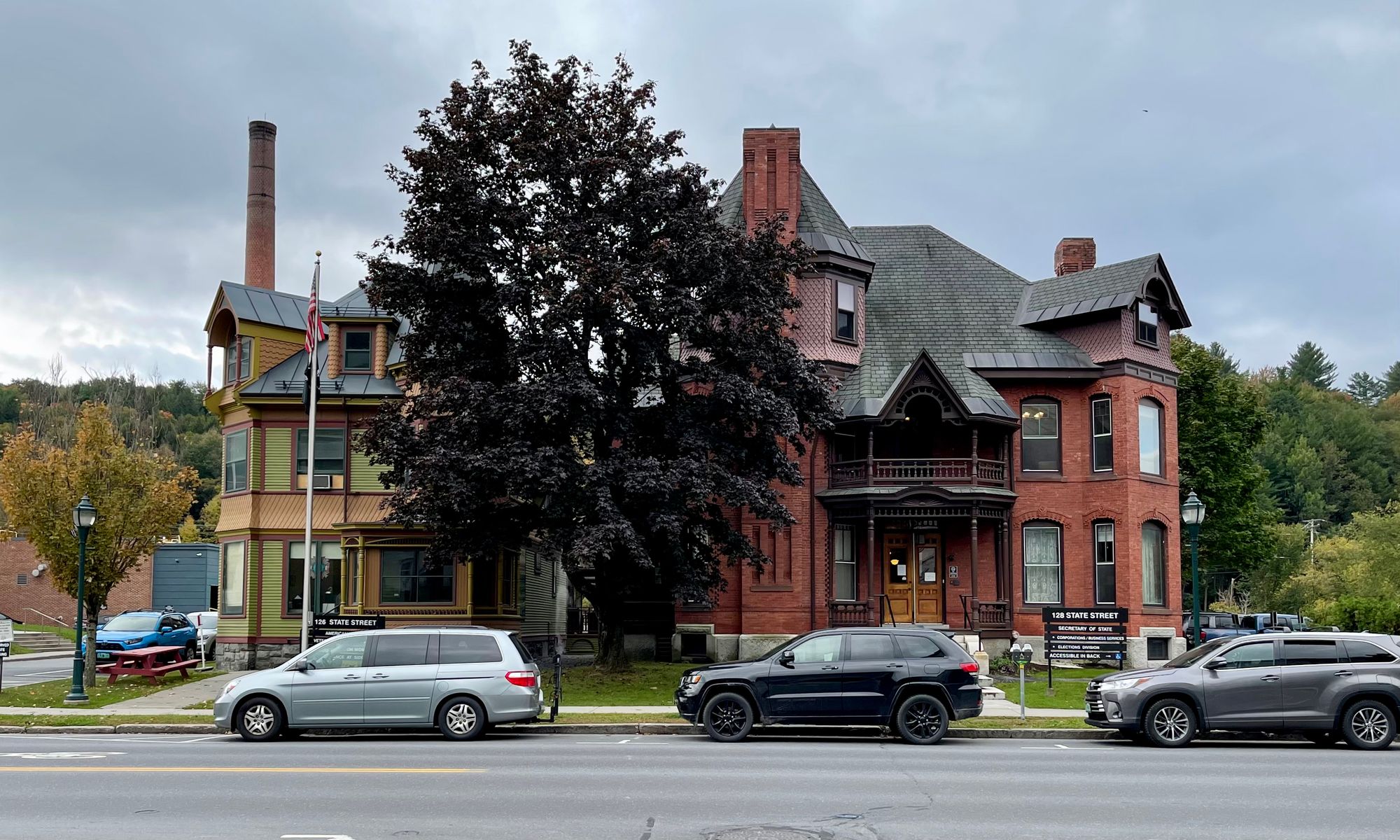
Main Street. Except for one property, the buildings are of historic character and still evoke the sense of place that Montpelier has had for easily a century. But, like other towns in Vermont, the roads have widened, and the sidewalks have been narrowed. Over time, traffic has replaced the more human feelings evoked in the past.
There is a quick and easy fix that involves a series of small interventions. Sidewalk extensions at the main intersection could easily give a feeling of being the heart of Montpelier. Narrowing the road right-of-way could create the sidewalk social and economic life the downtown commercial center of Montpelier needs. Also, the library, the church, and the Town Hall, further along, offer a group of major institutions that could play a significant role. These institutions could be engaged in activating this central space. Creating a "heart" on Main Street would have a significant ripple effect on the perception of Montpelier. Connecting both the Capital and the Downtown Main Street would create the perception that they are all together as part of a dynamic state capital.
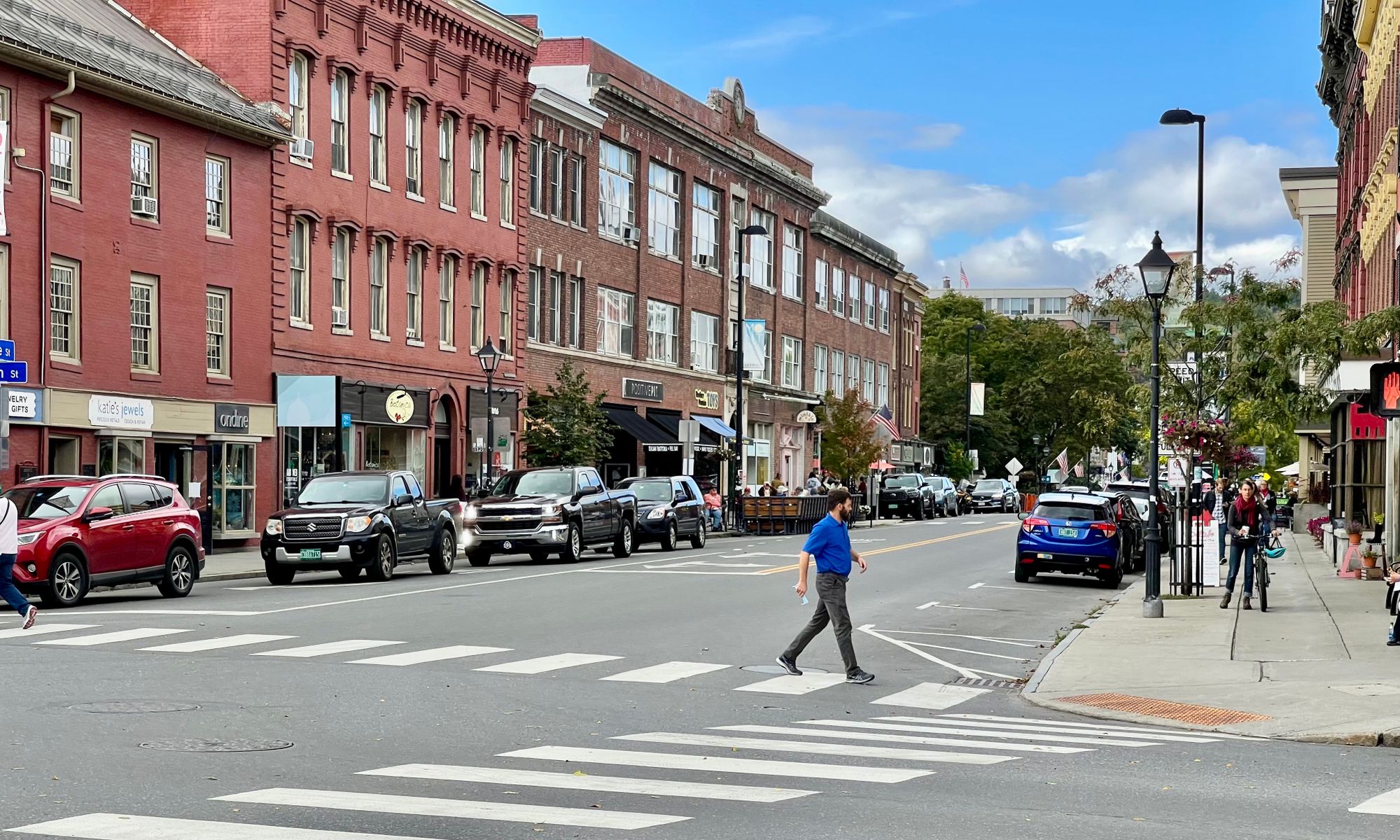
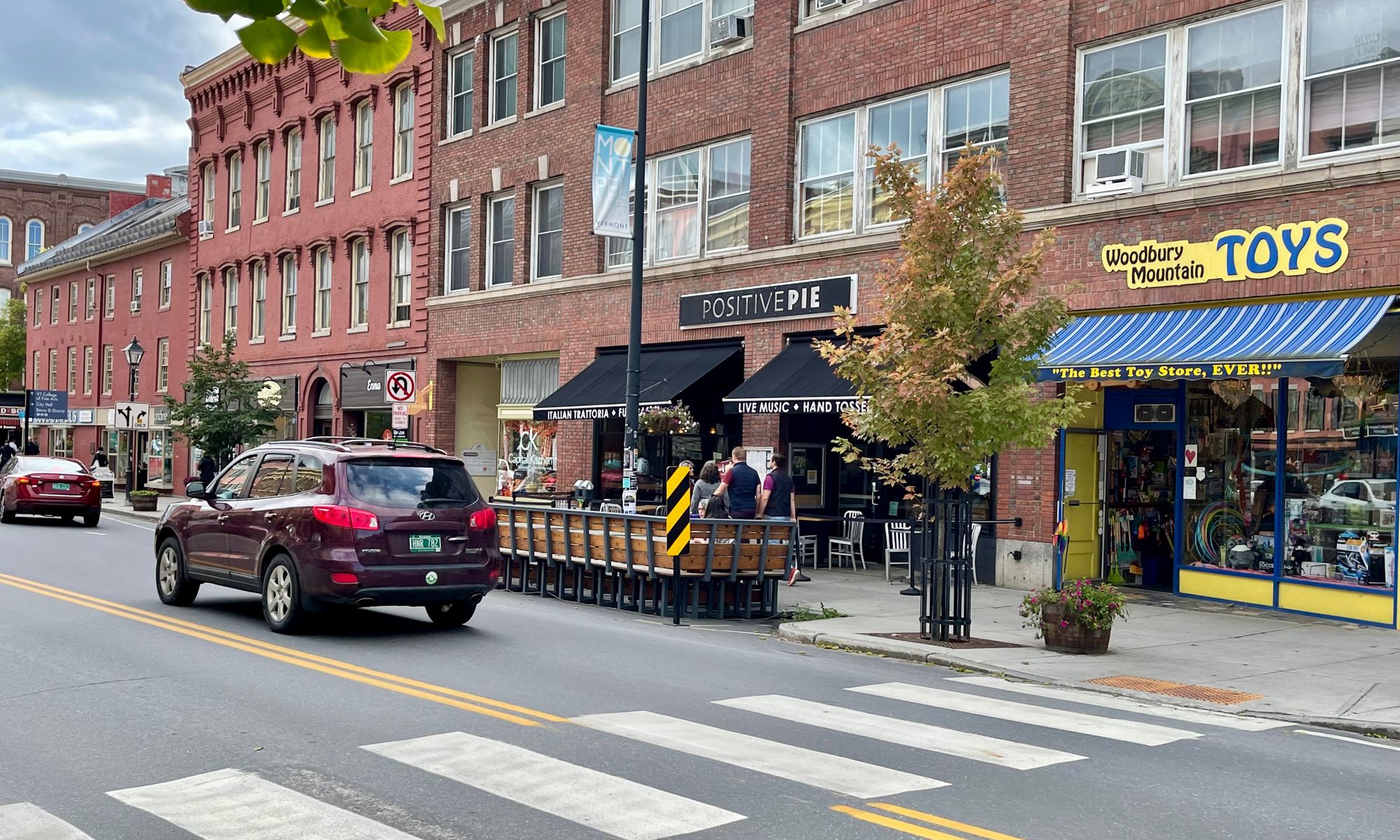
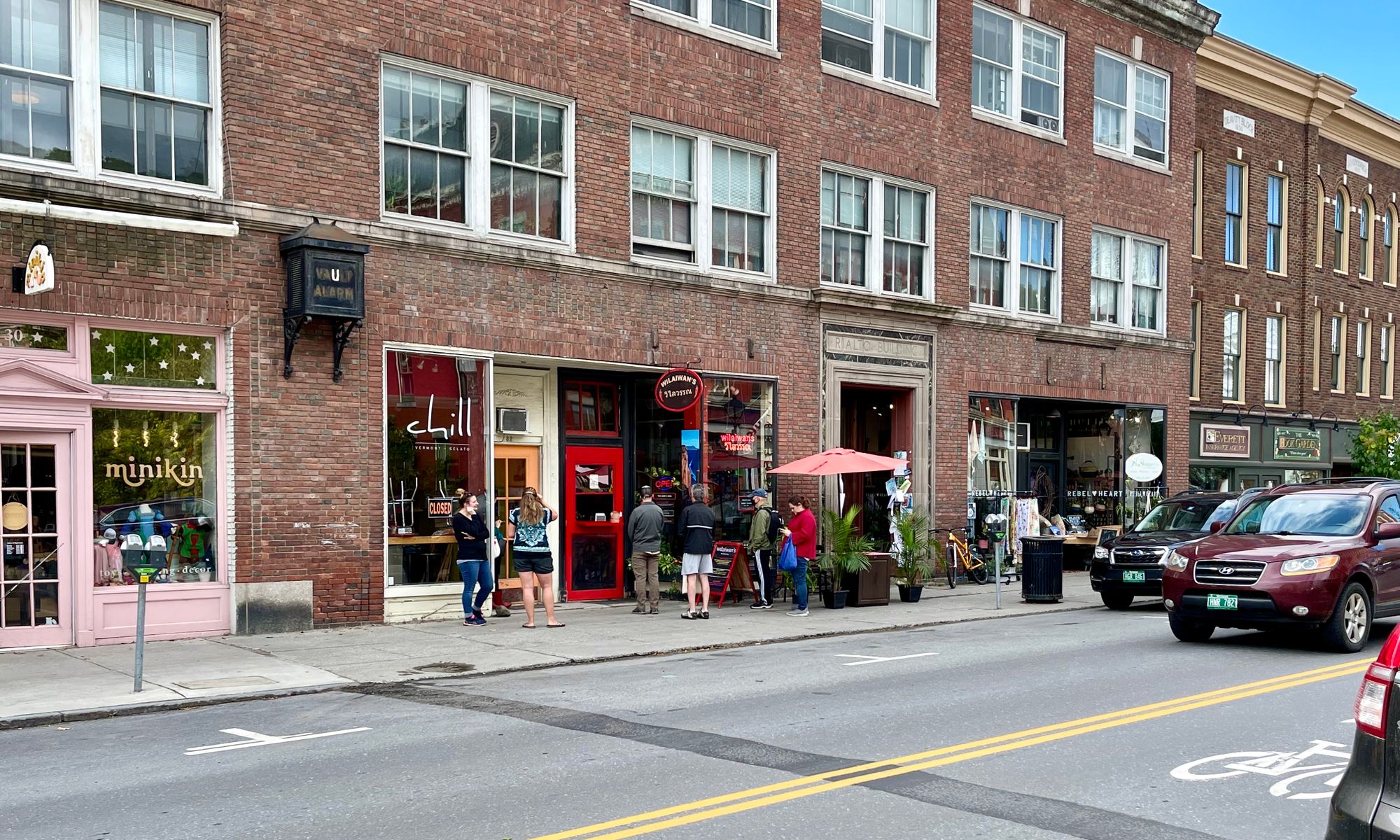
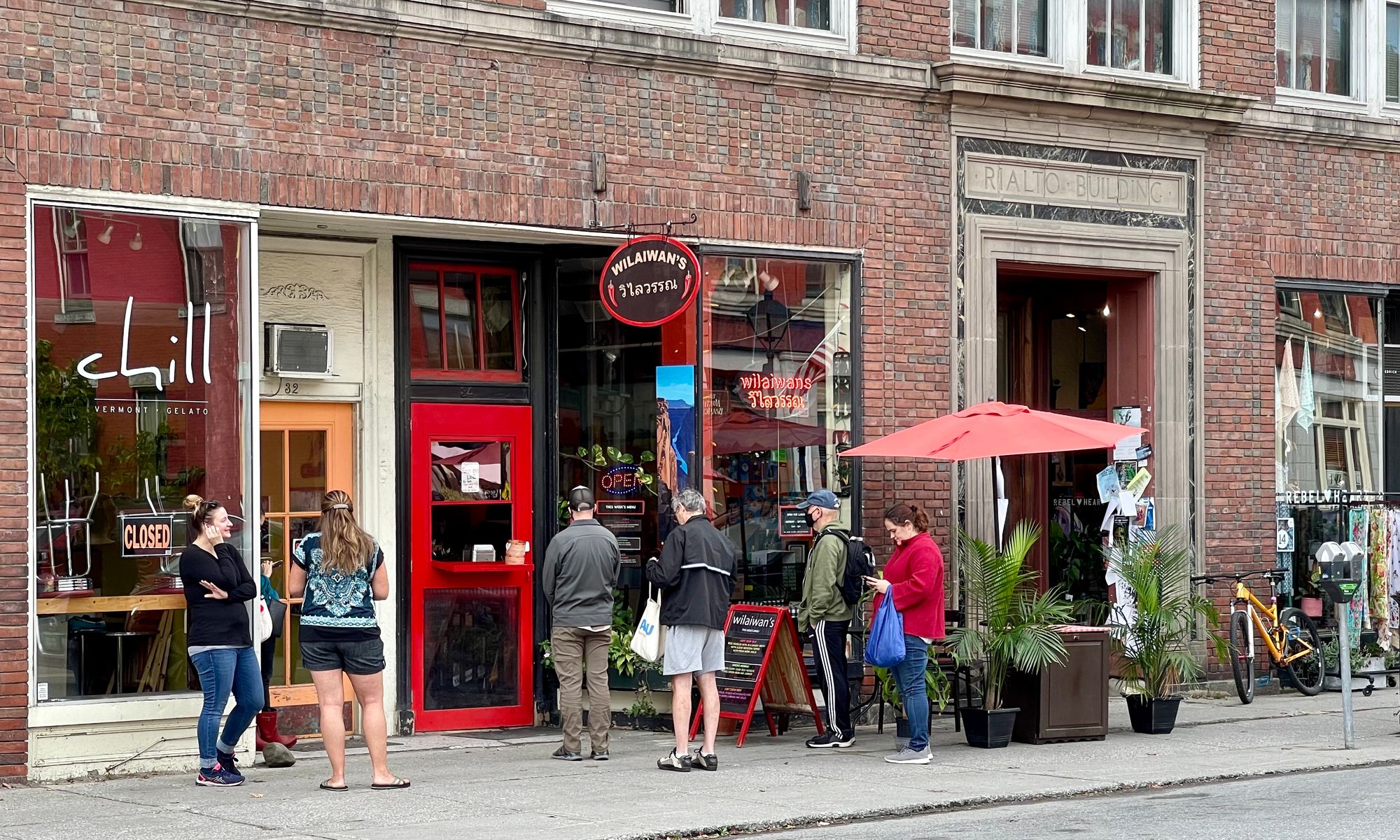
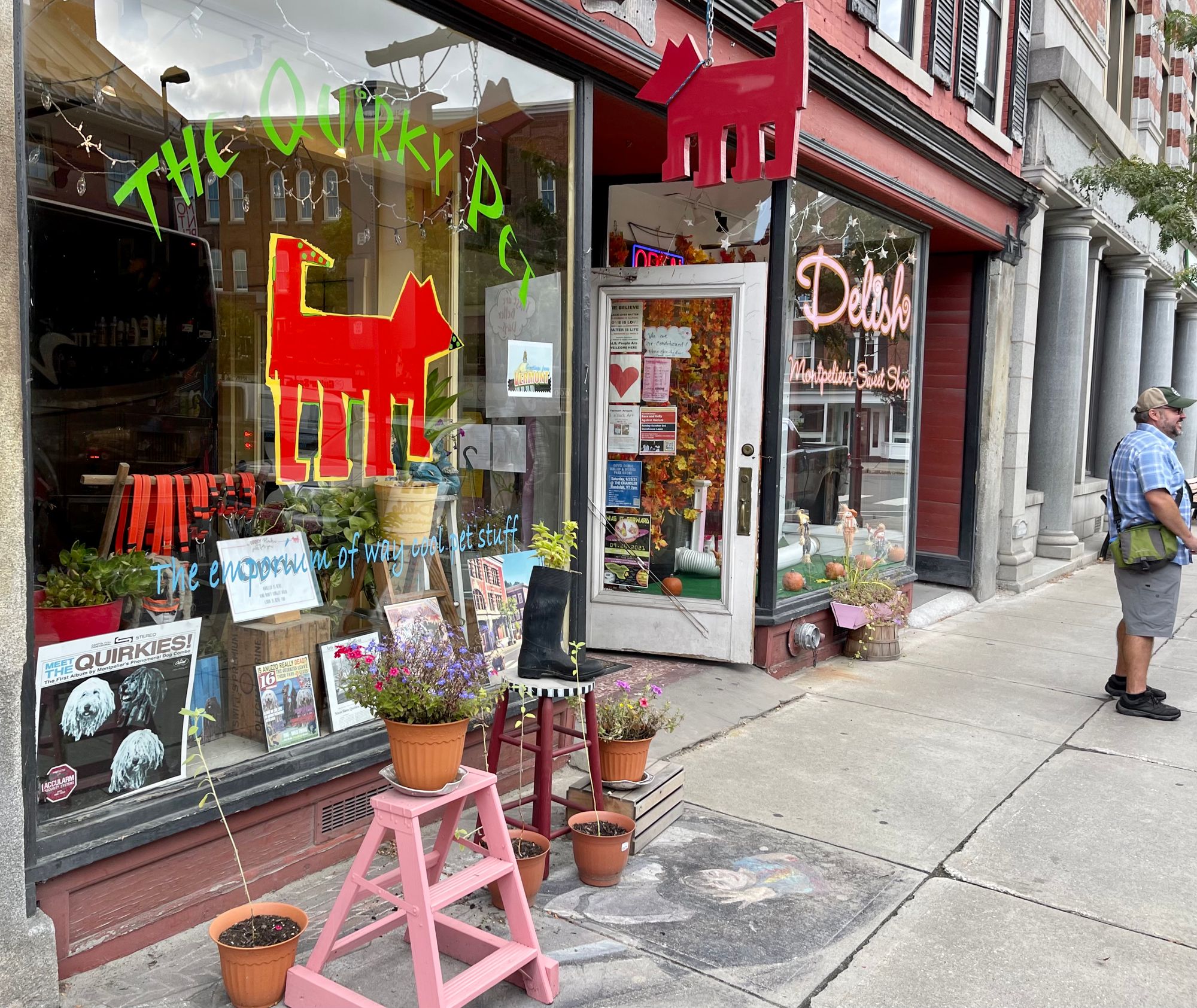
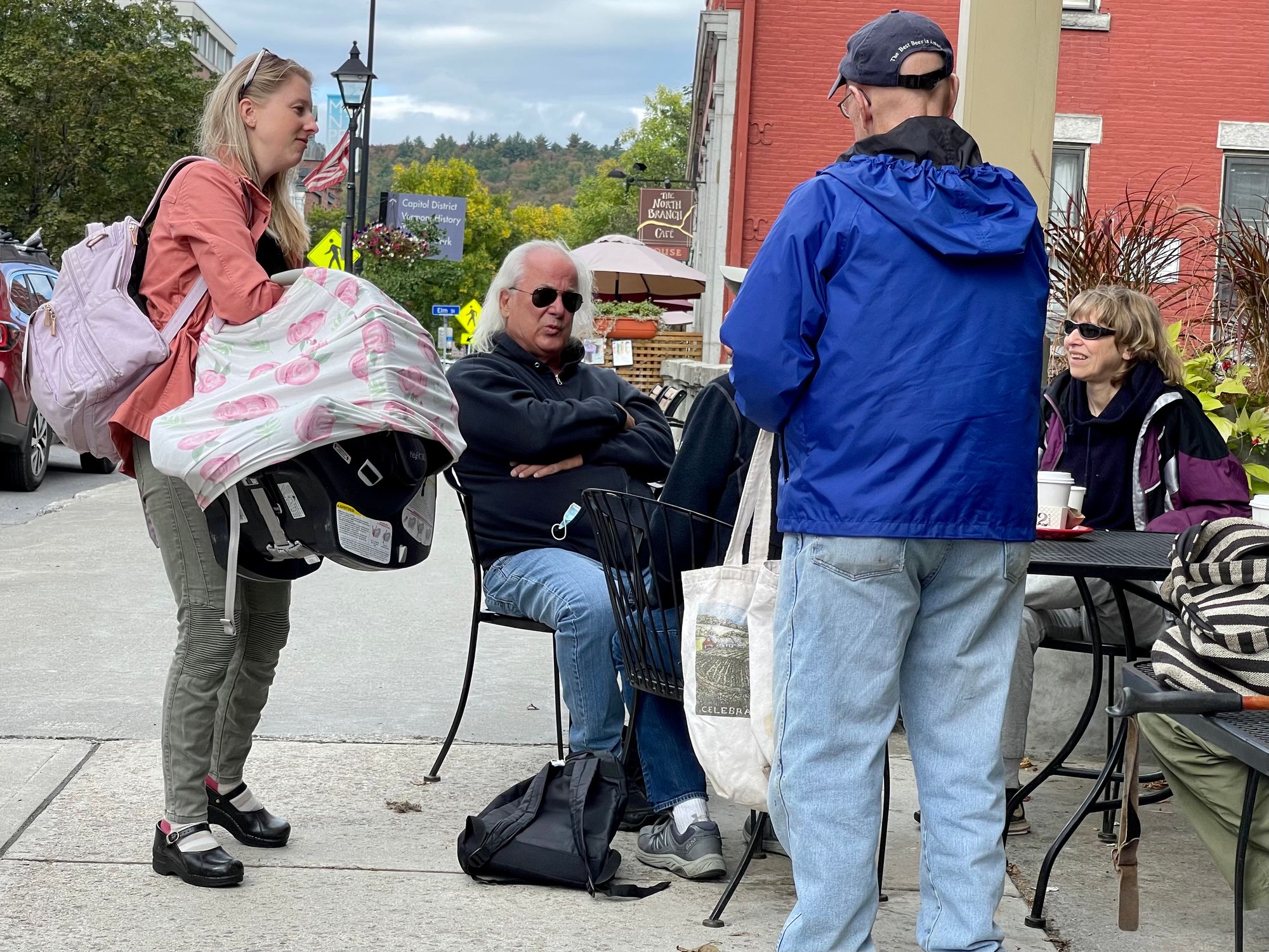
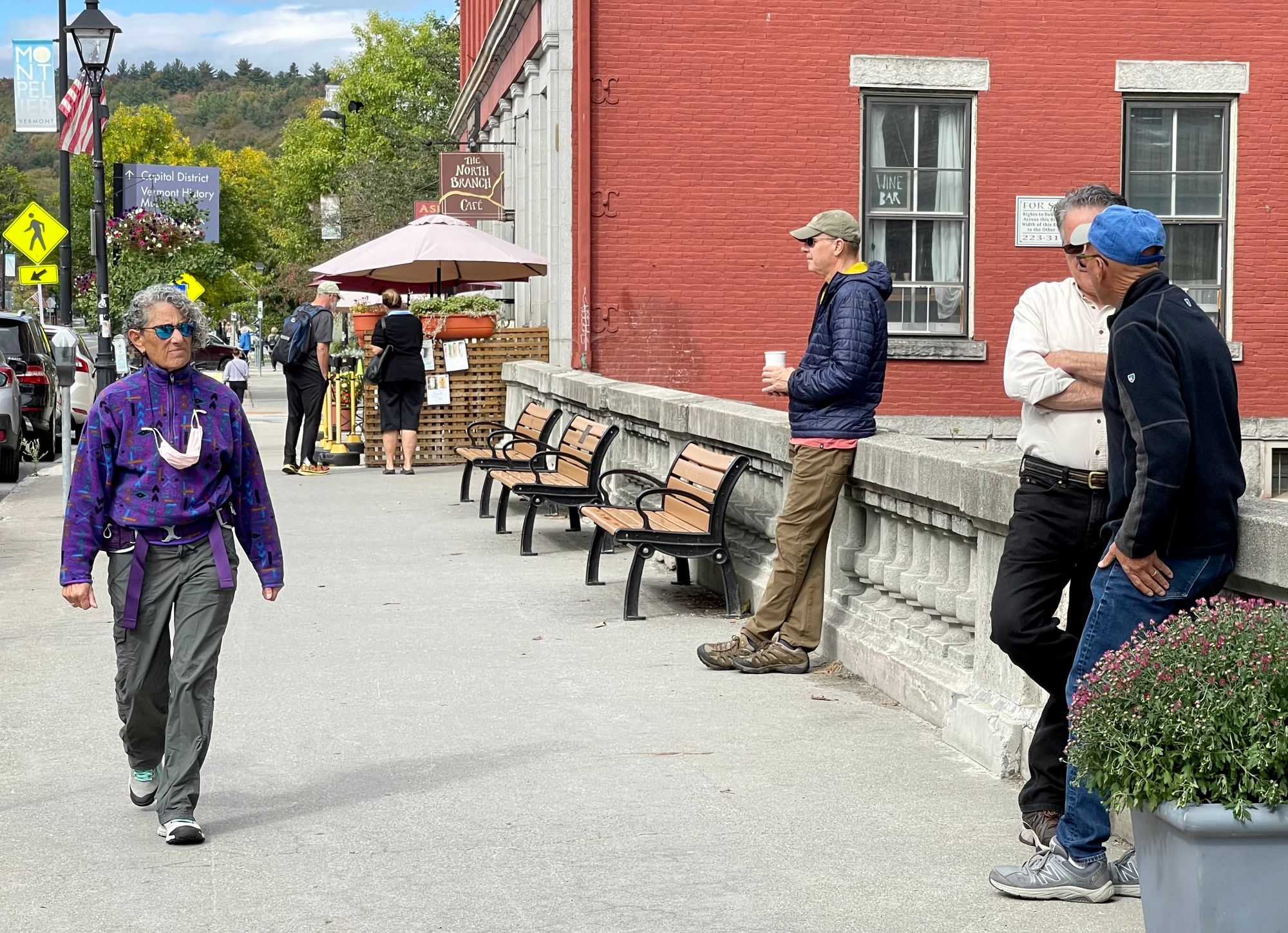
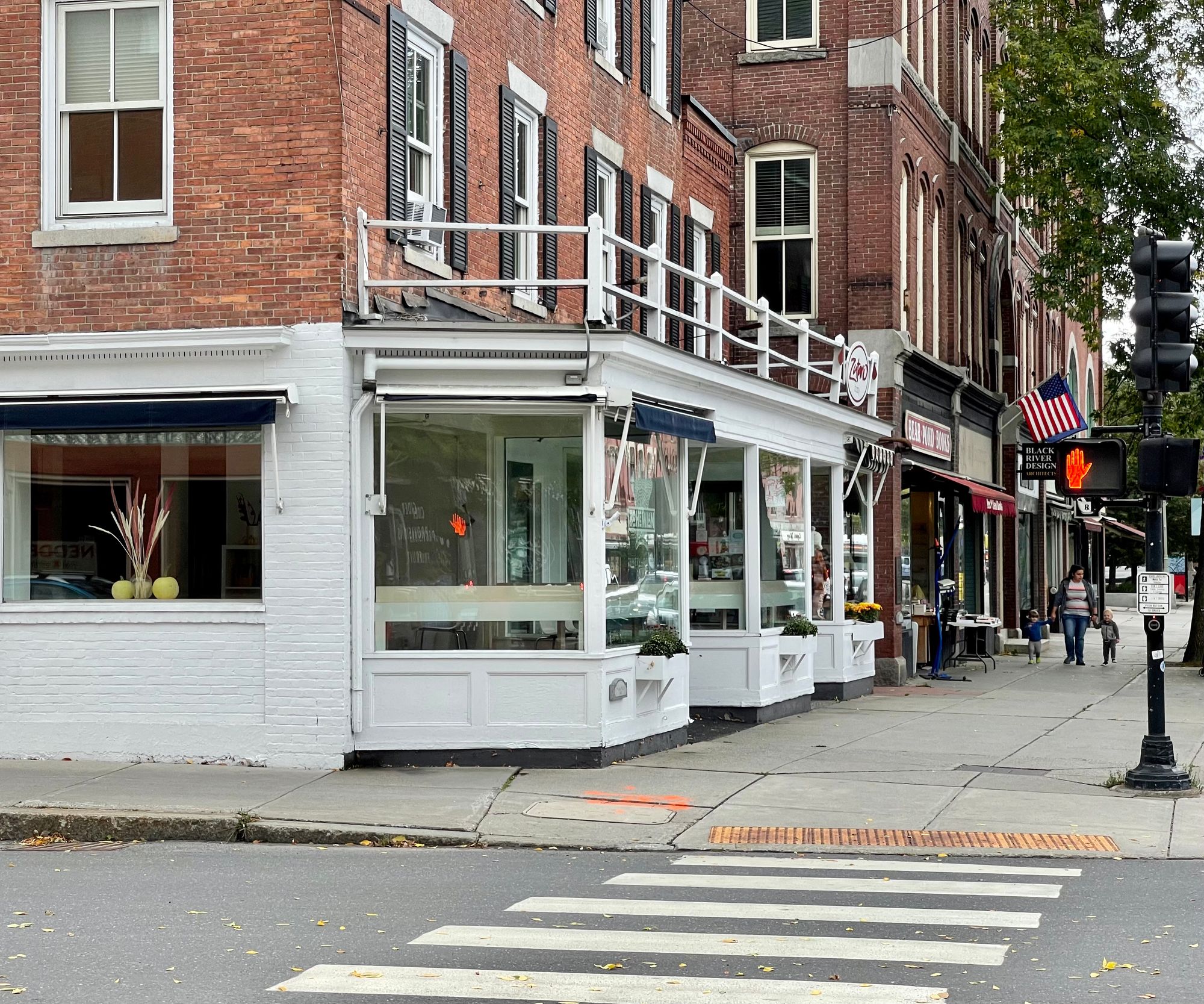
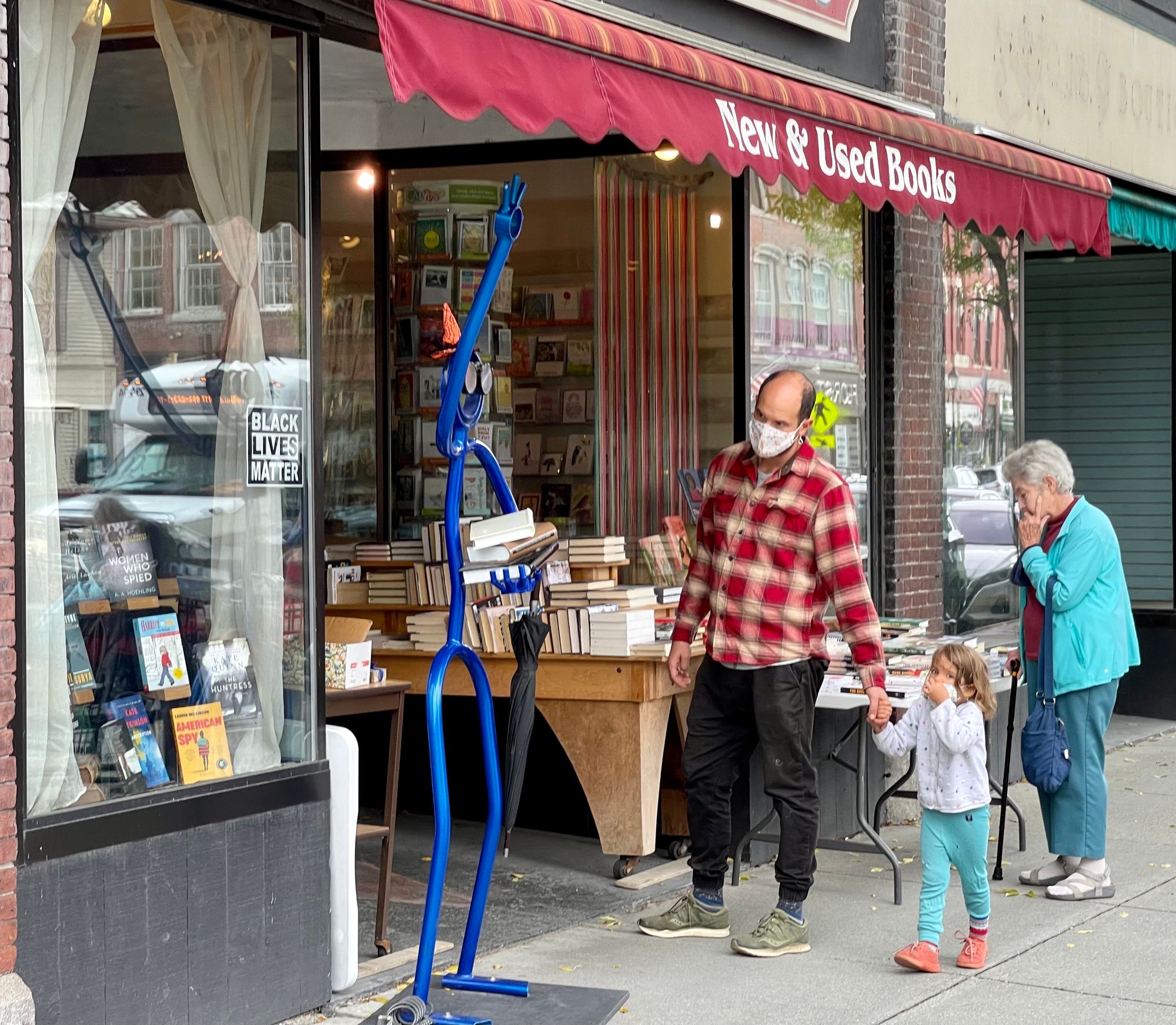
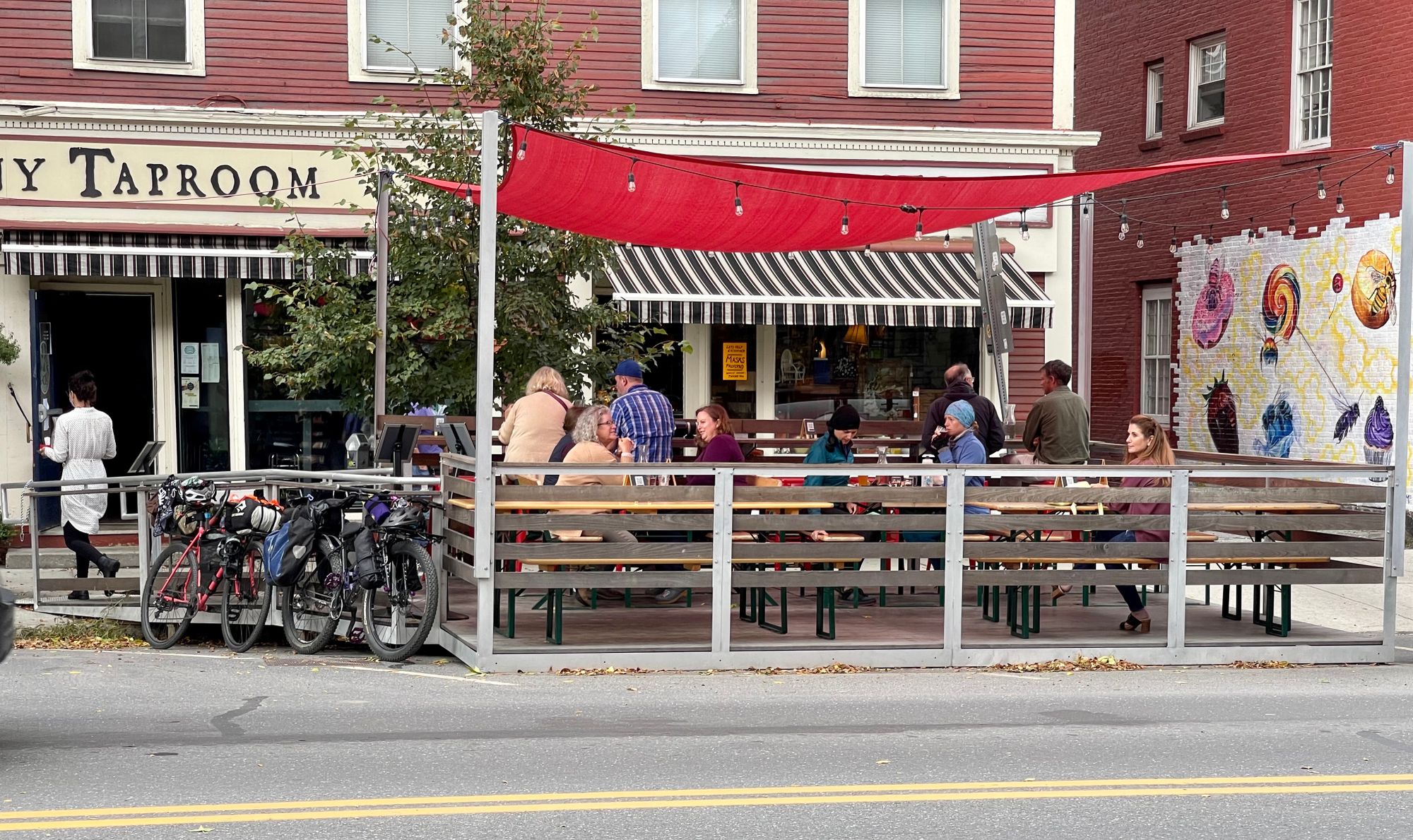
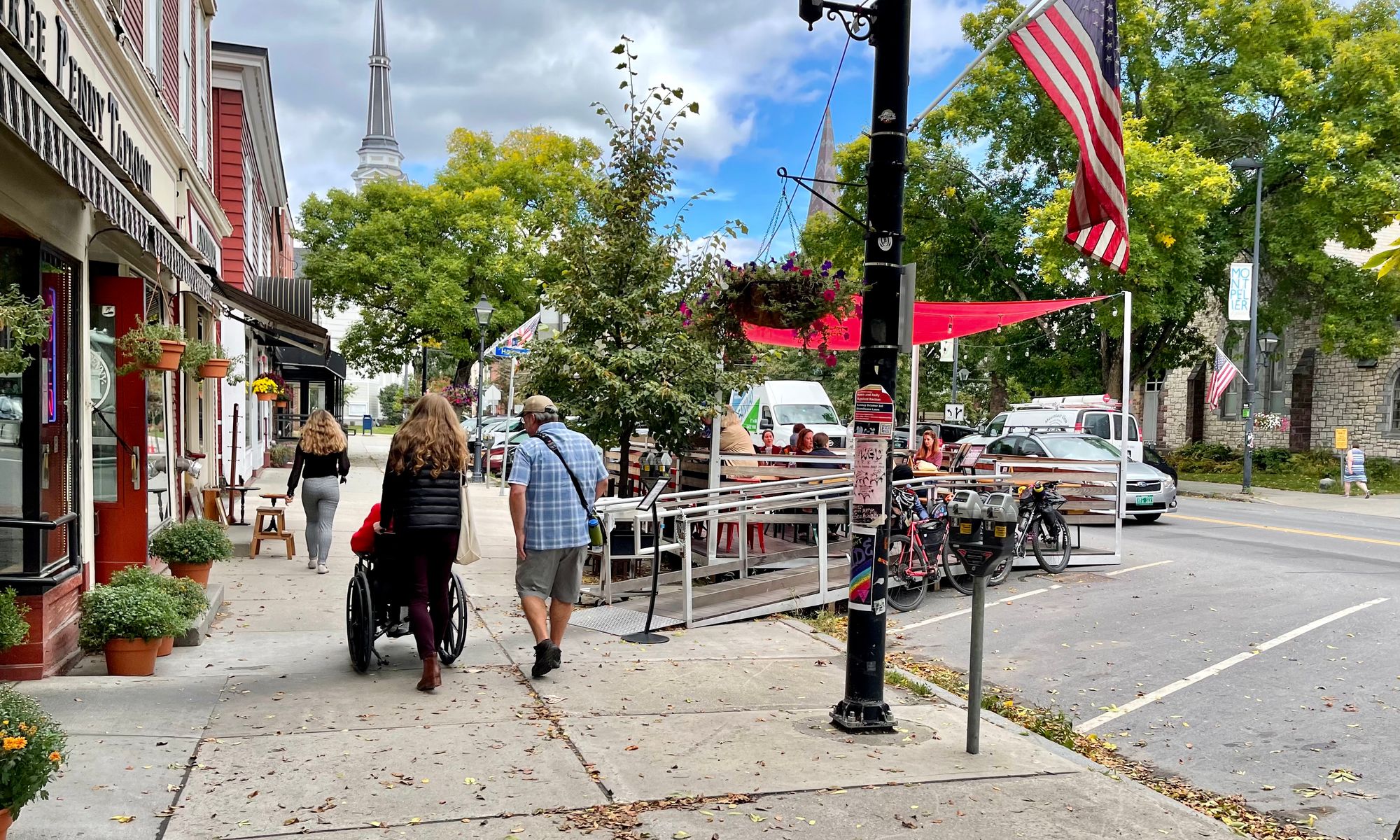
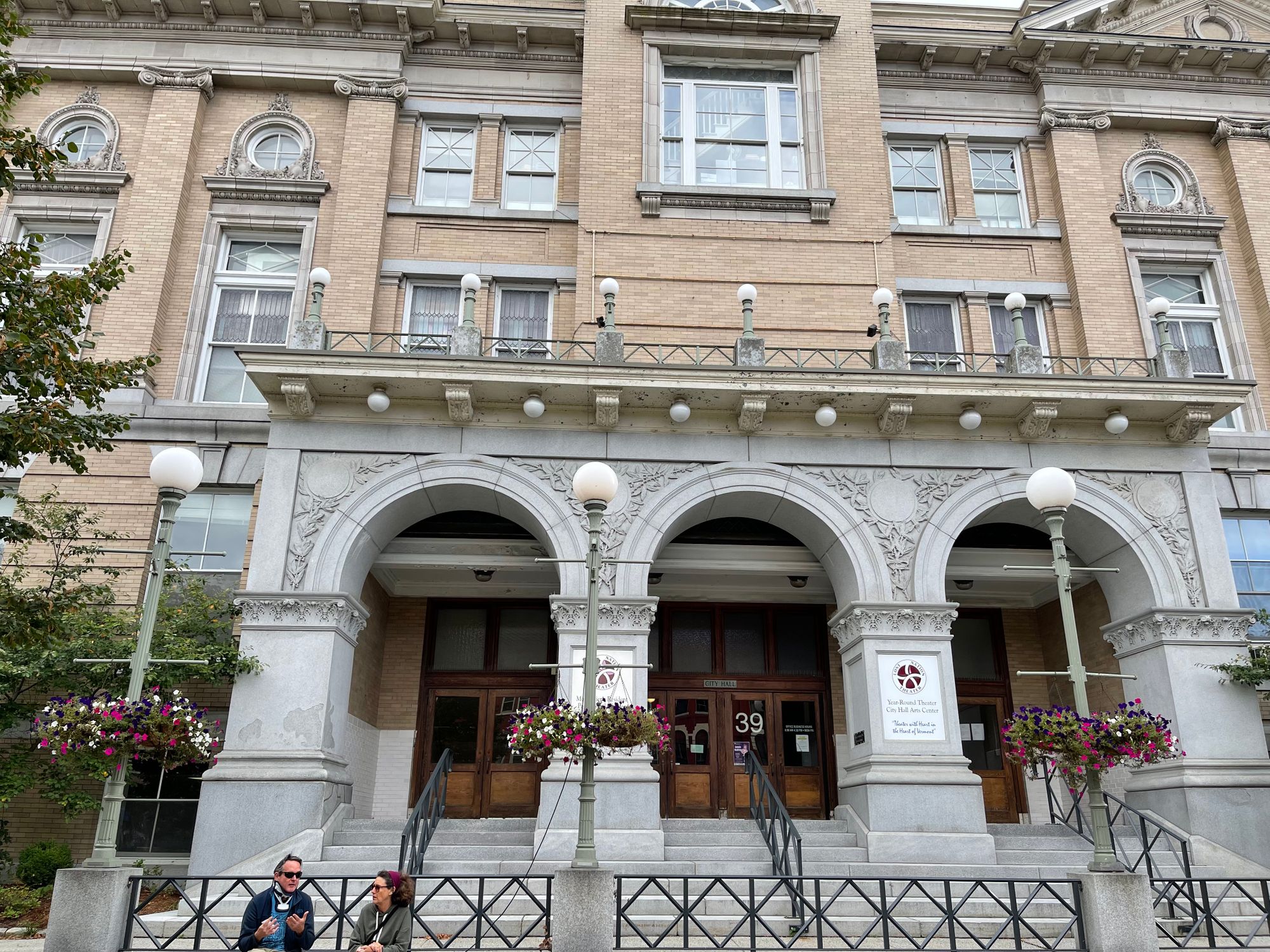
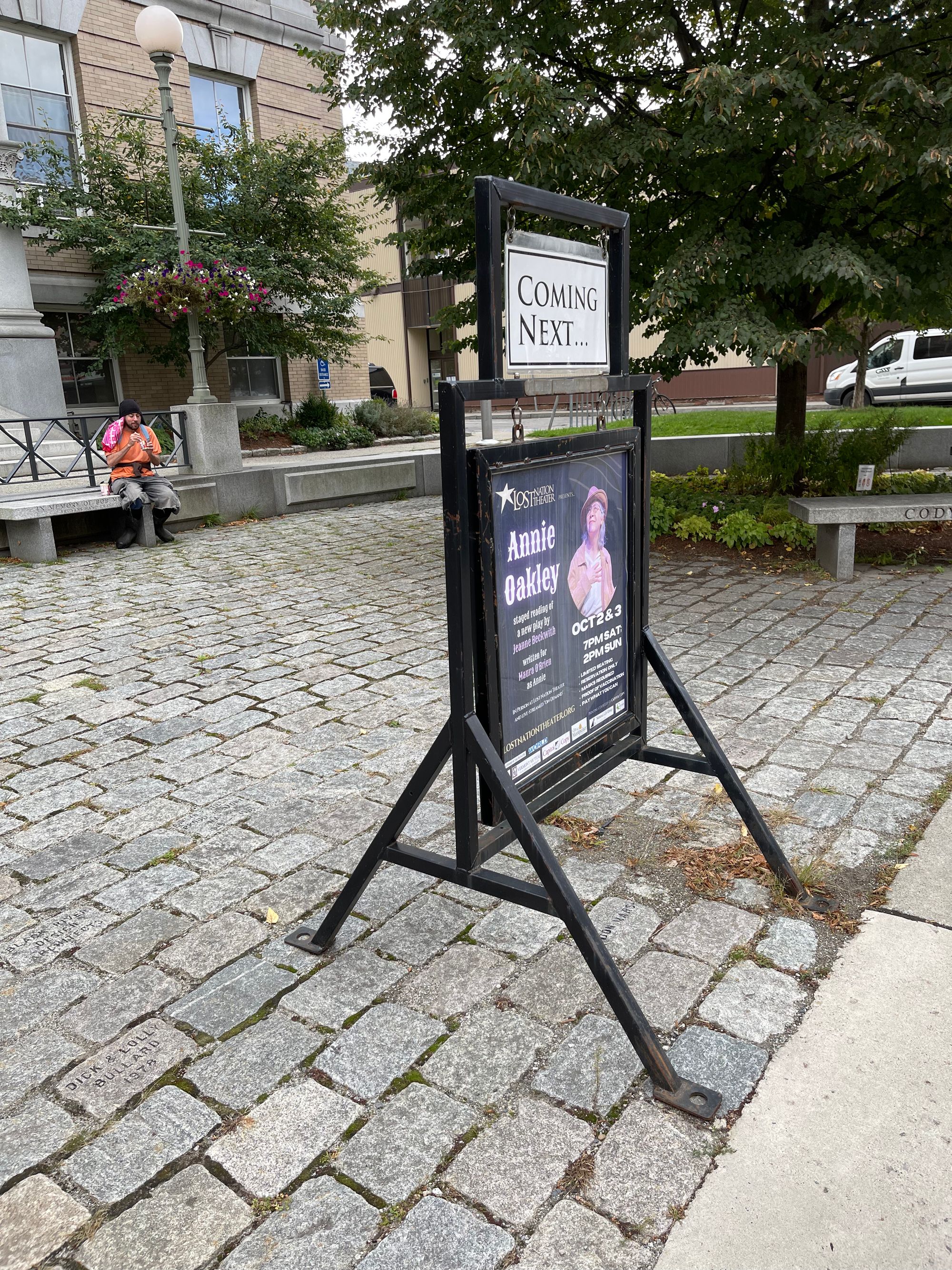
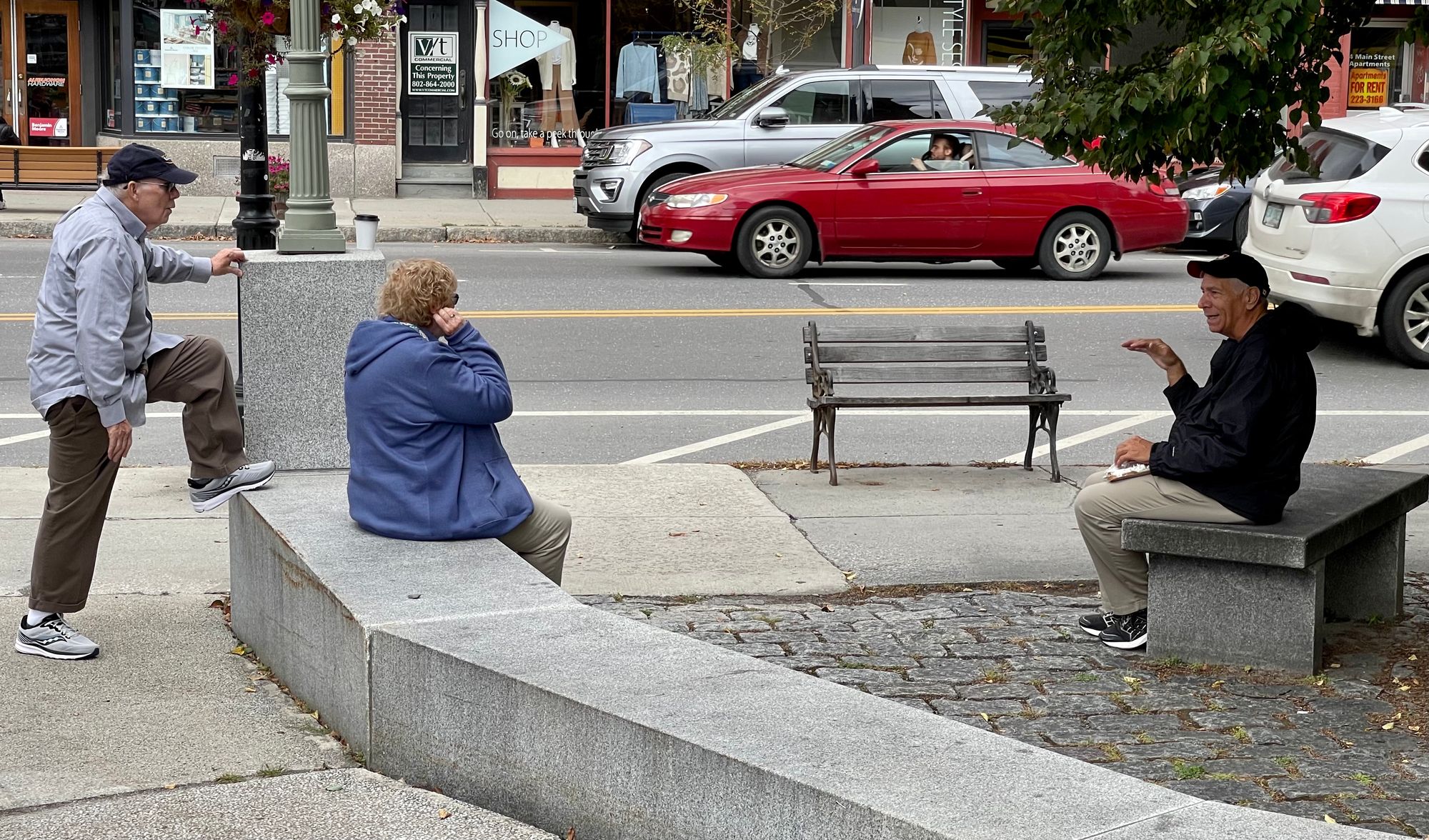
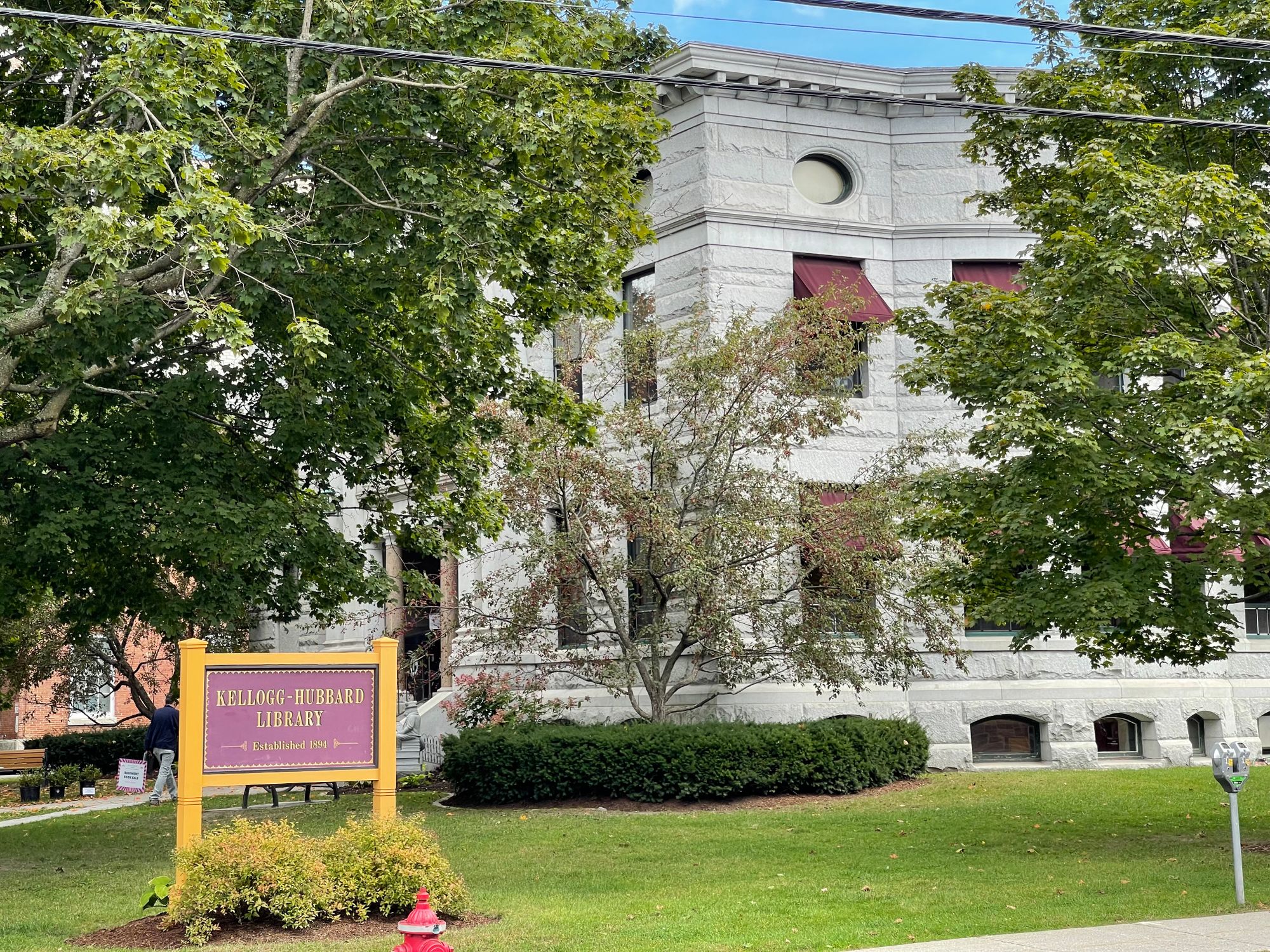
Middlebury
Middlebury was always a bright star in our long history in Vermont. We thought of it as the epicenter of creativity in a state full of creative energy. Today, we feel the same way, but the heart of Middlebury has been compromised by traffic decisions. These decisions have resulted in two massive intersections that tend to divide the downtown in smaller, disconnected pockets of energy. Restoring some balance to the heart of the Middlebury community can help bring back some of the energy I remember and connect the downtown's great uses, including the Food Co-op, Frog Hollow, and the farmers market.

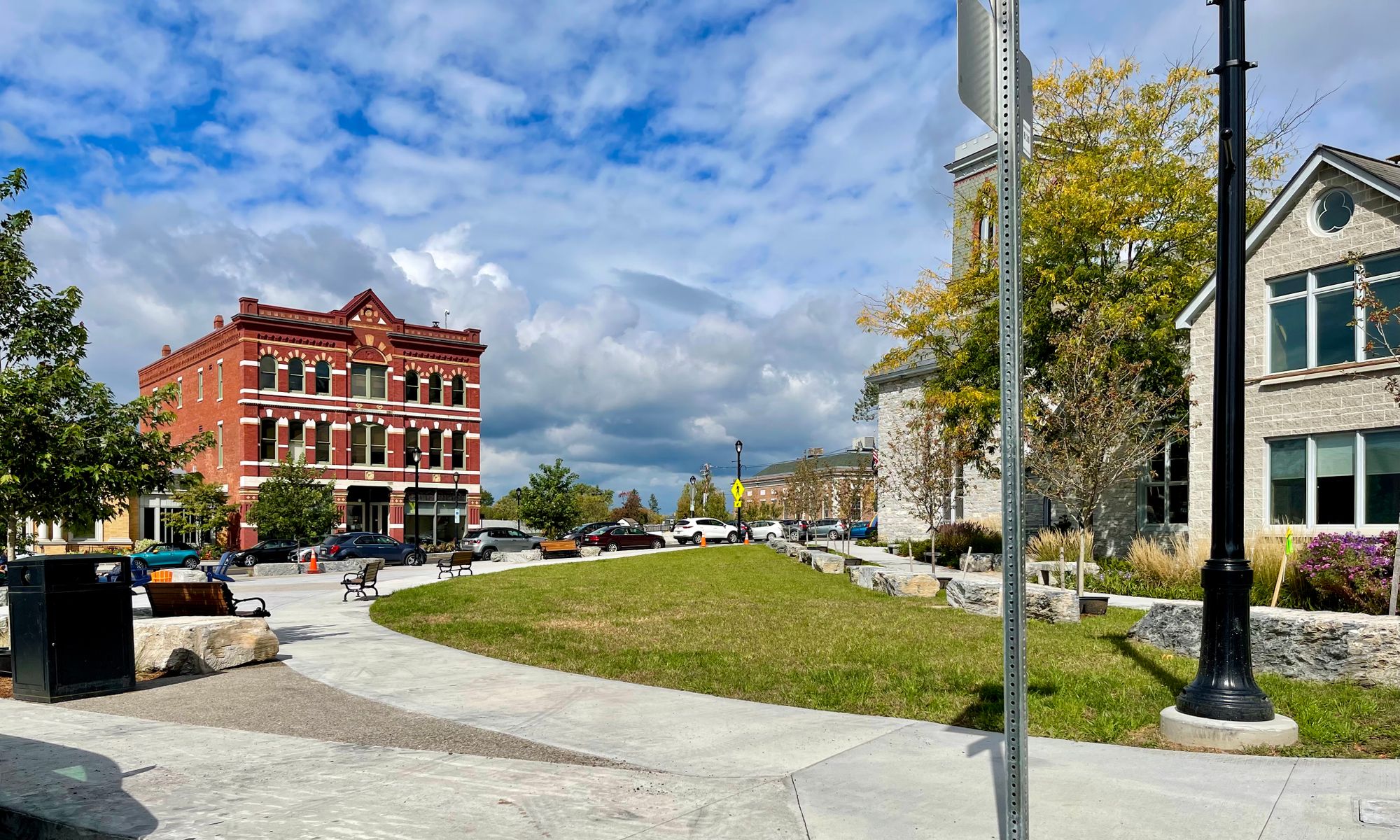
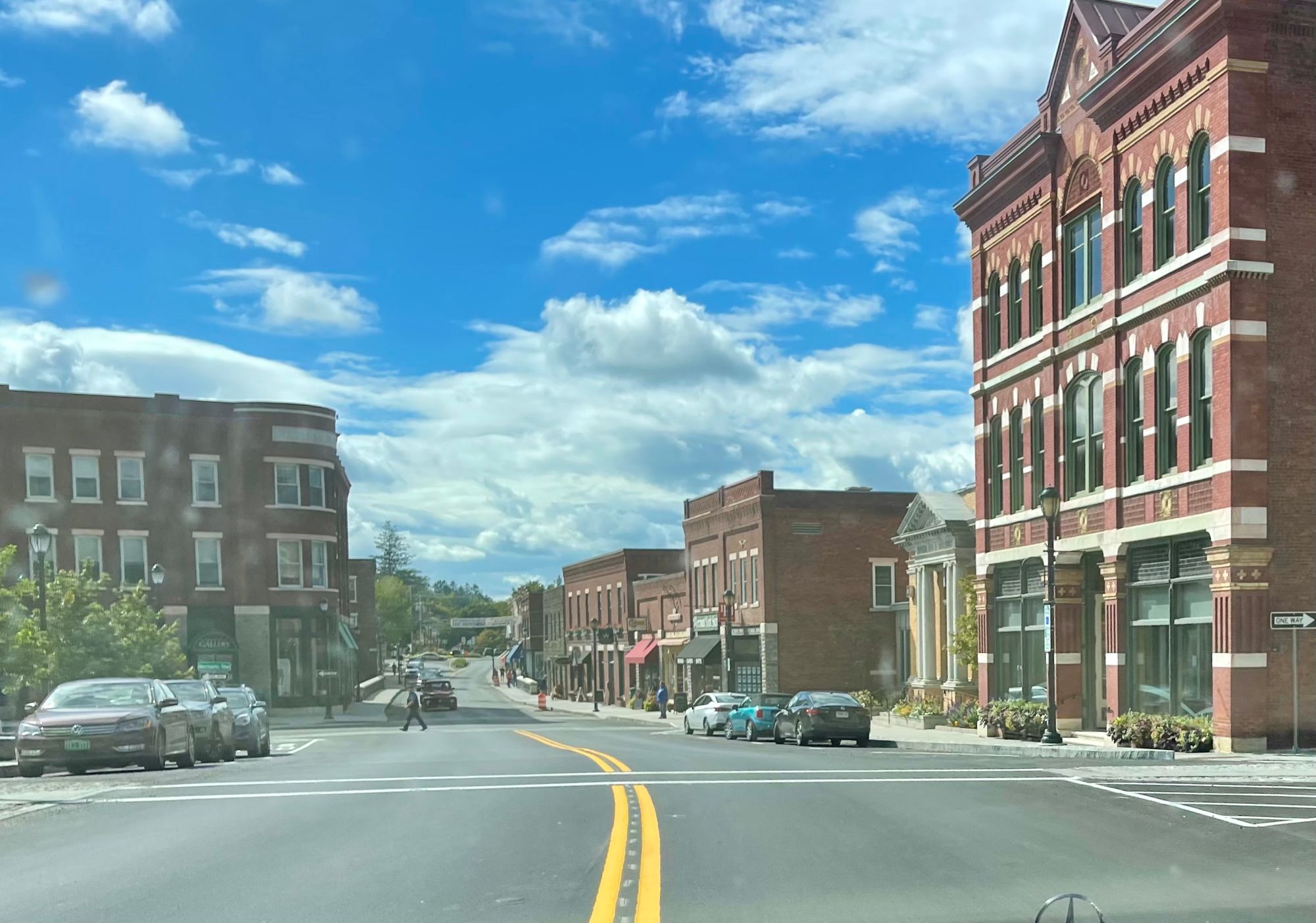
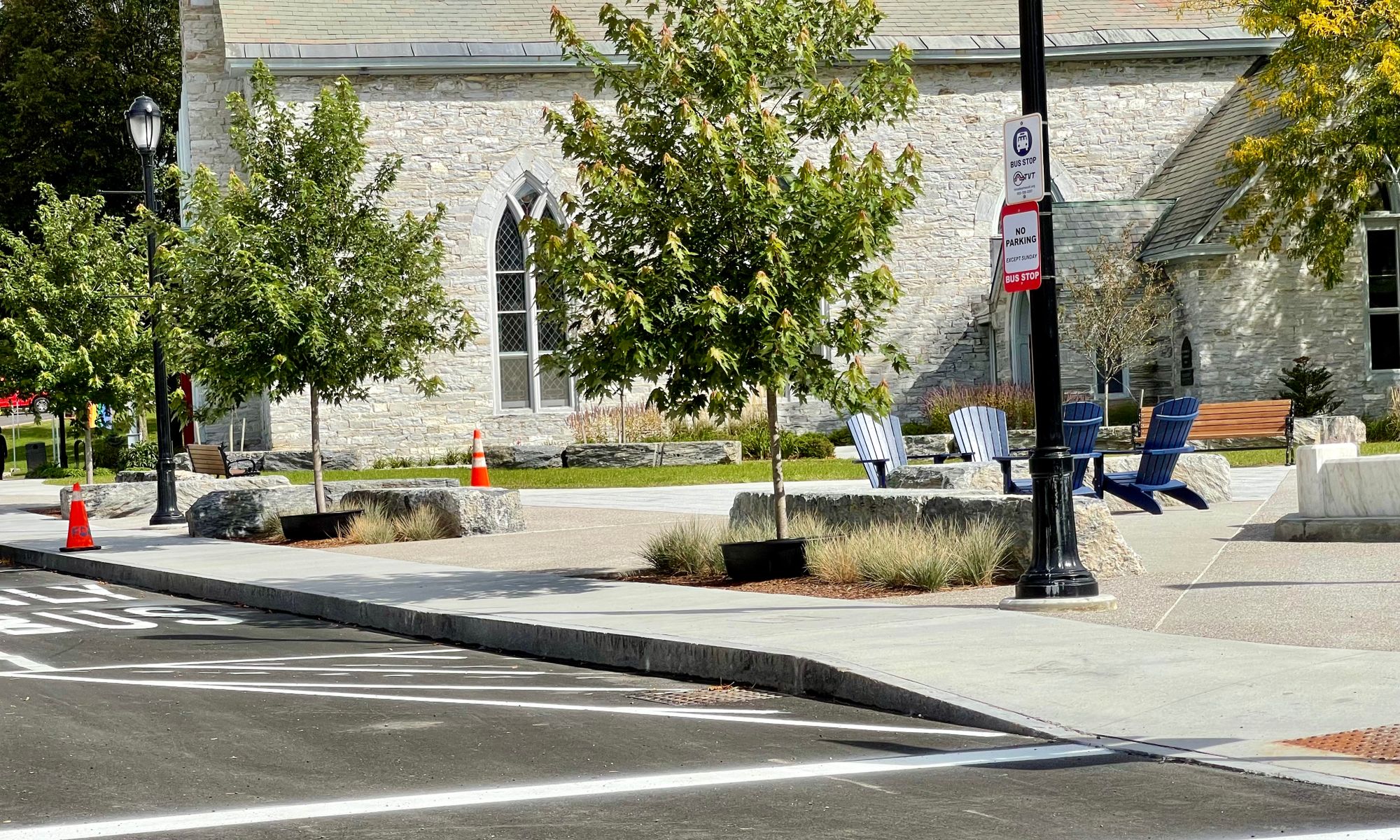
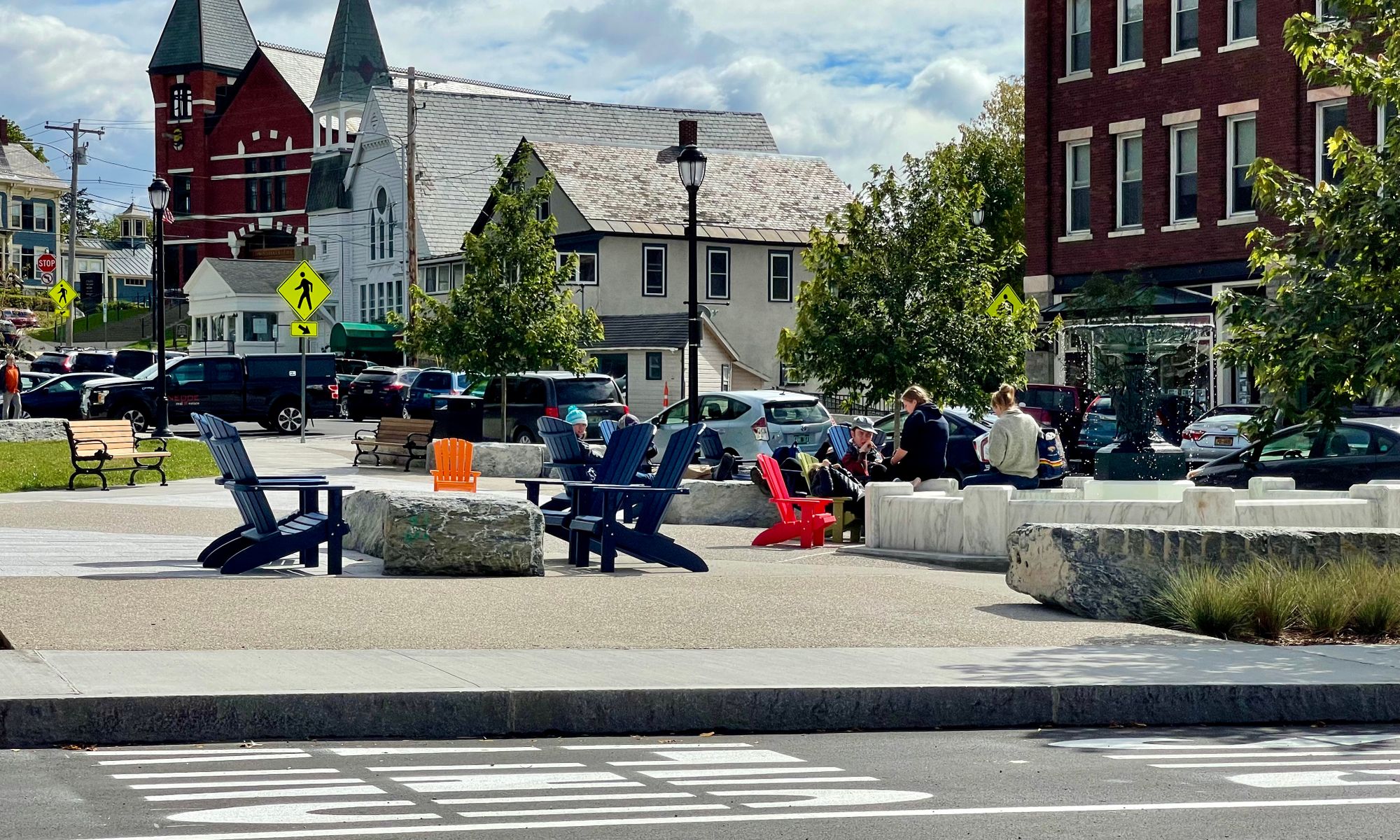
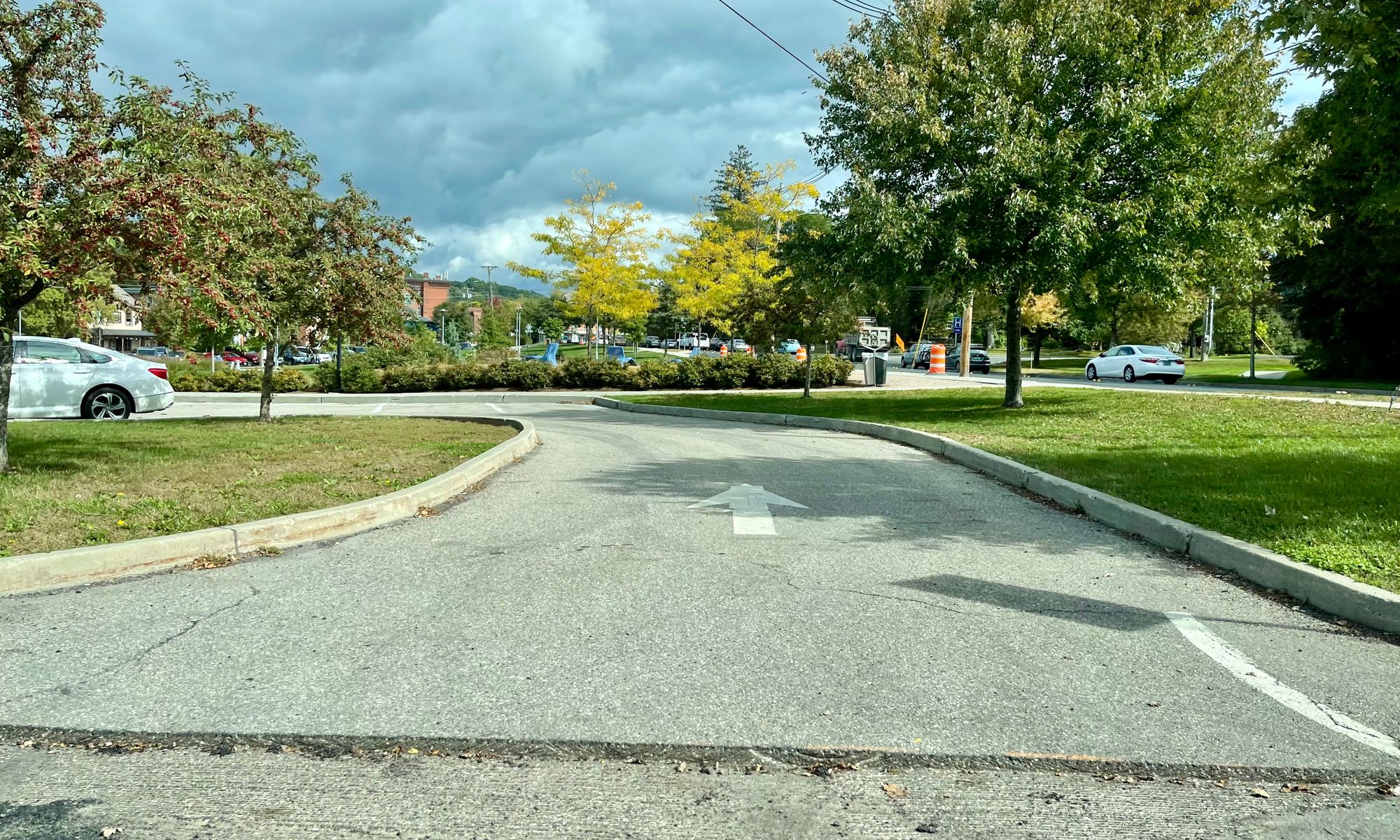
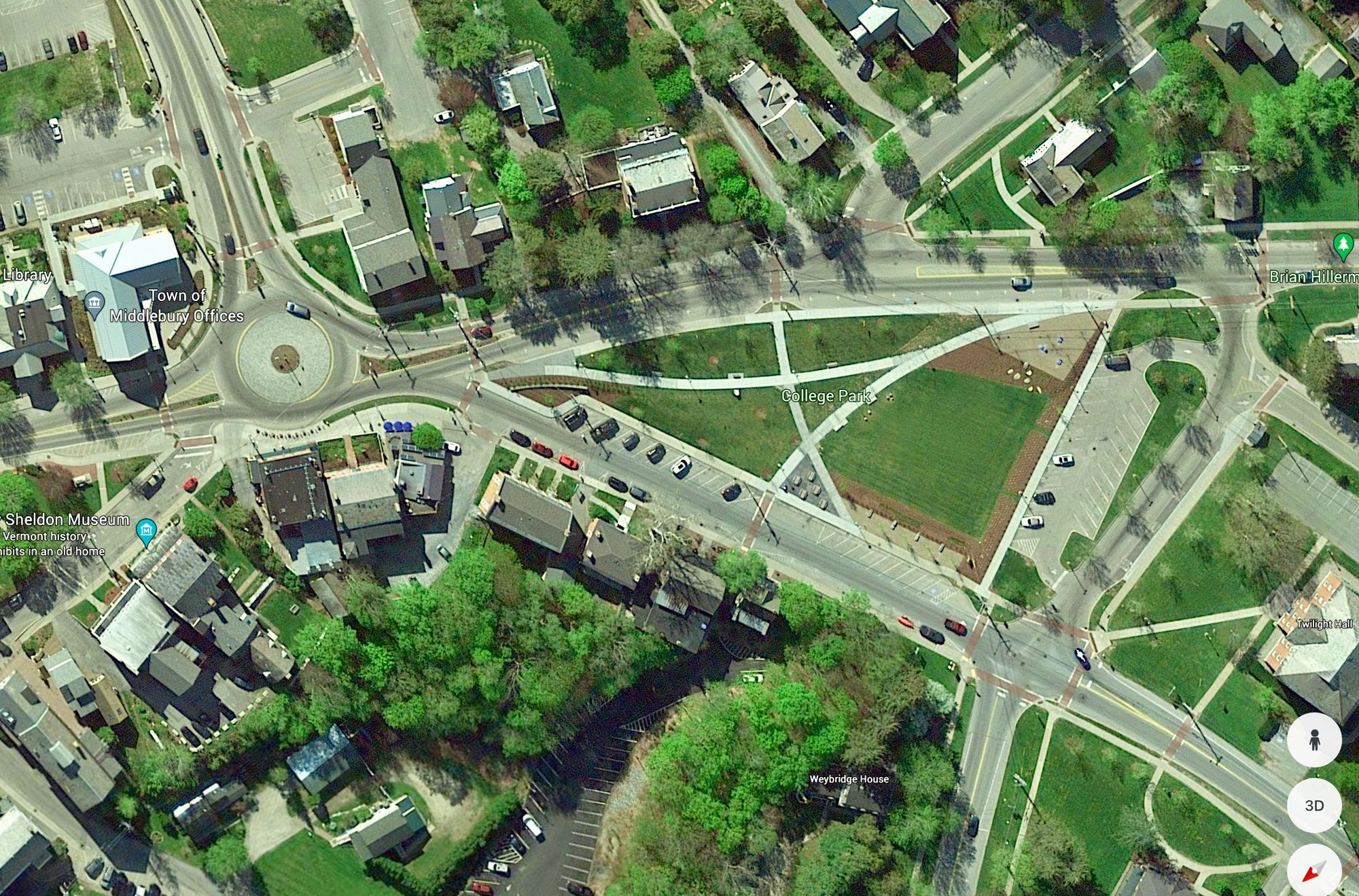
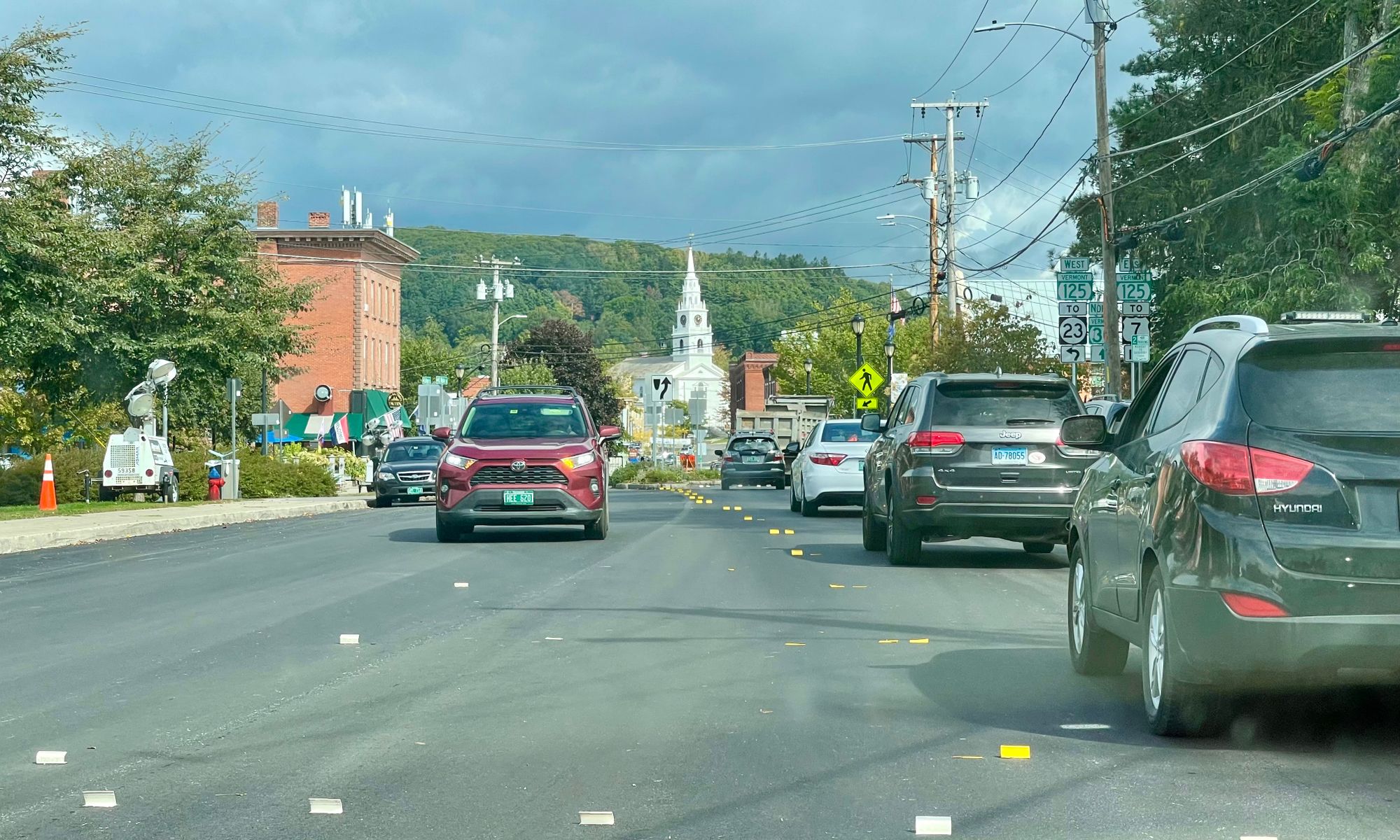
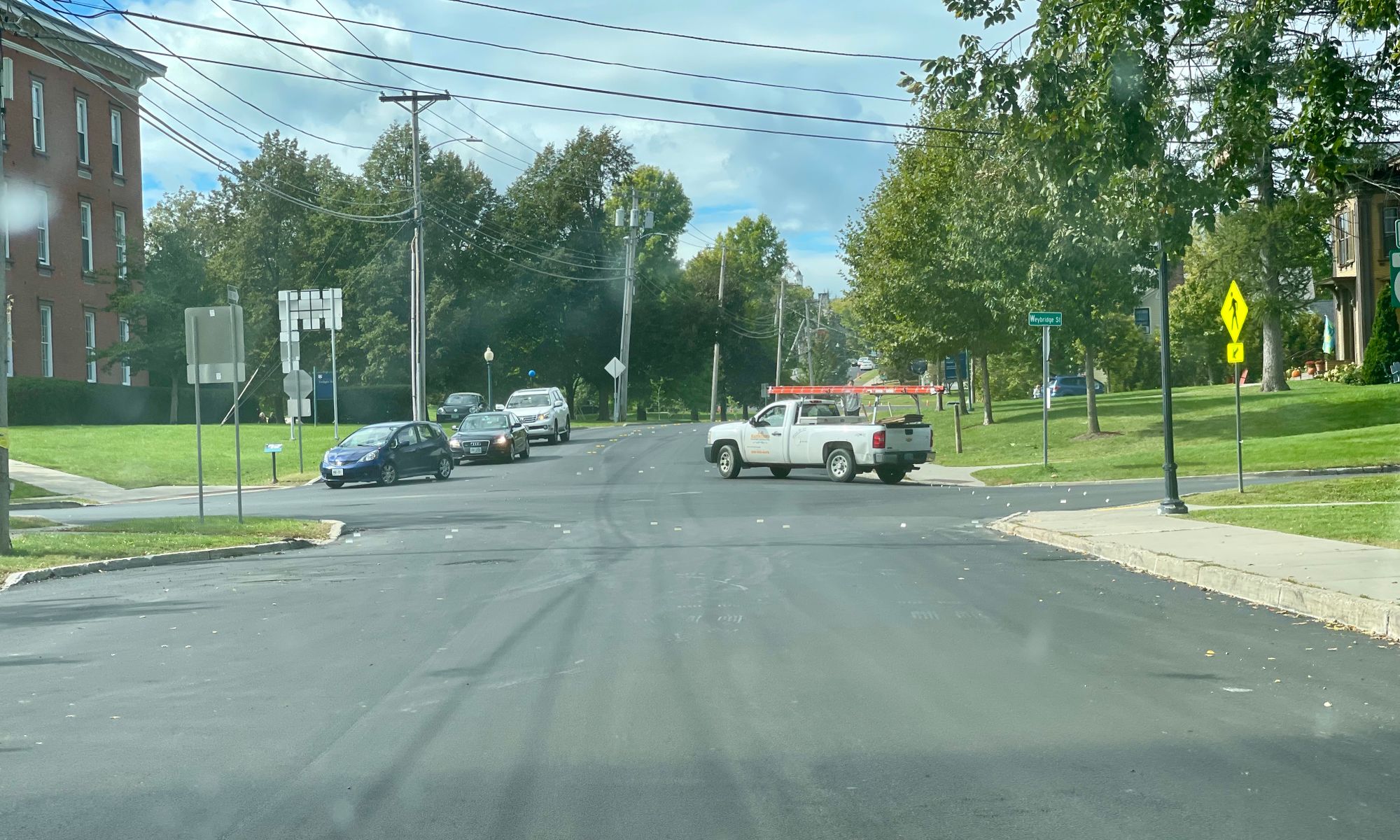
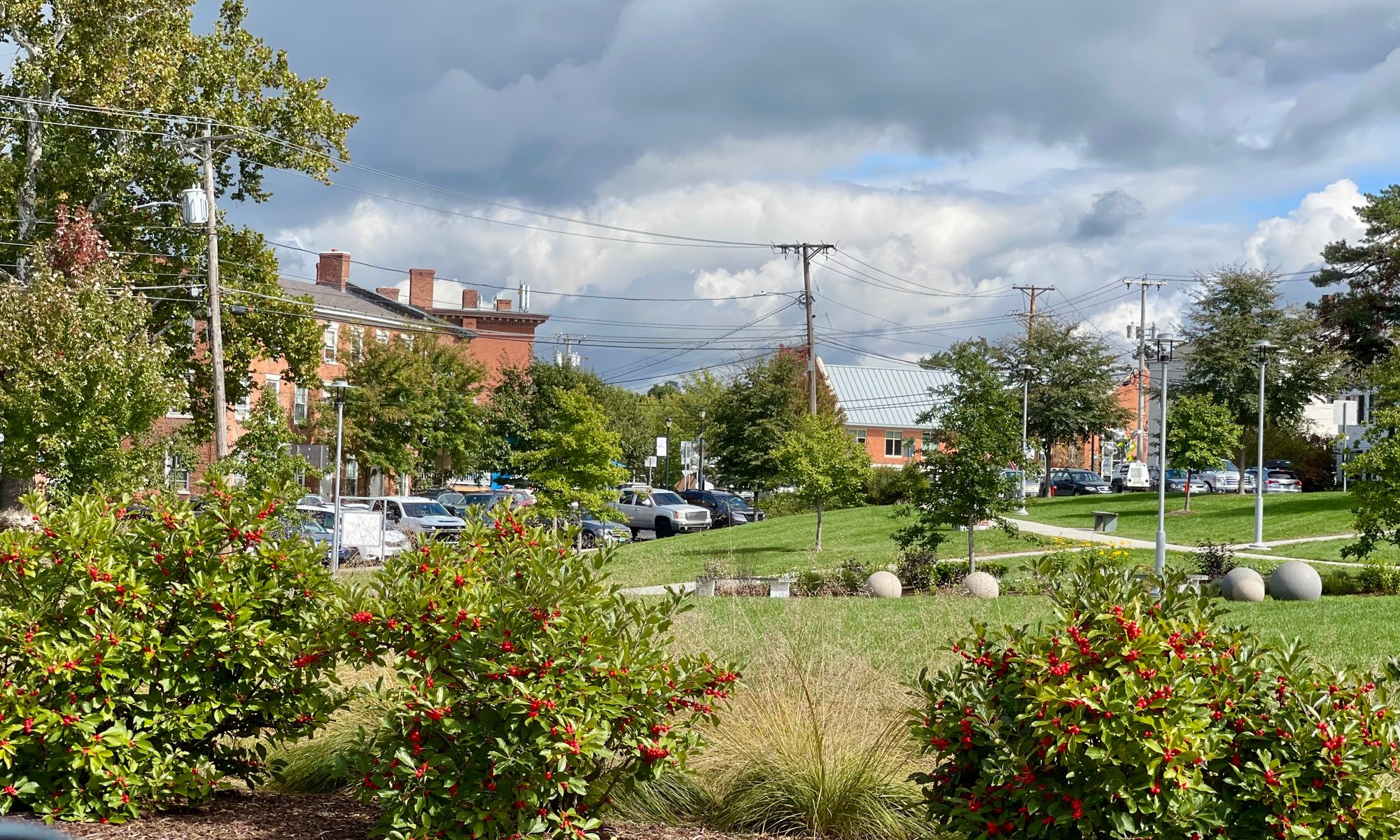
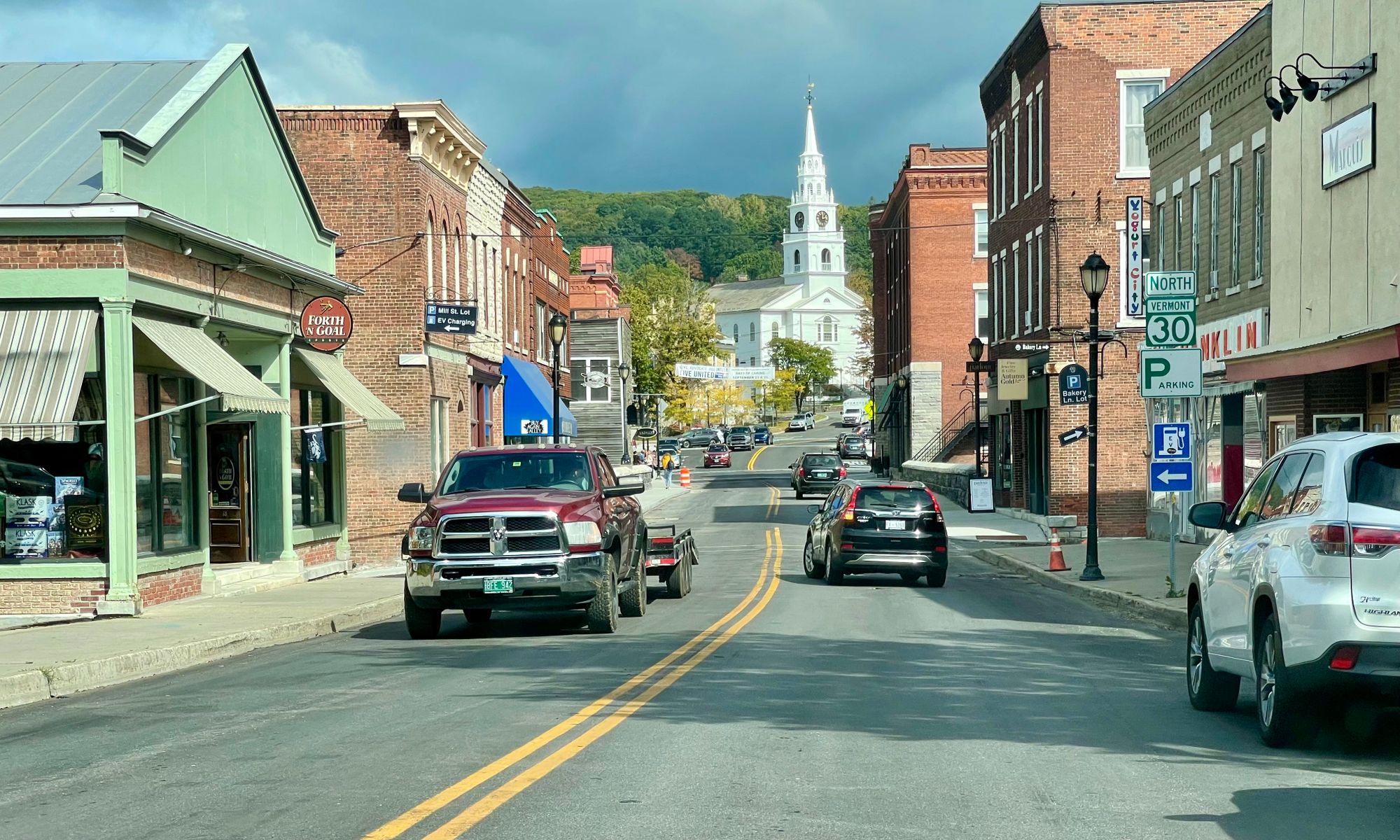
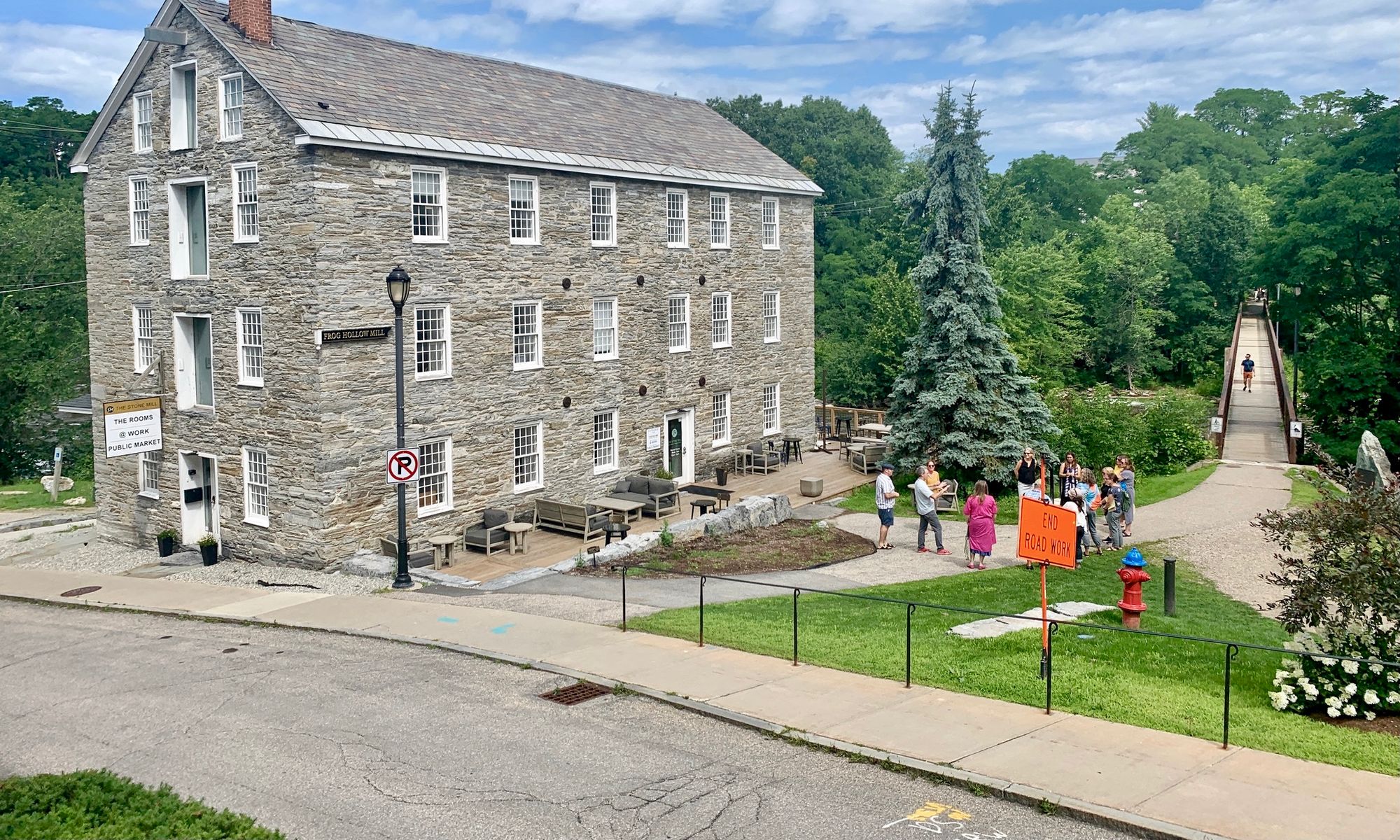
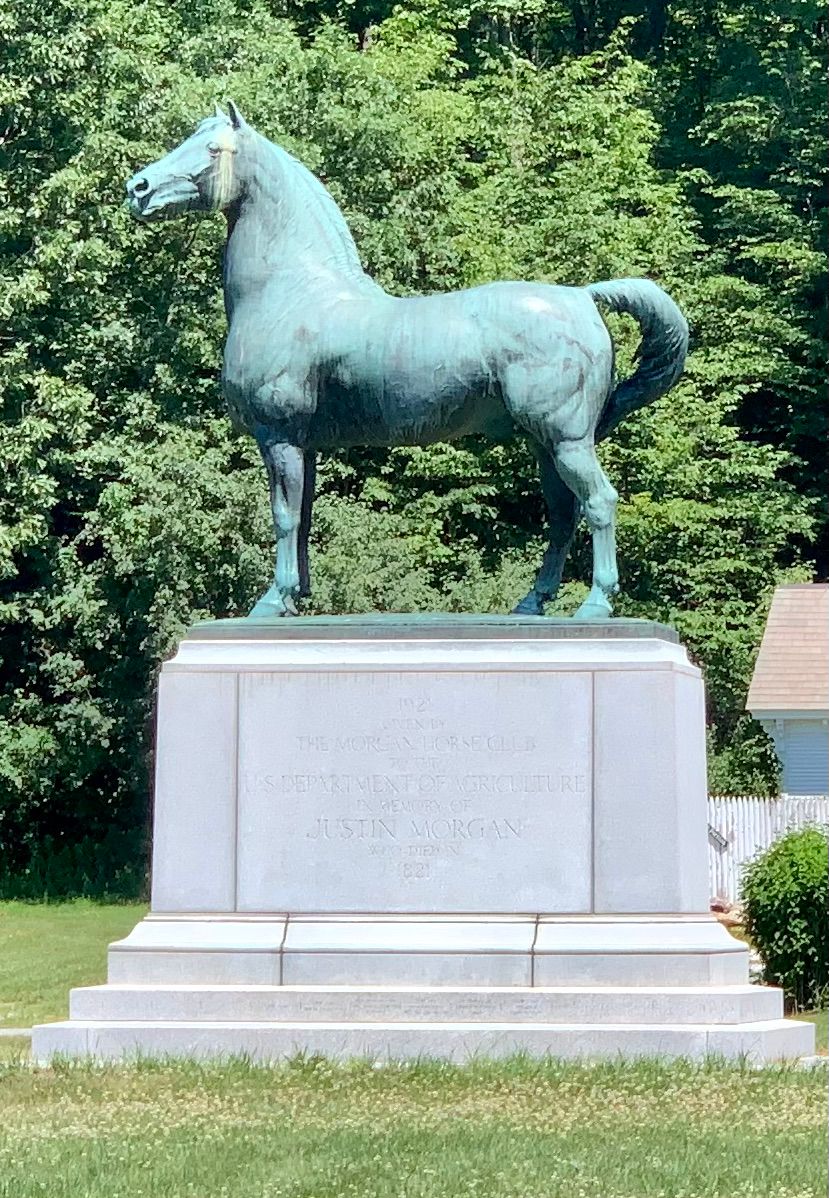
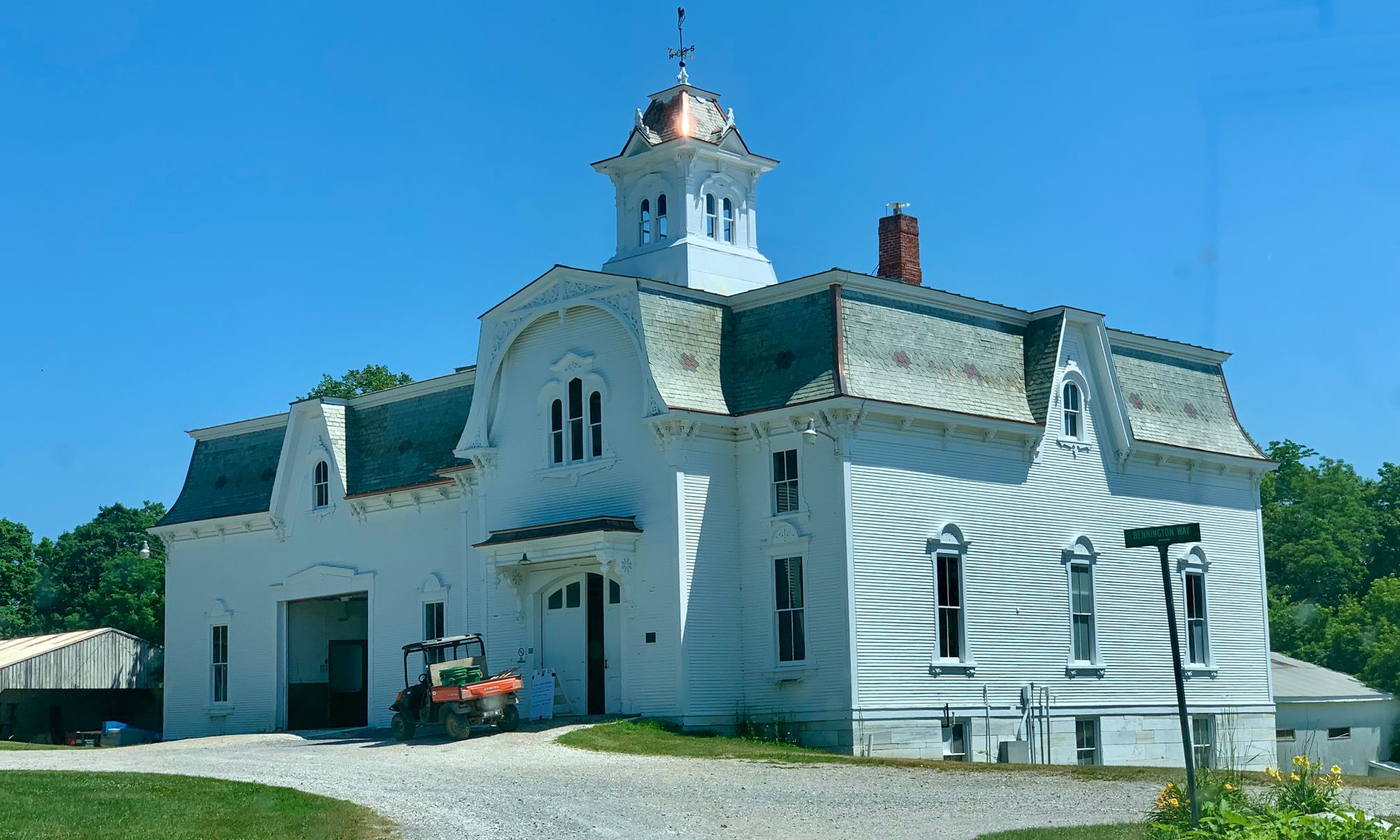
Brandon
Route 7 is very likely the most important road in Vermont. It goes through many of the state's key destinations. As the major north-south road in the center of the state, it needs to be rethought; not as a highway (which it is fast becoming) but one that allows each town to tell its story, encouraging people to stop and witness the best of Vermont.
After a devastating flood-impacted Brandon in 2011, the Department of Transportation was in charge of rebuilding the road. This has resulted in the road becoming a poster child for what goes wrong when Federal Highway design standards are applied in small towns. On a broad scale, flexible or context-led design standards need to replace the outdated requirements for all federally funded roads. In the context of Brandon (and places like Middlebury, mentioned above), rethinking roads like Route 7 could create a major asset for all the communities along this once-great route. Because of this, Brandon is an example of a historic town in a highway setting. Instead of allowing drivers to experience a beautiful Vermont town, the road gives one a drive-through experience that conveys a "look-but-don't-touch" dynamic.
In Brandon, each building in its own individual setting is actually more of a one-off attraction. So, where is the life? Where are all the people? There are clearly some spectacular individual destinations, but they seem disconnected. They are often surrounded by green lawns or an isolated Town Green, which is fitted with perfect elements just waiting for activation. But until that activation, it is not a collective draw.
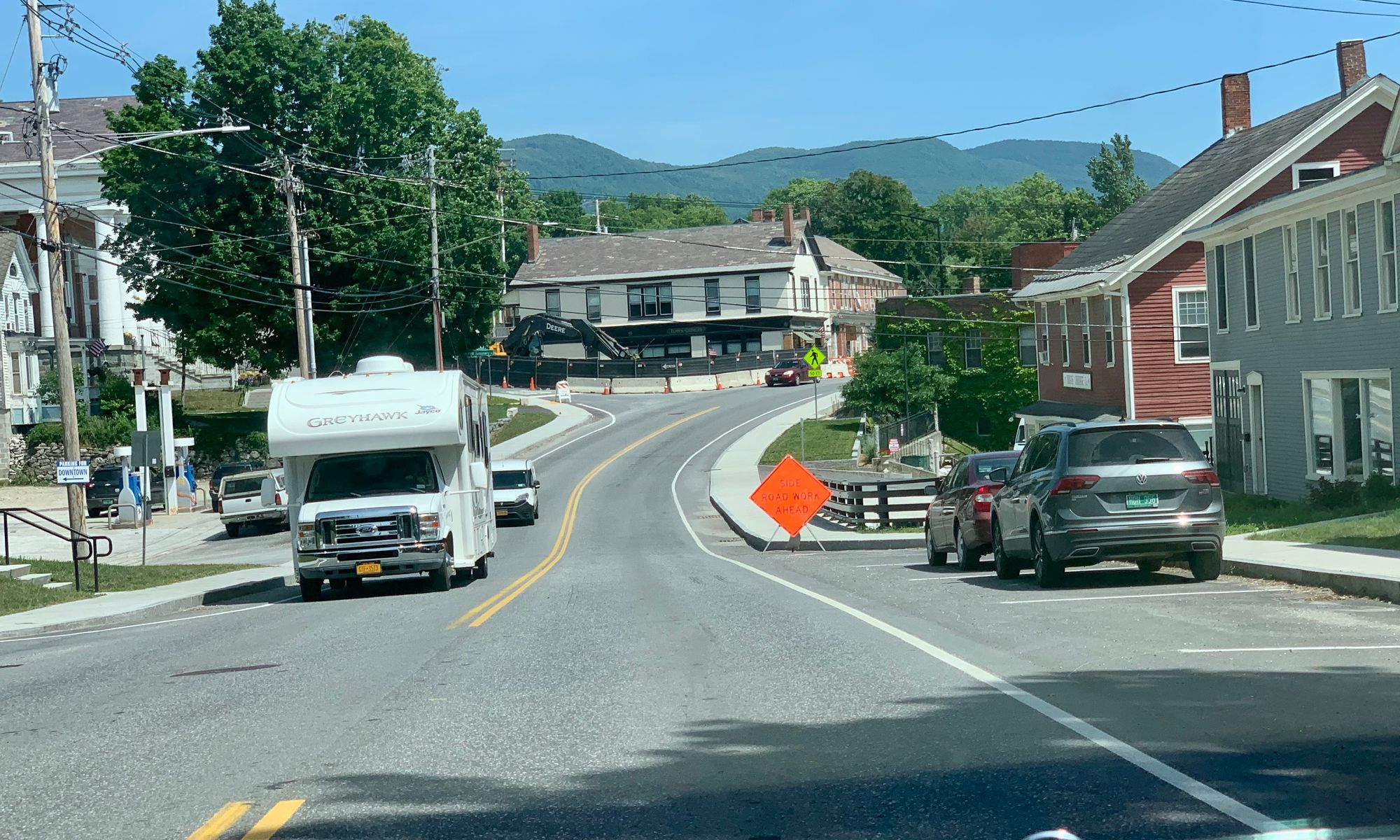
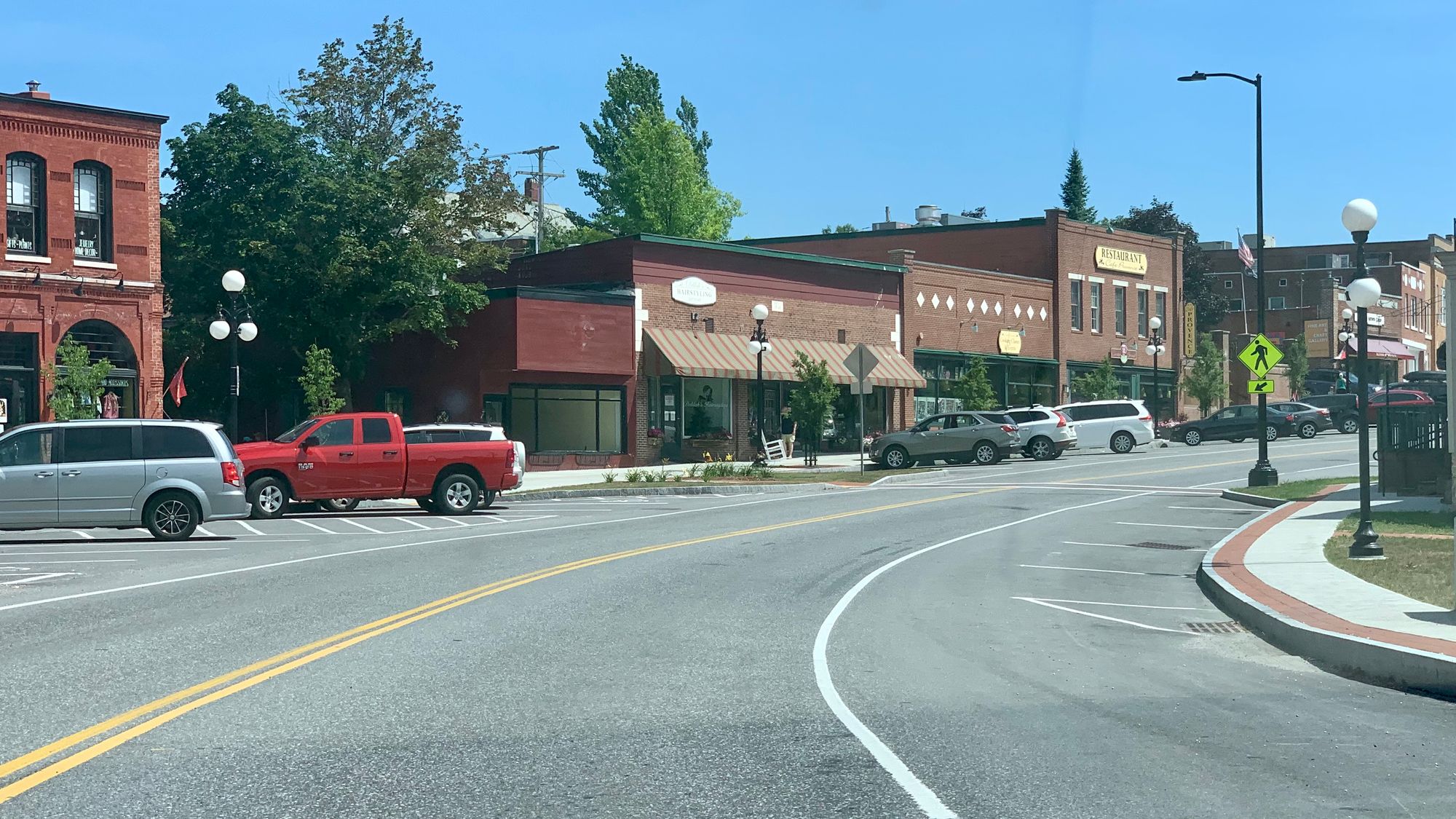
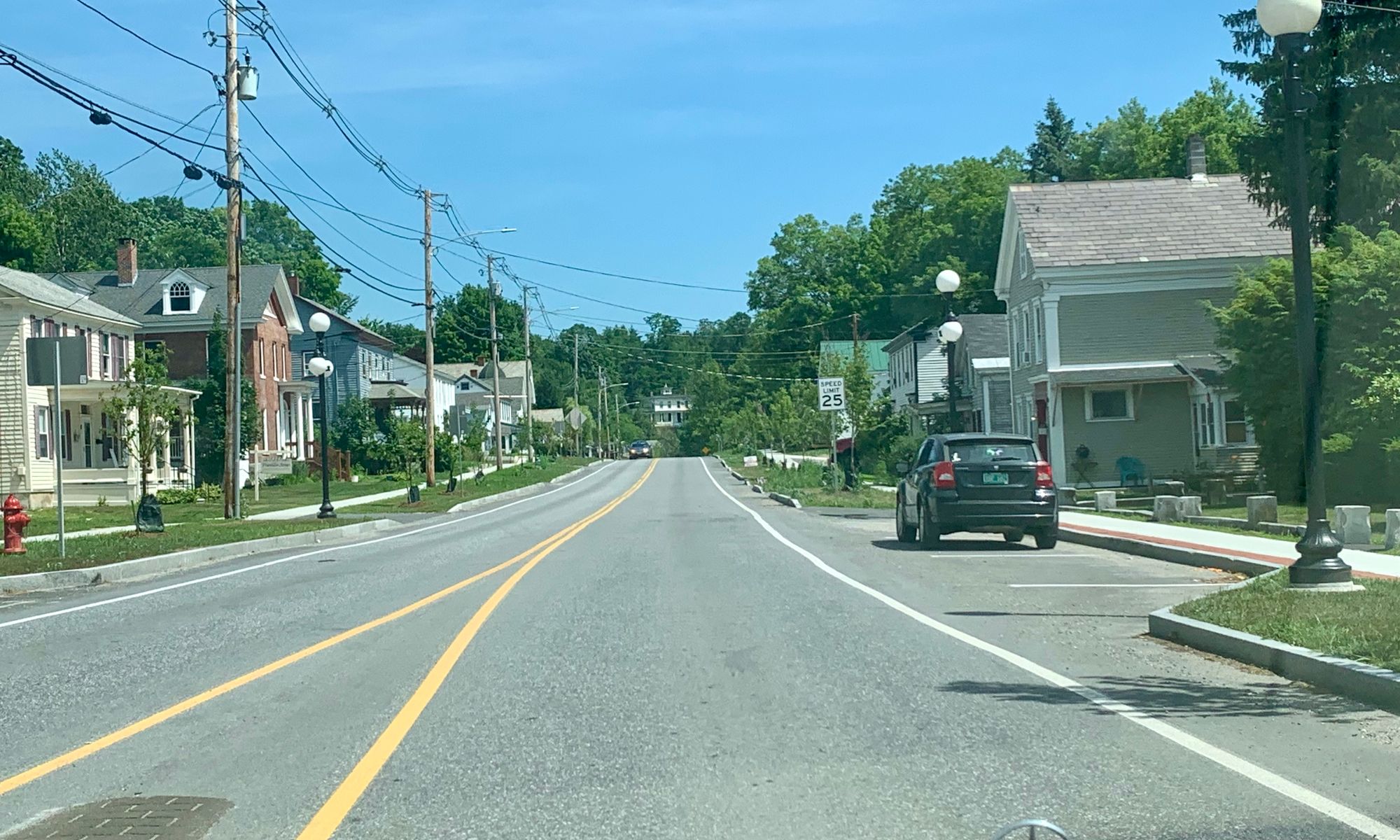
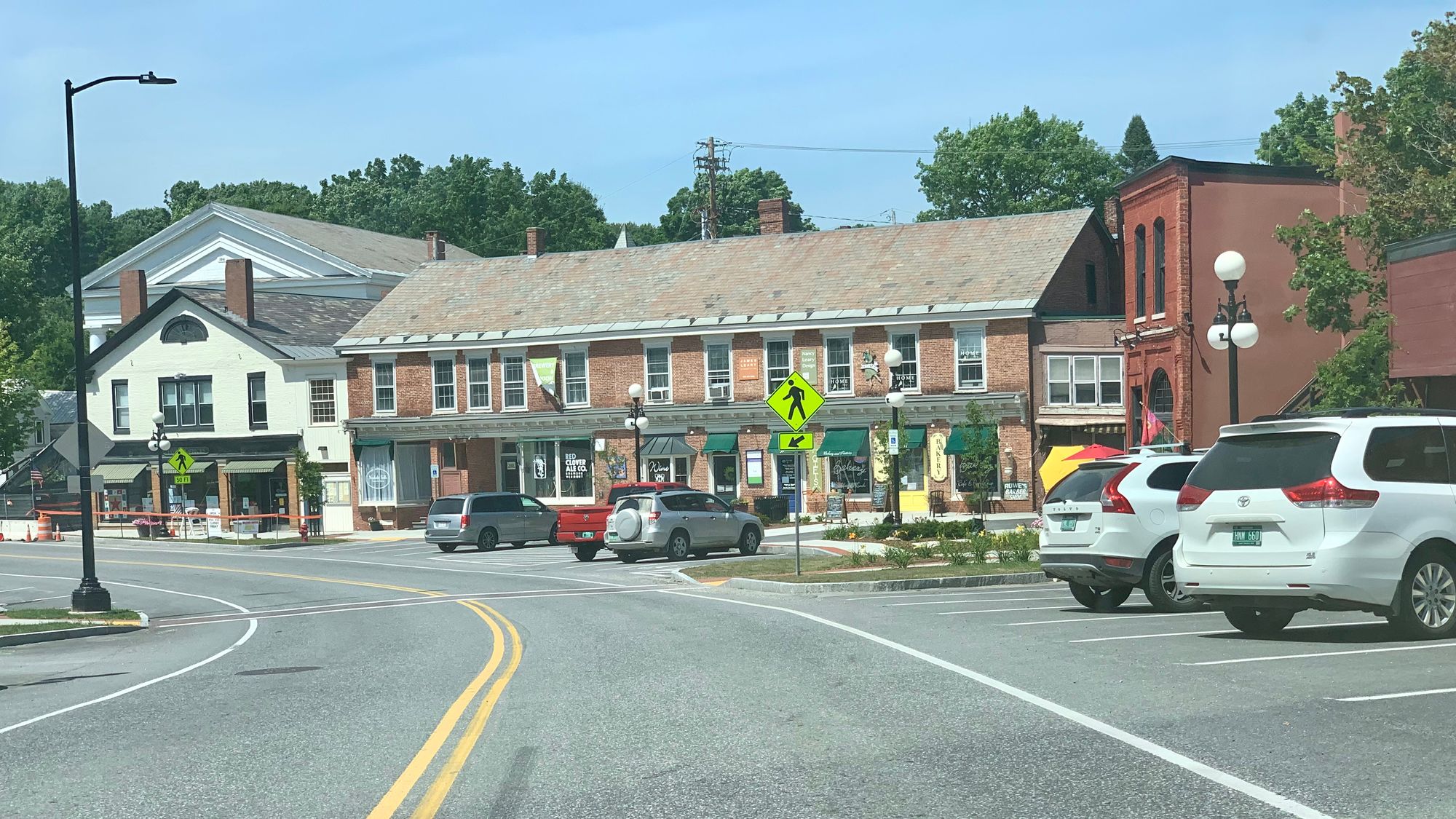
Road design standards set up a situation where experiencing this beautiful town is not easy. Entering the town from the North, one finds themselves halfway through town without knowing it. There is no "entrance" experience that would cause one to slow down.
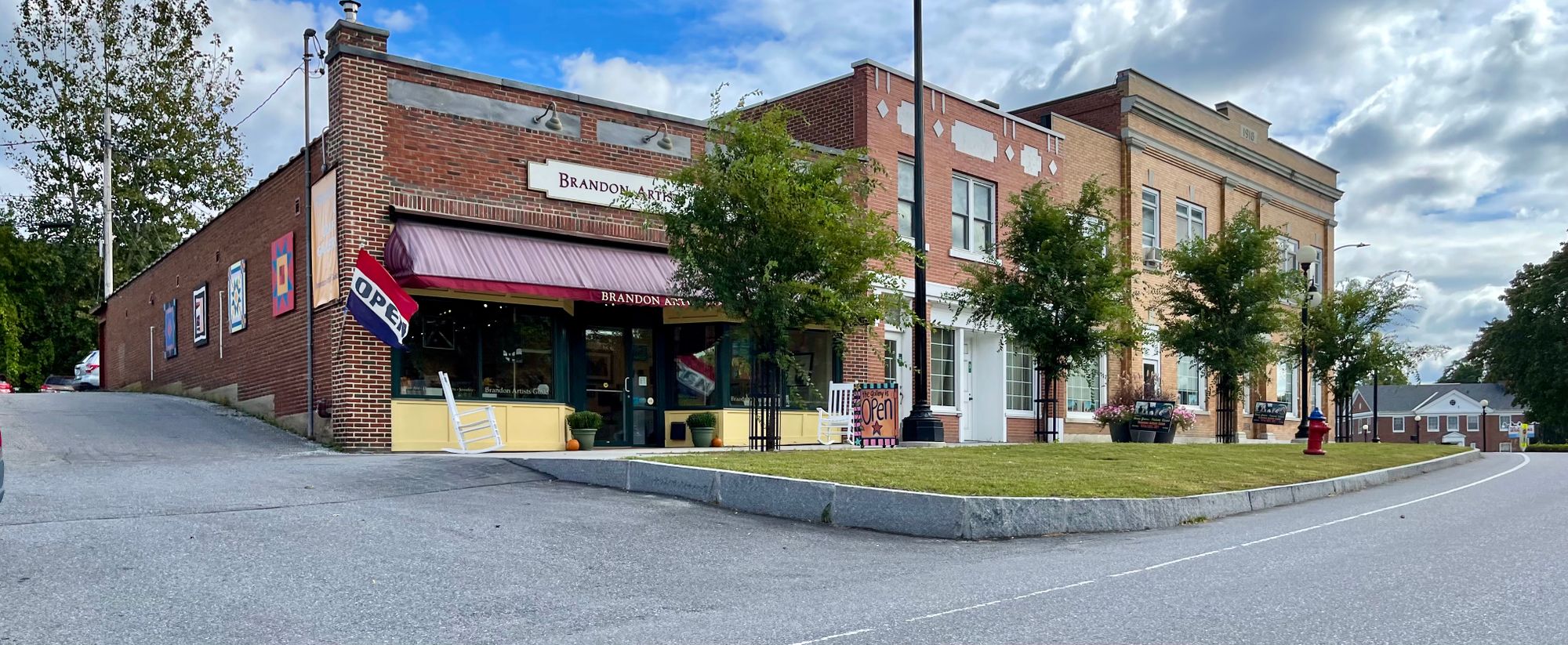
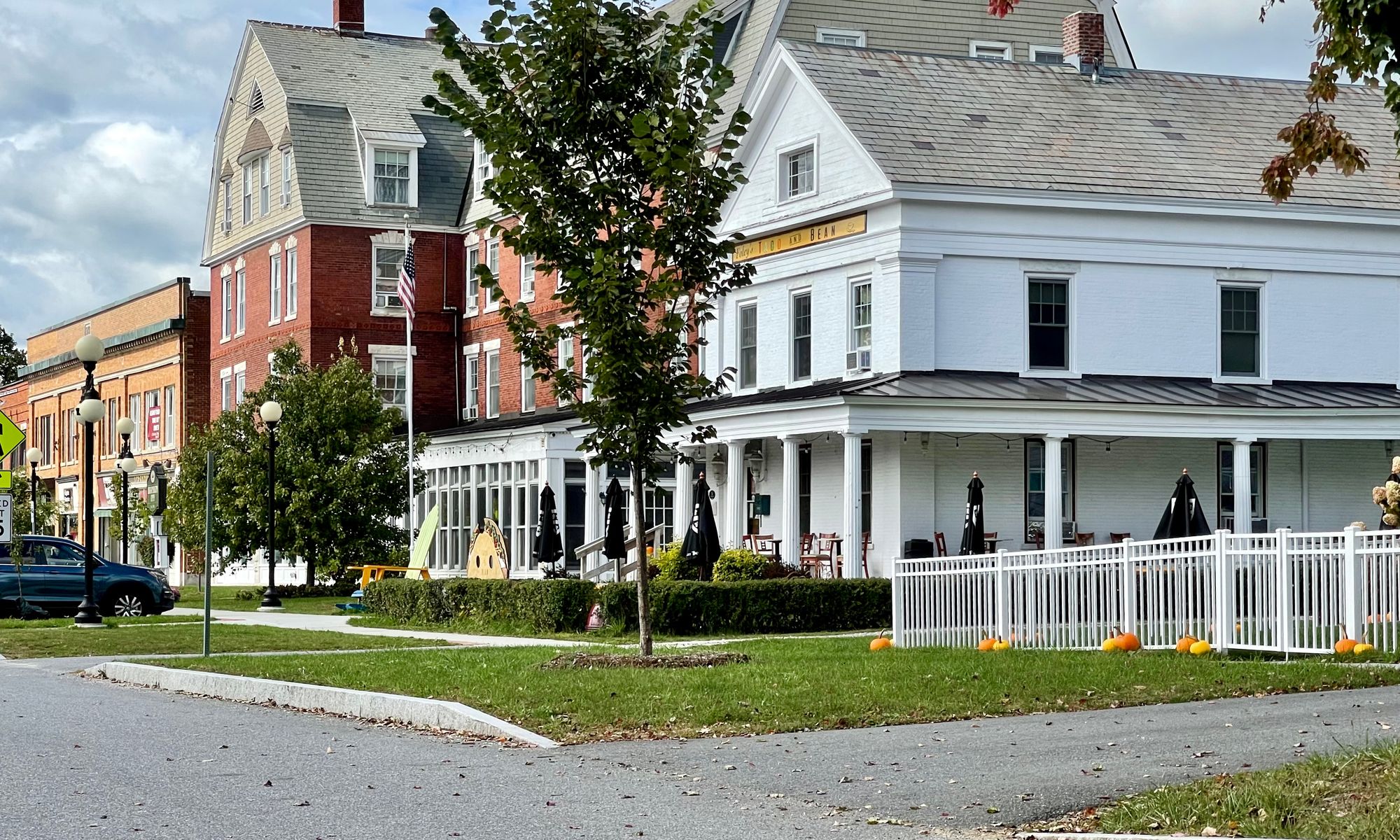
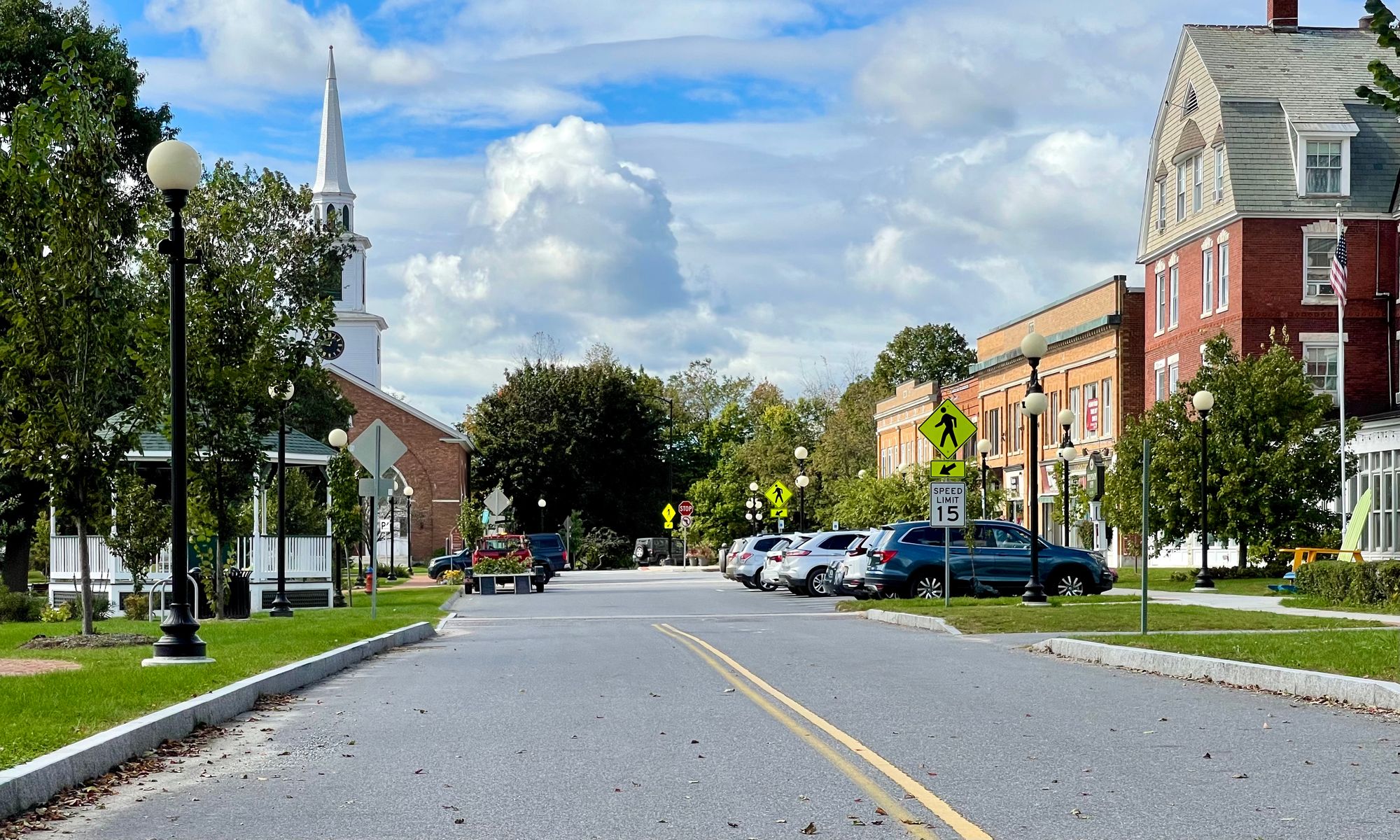
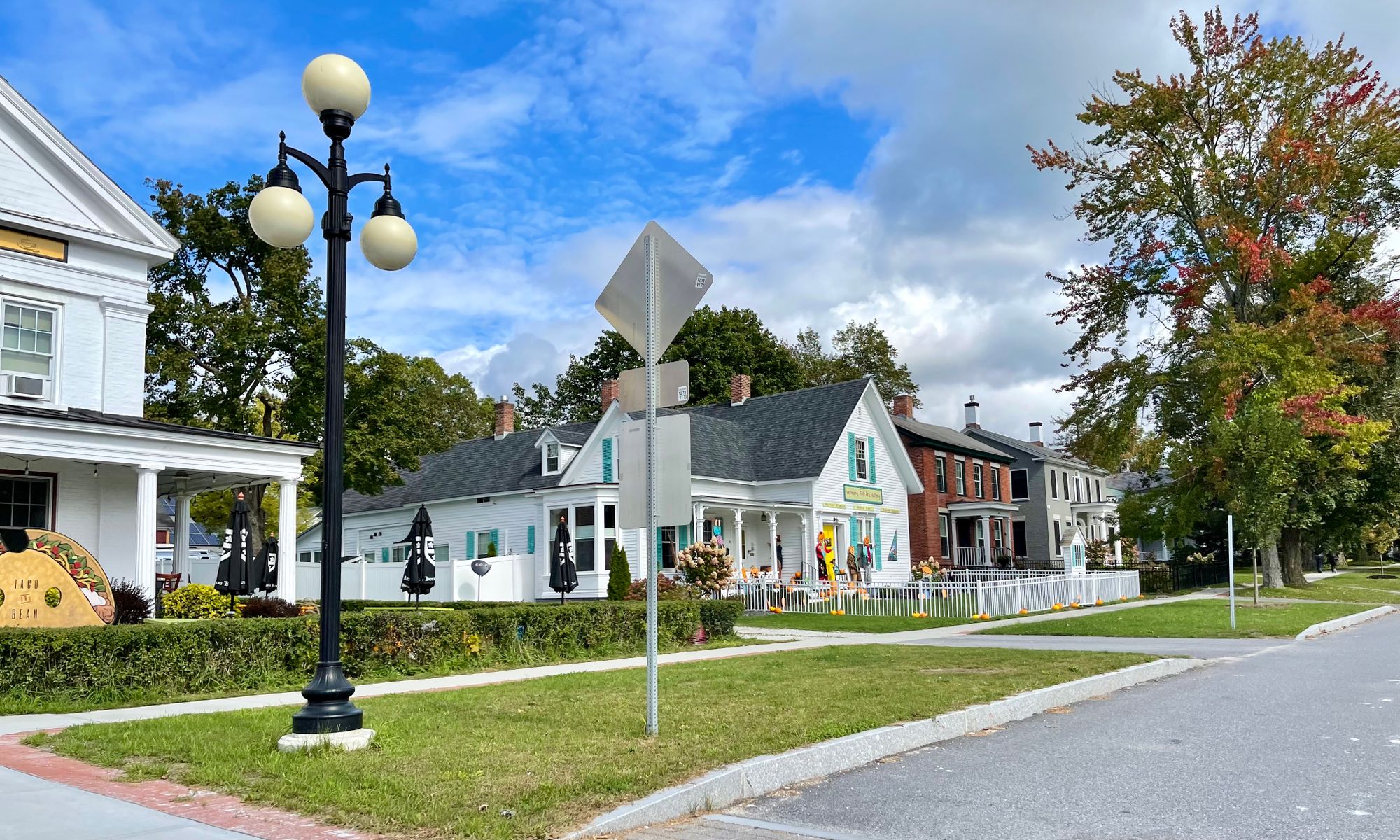
The buildings have all been restored. Now the social life needs to be restored.
In Brandon, there are many setbacks of grass lawns. Separating the road with empty spaces is unusual for any downtown. It doesn't work here...There should be active uses reflecting the retail or hotel businesses to draw visitors and customers to the "main" commercial areas. For example, the Brandon Inn is a beautiful historic inn, but it is set back without the usual porch for visitors to meet, or just sit and watch the world go by. It's a town that could very quickly recapture the life it deserves and needs.
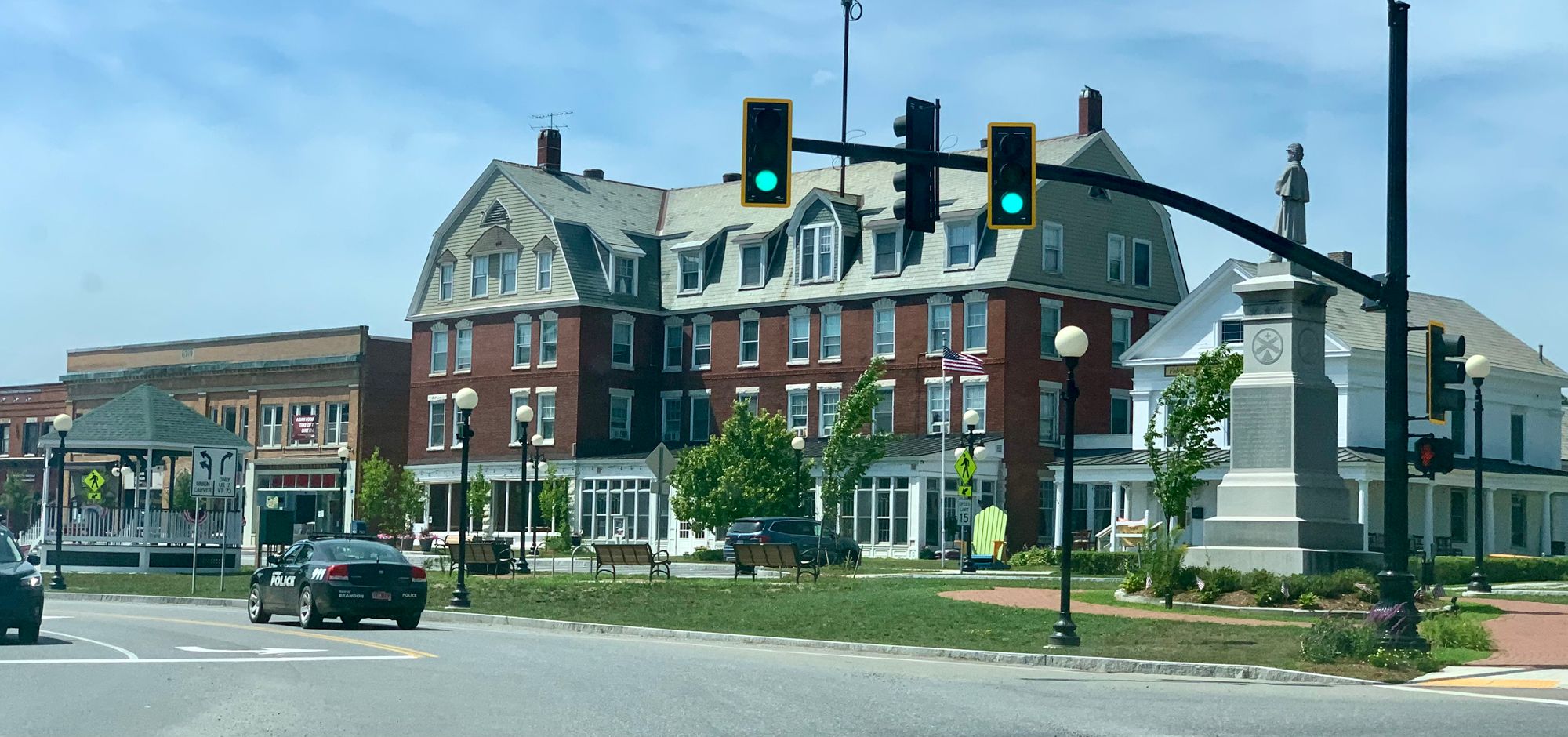
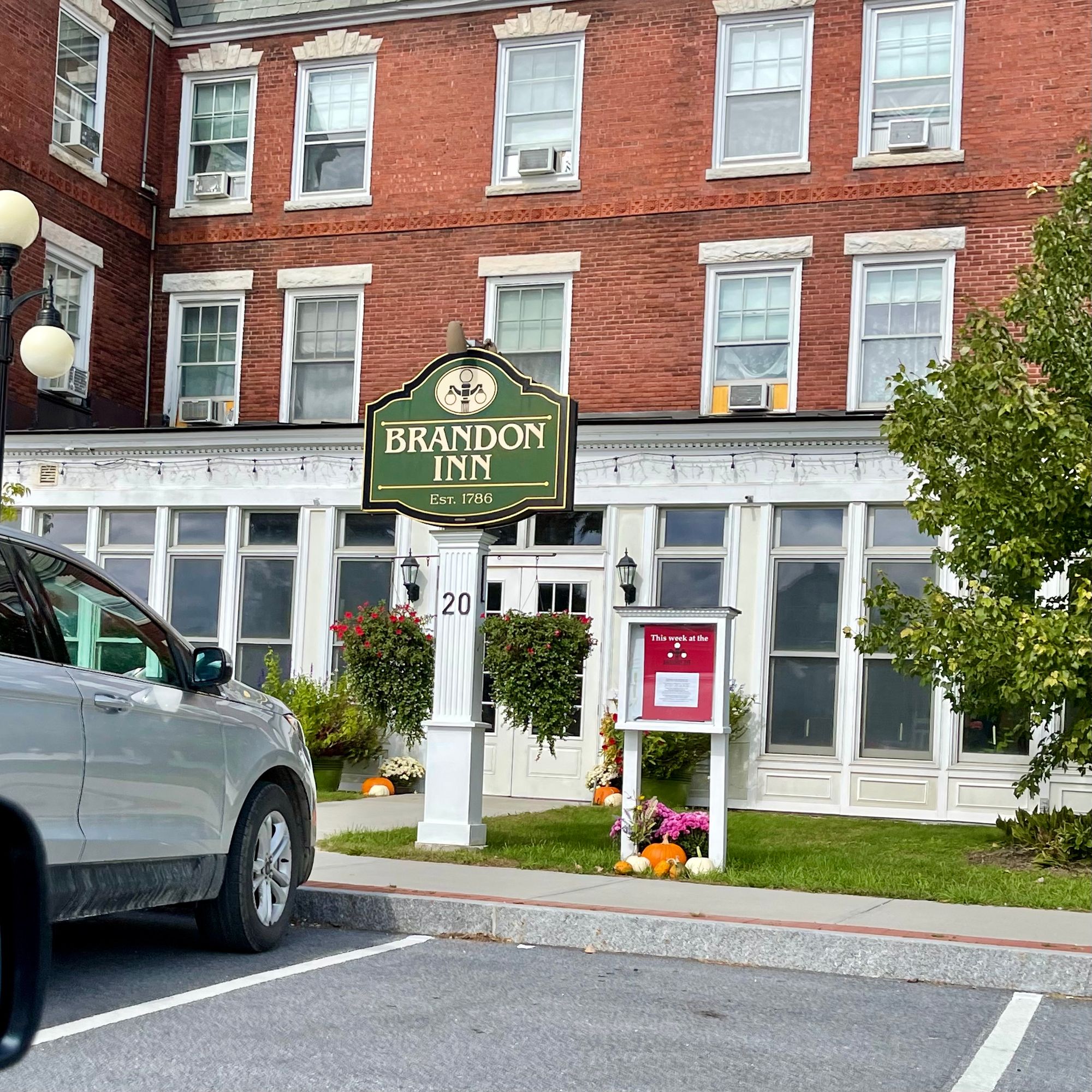
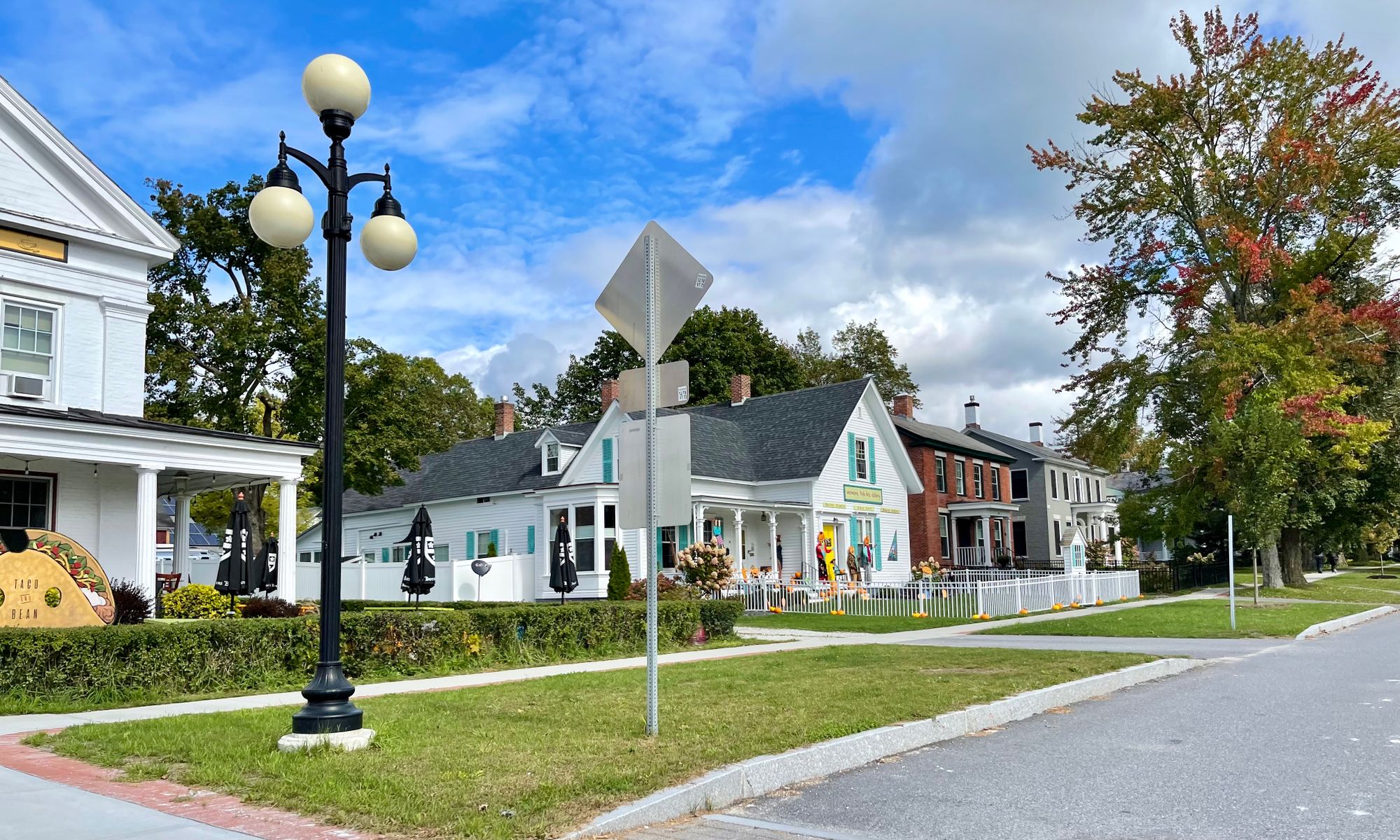
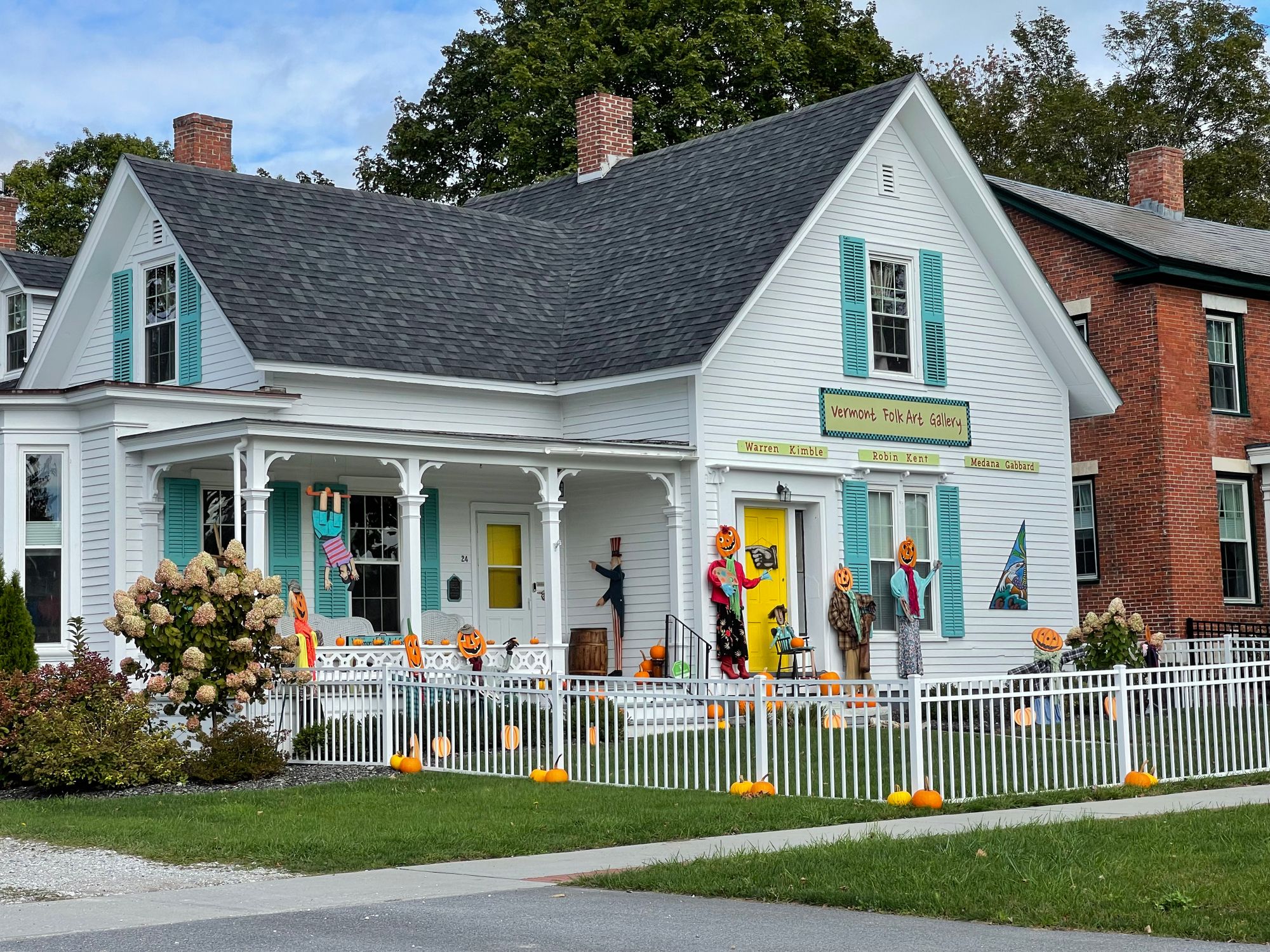
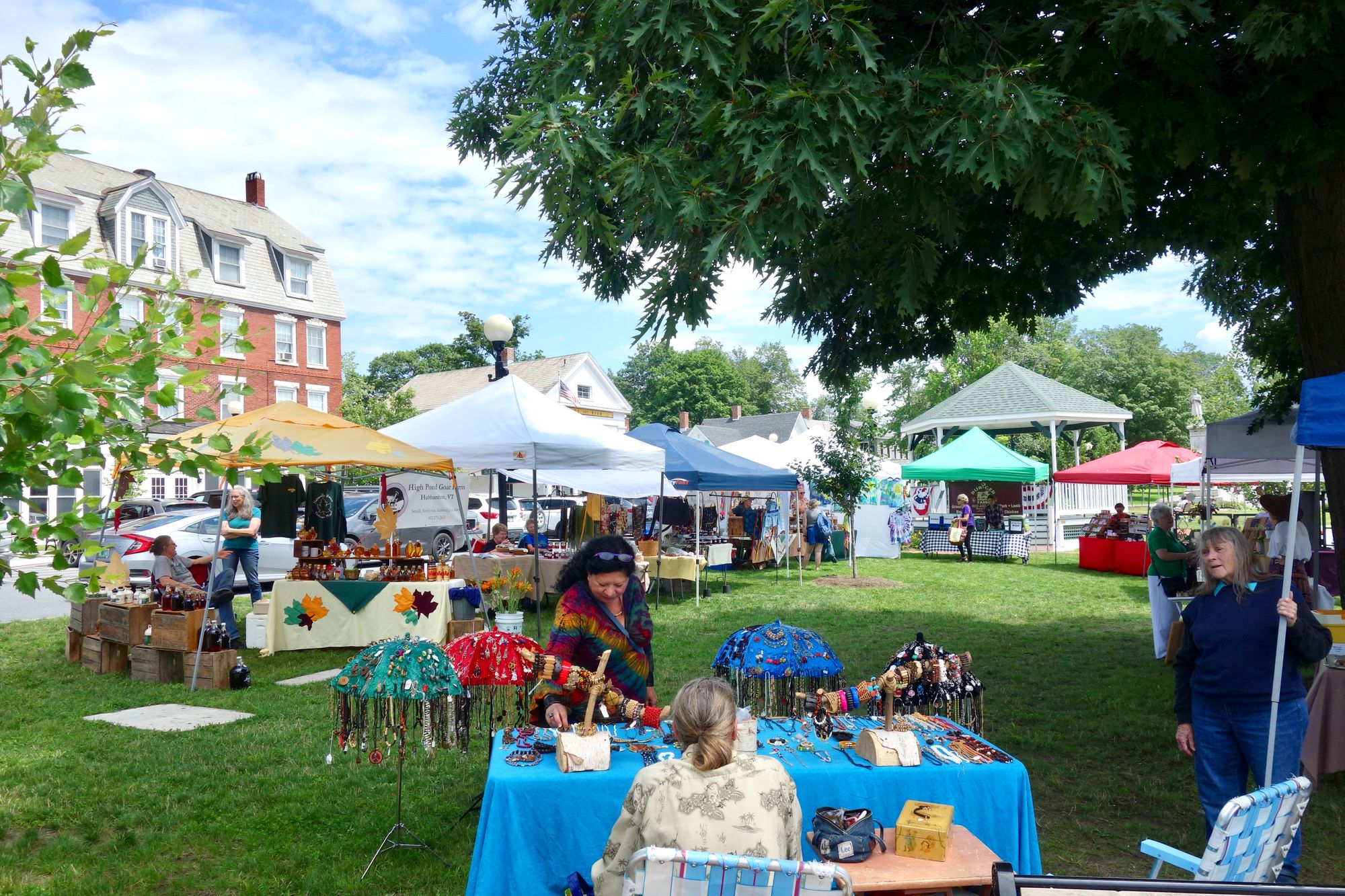
Interesting storefronts set way back from the street in one-off buildings remove potential buyers from getting up close as they walk by well away from possible interaction with the businesses.
The Green
Technically, Brandon's Green has all the elements a green should have but they are small islands set in oversized roads. They add nice greenery around town, but ultimately do not connect enough with other destinations.
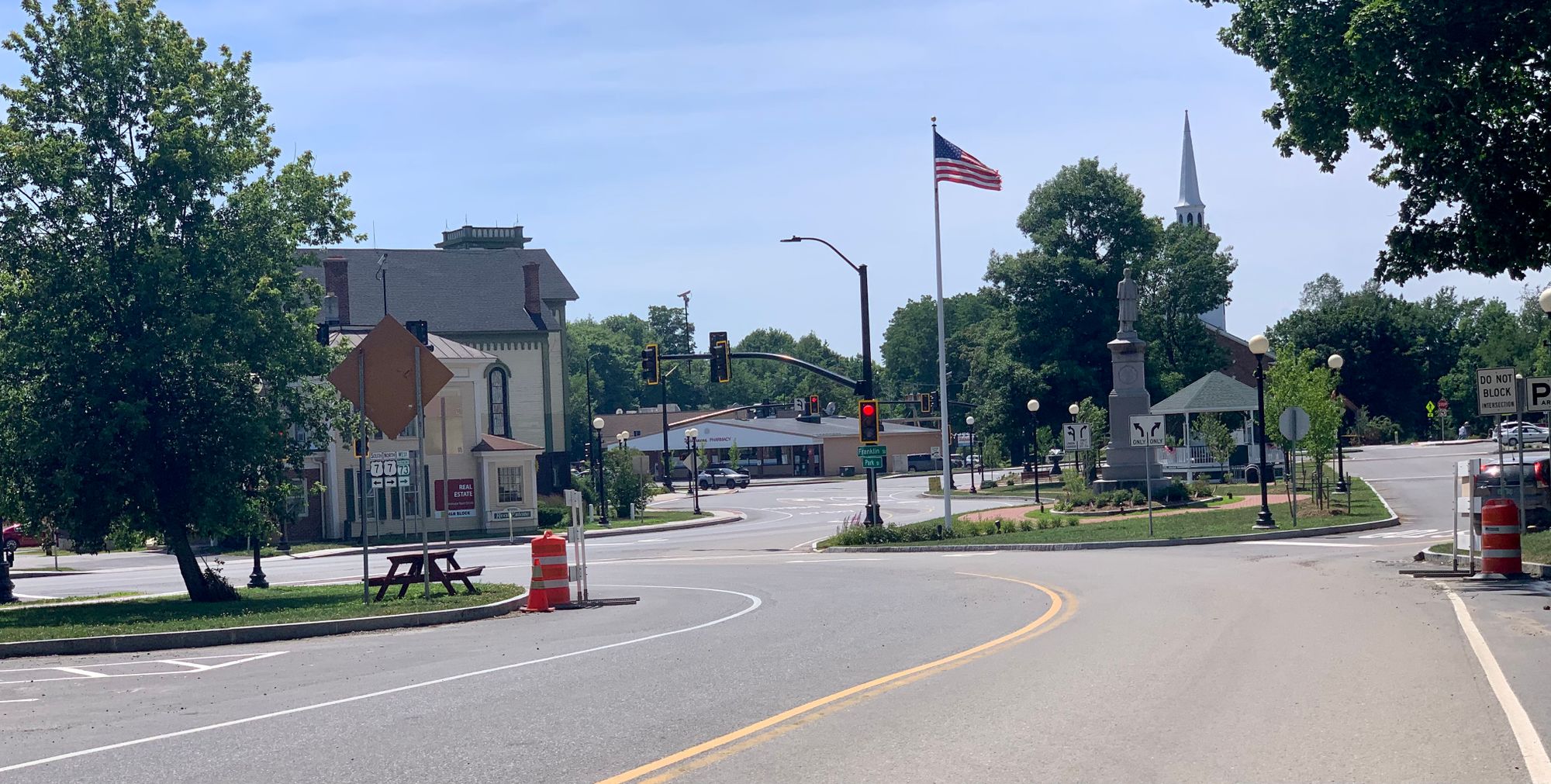
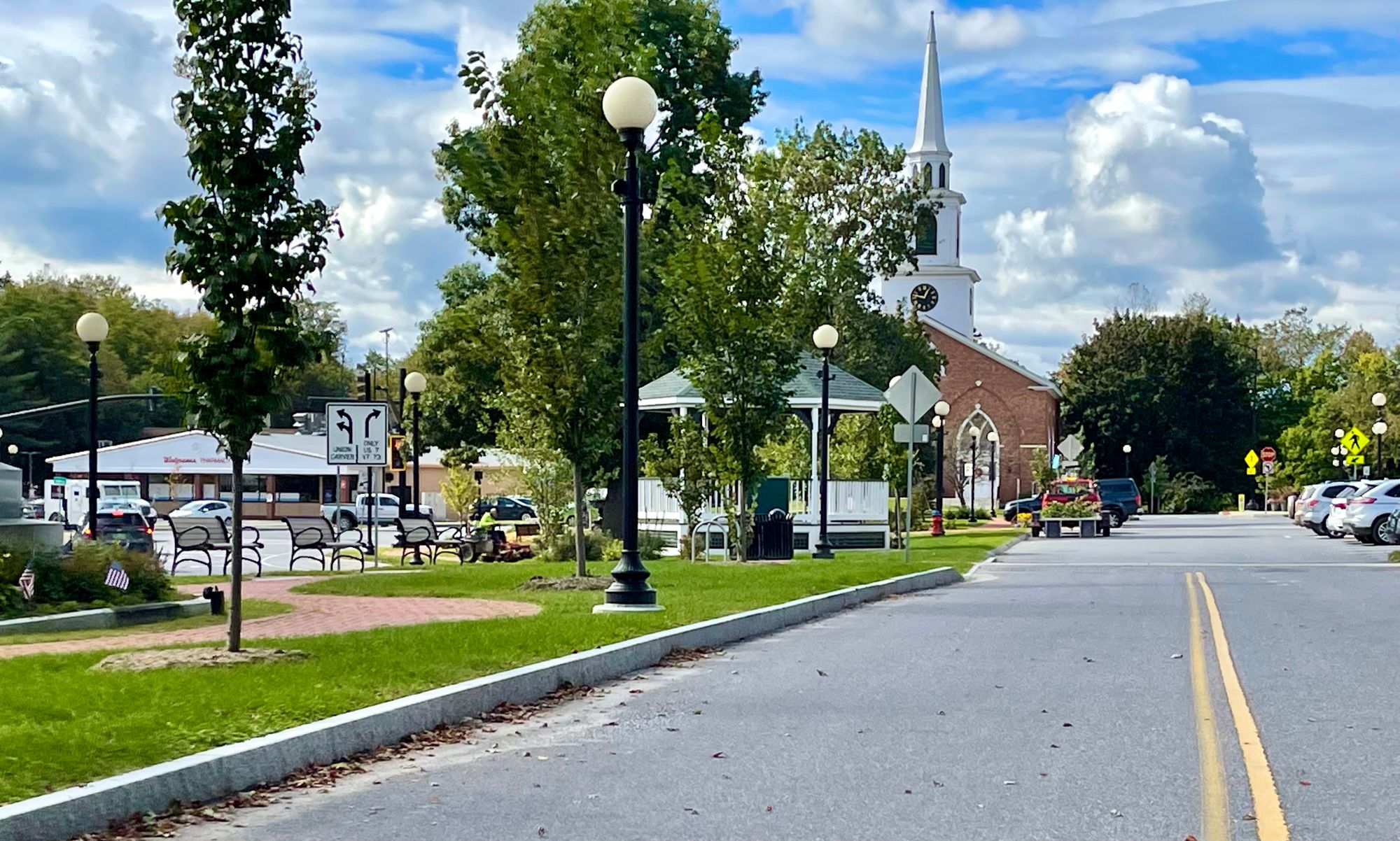
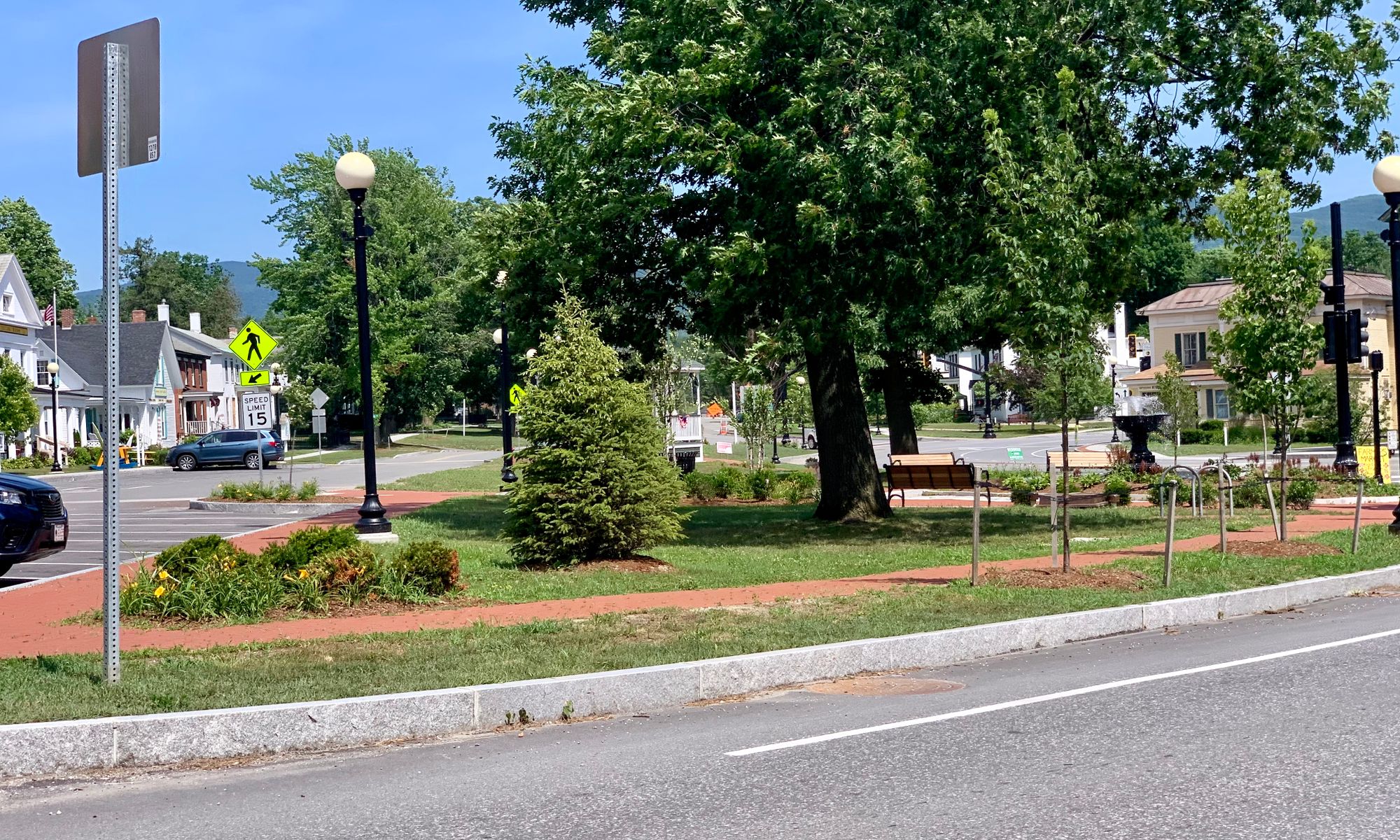
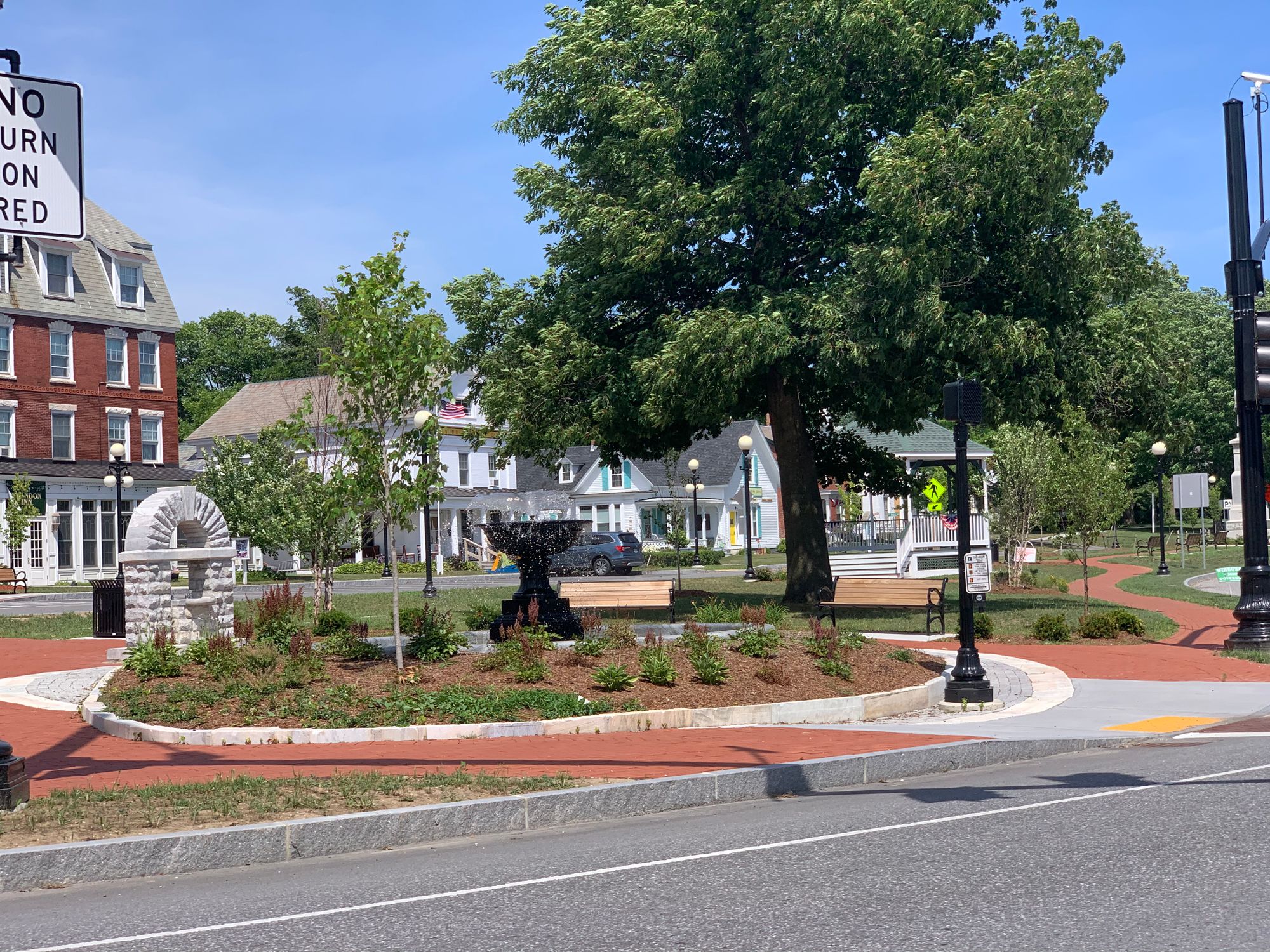
Sidewalks, Intersections, and Corners - Some of the Best
Two major benchmarks that can be of use for Vermont communities are Saratoga Springs and New Haven, Connecticut. These prominent towns offer an example for every small- or medium-sized town.
Saratoga Springs as a Benchmark
Not too far away from many of these places is Saratoga Springs, New York, which has one of the most dynamic main streets in the country...which surprisingly also serves as a major state road. That road is Route 9, which starts in New York City and goes up to the Canadian border. Many of these towns in Vermont would benefit greatly from a similar approach to their streets.
Saratoga Springs has wide sidewalks, and the walking part of the sidewalk is near the buildings; meaning that one is separated from the road by grass, a planter, a large shade tree, or an actual plaza in front of each property. It is a perfect example of a double-loaded sidewalk. The street is both visibly and mentally removed from view and therefore has limited impact on pedestrians. It is safe for people of all ages and children to roam freely.
Meanwhile, café seating is both next to the building and often in the areas where sidewalks have been extended, once again creating a double-loaded setting, filled with life.
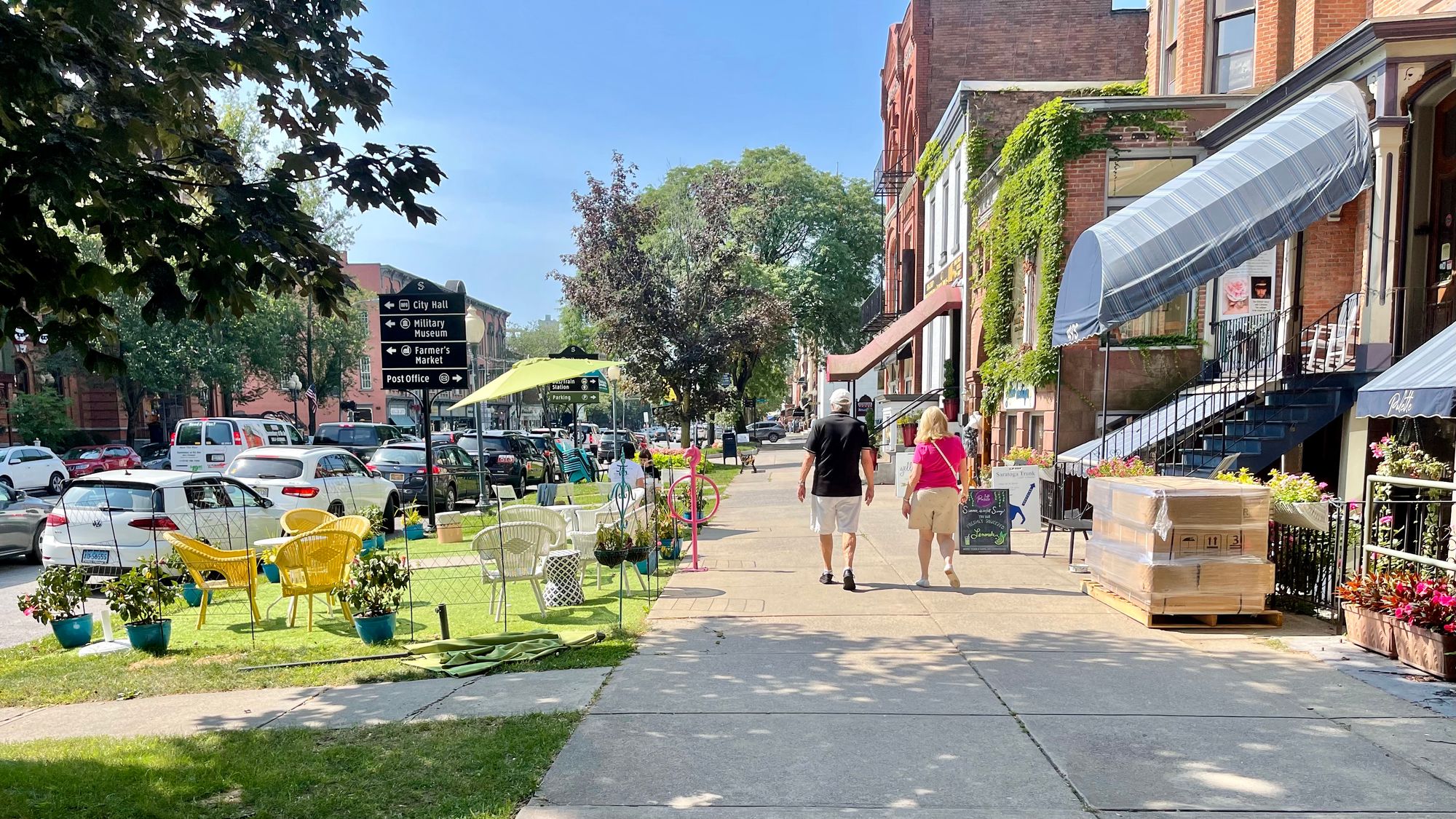
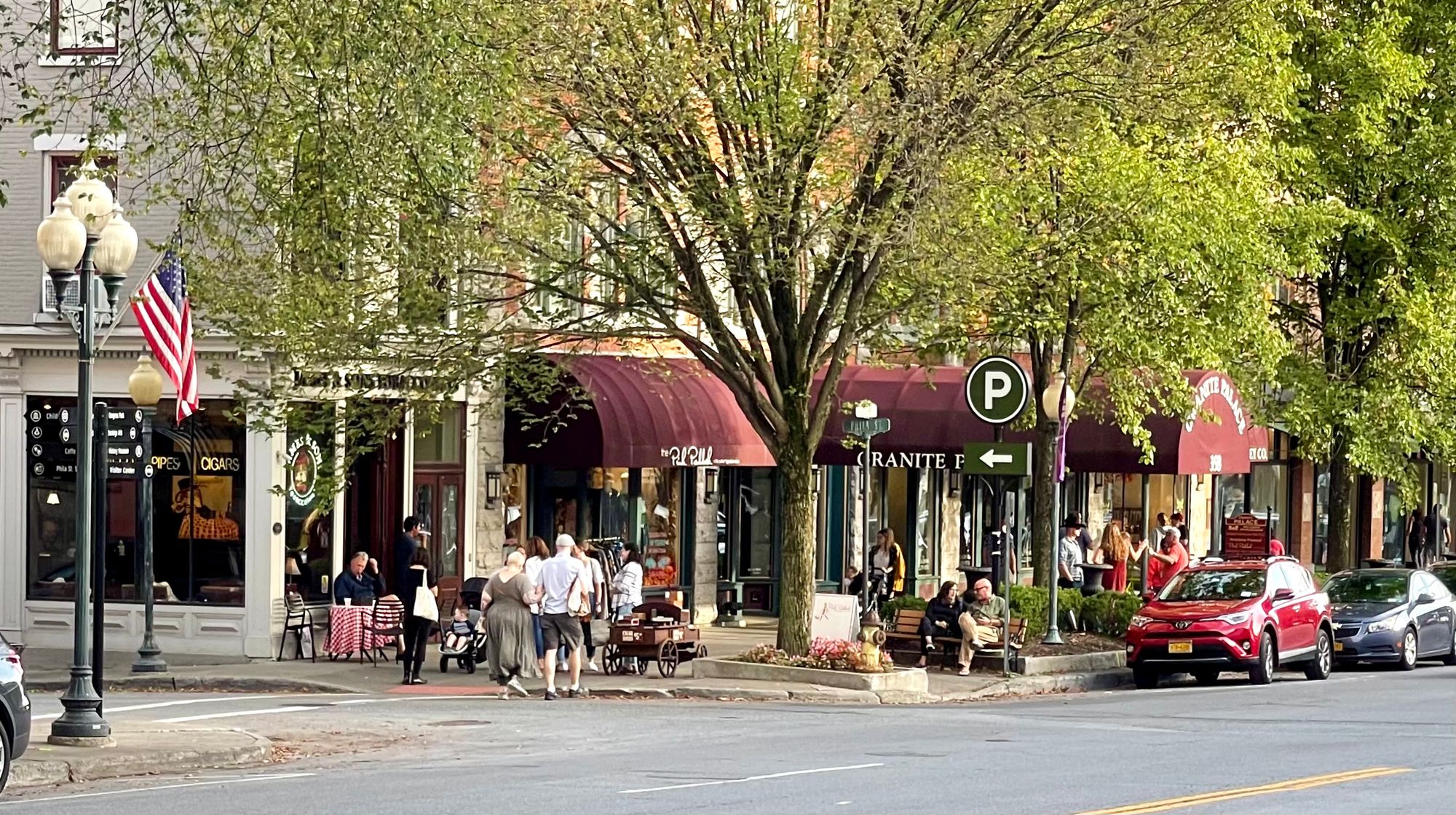
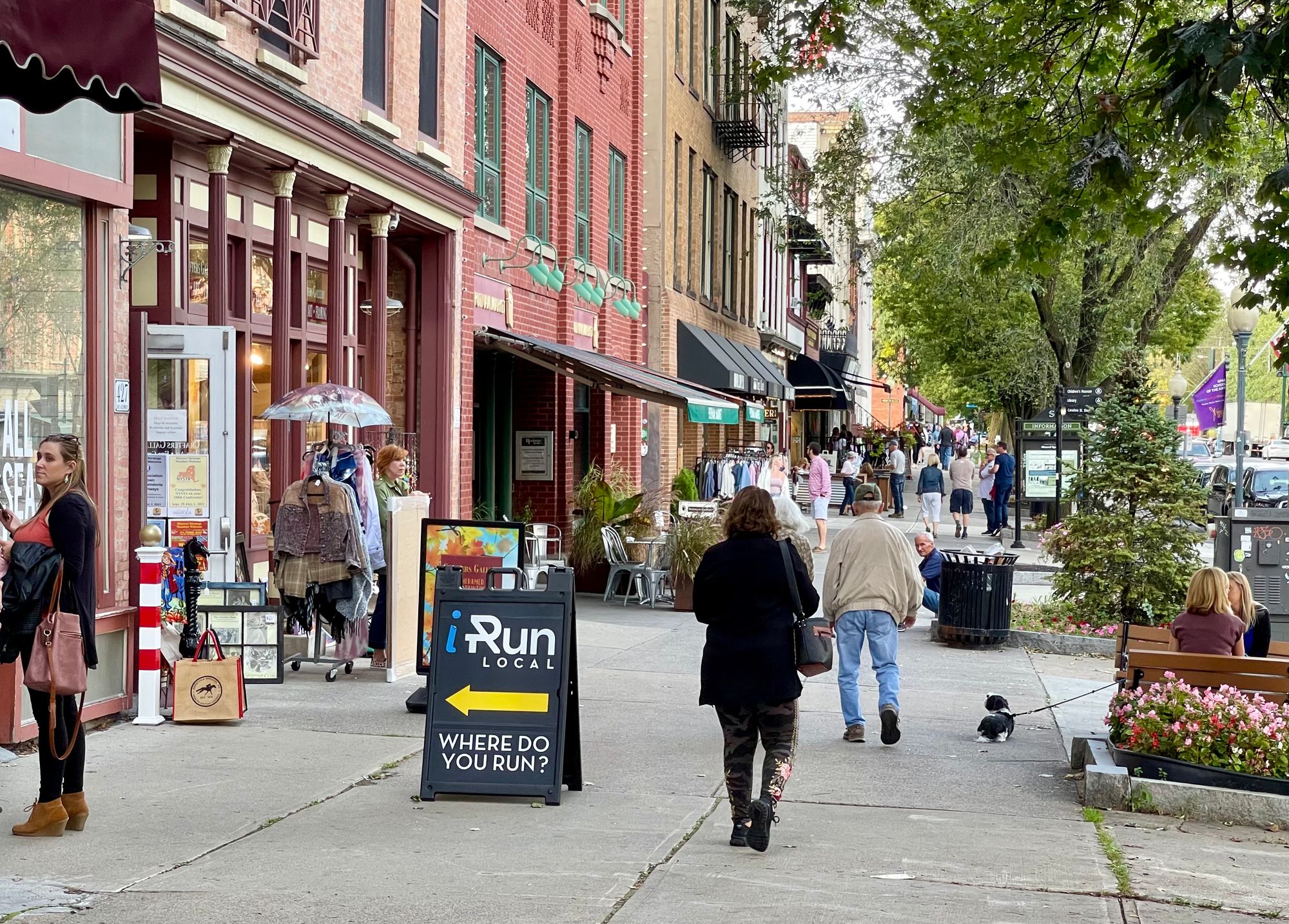
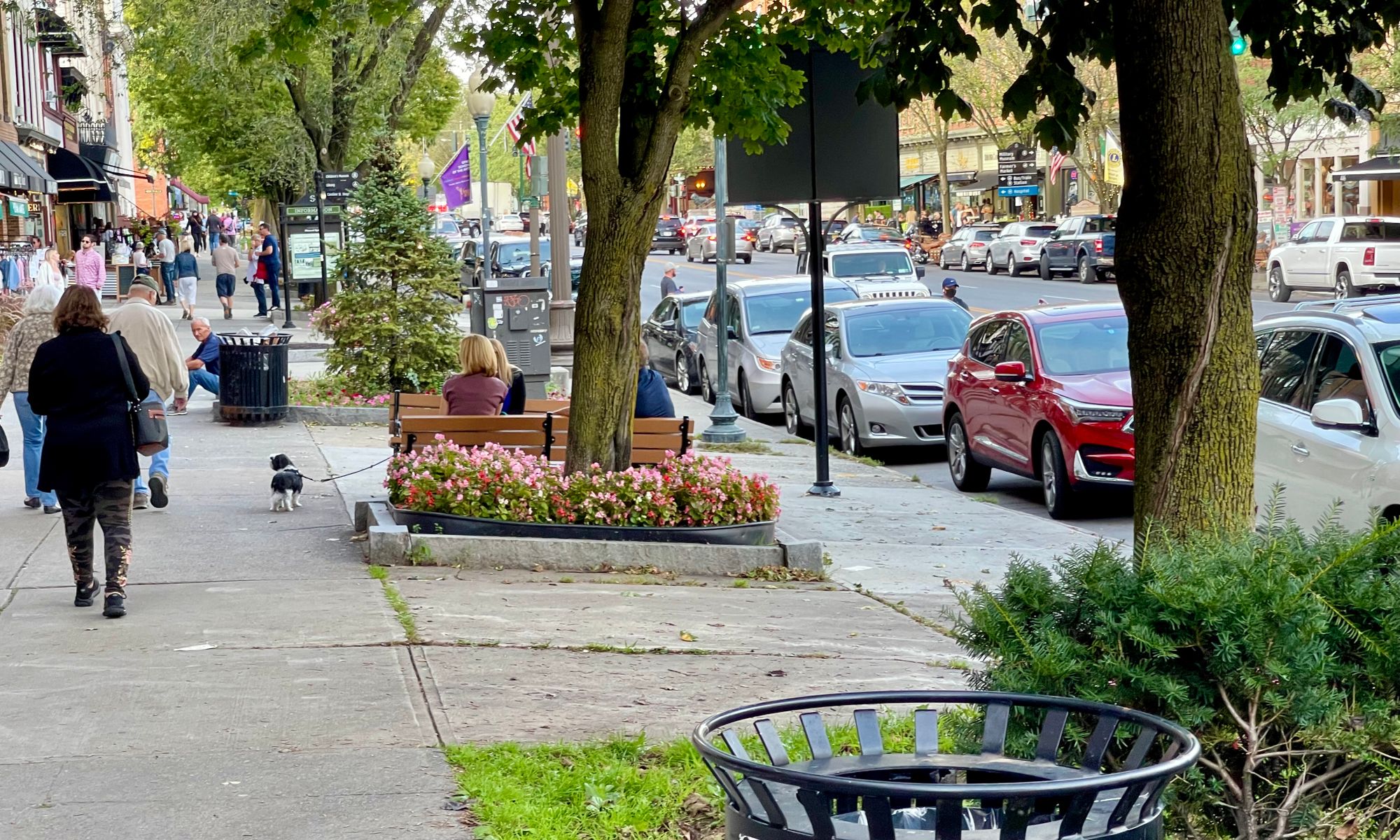
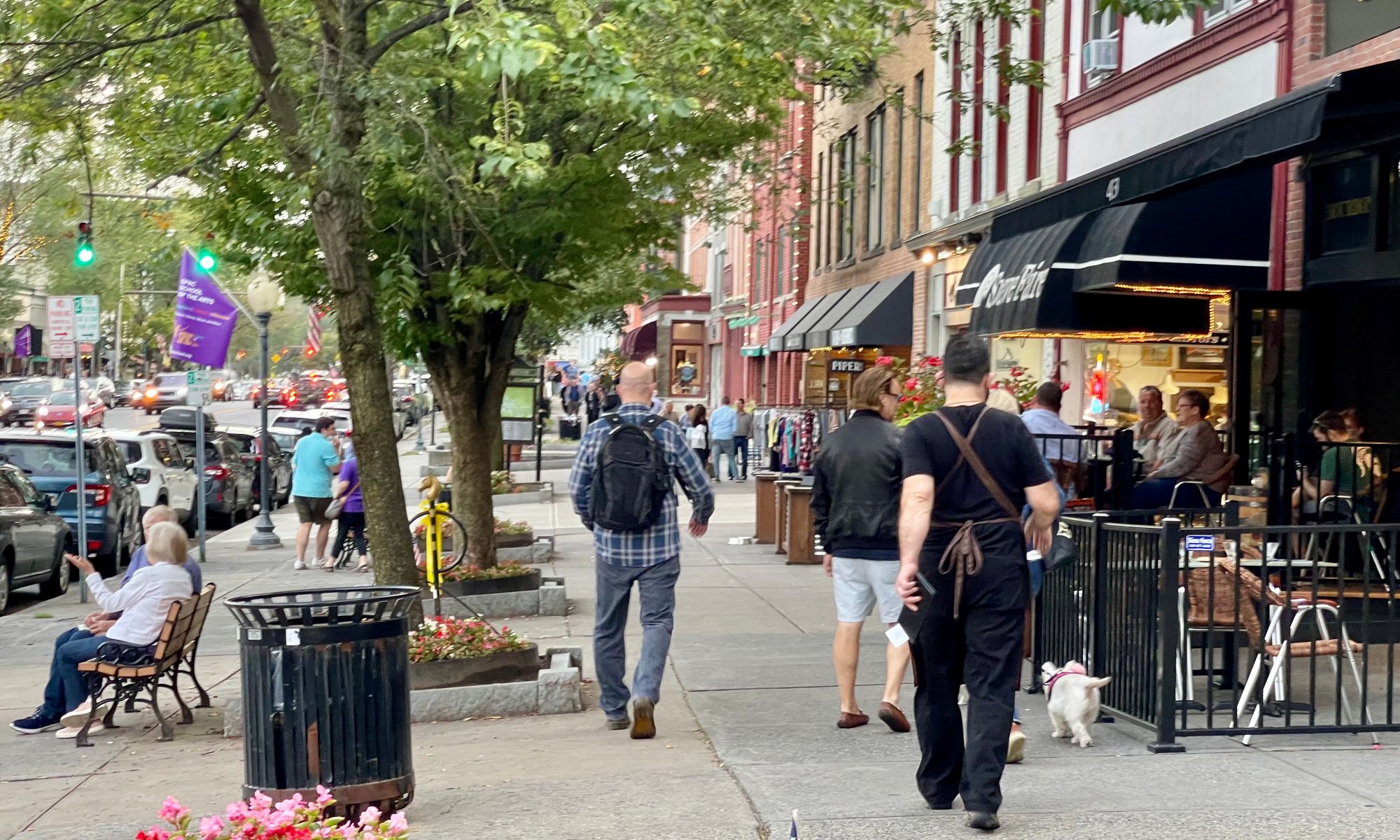
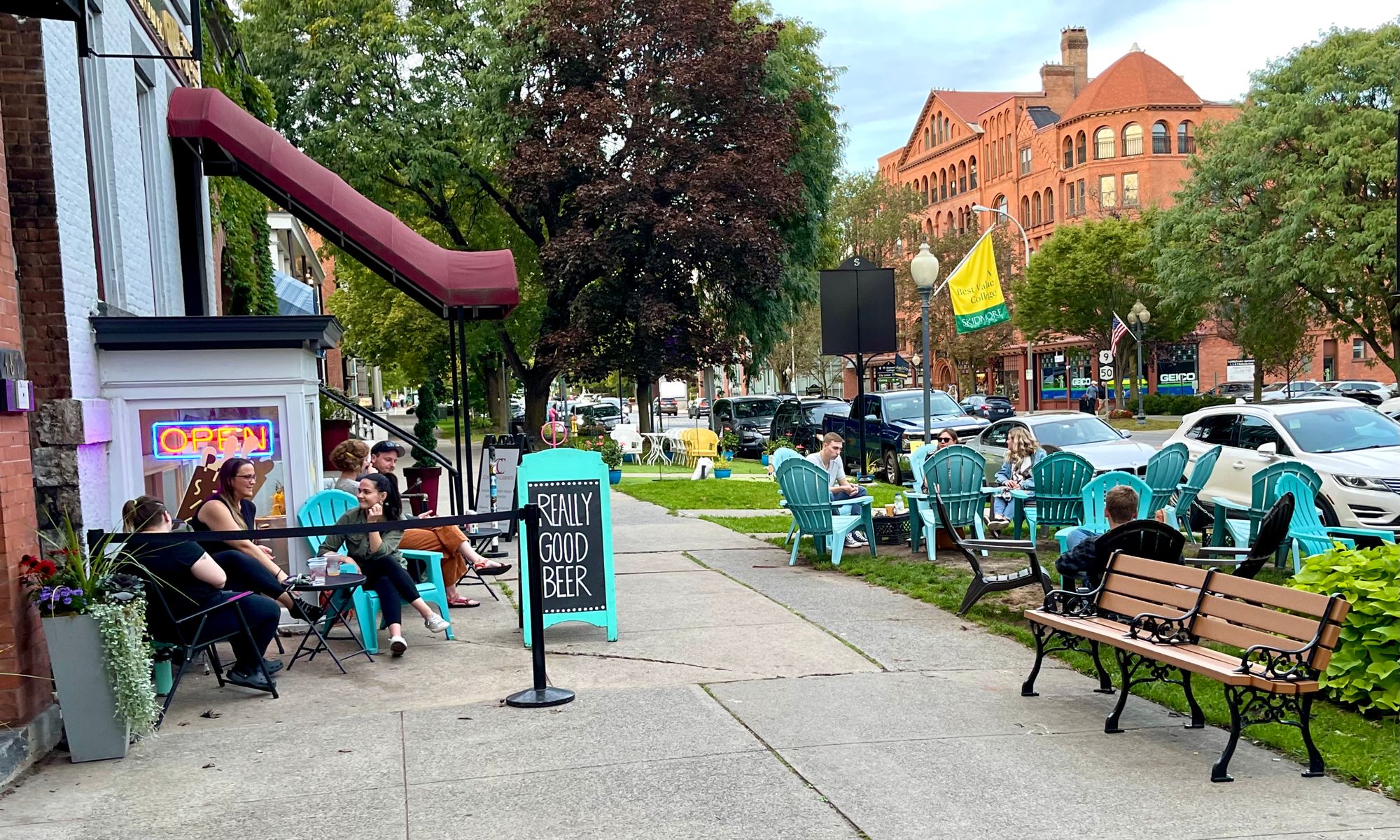
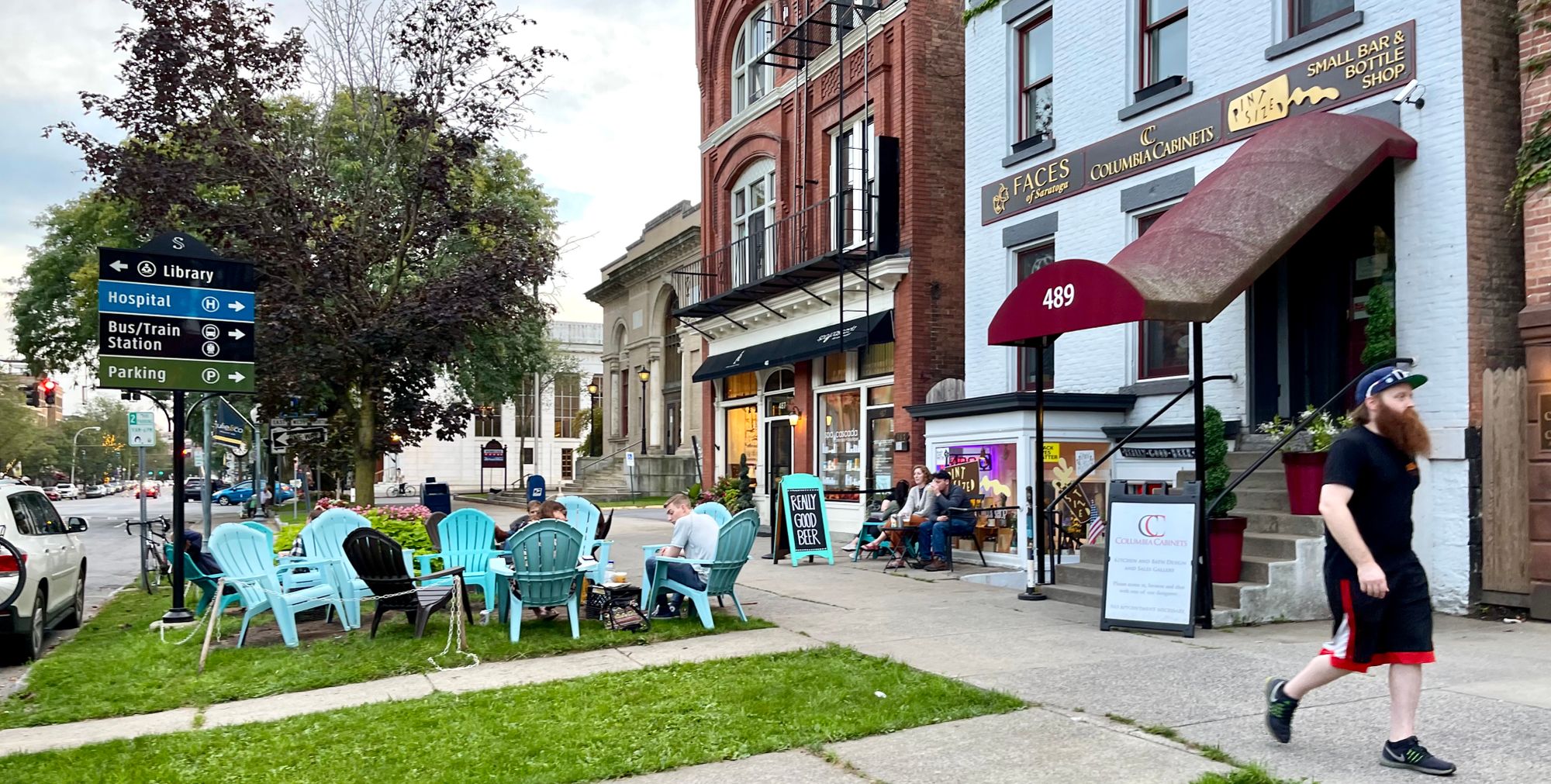
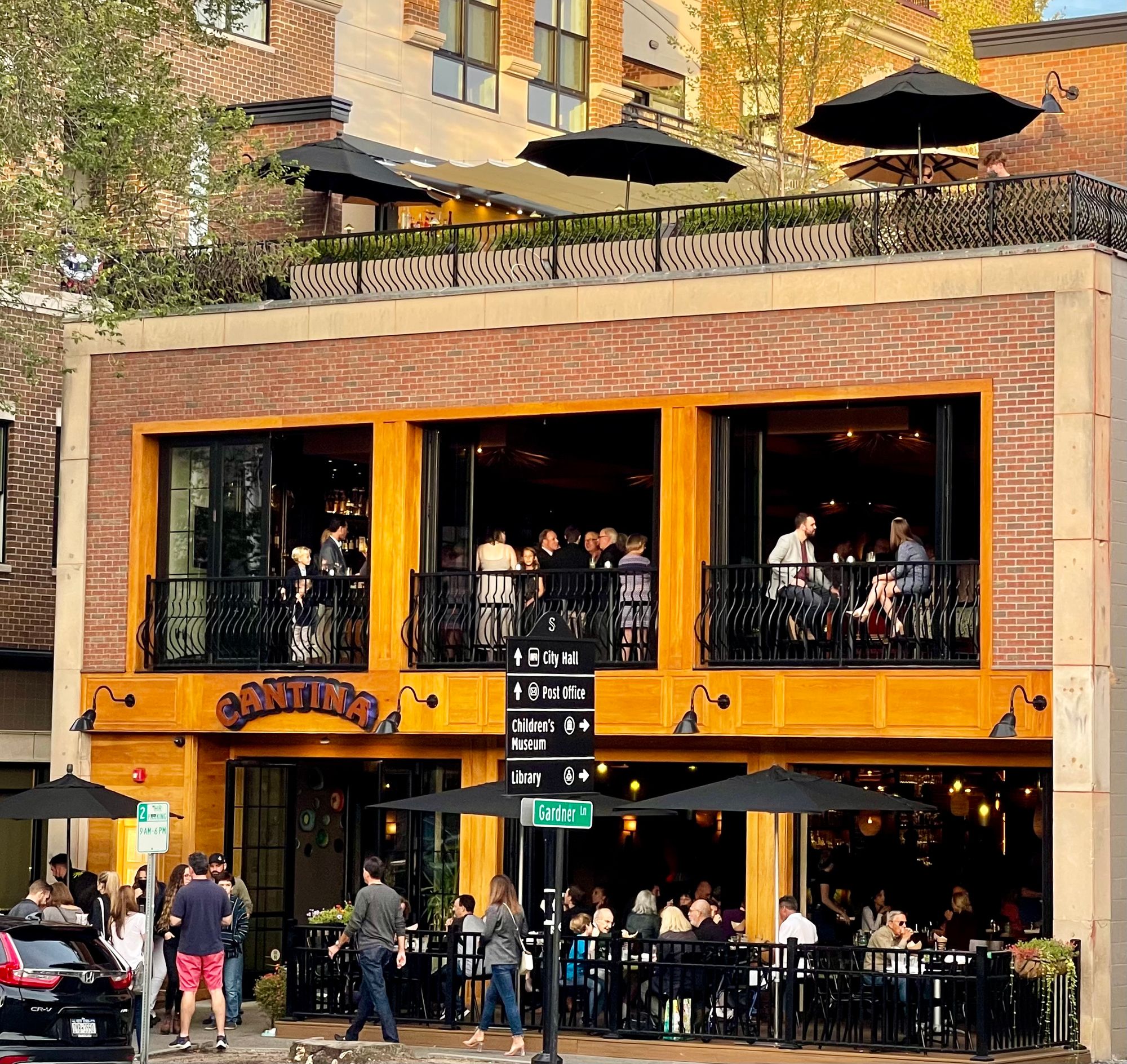
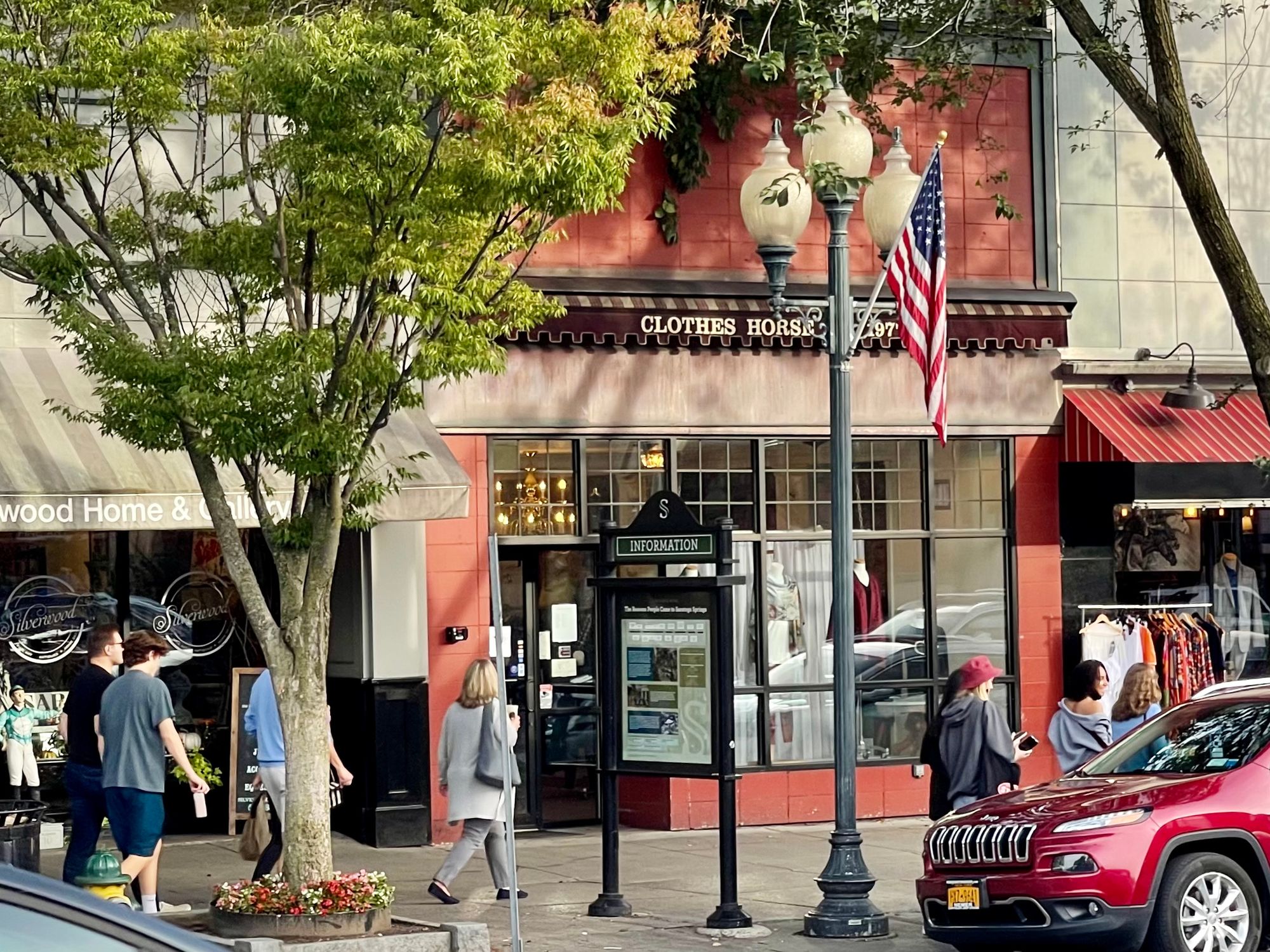
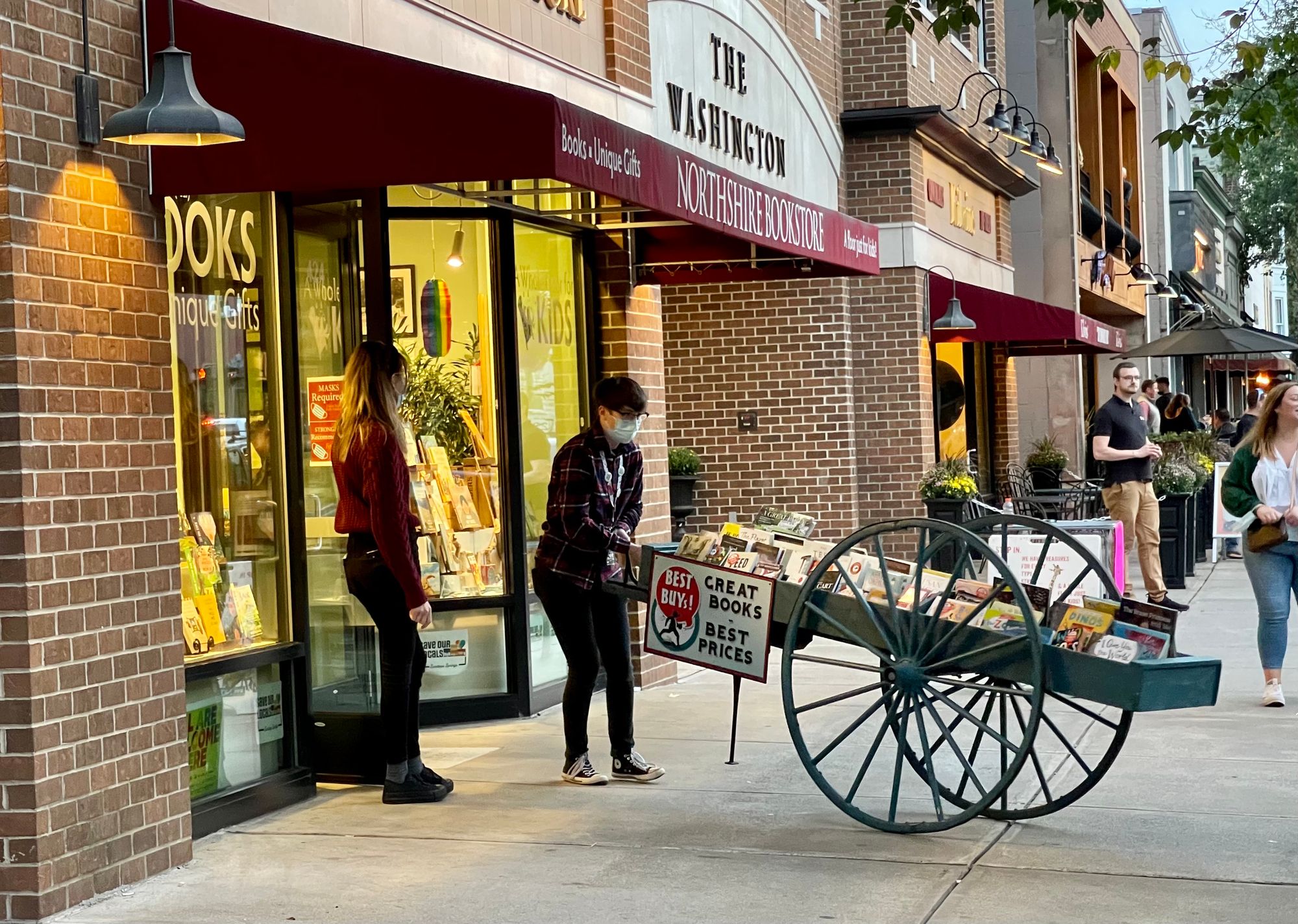
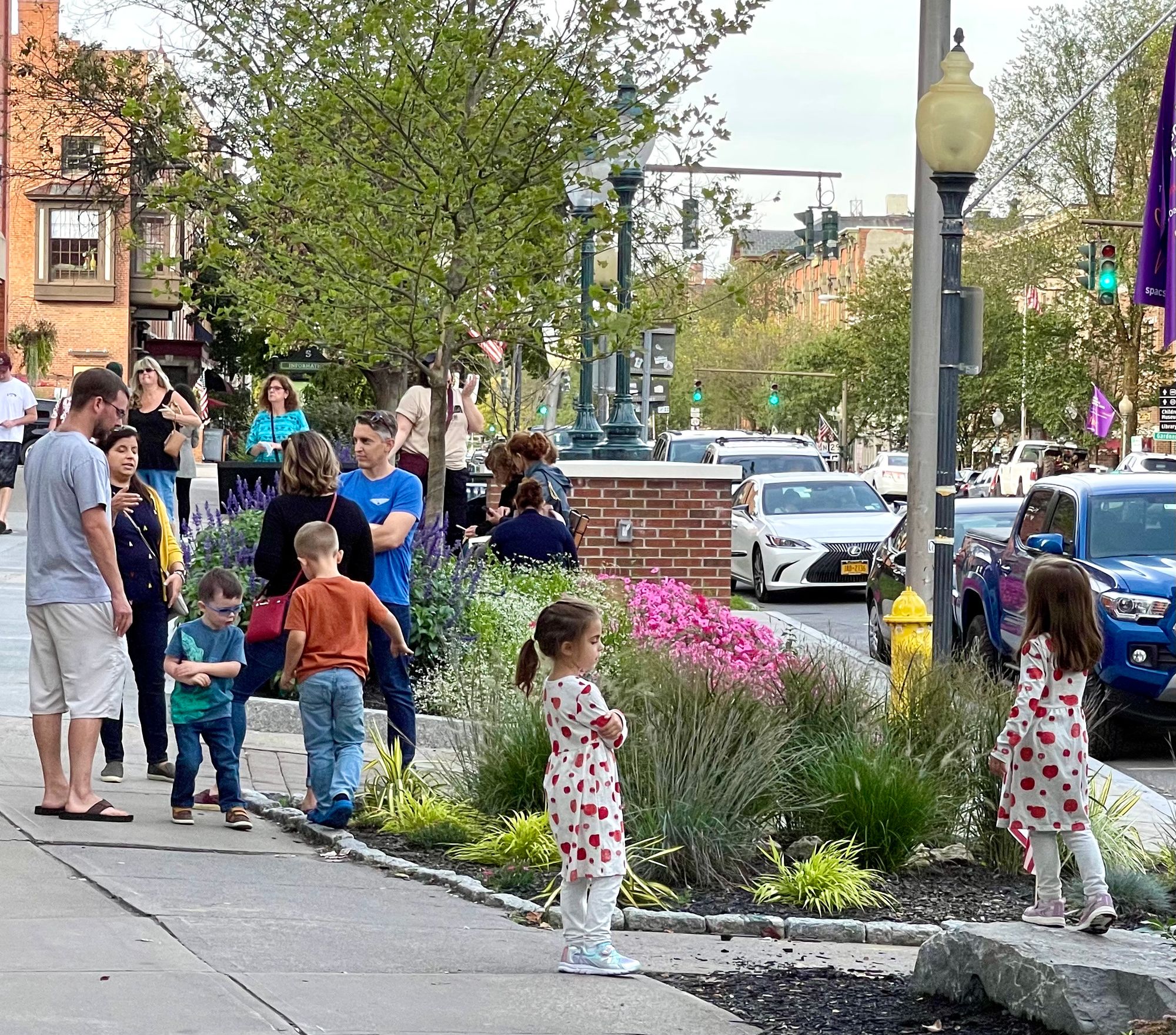
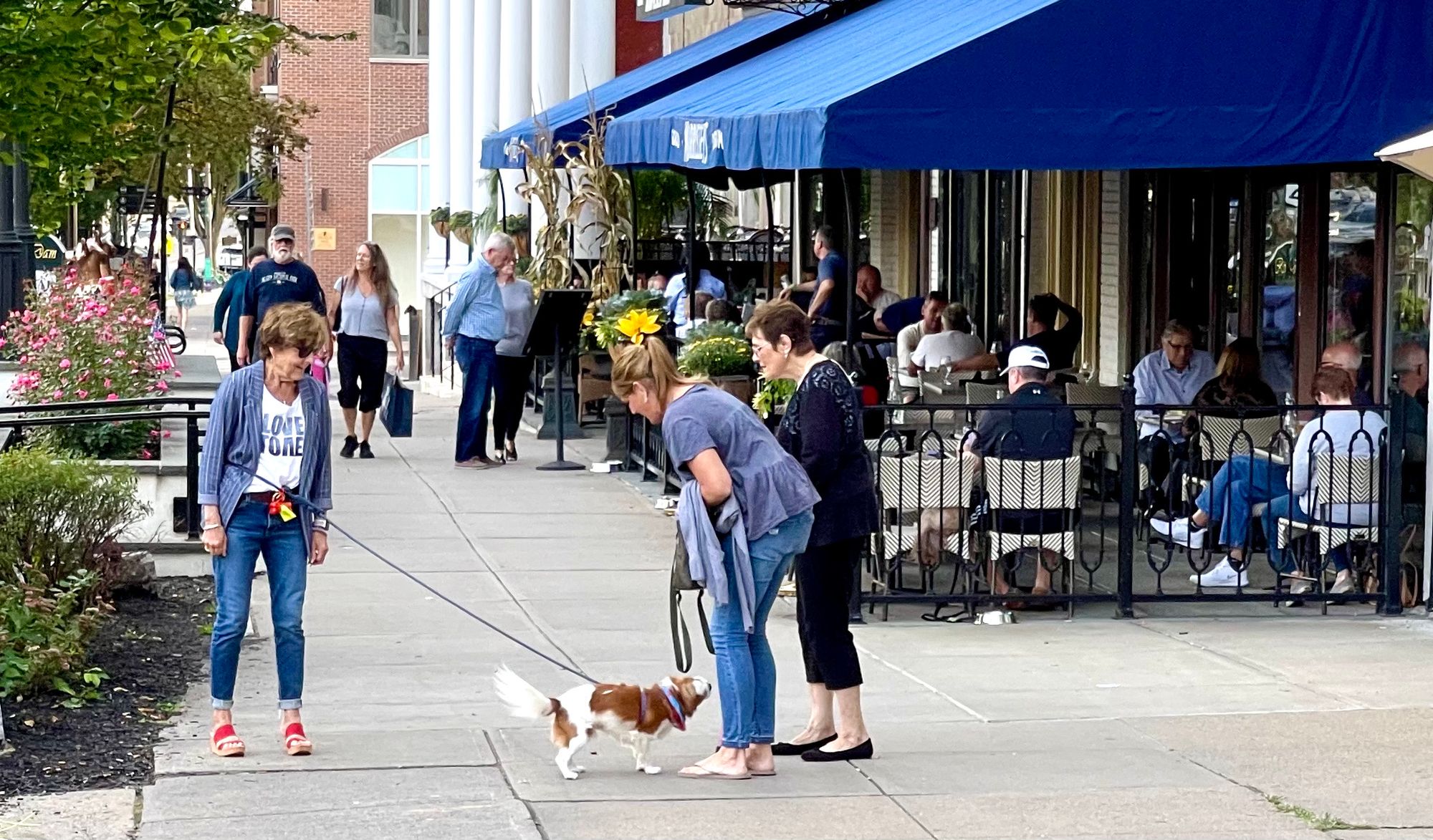
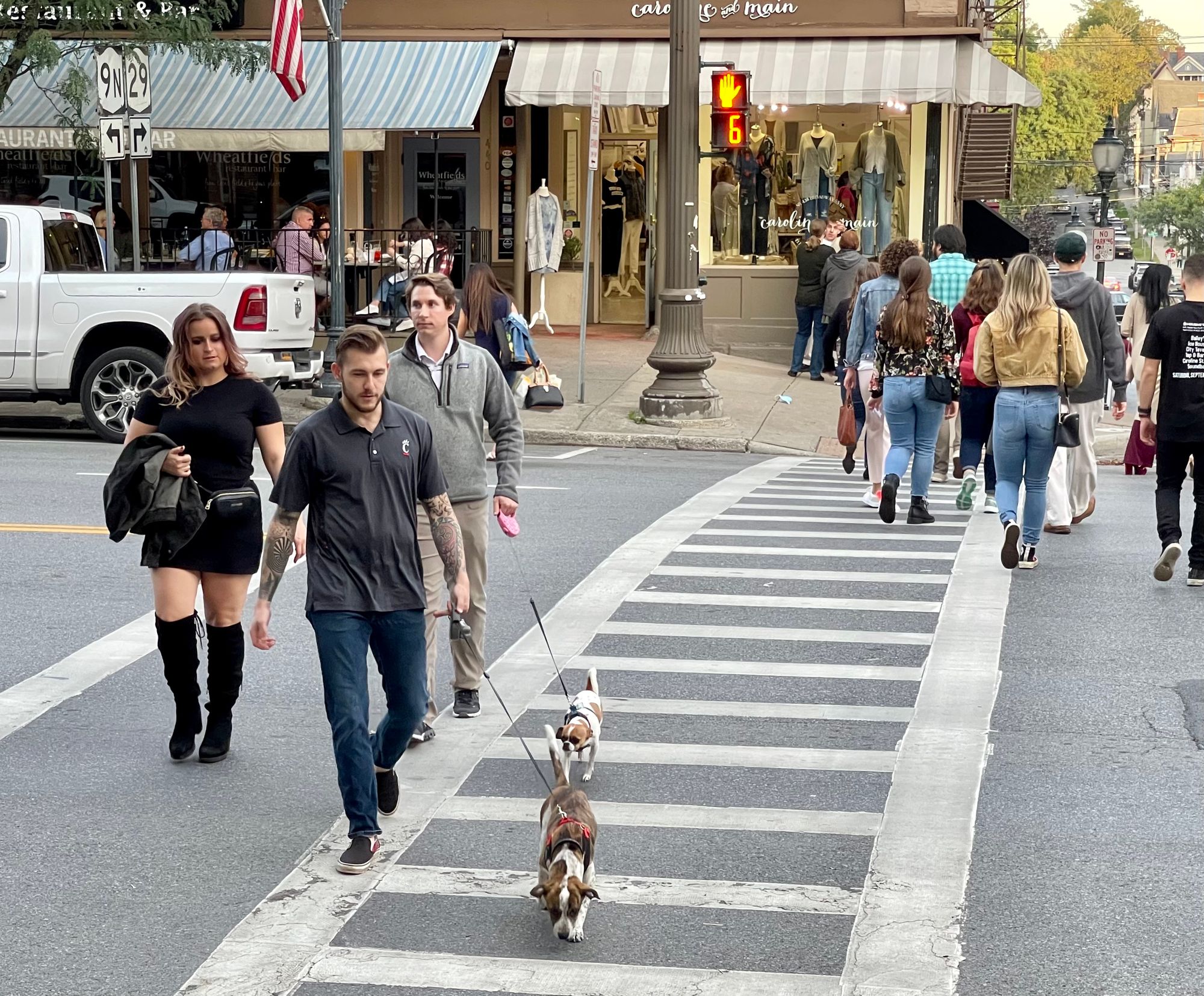
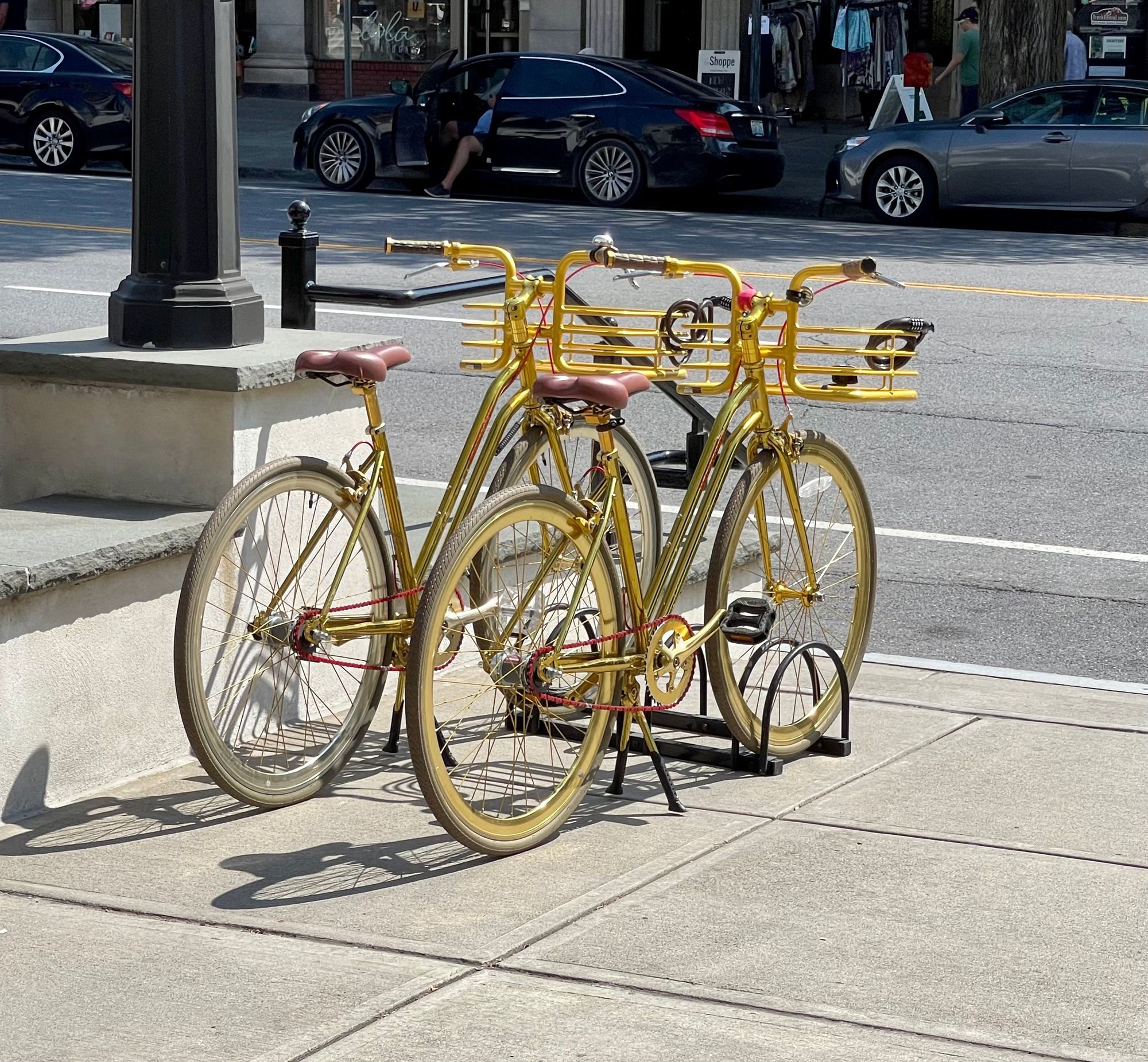
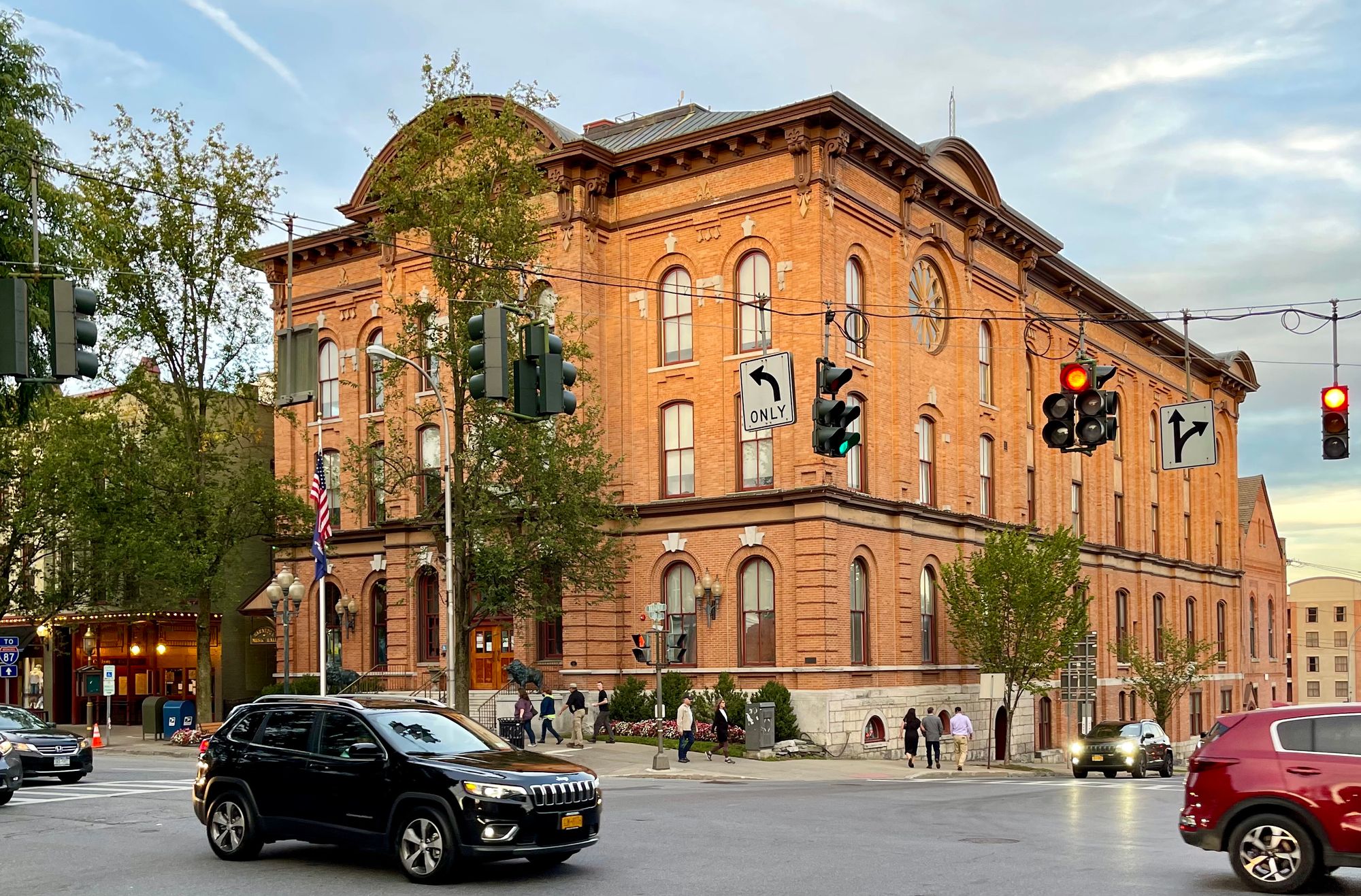
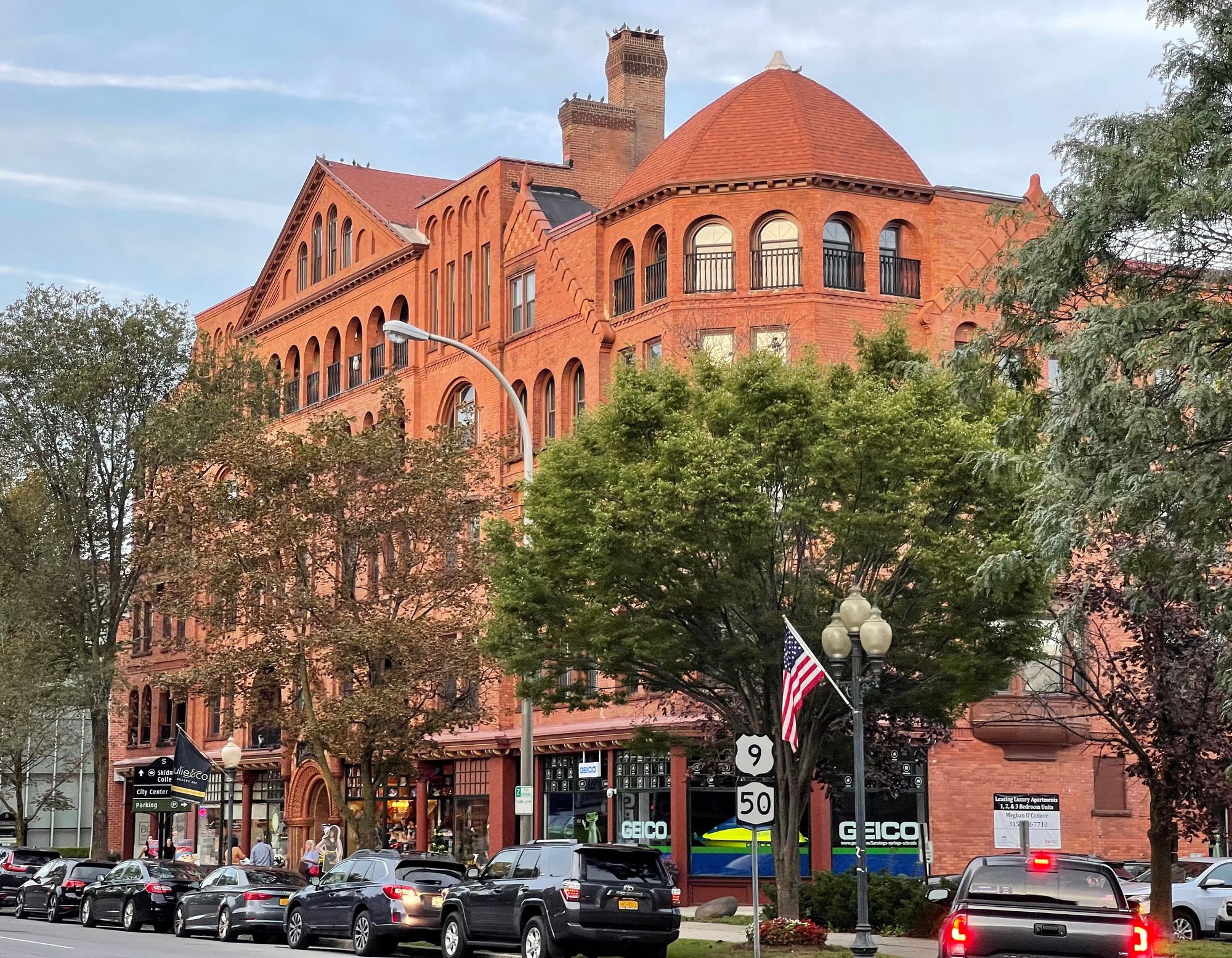
Meanwhile, the sidewalk plaza in front of the historic Adelphi Hotel is unique, making it a major destination for Saratoga Springs.
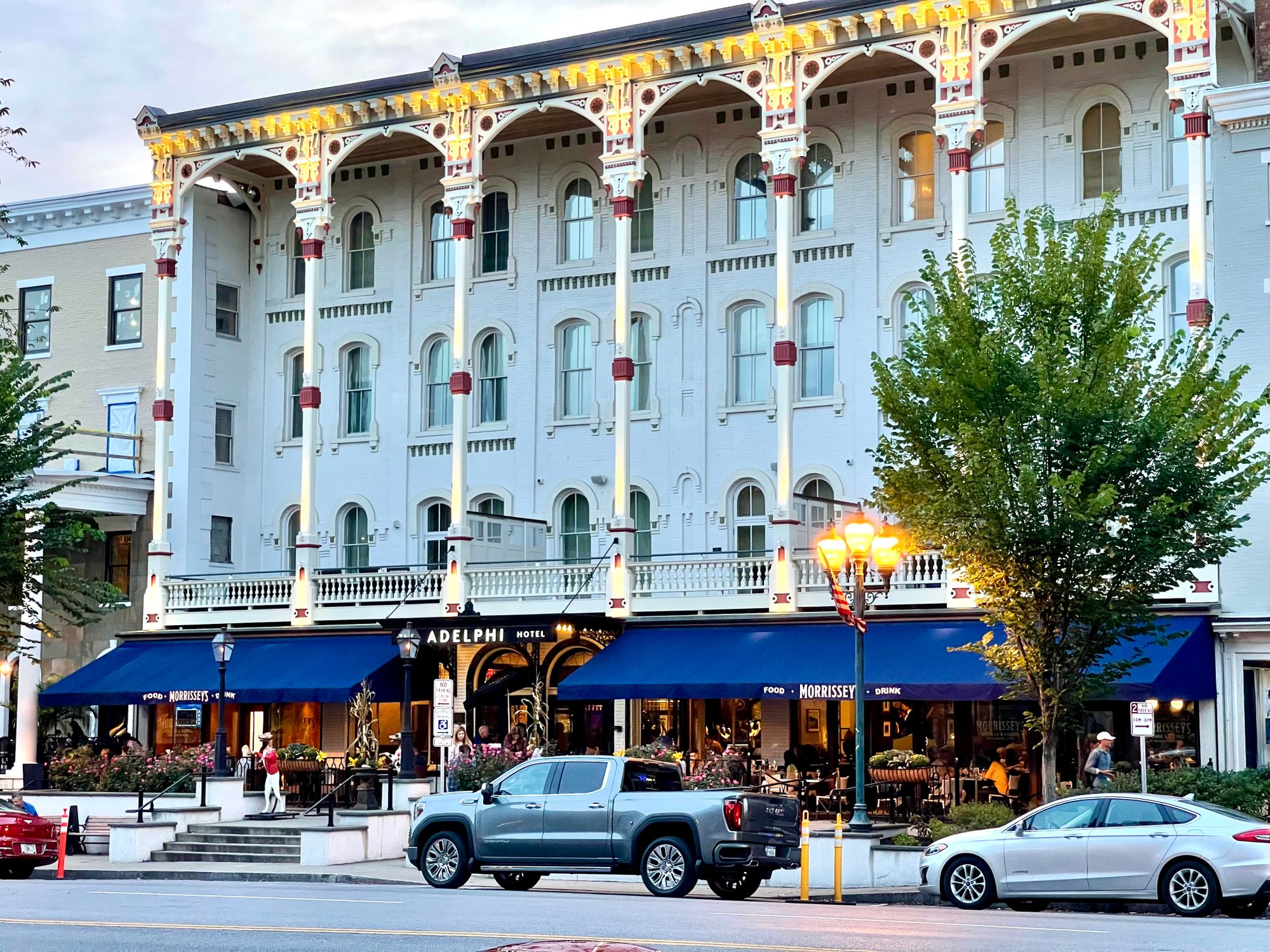
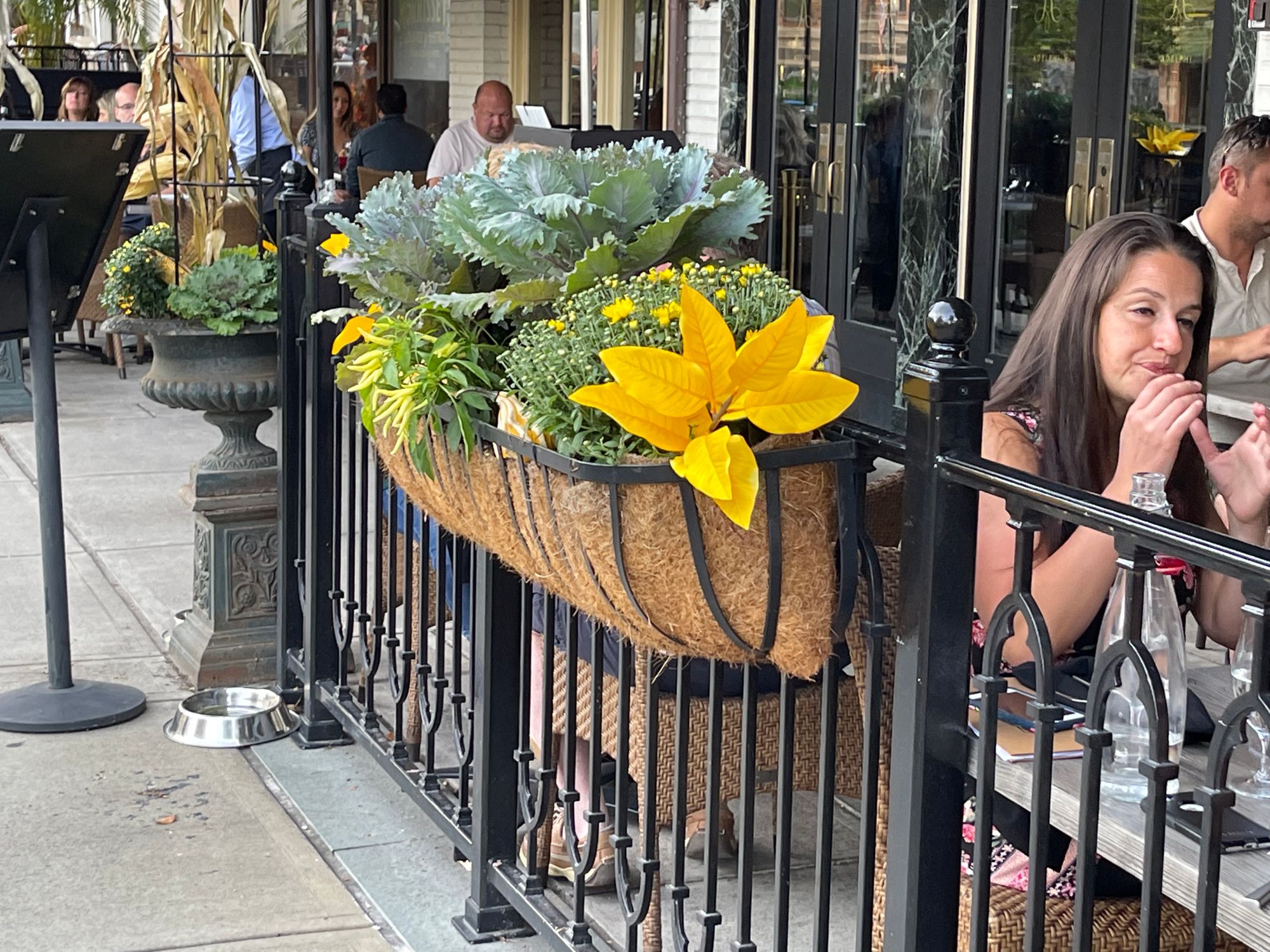
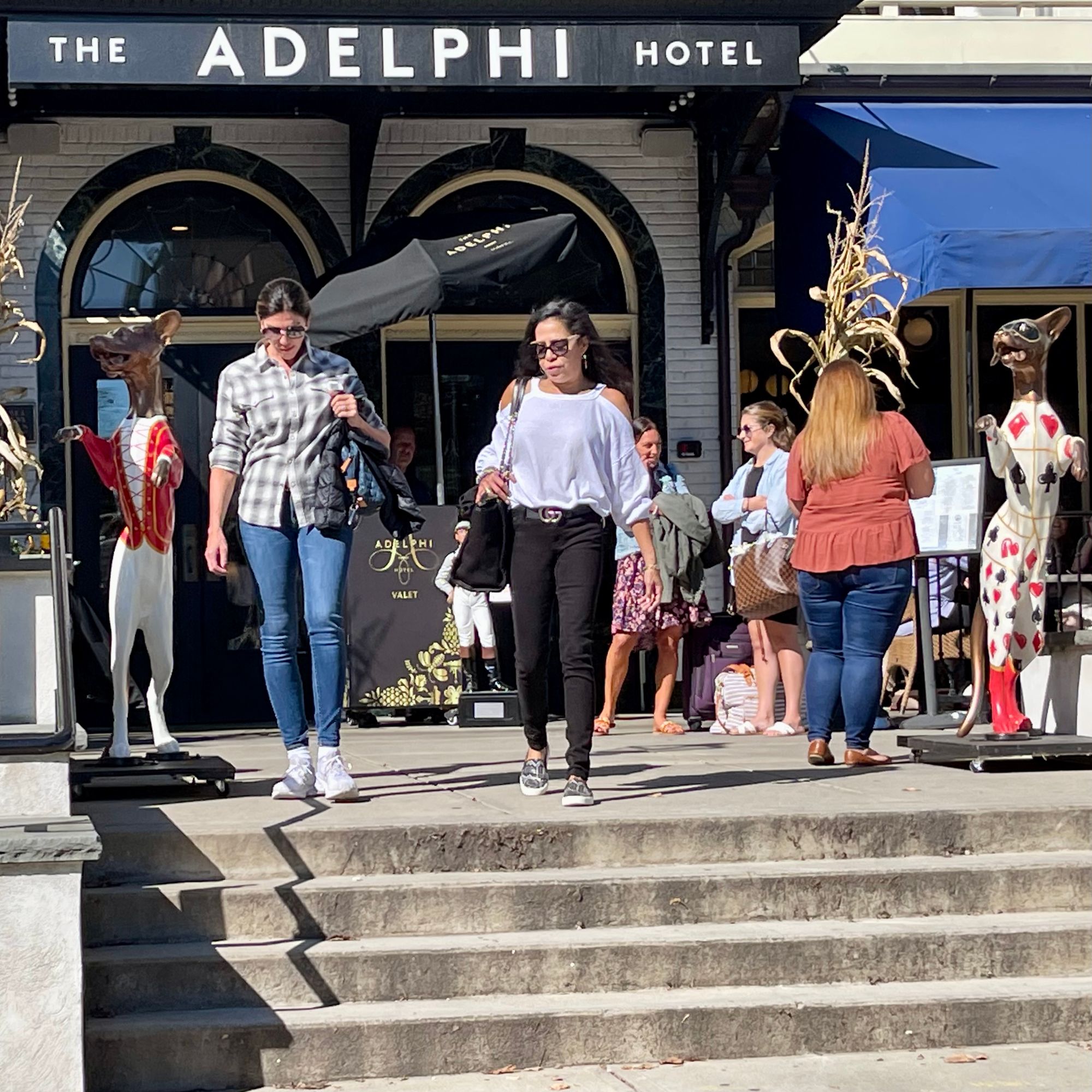
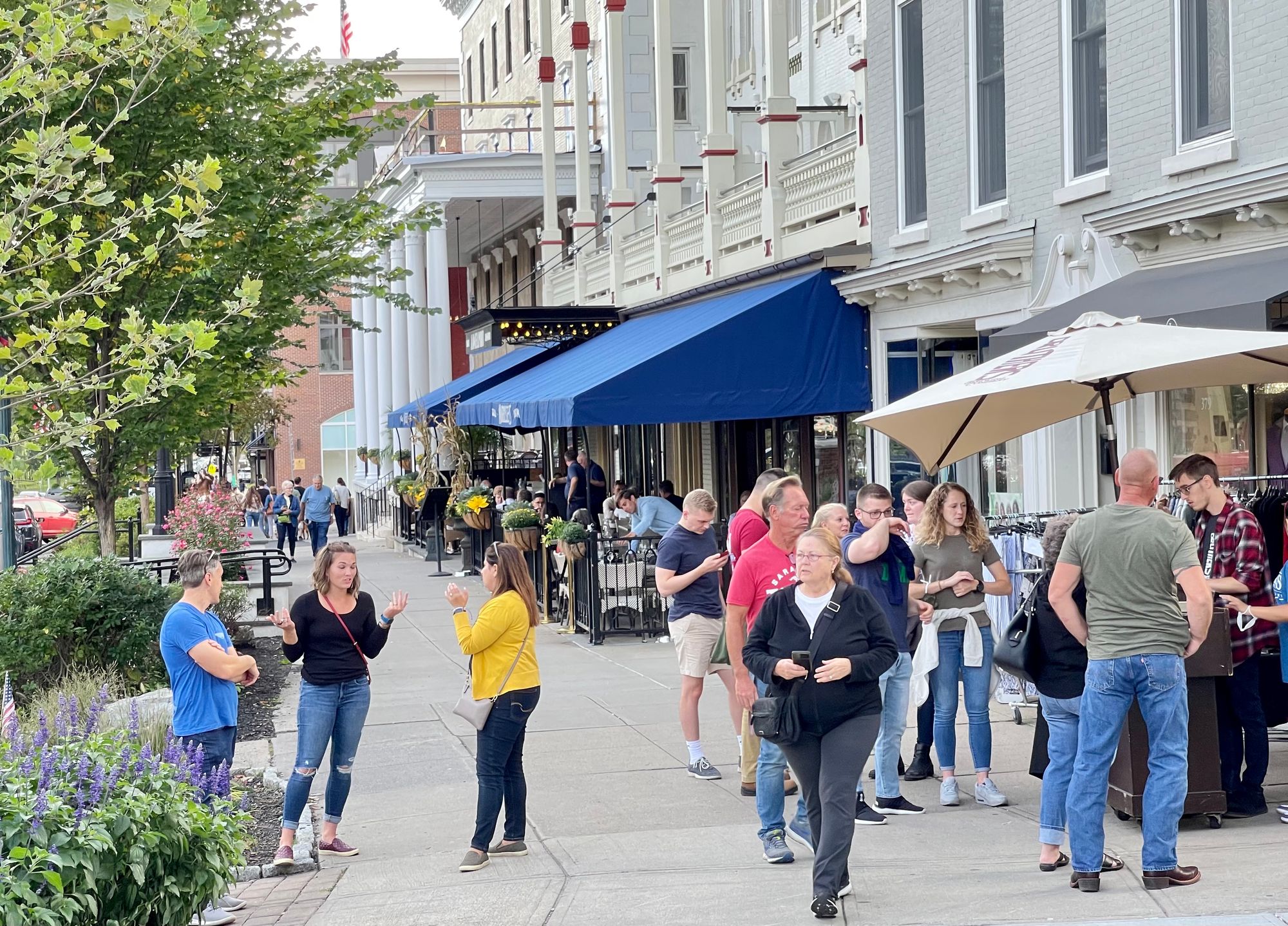
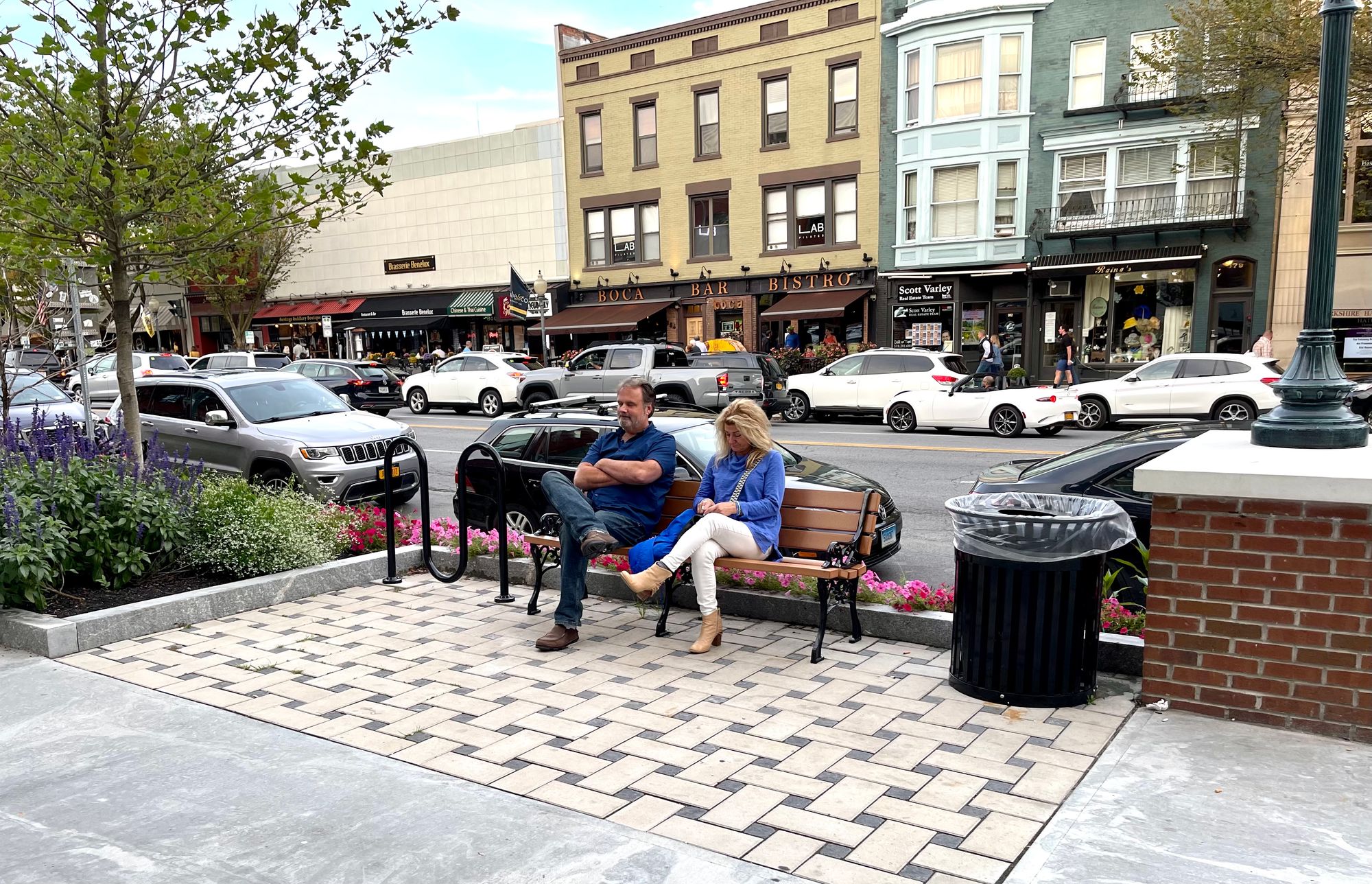
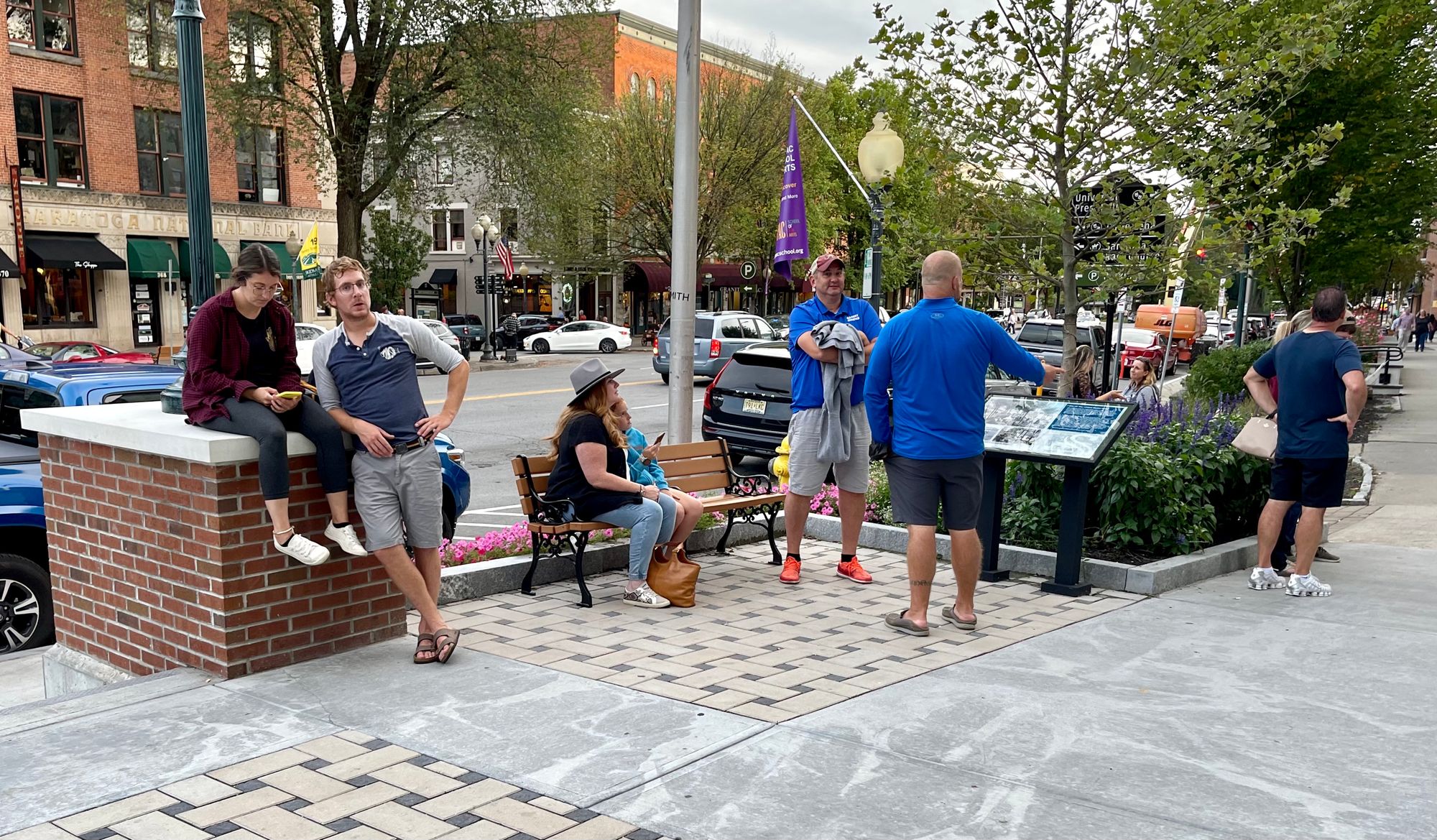
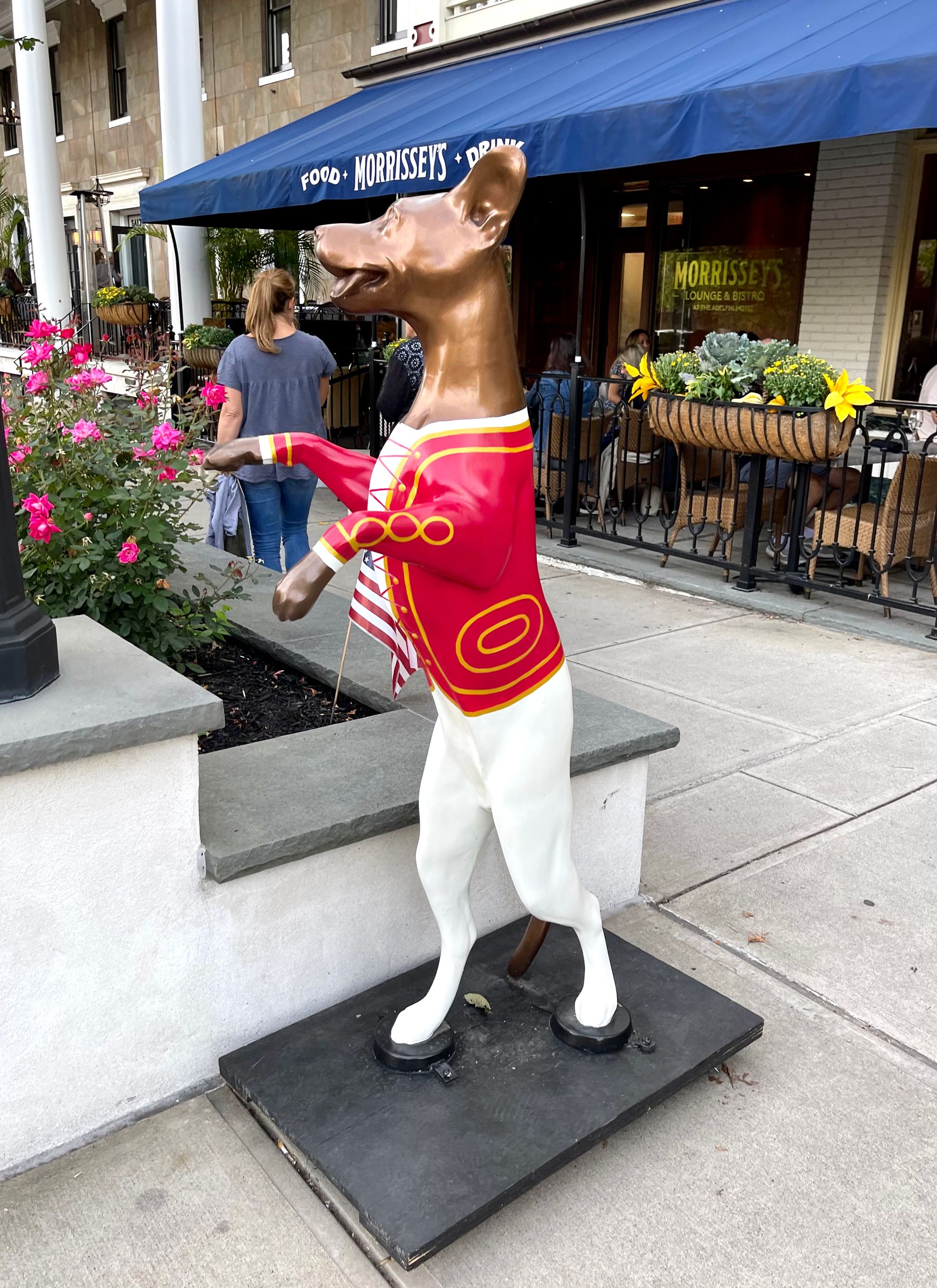
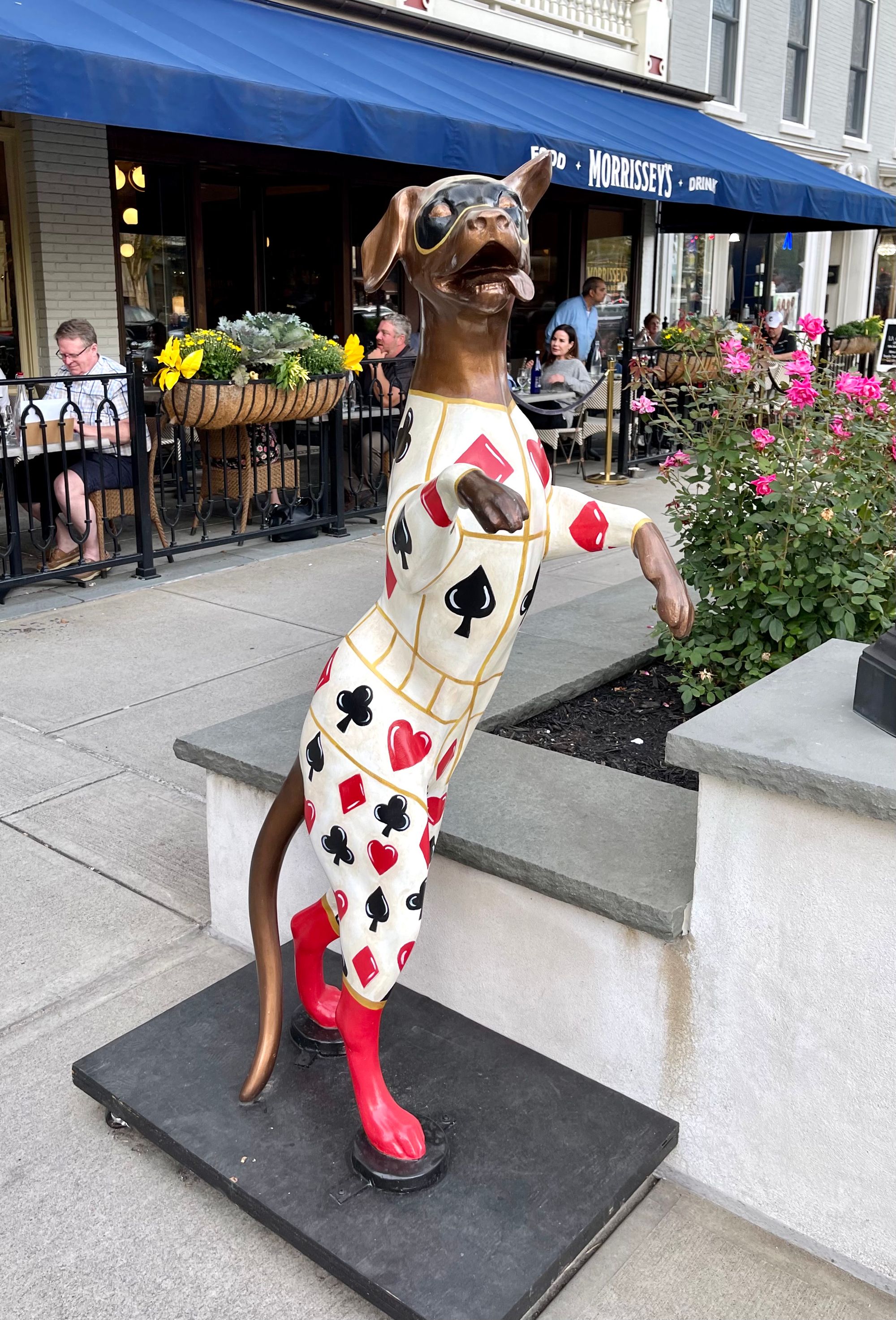
Saratoga Springs - Corners
The crosswalks at the corners are set back away from the main road and offer a space for vehicles to stop before the crosswalk. This allows for a less hostile setting and a way for drivers and people to connect safely, separate from the main road.
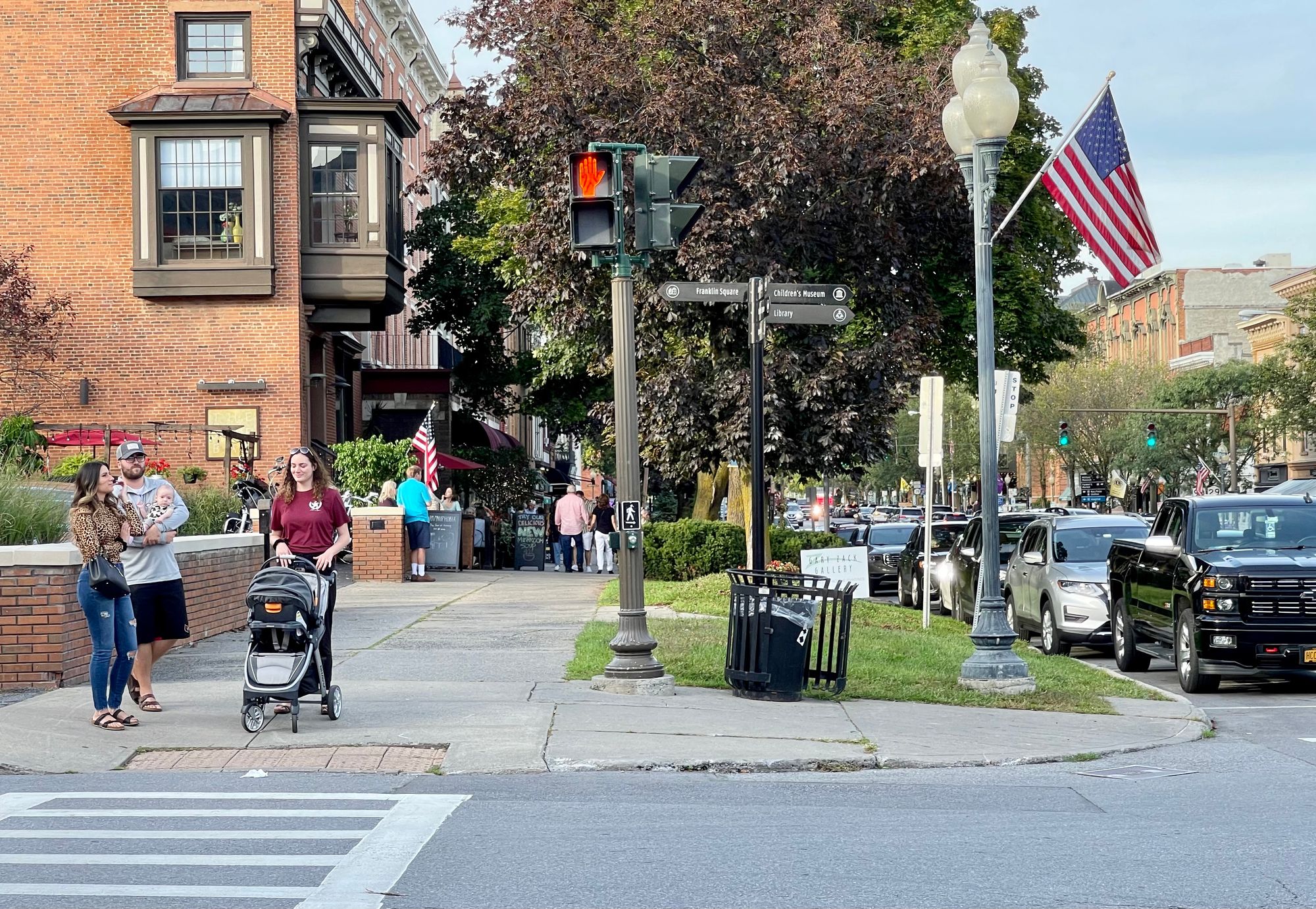
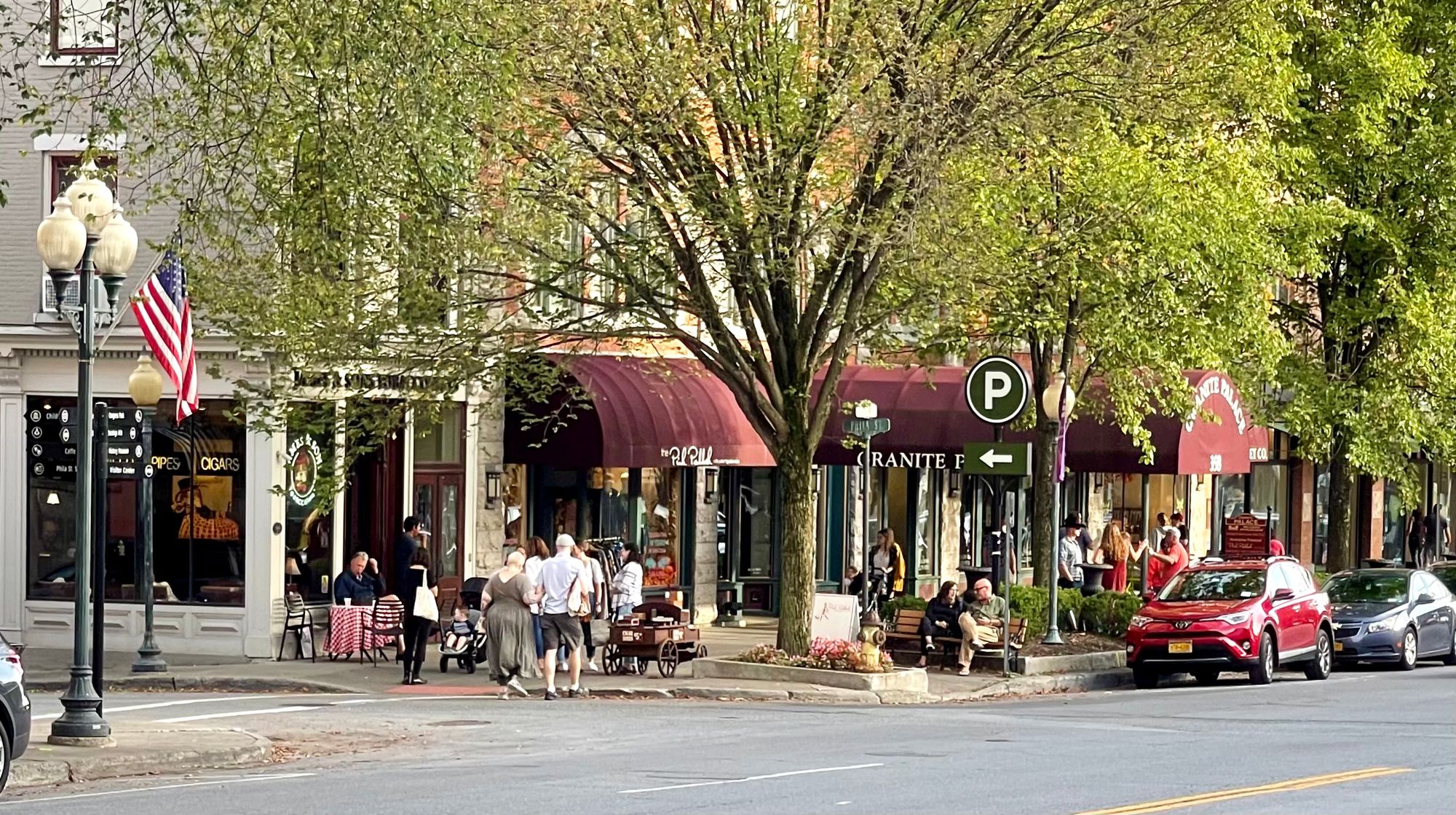
The corners are safe for pedestrians because the crossings are set back
New Haven, CT: Another Benchmark
In 1980, we guided the early transformation of the intersection of Church and Chapel Streets in New Haven by providing flexible space for a variety of activities like outdoor seating, displays, and other retail activity. This process of widening sidewalks opened up the street for people. This effect was magnified with the subsequent narrowing of vehicle lanes on the street to 9.5 feet. Though the stretch still accommodated some parking, it significantly slowed down the traffic passing through. In so doing, it also created a destination; one that would soon become a de facto entrance to Yale from the downtown.
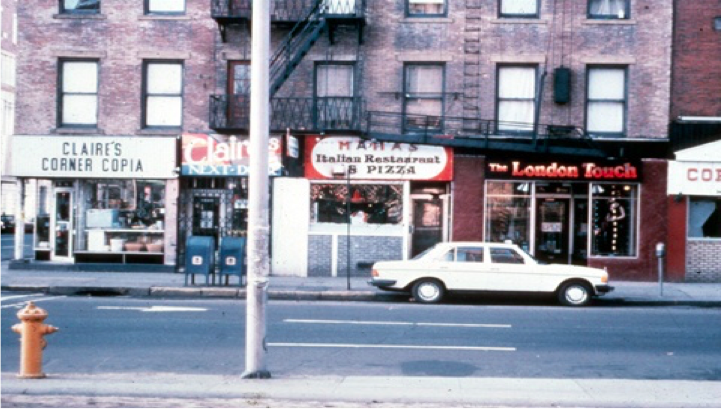
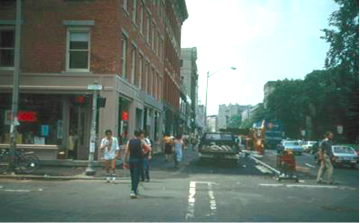
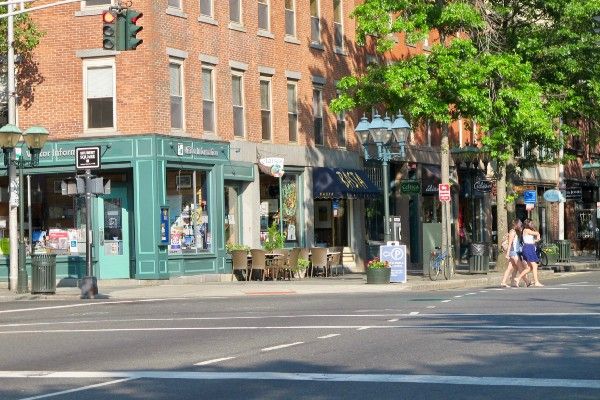
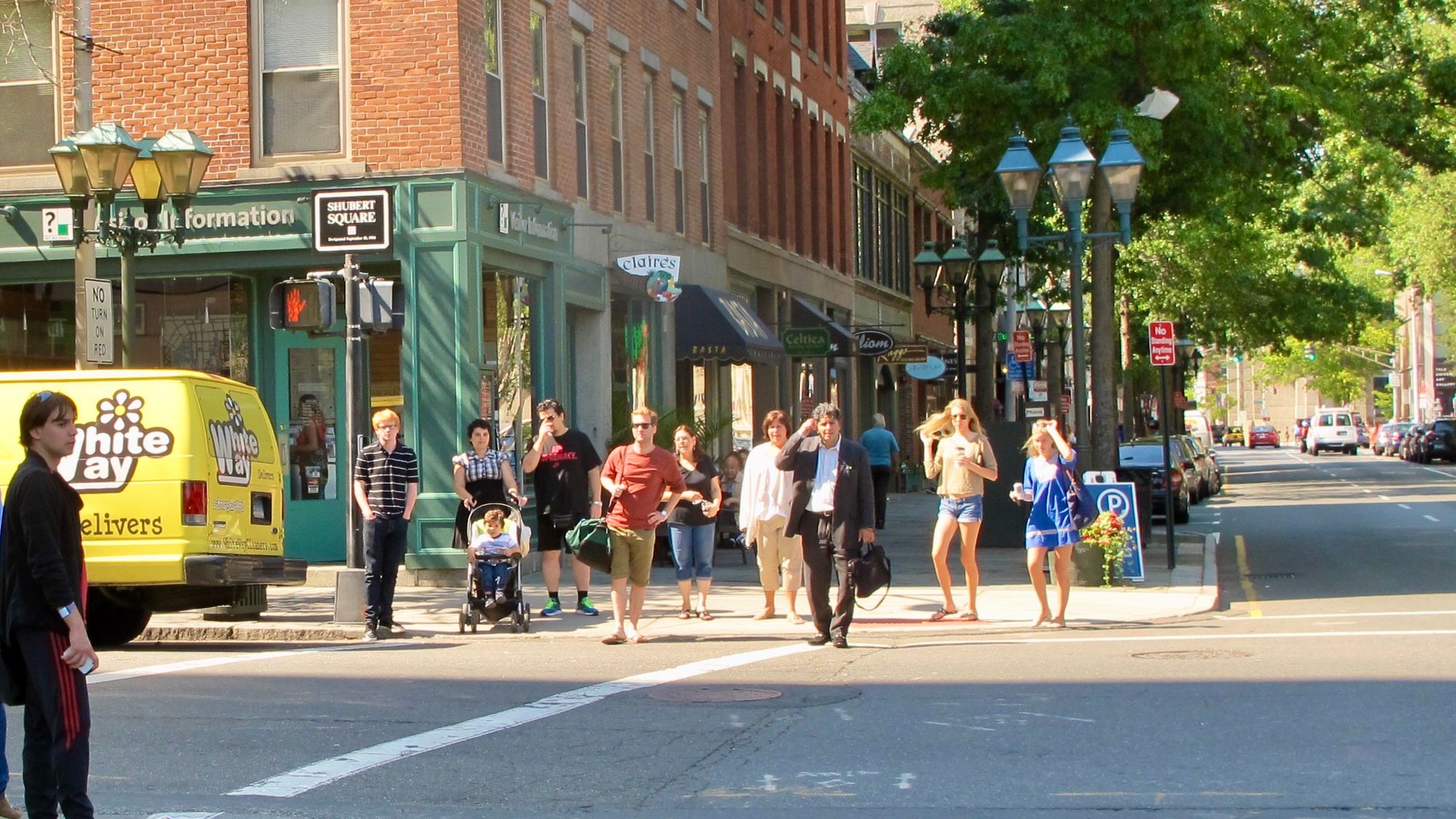
Local destination, Claire's Corner Copia.
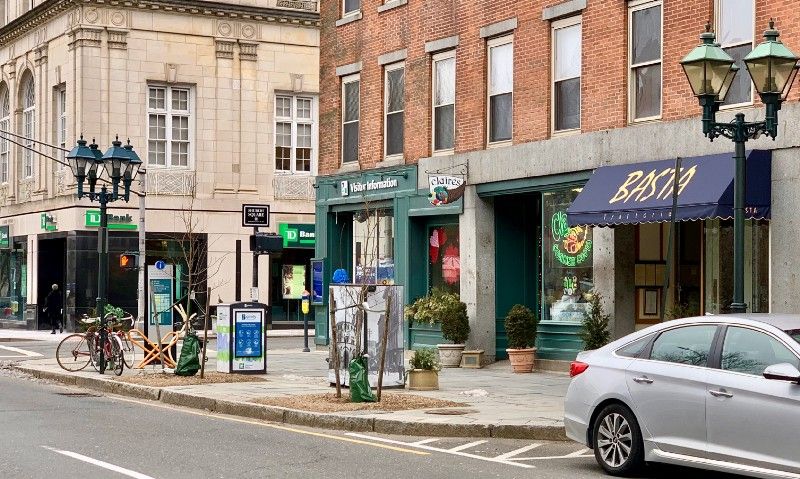
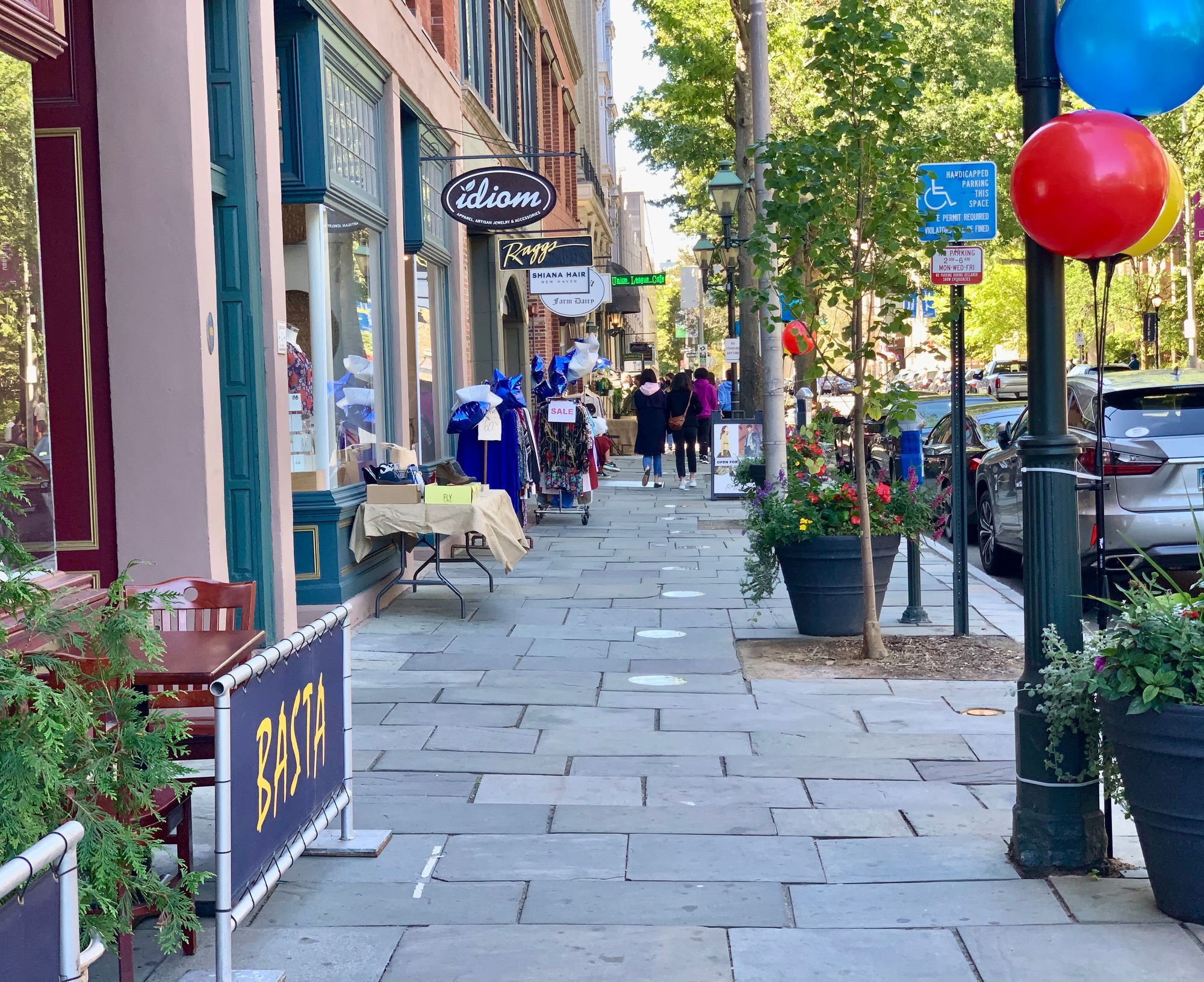
Then in 2020 Yale University and the City of New Haven went further by taking a lane of traffic out and replacing it with a sidewalk, leaving the extended area for cafés and outdoor seating. Nearby, they transformed a parking lot into a plaza, creating a heart of the community for the Yale campus and adjacent communities.
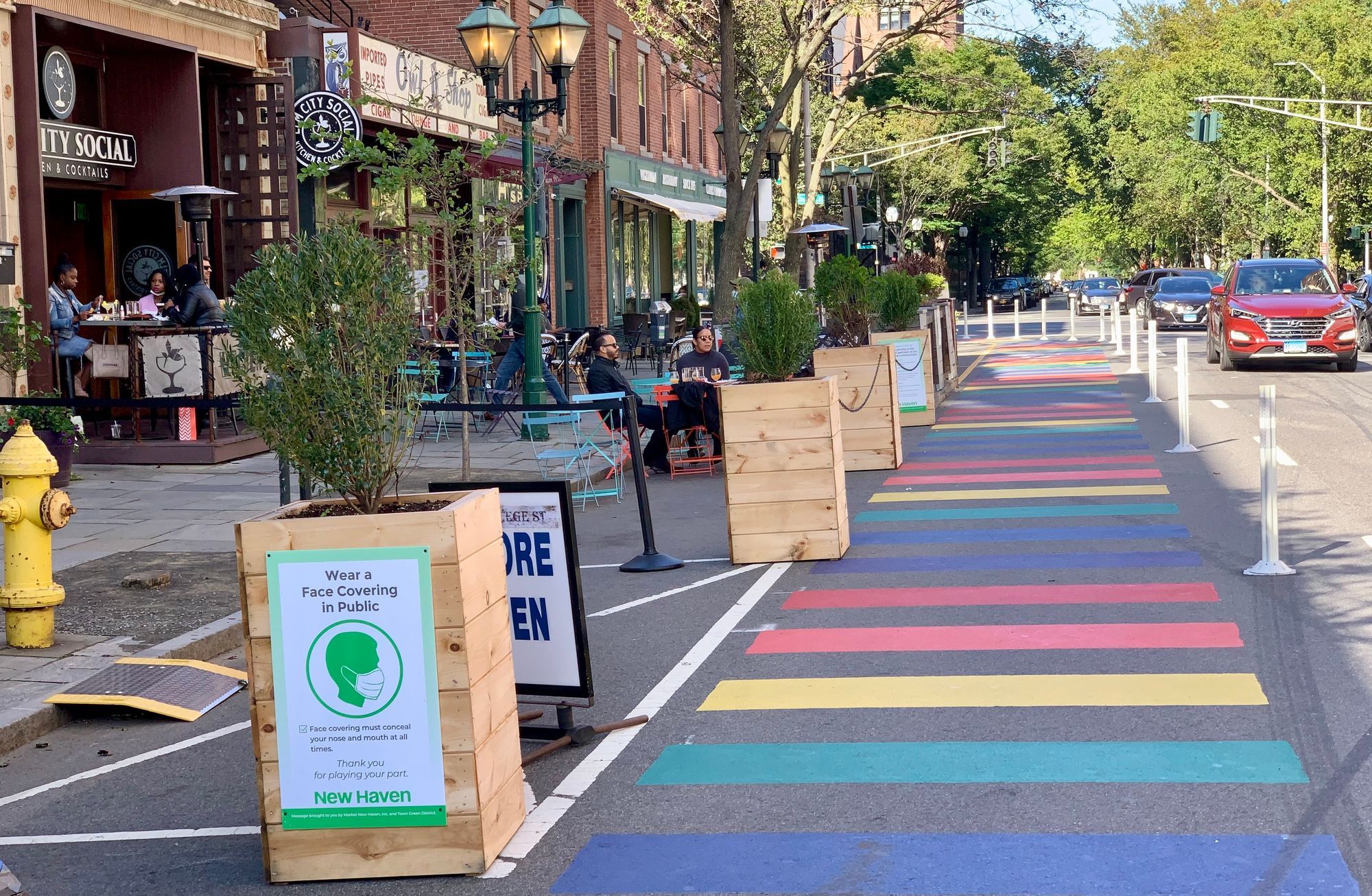
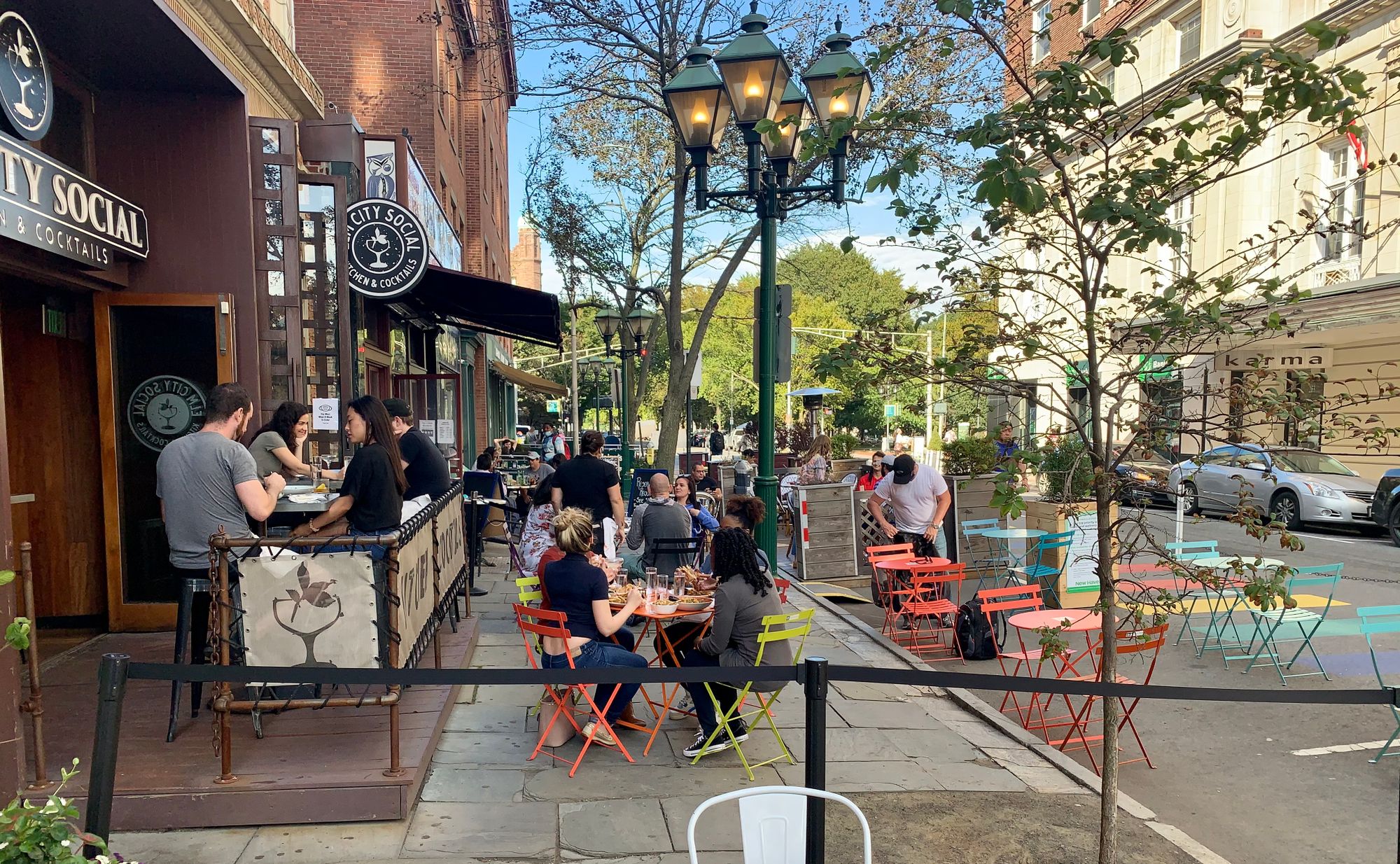
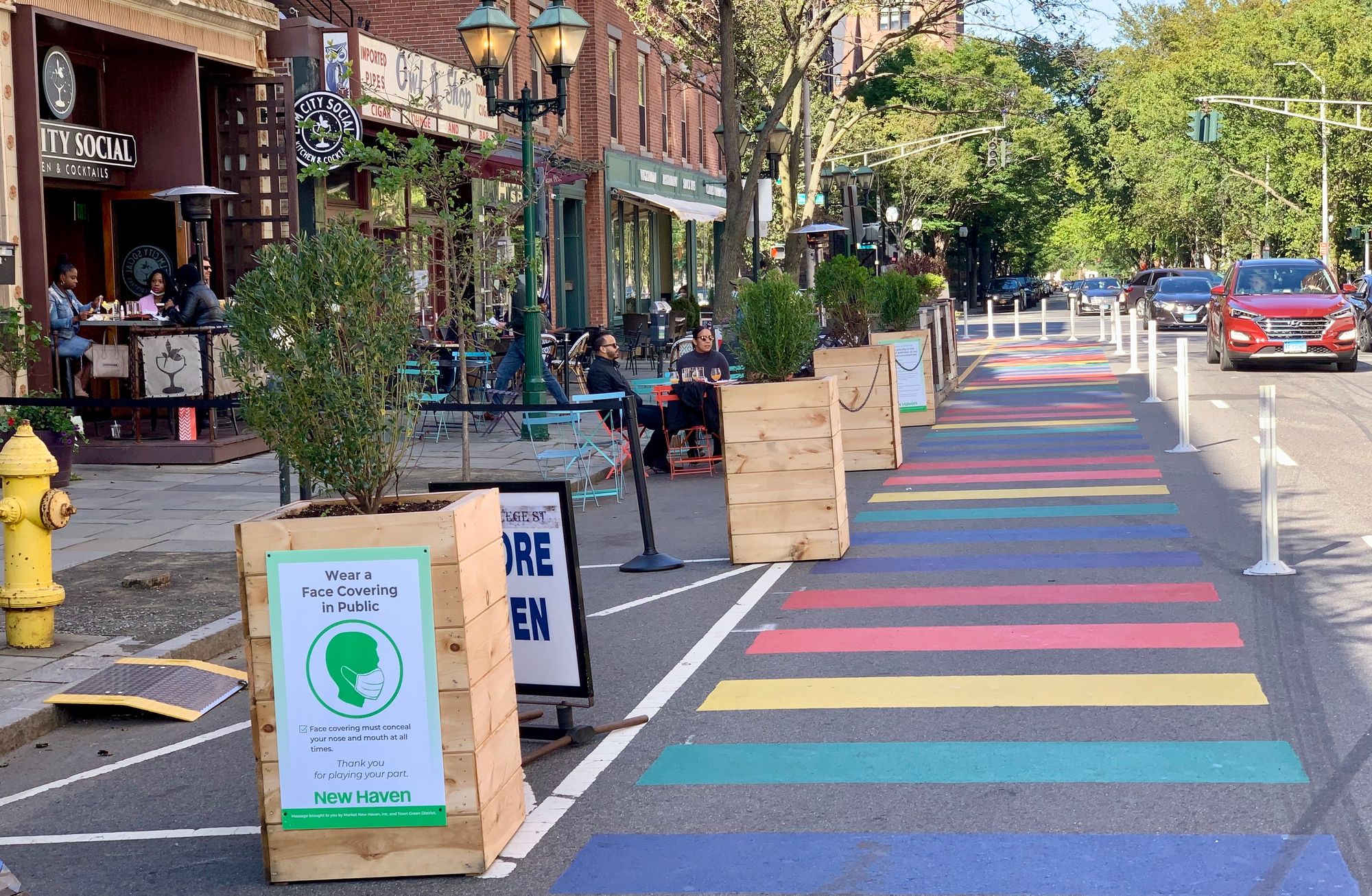
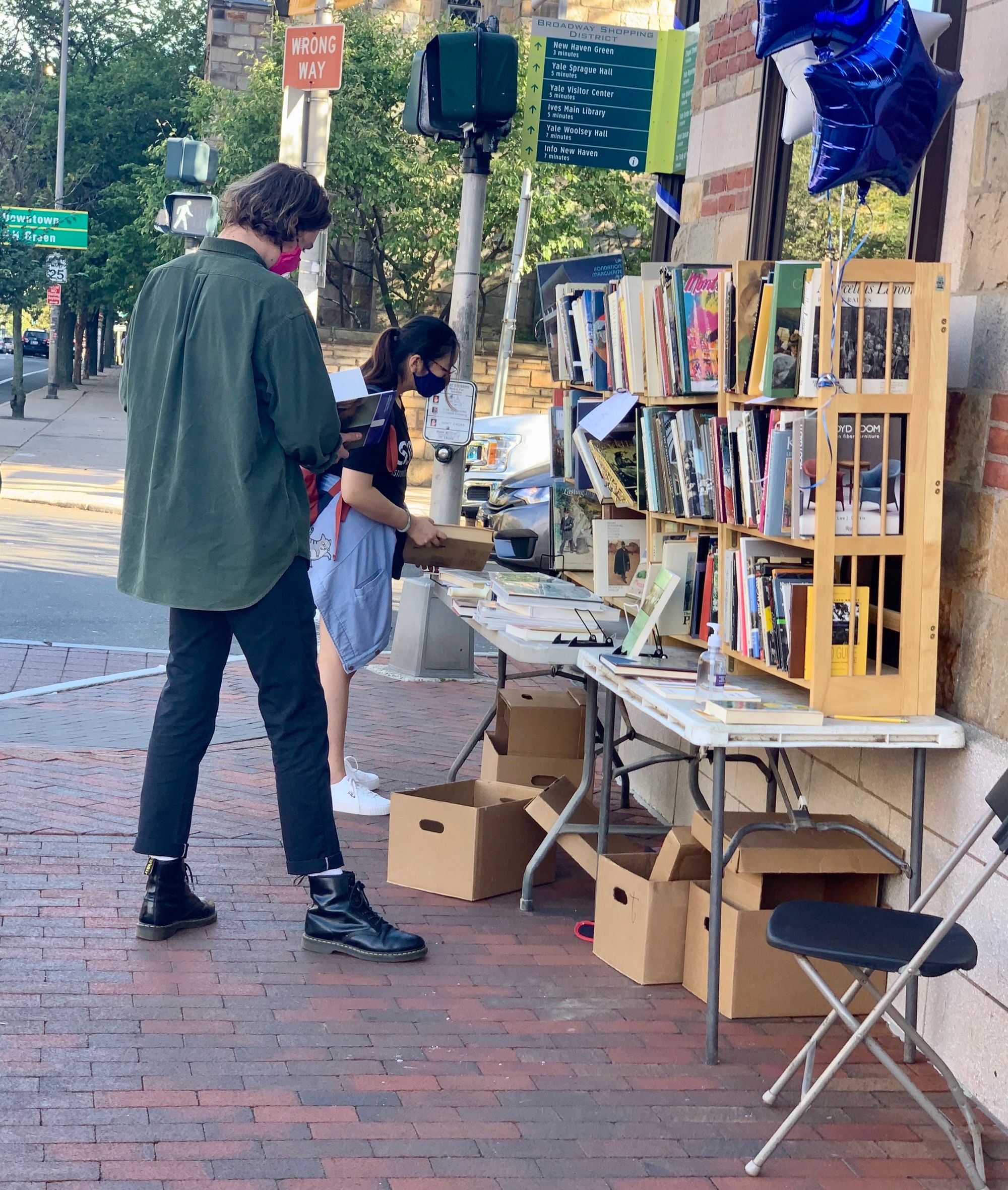
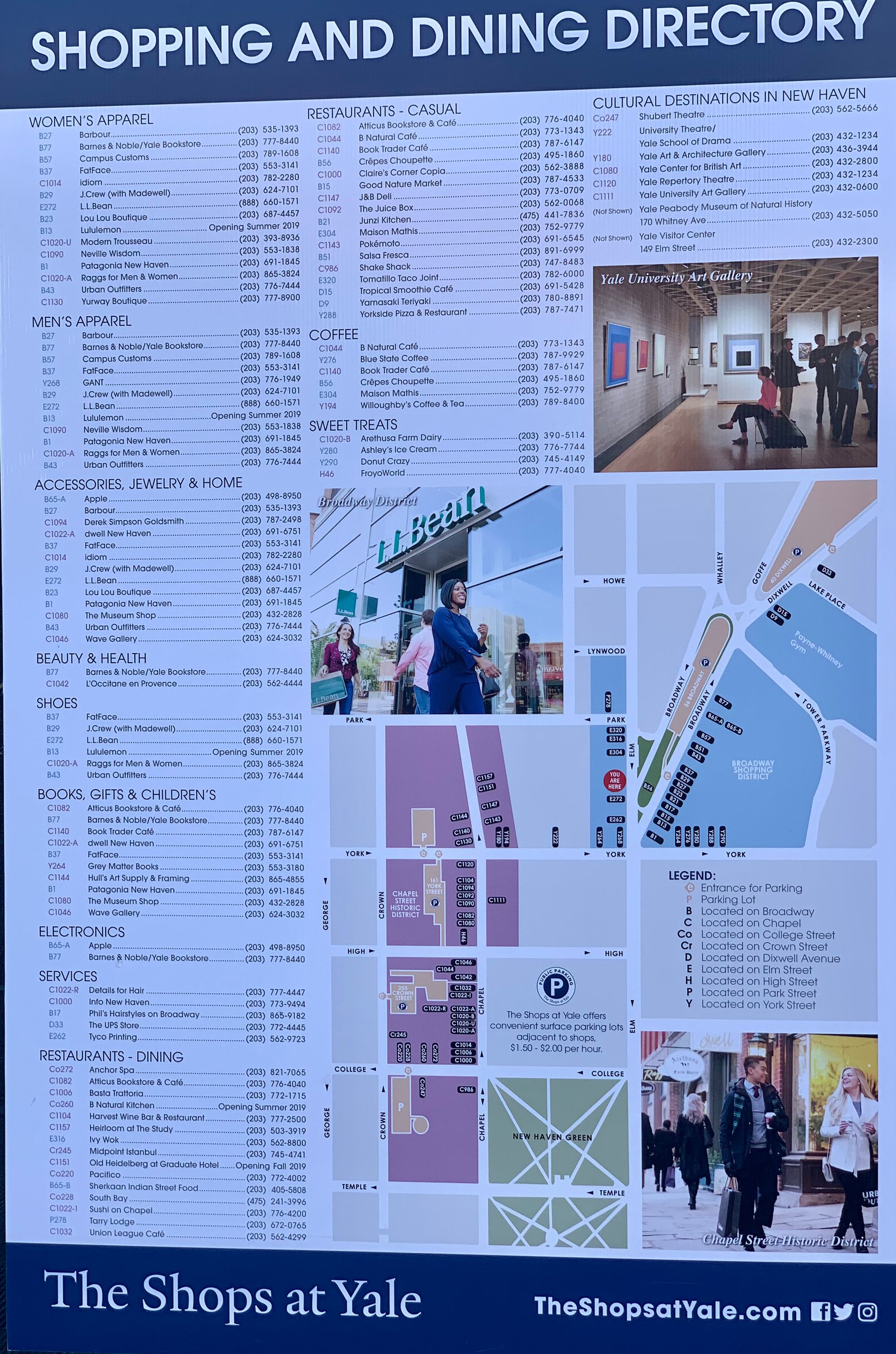
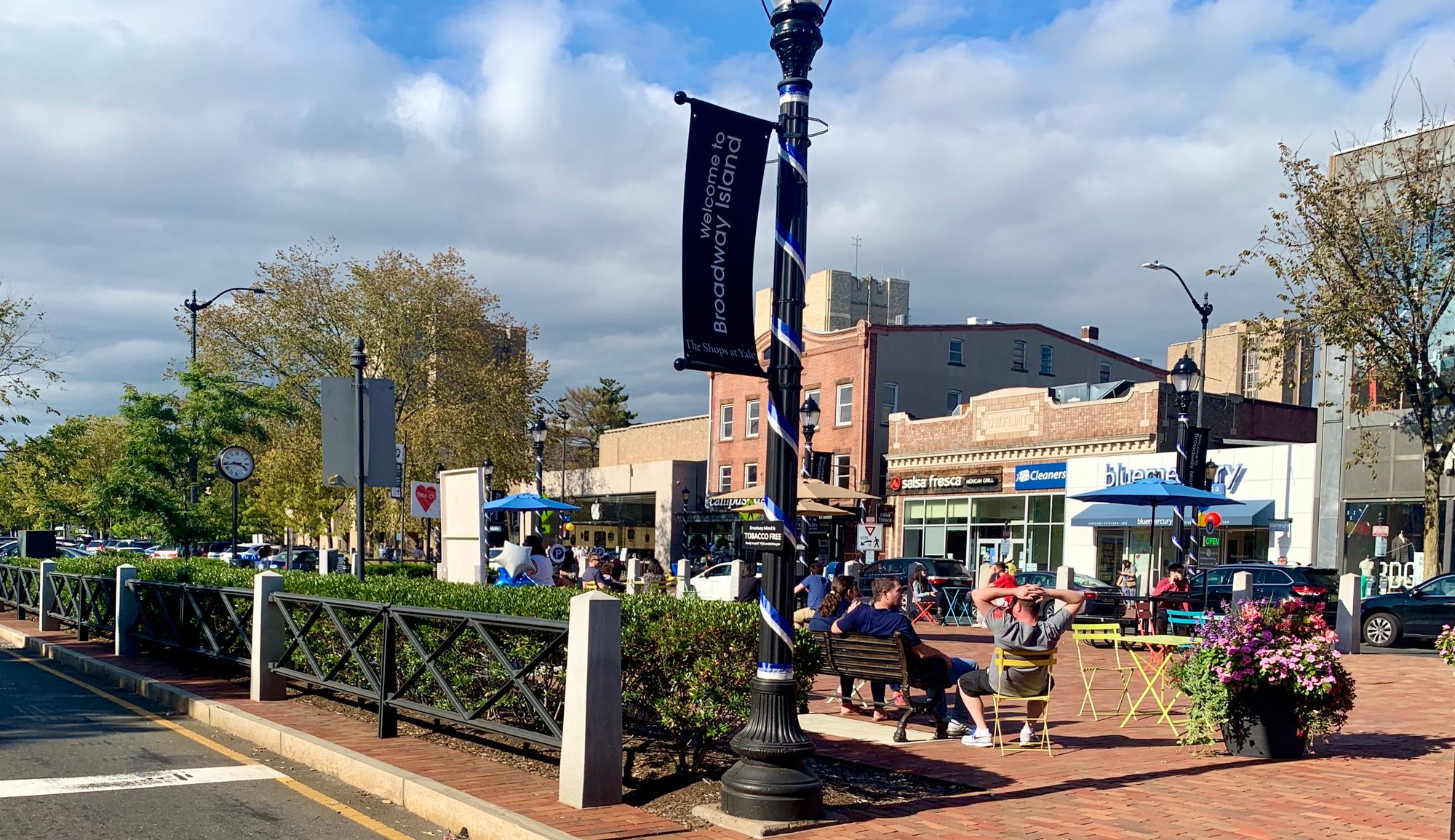
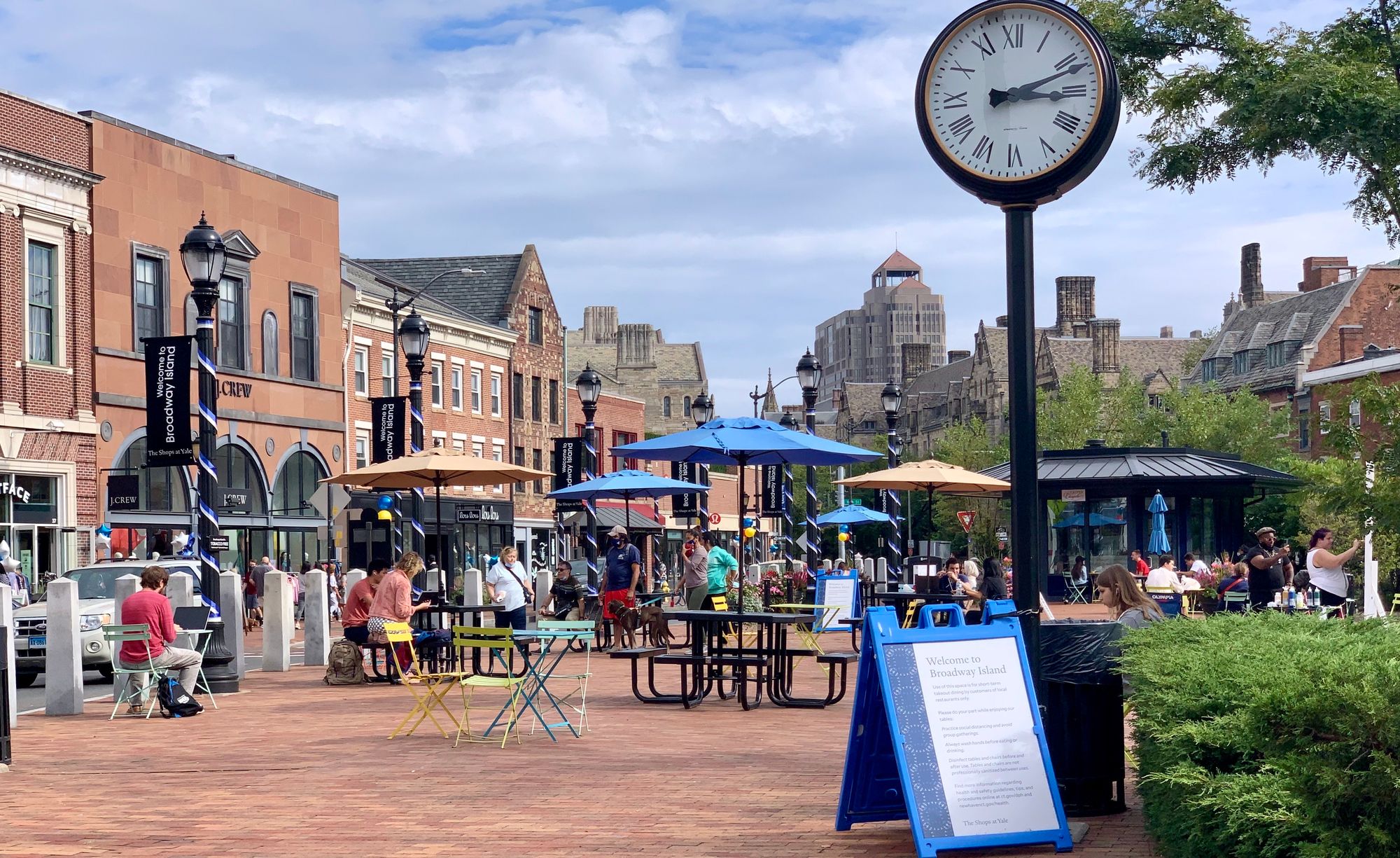
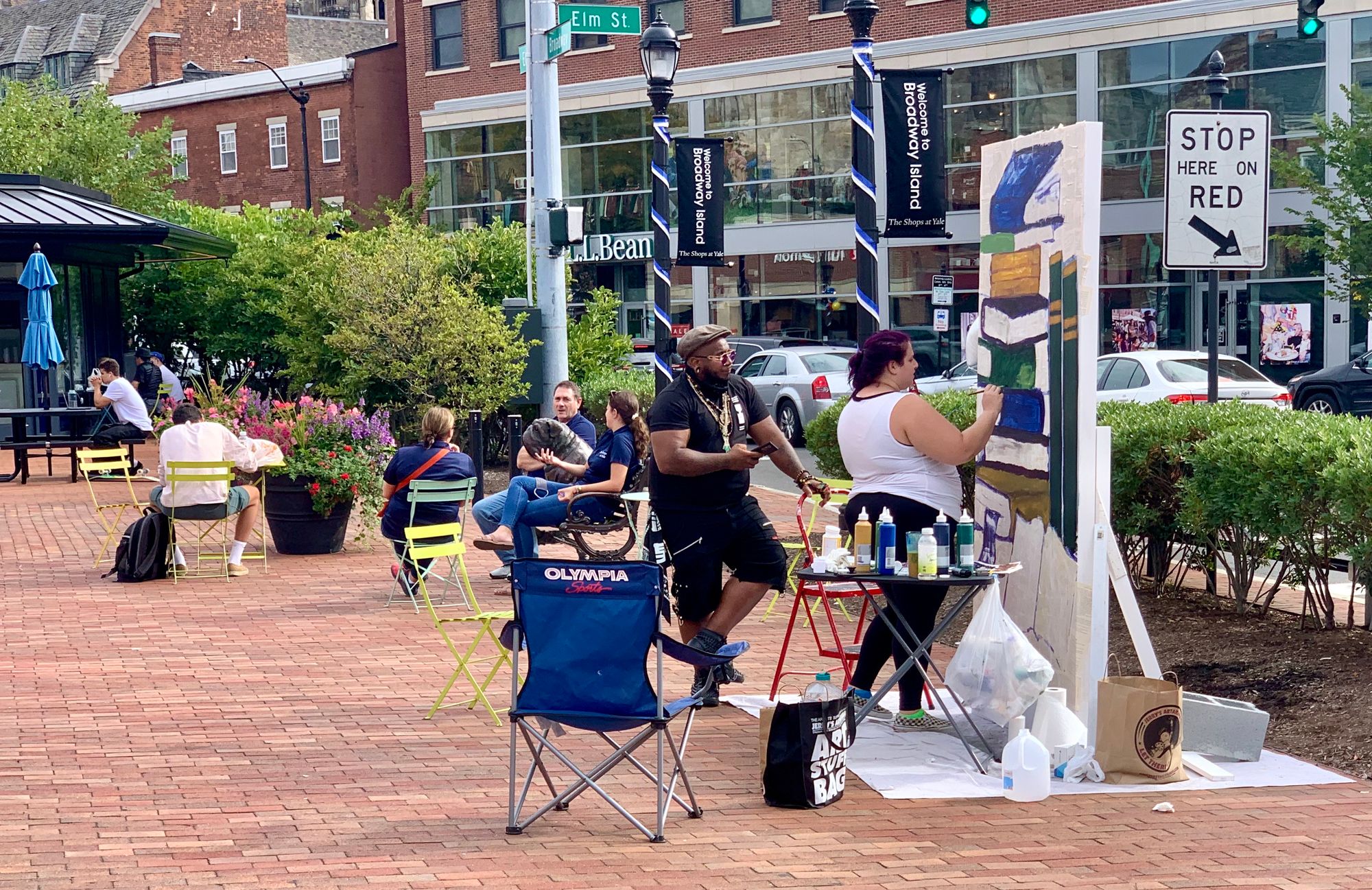
Making it Happen in Vermont:
Getting Past the Focus on Cars
To start things off, we must move past the trend of auto-dominated and widened streets. This inordinate focus on car traffic crowds out opportunities for social life: Just think of all the space we can reclaim for sidewalks and for activities that are fun and lively!
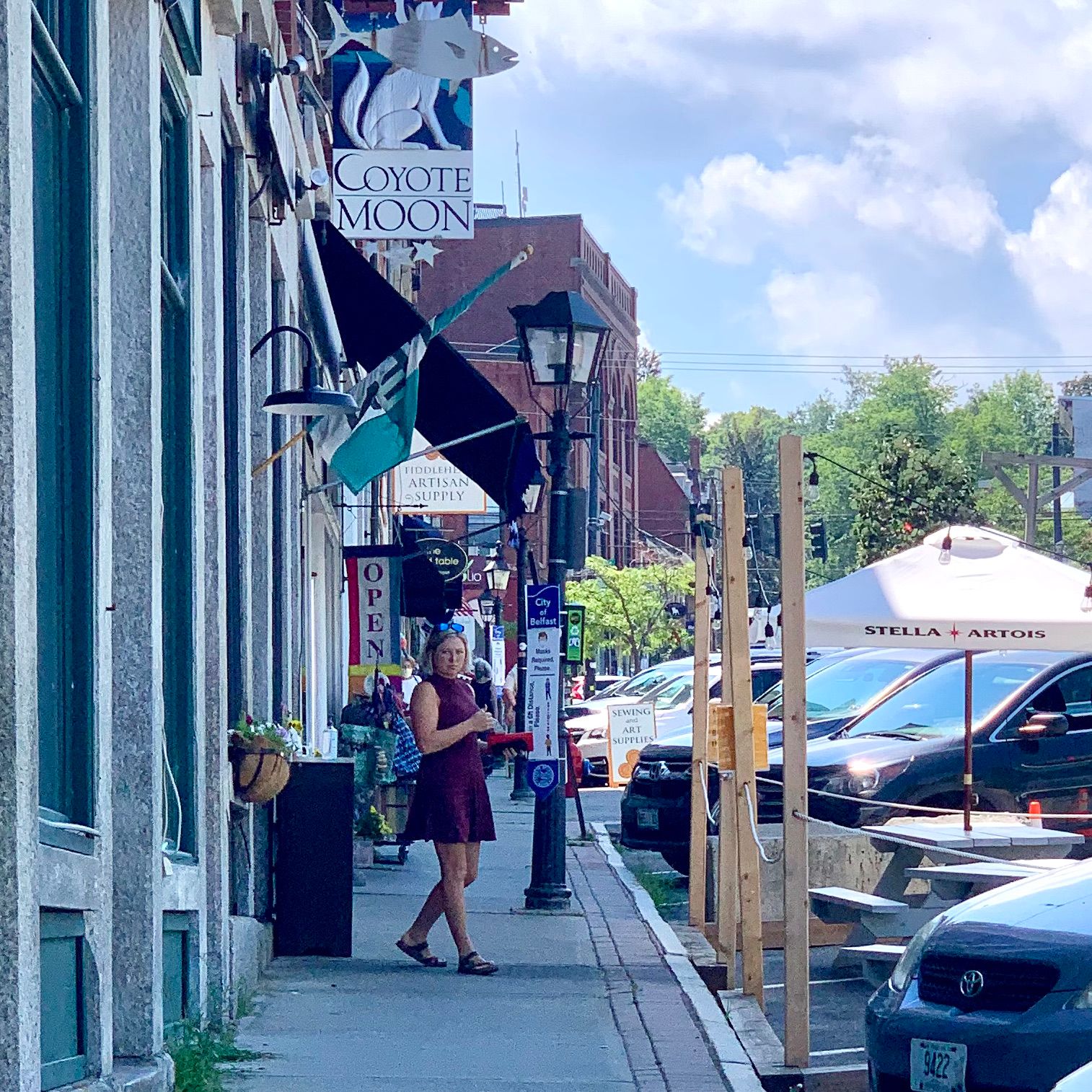
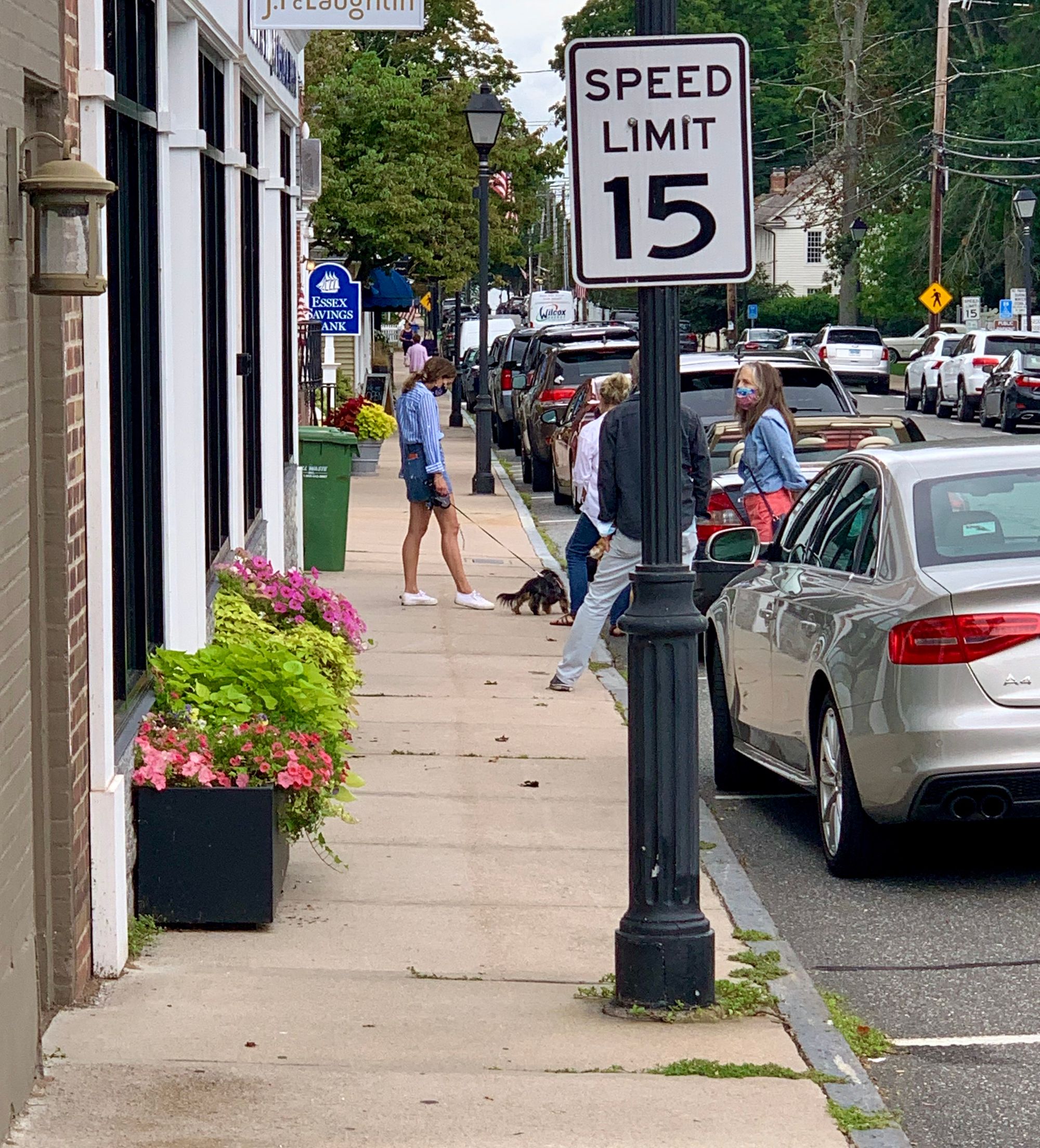
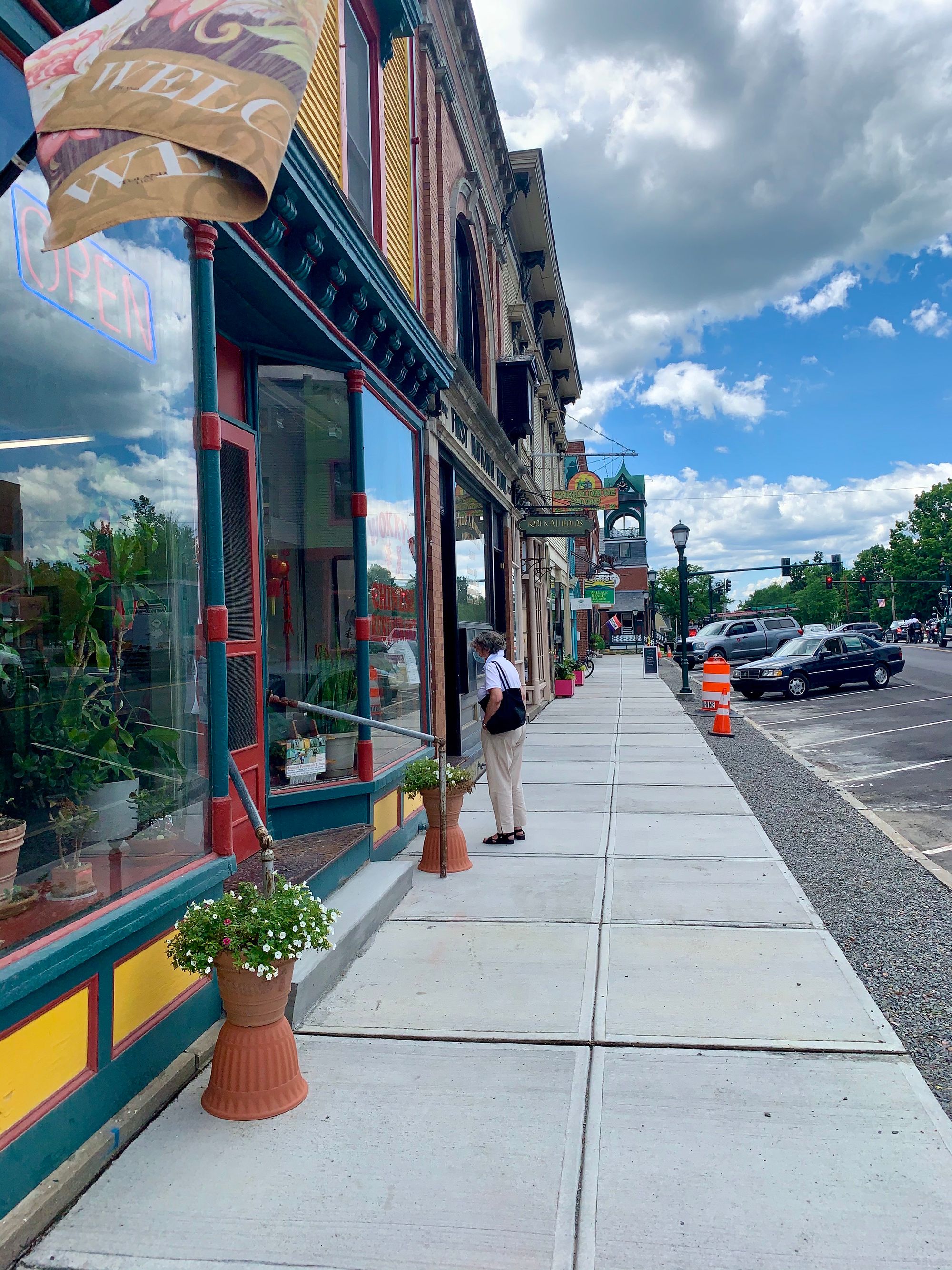
Narrow sidewalks in Belfast, Maine, Guilford, Connecticut, and Bristol, Vermont...all-important historic towns.
While it is unrealistic to get rid of cars entirely on main streets, they should nonetheless take up less of the spaces that make up the centers of our communities. Main streets are hard-pressed to remain safe and lively if they operate at a high traffic capacity.
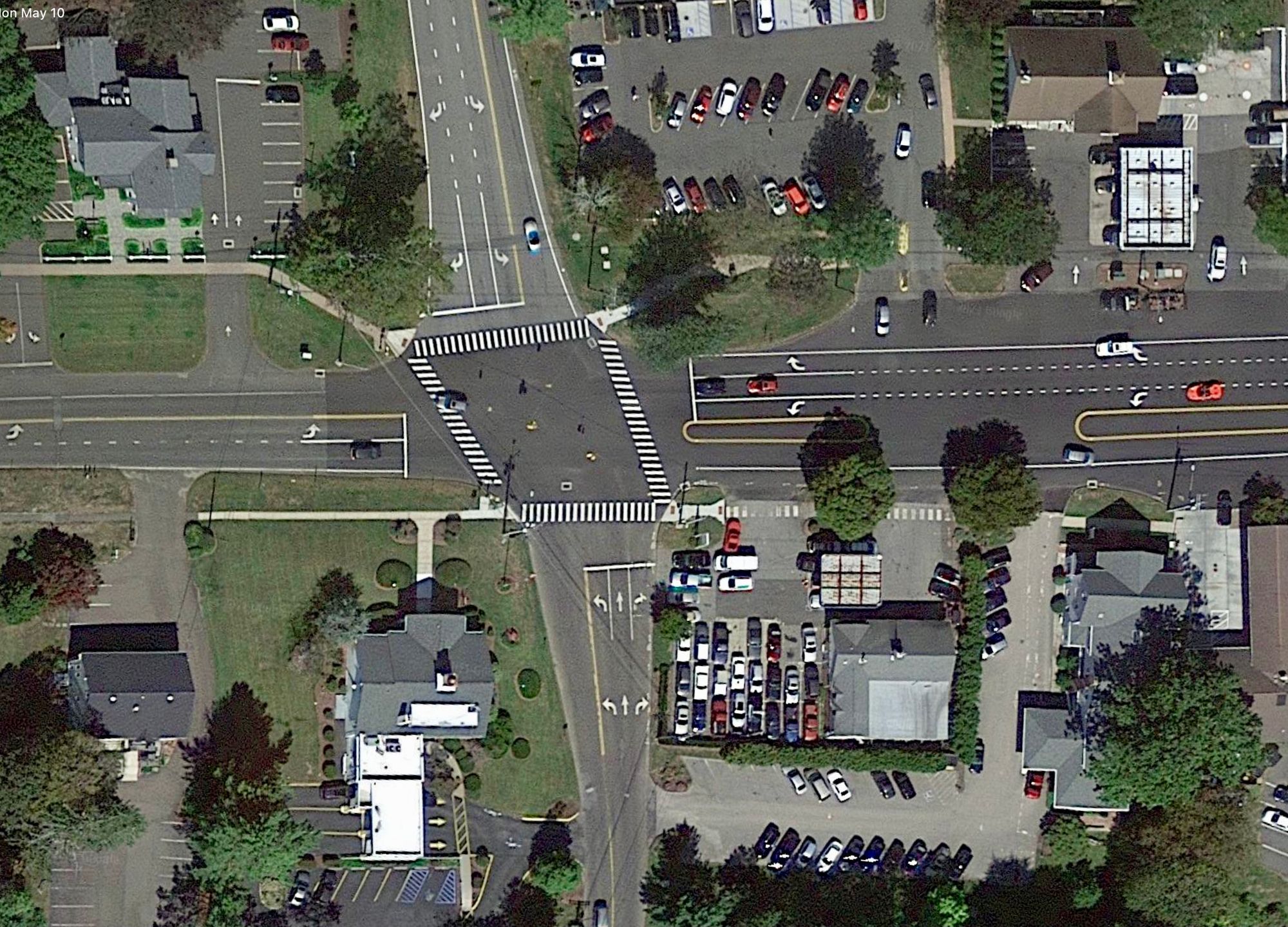
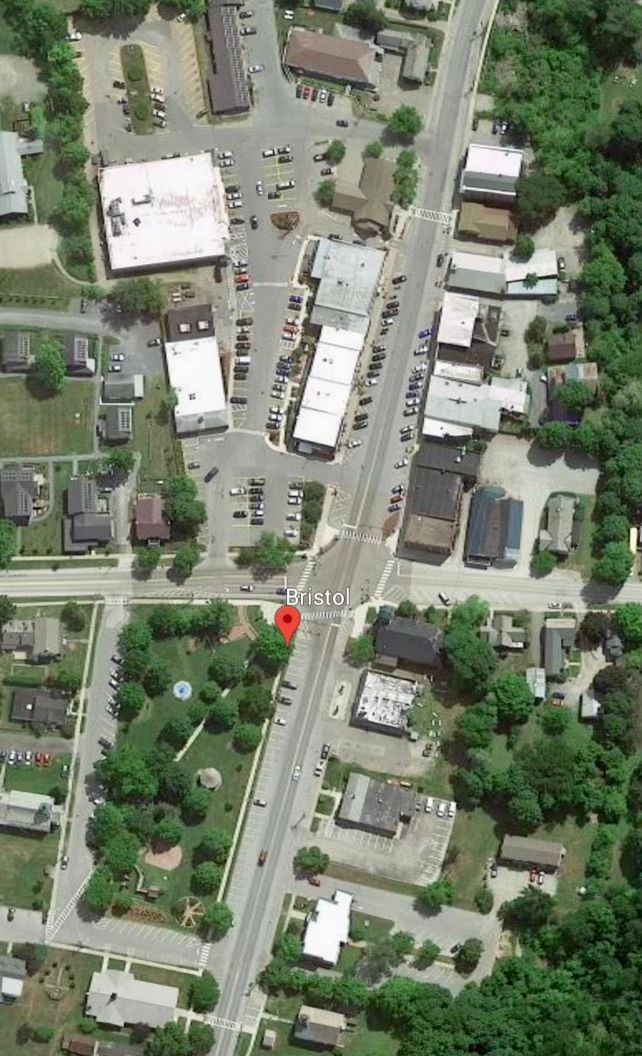
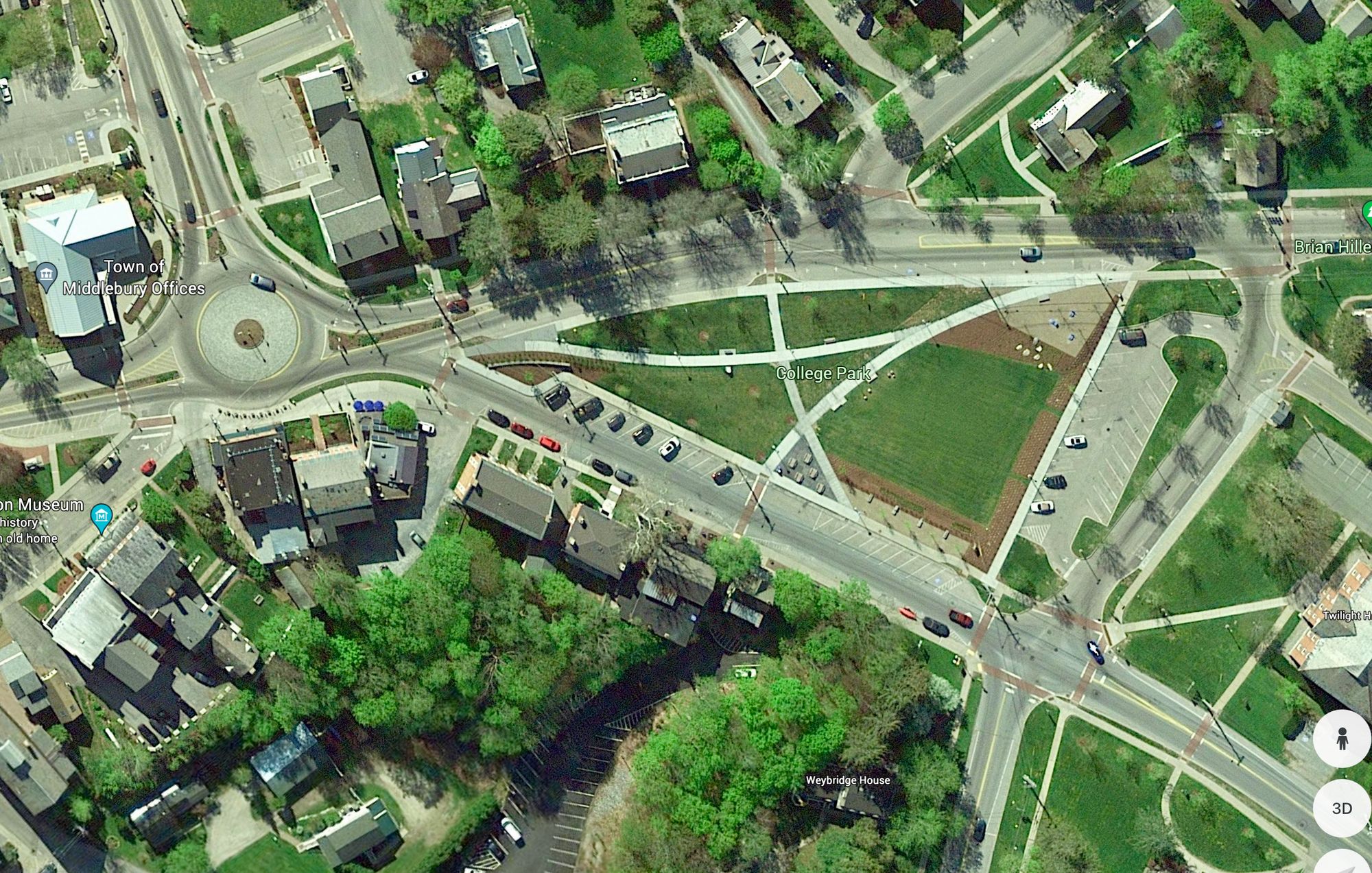
Dominating intersections in Madison, Connecticut, Bristol and Middlebury, Vermont.
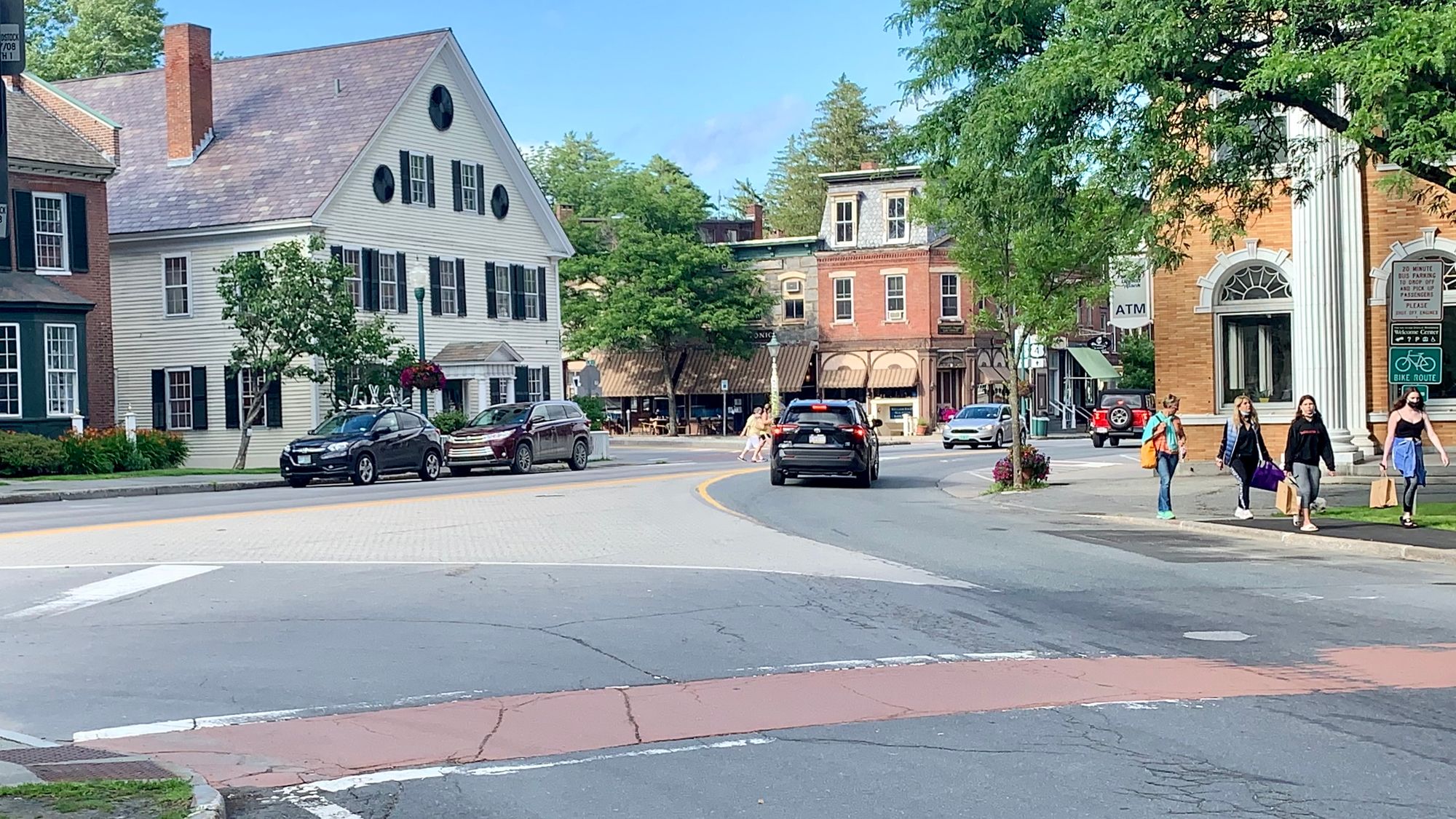
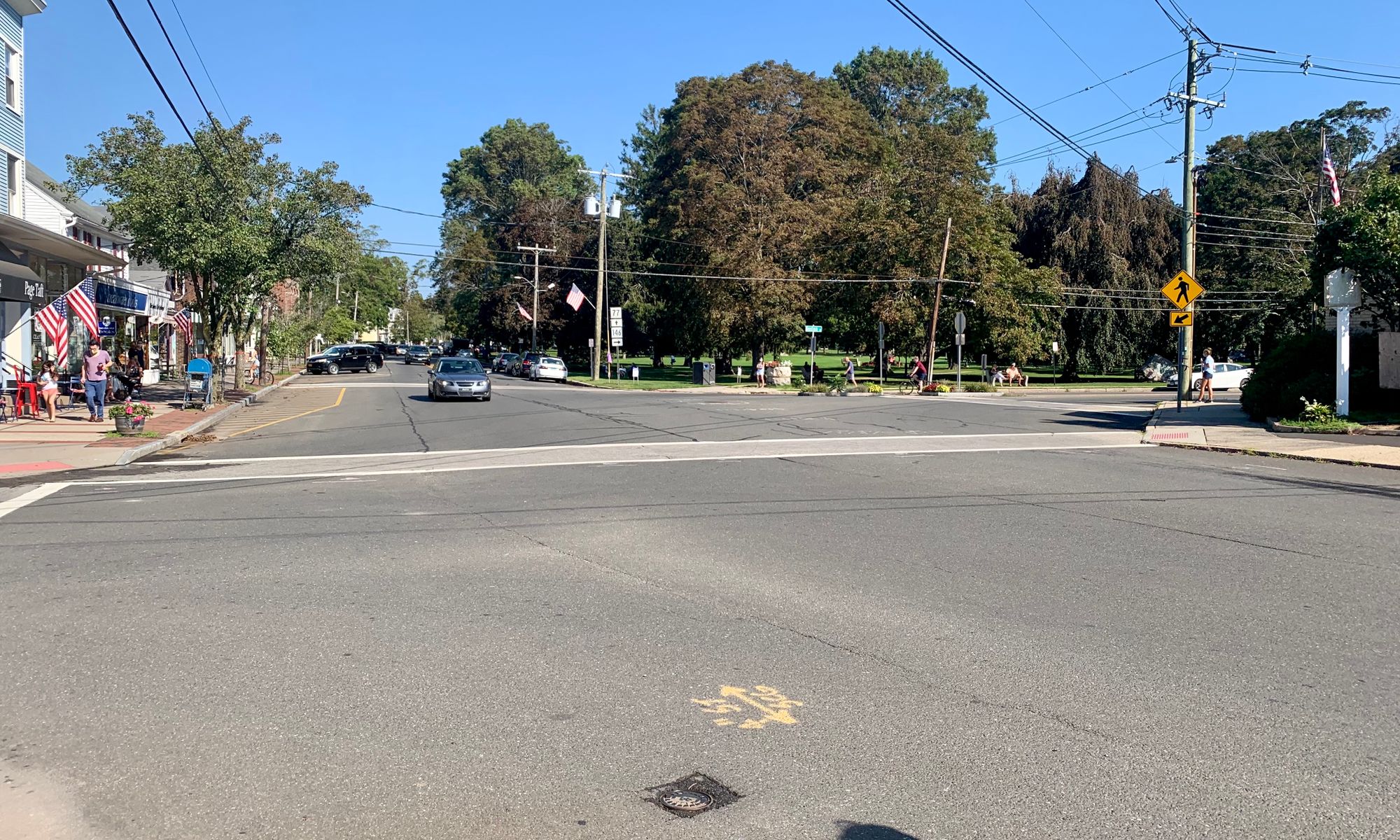
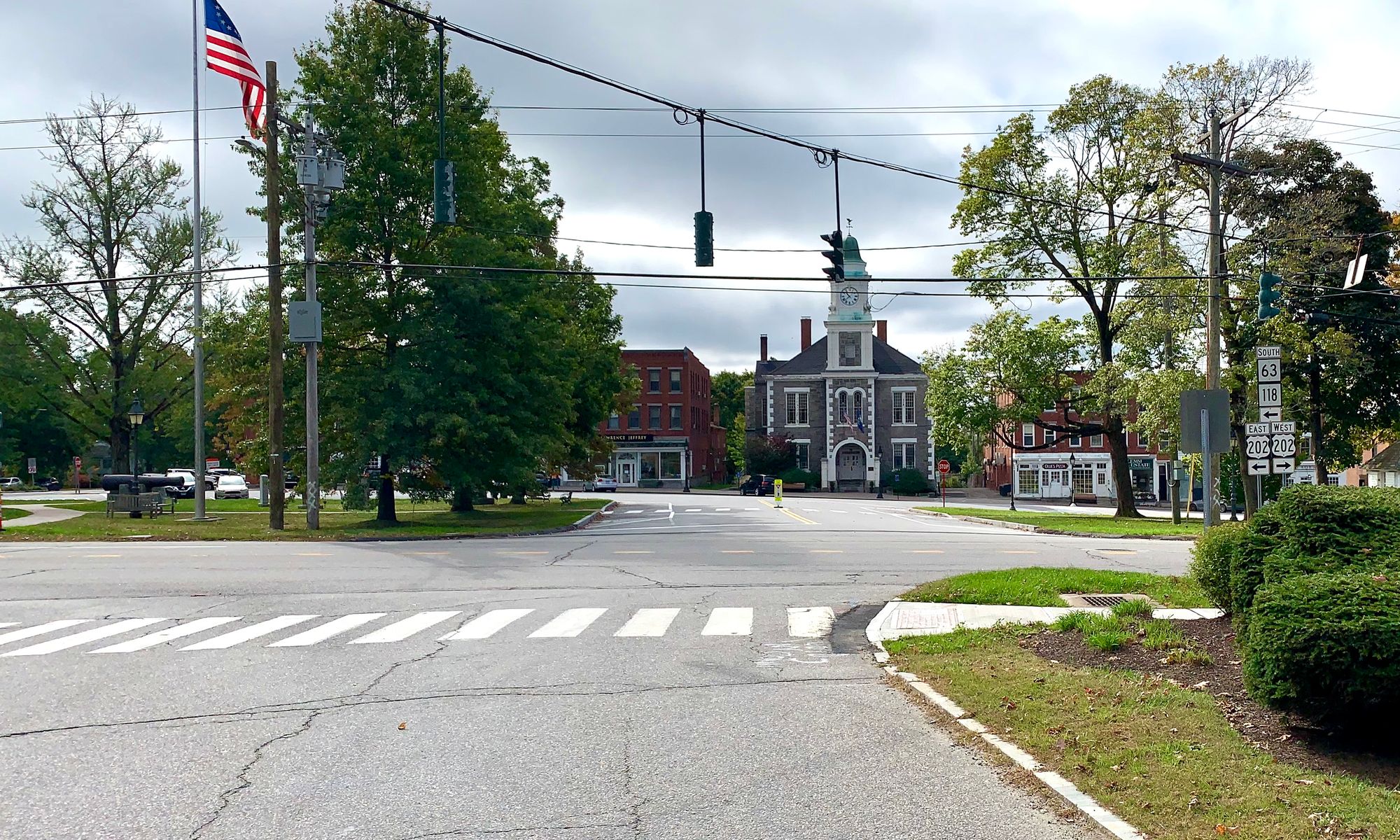
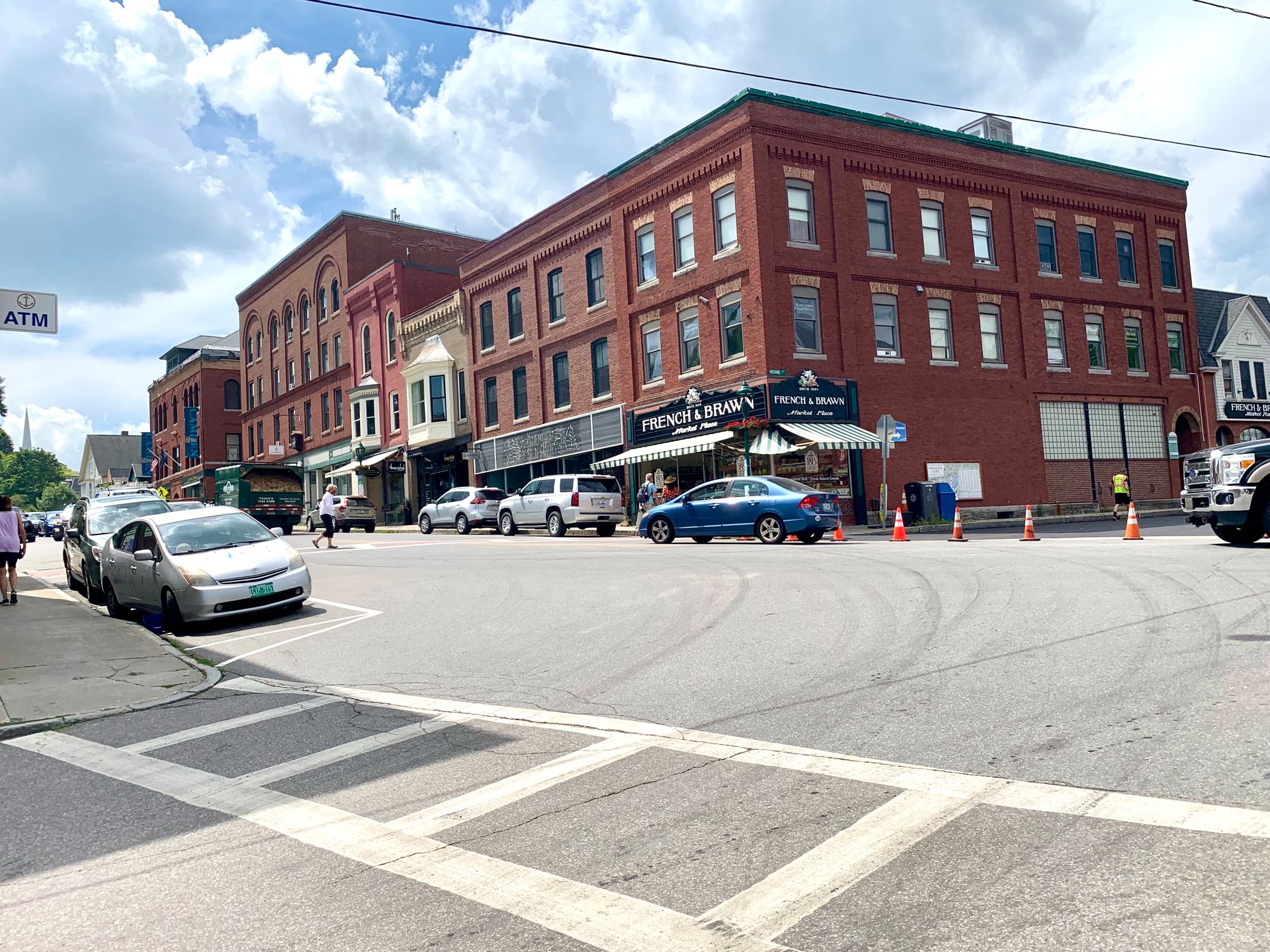
Woodstock, Vermont; Guilford, CT; Litchfield, CT; and Camden, Maine
As we have long said: If you plan your communities around cars and traffic, you get more cars and traffic. If you plan your community around people and places, you get more people and places.
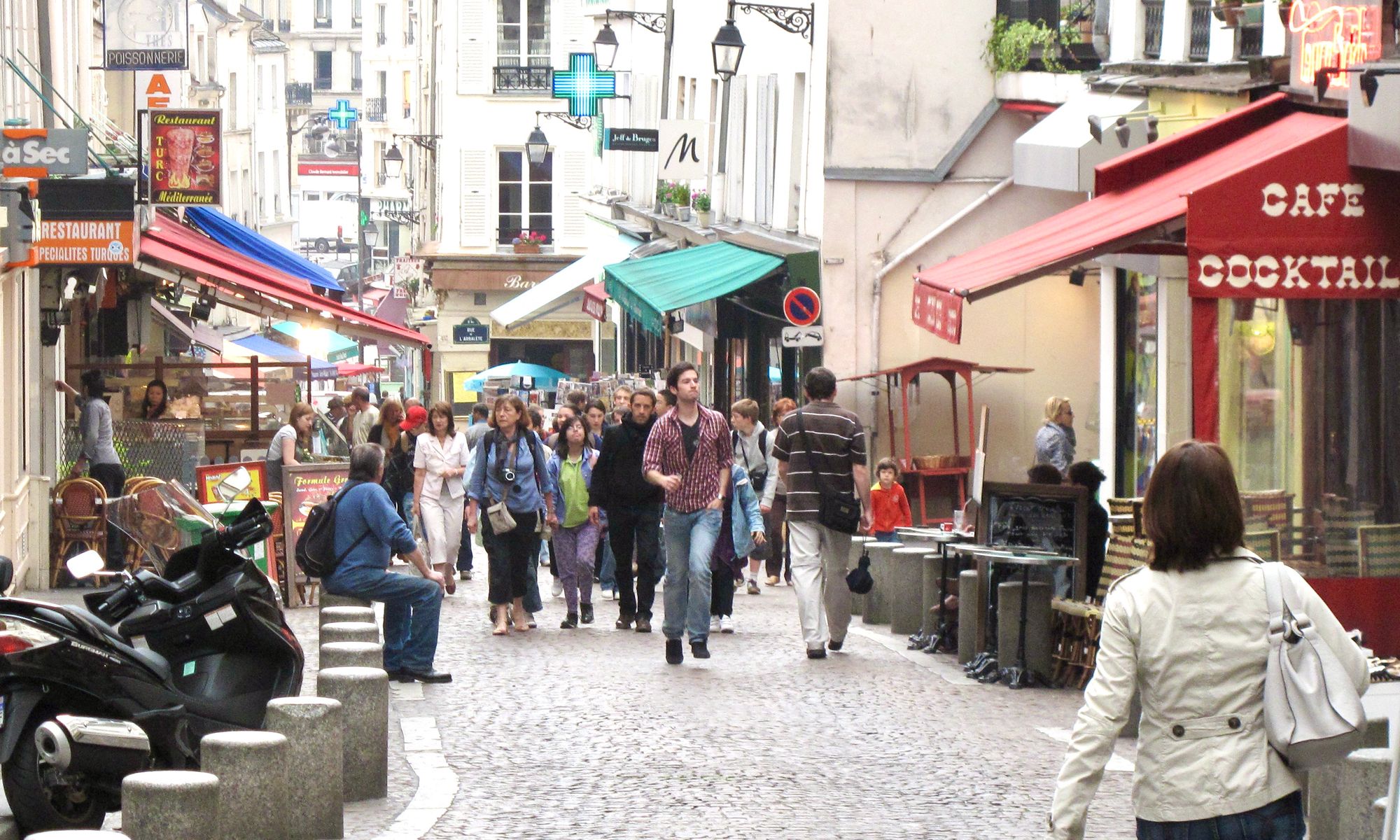
Bringing Back Multi-use Gathering Places
We think that Vermont could transition from having many examples of passive "Greens" to more active "Town Squares." By adding more activity and amenities to gathering places, and by providing more reasons to go visit them, these less-used places can become true destinations, buzzing with activity on a day-to-day basis. Taking this approach could spark a statewide renewal for communities.
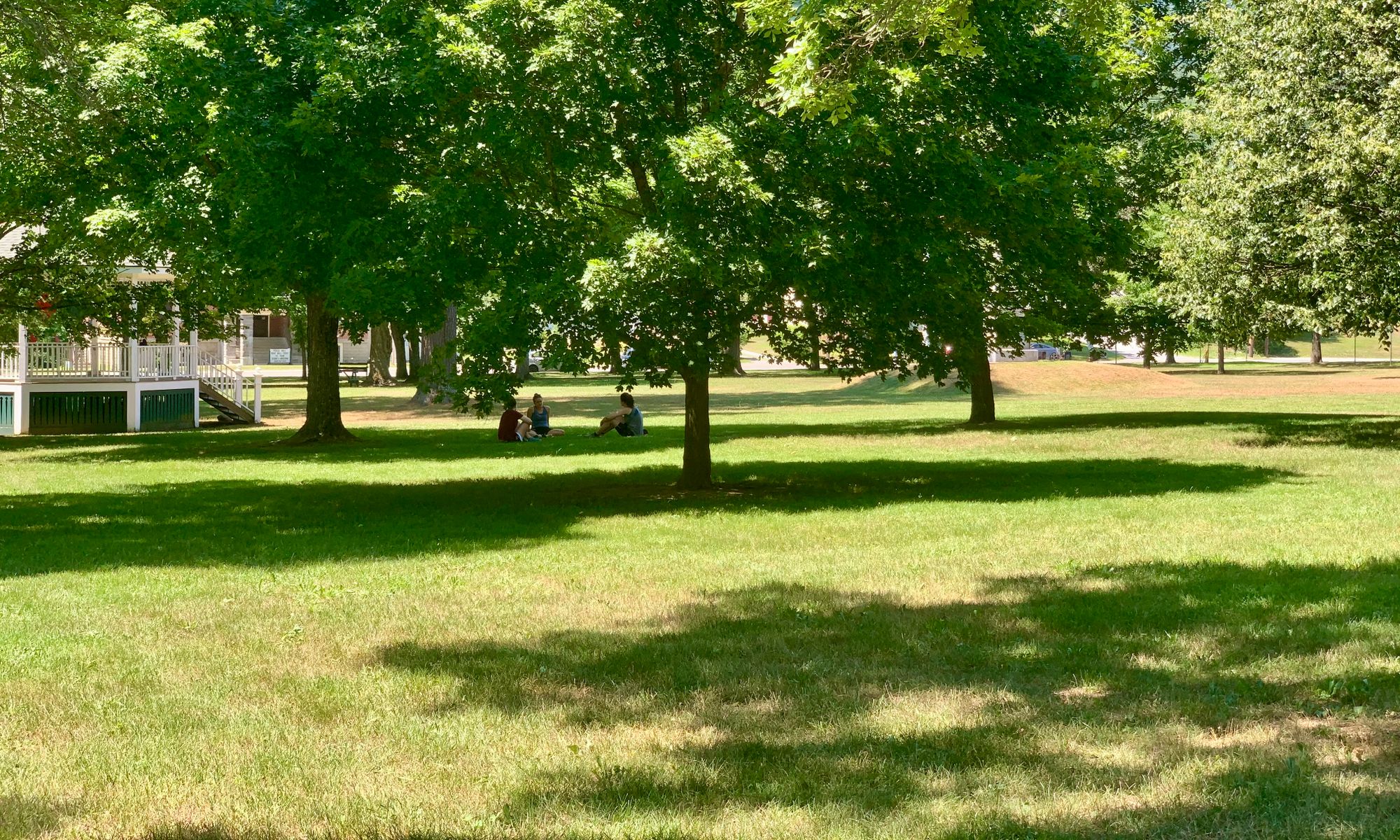

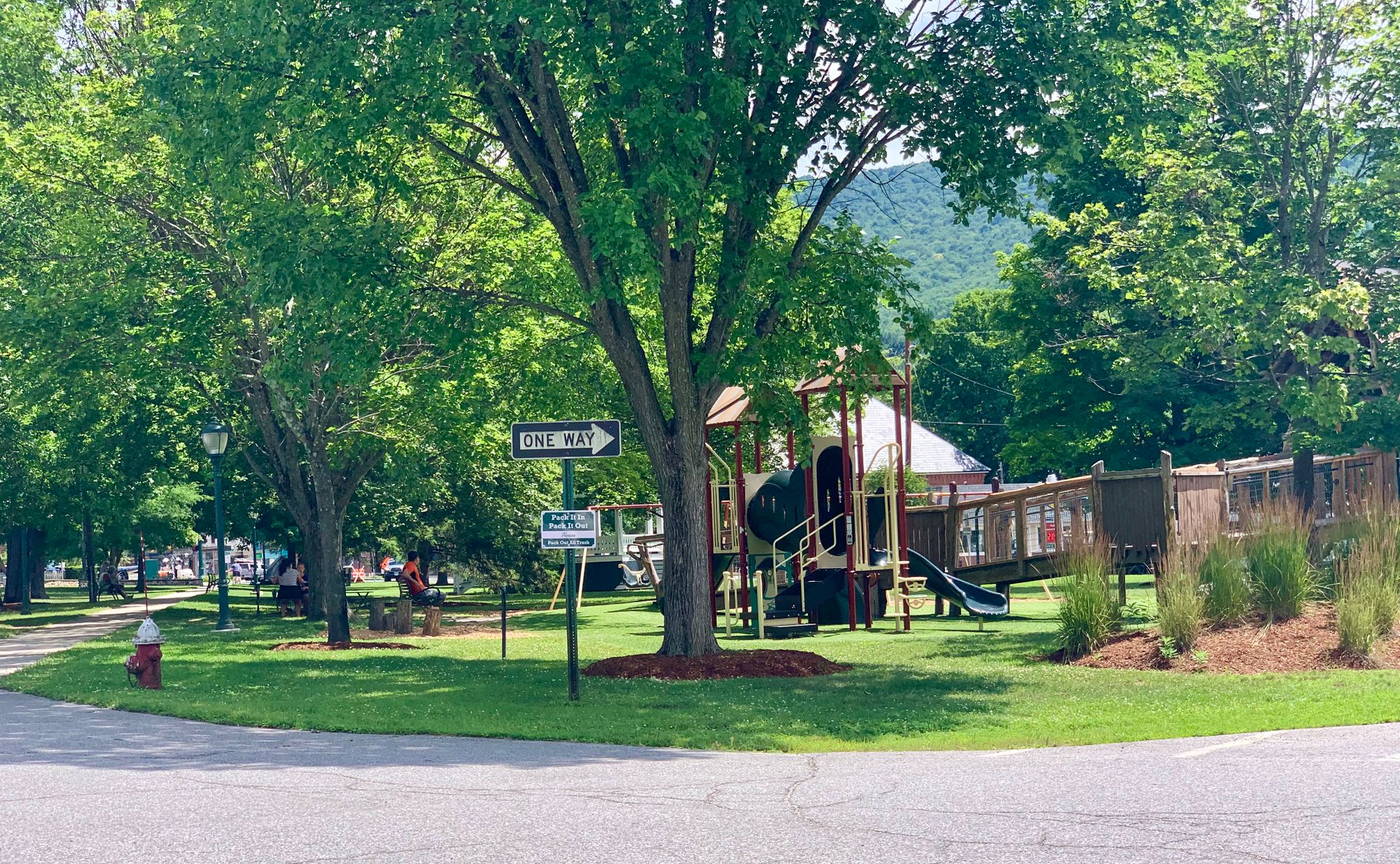
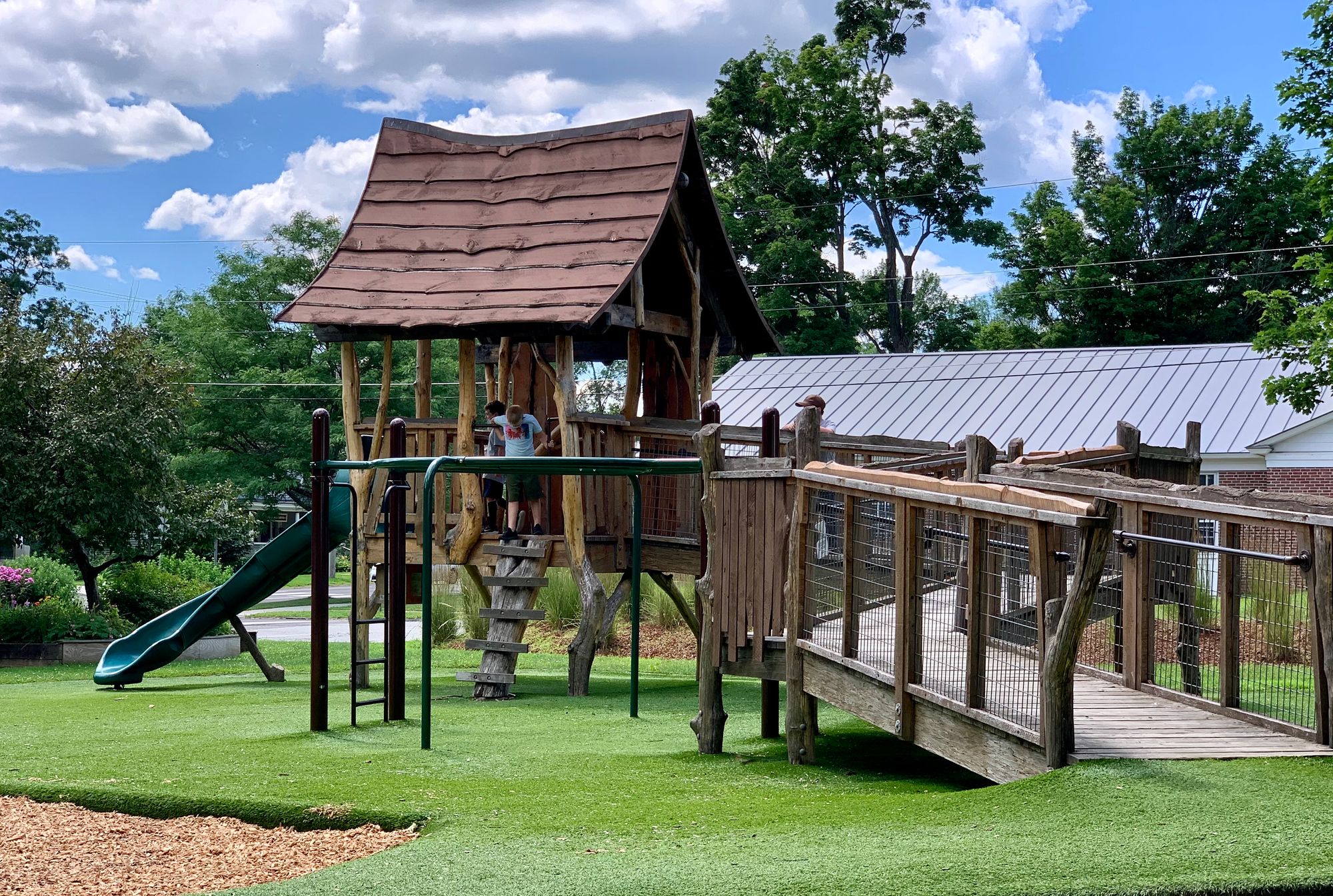
(Top Row: Rochester, Vermont). There is not much difference between any of these "greens." Except that in the bottom two images (Bristol, Vermont) they have created a playground within a larger setting, making it a model for the state.
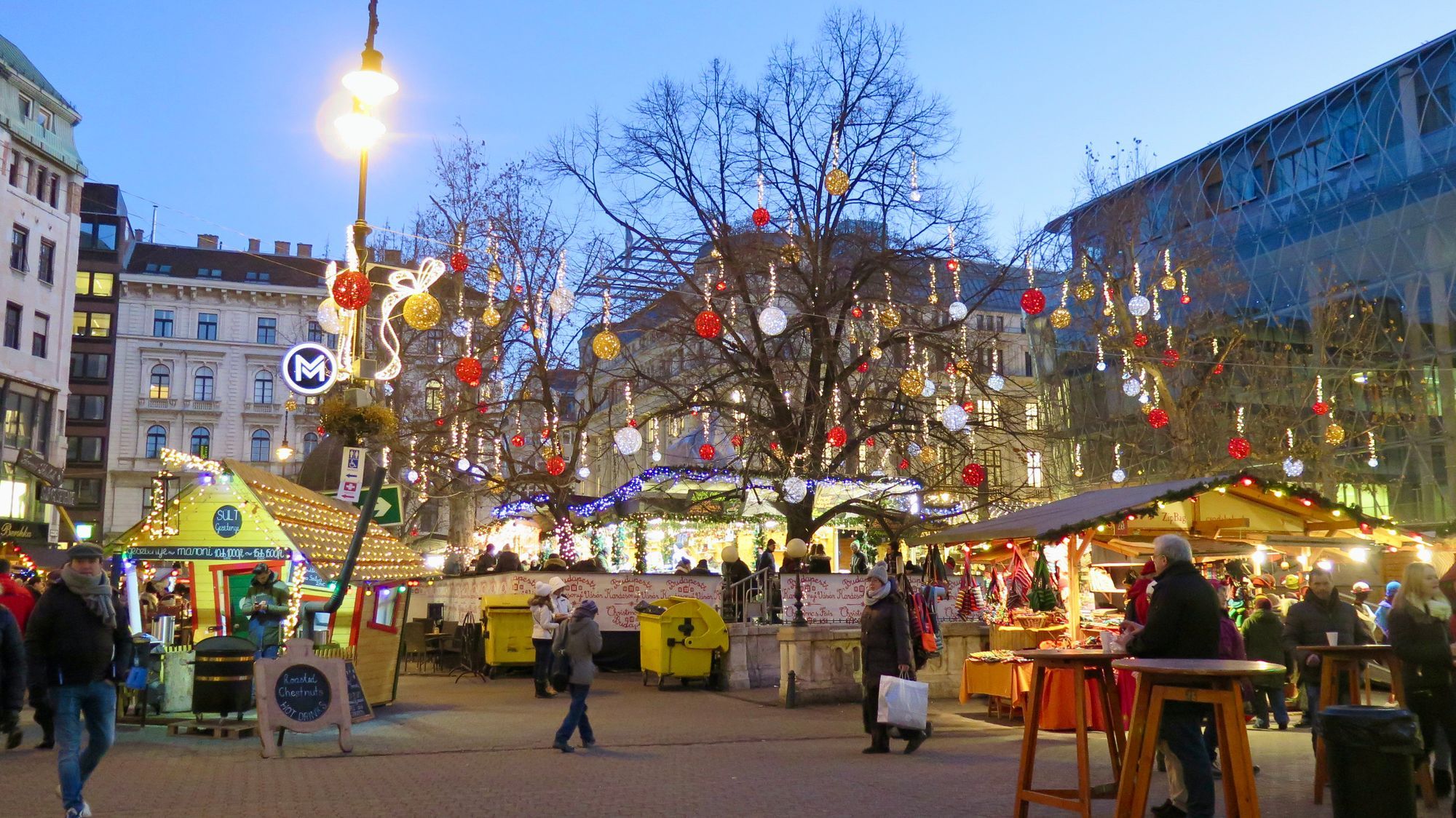
Making Public Buildings Multi-Use Destinations
Public buildings in small towns are often prime places to let the activities that normally go on indoors to "spill outside," meaning that (for example) a local library might provide outdoor reading spaces. Basically, the idea is to go beyond mere landscaping to add social life to the surroundings of public buildings. Meanwhile, institutions housed in these same buildings can give more "heart" to spaces like the aforementioned Town Squares through collaborative programming and events.
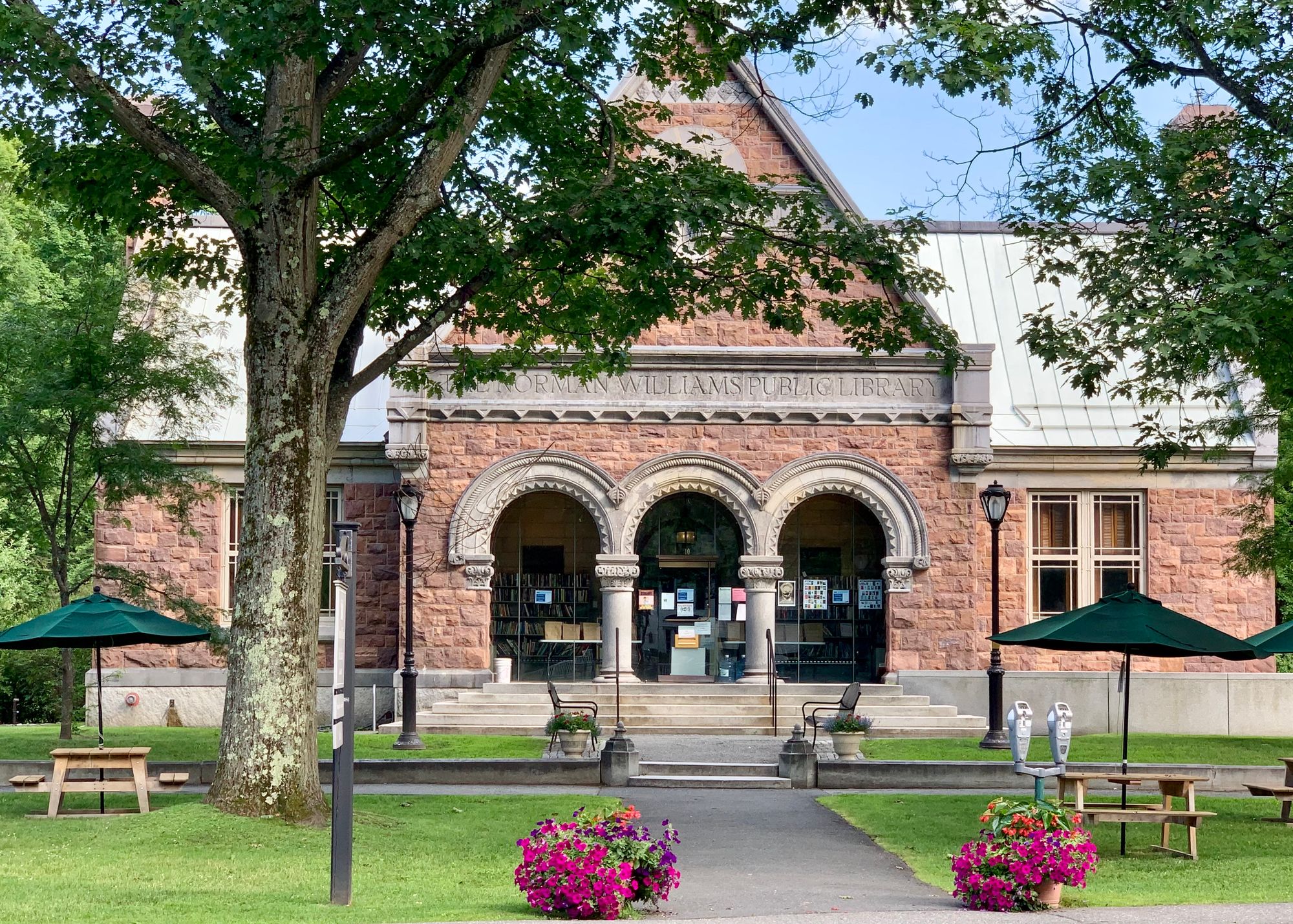
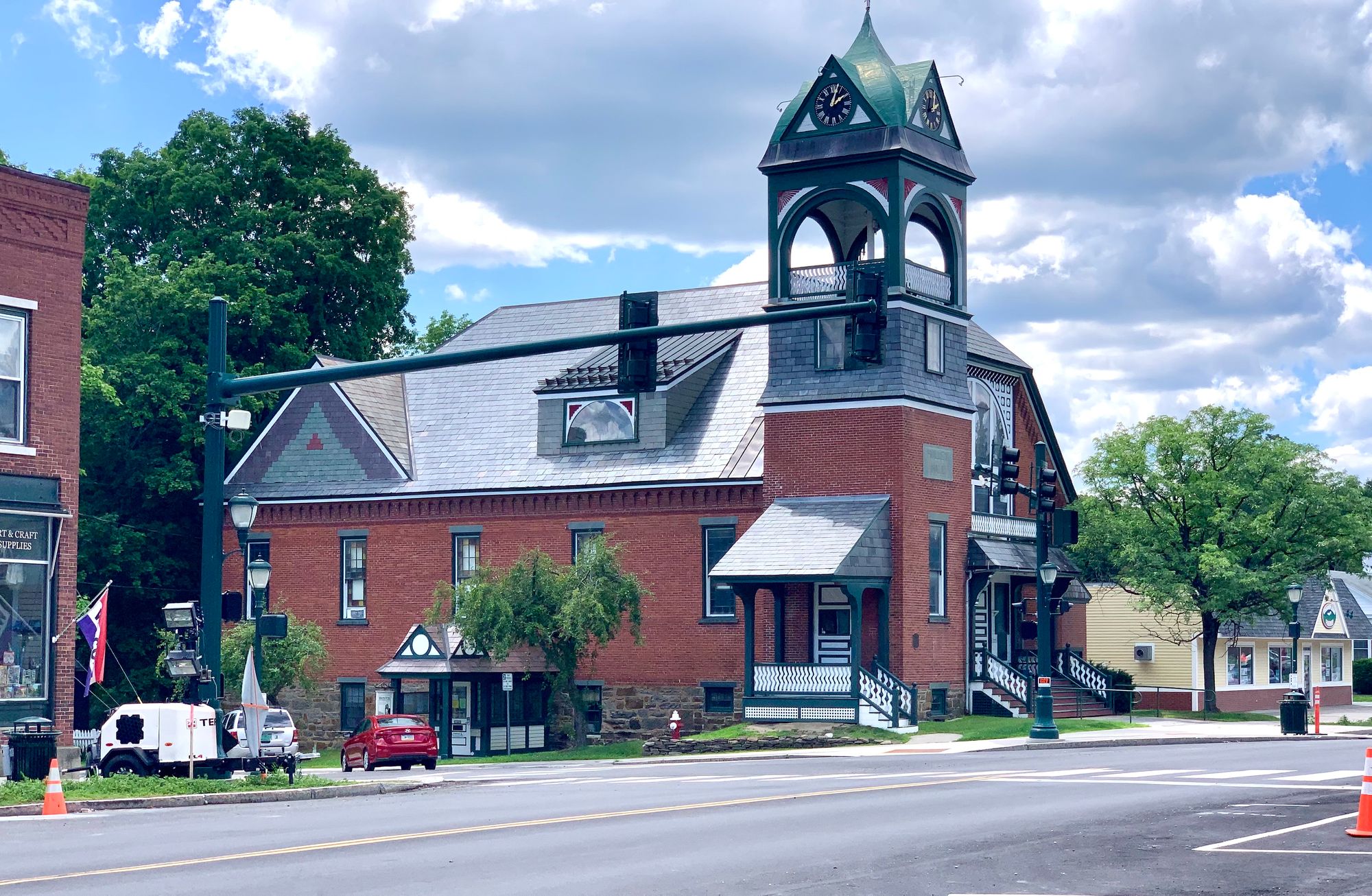
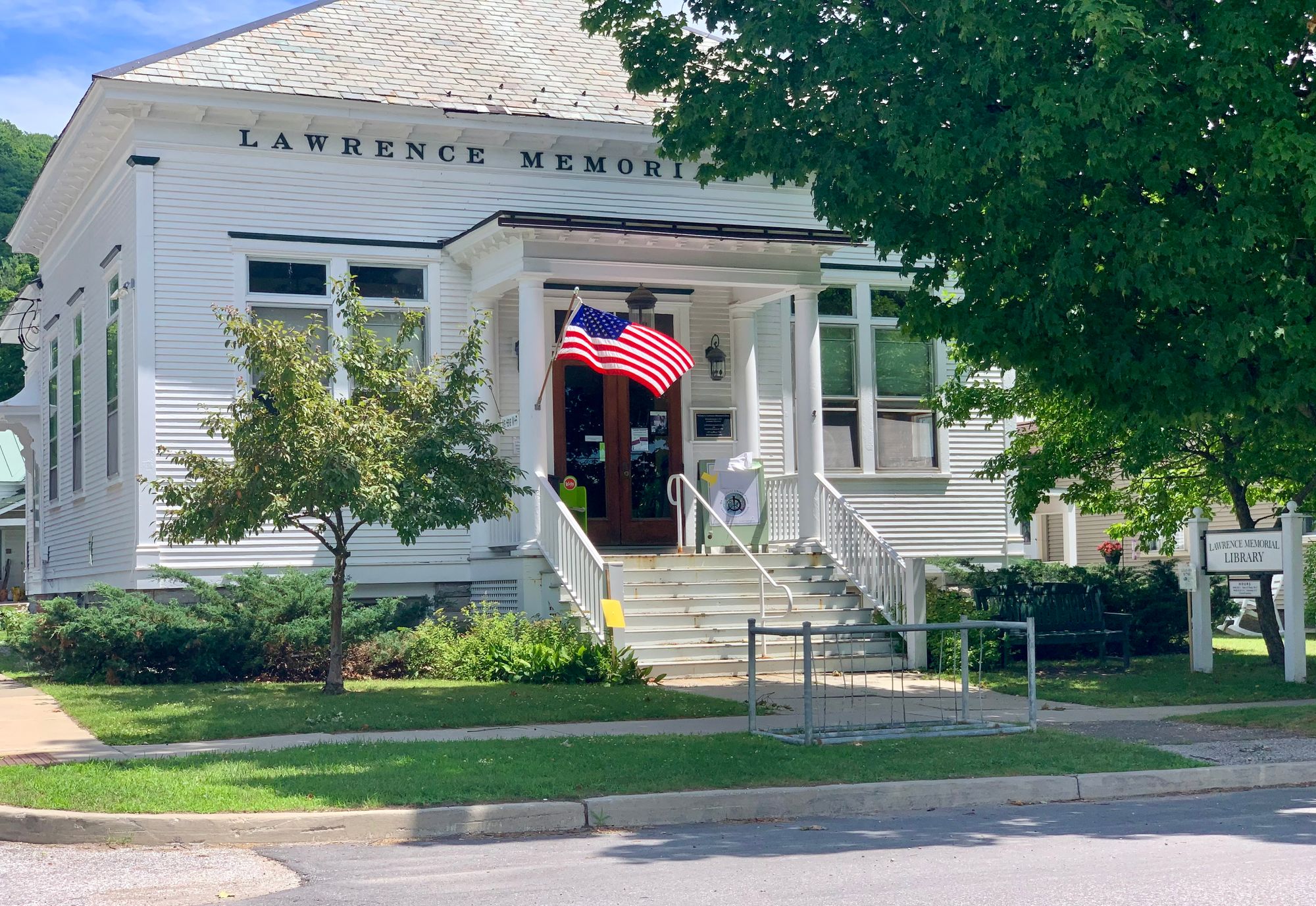
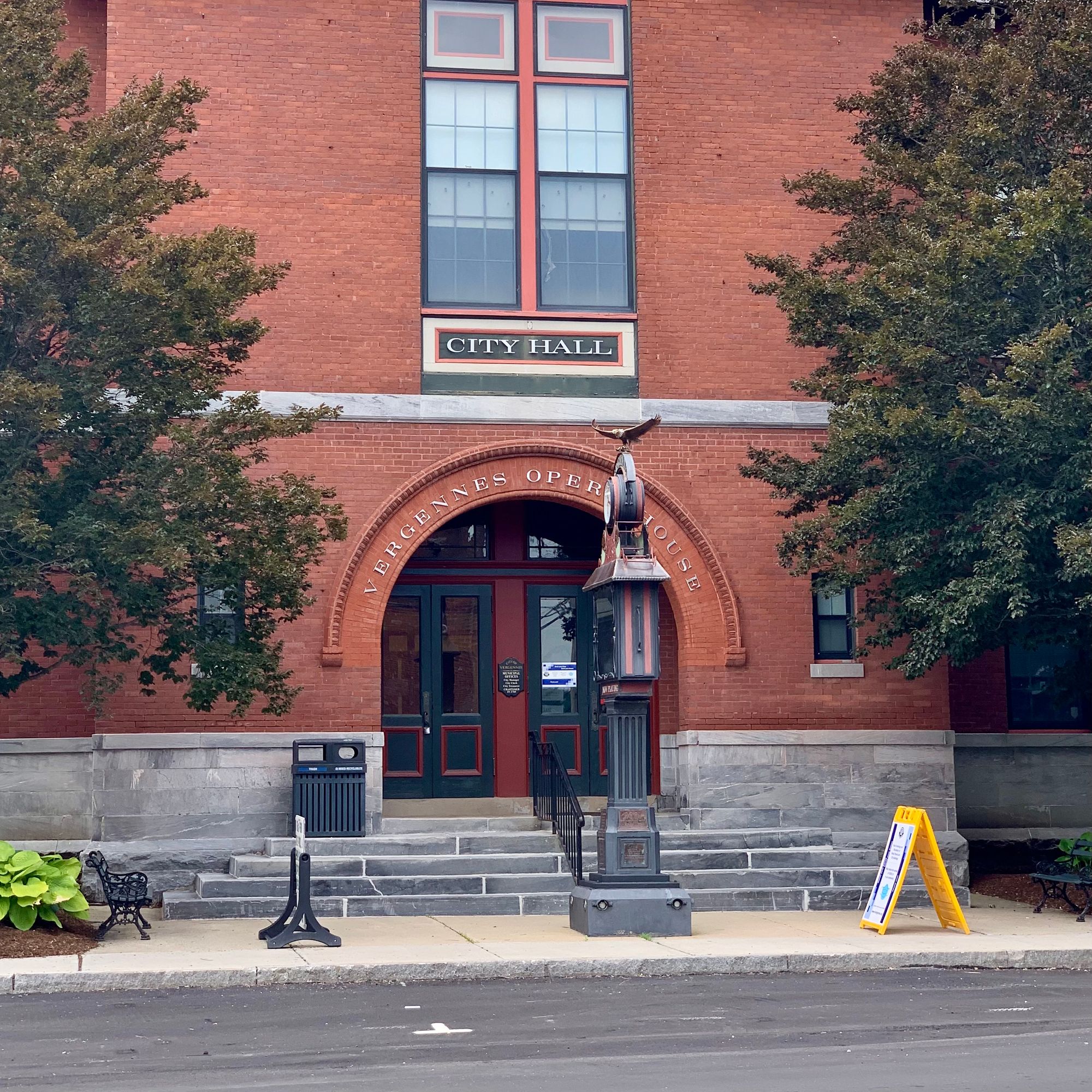
Libraries and Town Halls in Woodstock and Bristol, Vermont are grand buildings on their Main Street with multiple uses inside. Bristol's library is in a smaller neighborhood.
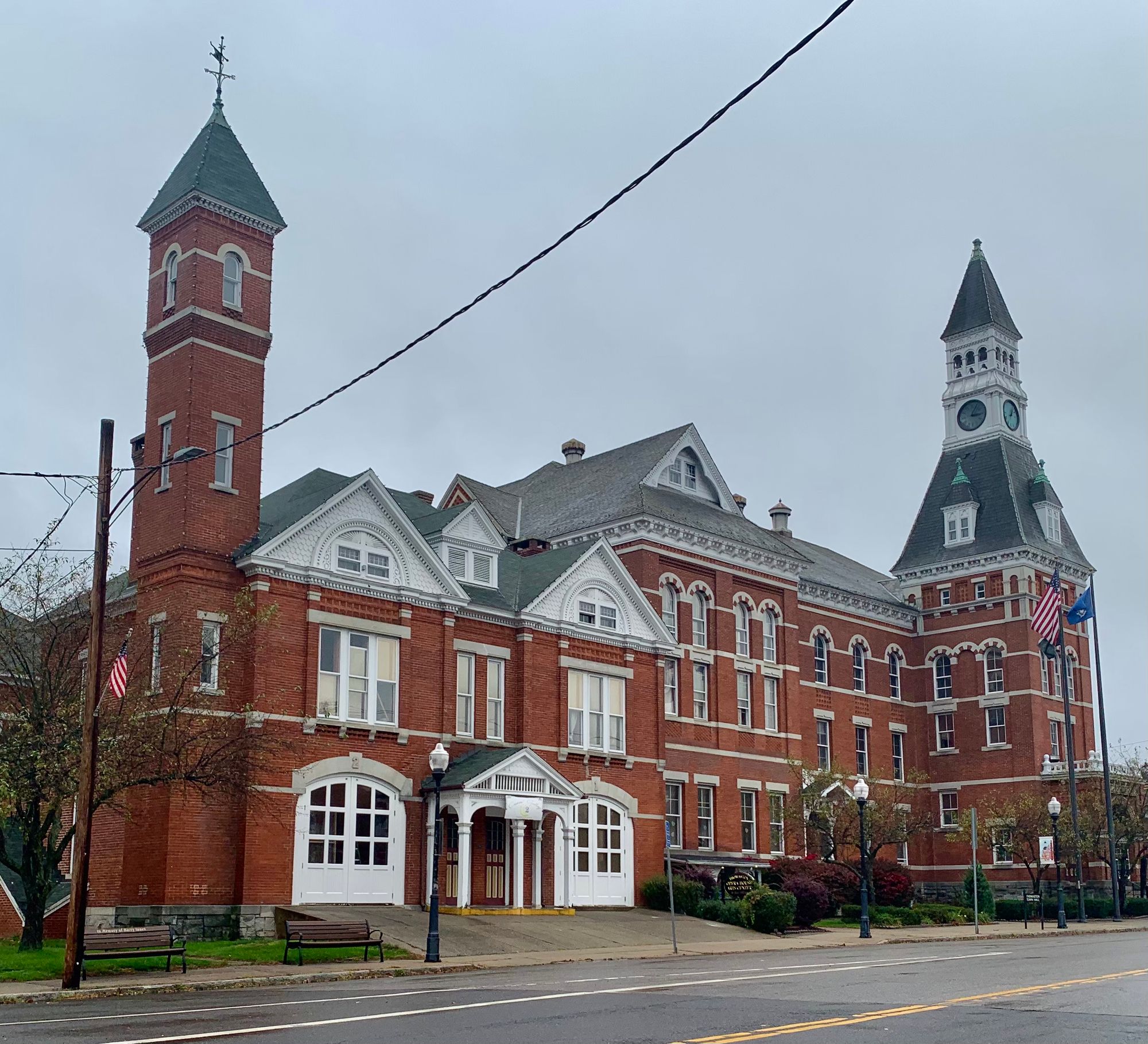
Summing it up
In many ways, the essence of small-town life is not what it once was. But looking back on our frequent visits around New England and beyond, we see that through both small and large interventions/activations these towns can recapture the best parts of their past and build a future they can all be proud of. There is a bright future ahead, and Vermont is definitely moving in that direction.
One of our basic tenets is, "We need to turn everything upside down to get it right-side up...to get from inadequate to extraordinary." We share each of these ideas for Vermont in the same spirit: There is room for improvement, even in one of our favorite places.
Much of this forward movement has been made possible by the work of the Vermont Placemaking network, which was launched in June of 2019 (the original group pictured below). It brings together many state-wide agencies and advocacy organizations. The network has met monthly, developed grant programs, and recently hosted PlacemakingX and PlacemakingUS on a state-wide tour.
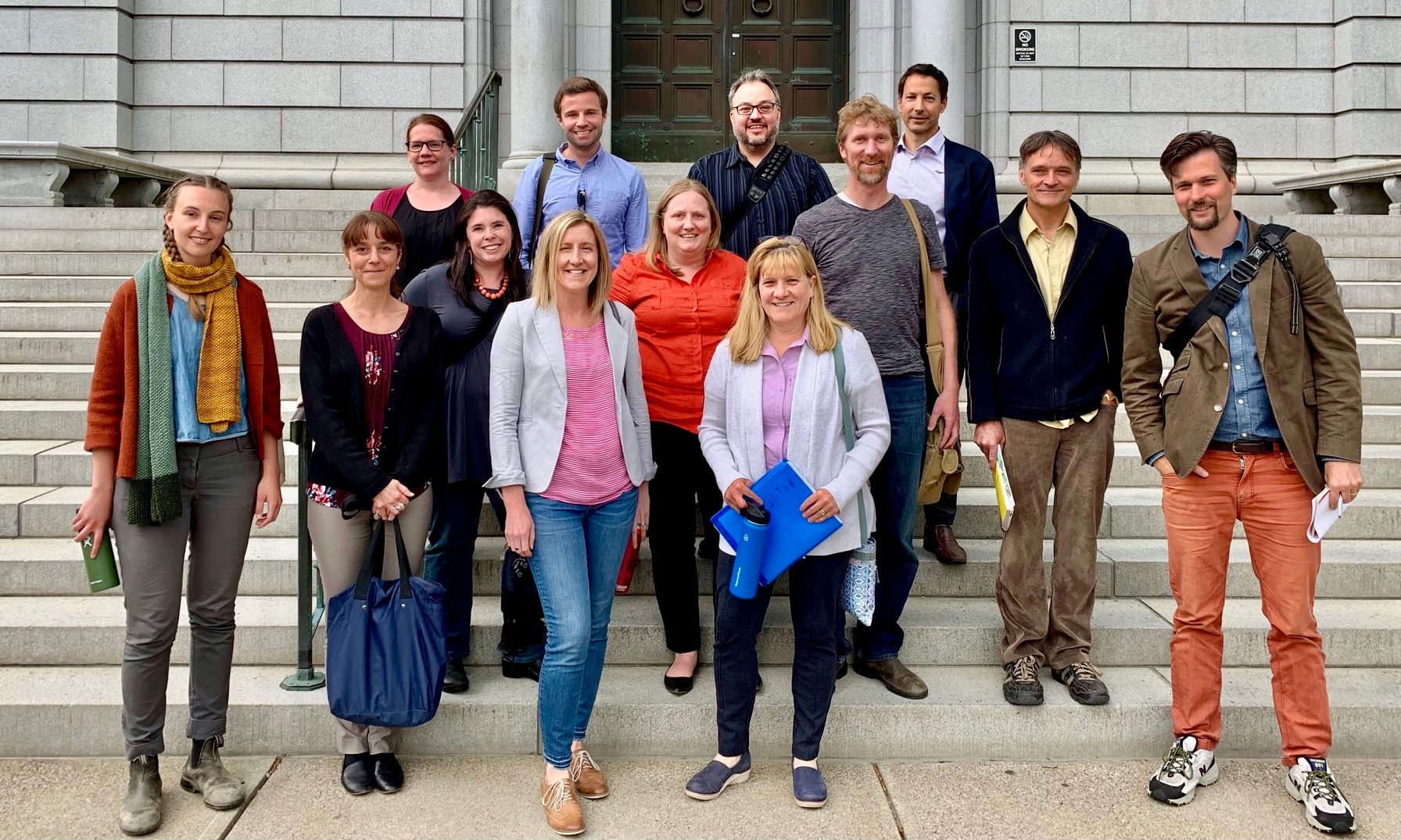
Major Takeaways for Catalytic Projects & Campaigns in Vermont
Community Involvement is Key
- People are the most precious resource of any place
- It’s not up to the urbanists, planners, traffic engineers, and even City Council to dictate how citizens do--or don’t--use their public spaces.
- Community means involving the youngest generations to the oldest! Everyone uses public space differently and everyone gets a place at the table
- Everyone has different needs now coming off the pandemic and re-integrating into and helping to define a future community life; Placemaking can help this process
Cultural and Public Institutions Can Become Community Hubs and Placemaking Resource Centers
- Maximizing the potential of schools (how can they become community gathering spaces on the off-hours and weekends?), libraries, museums, town halls, banks, historical societies, art centers, and state buildings
- Placemaking Resource Centers can become the future of community-led planning and programming--and there can be one in every community!
- The public needs to view these institutions as truly inclusionary--part of the fabric of everyday gathering places
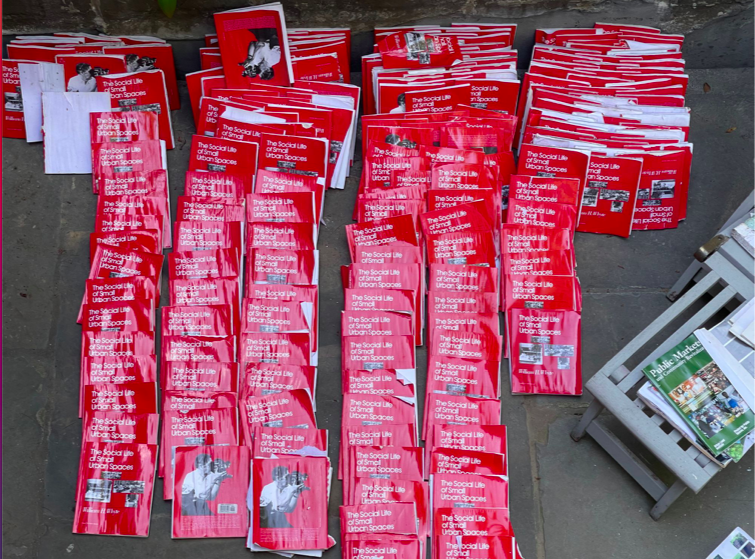
Using Local Culture as a Catalyst for Change
- Vermont is a place of enormous creativity, improvisation and grit with people working hard to find their niche in an open, entrepreneurial culture
- The biggest impediments are uniform design guidelines that restrict movement and impose control on people as well as limited capacity in small towns
- Work with the existing spirit of the place to find solutions for all; get creative; involve the community; work with what is already present and working
Catalytic Projects Have Great Potential For Reinvigorating Social Life
- These projects open opportunities for the most people, embracing many different ways of living and celebrating community life
- Instead of one-off projects, catalytic projects create the necessary change in mindset and community-led processes to fundamentally shift social life (and its prerequisites) in communities
- This moment is RIPE for catalytic change coming off a global pandemic where healthy outdoor gathering places is a necessity, not a mere amenity, and towns are more receptive to accommodating Placemaking-type projects
- By starting with the intersections, sidewalks, public institutions as gathering places, and community hubs, local programming and participation will naturally follow as well as ripple effects on climate, health, inclusion & equity
Related Articles
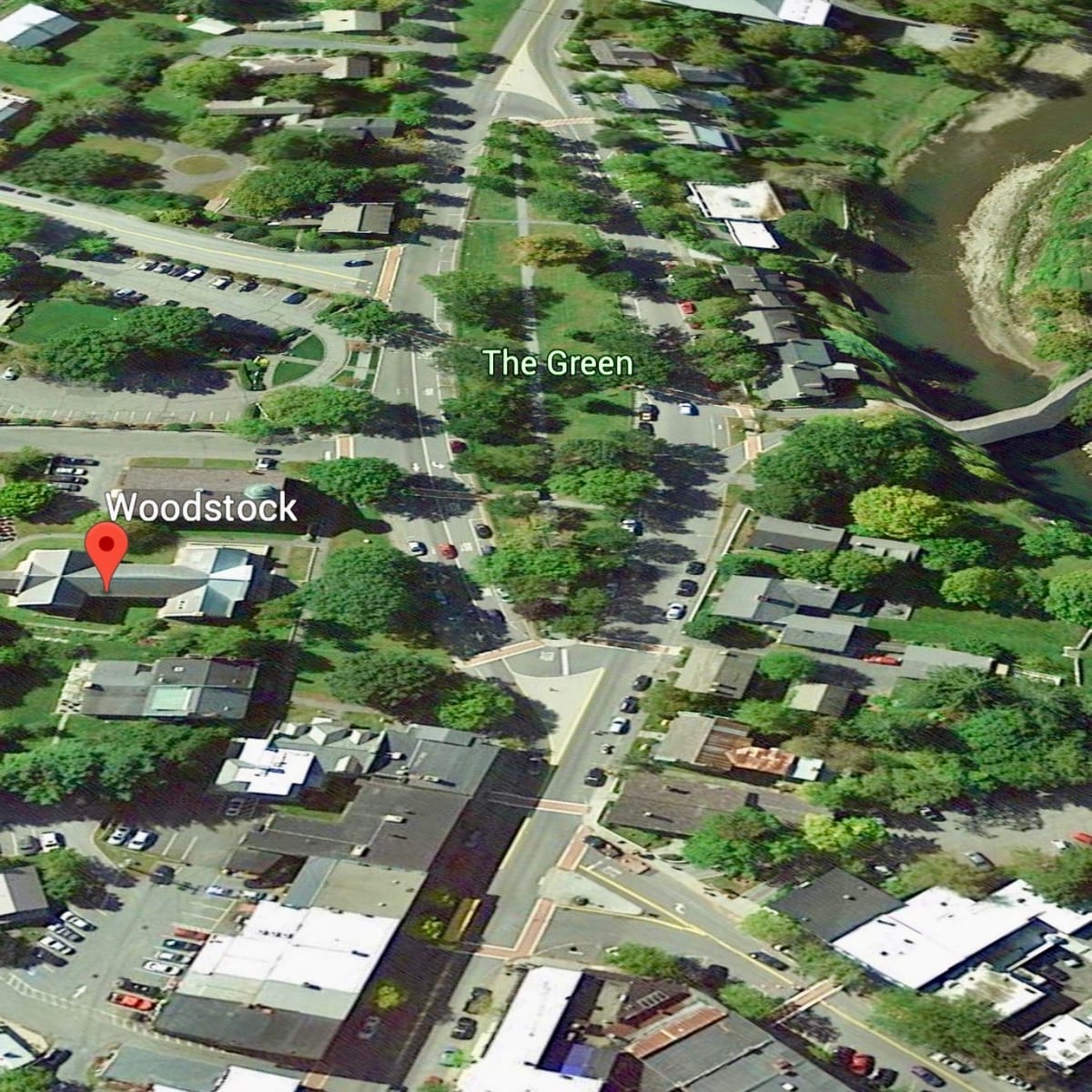
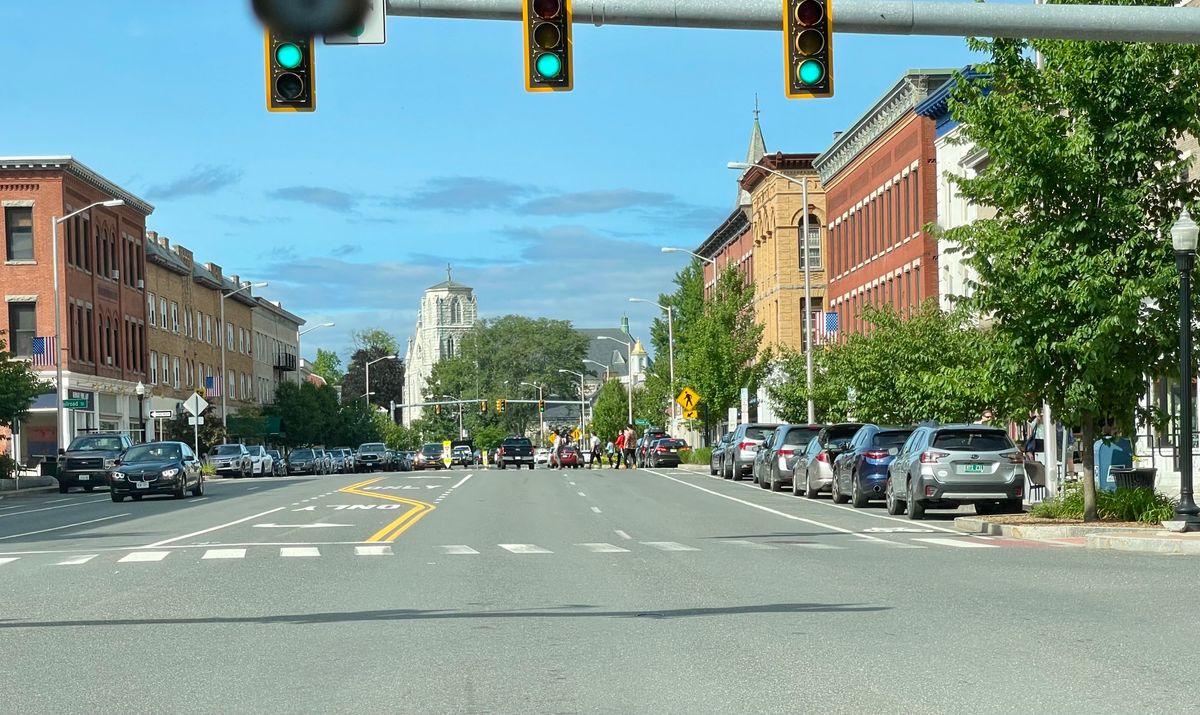
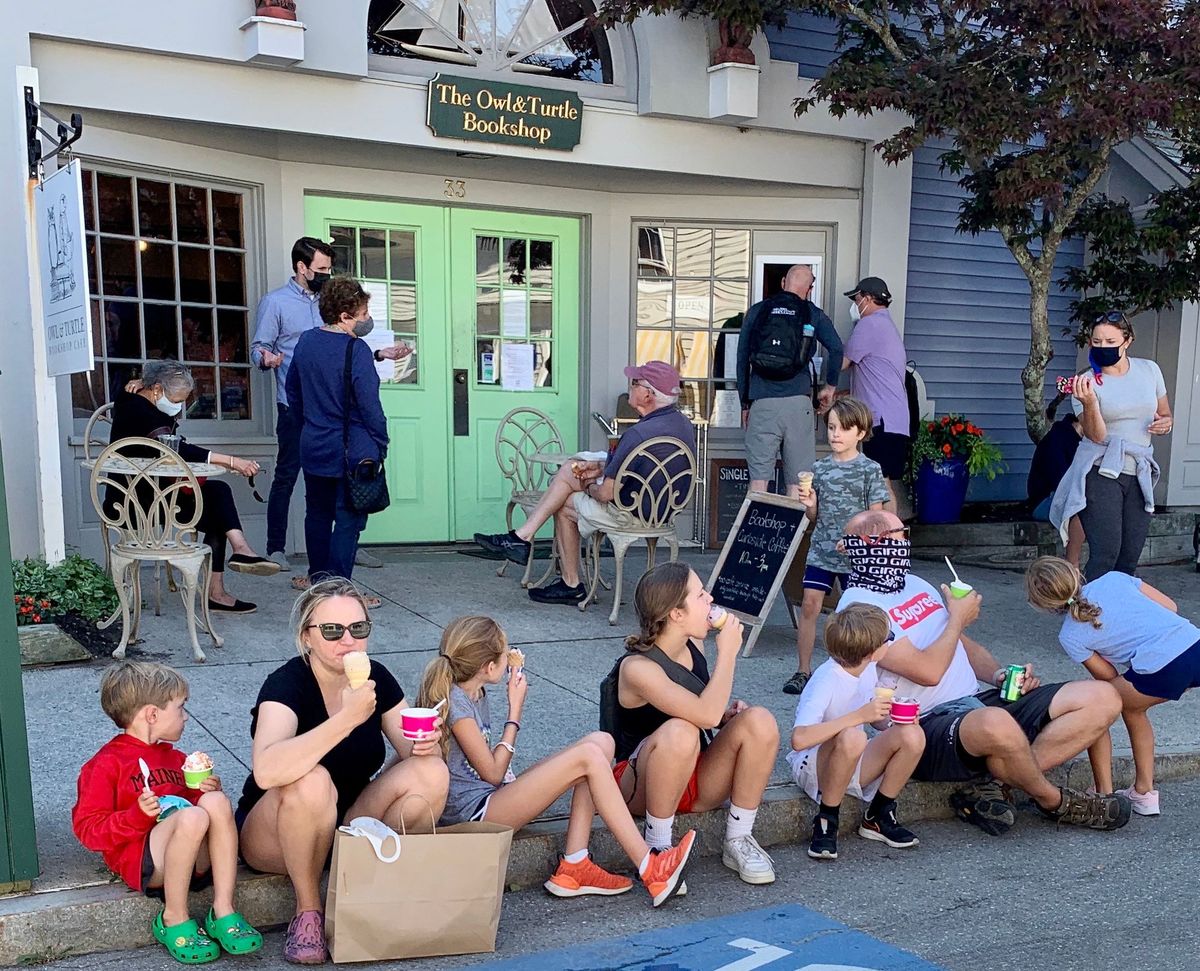
Further Reading
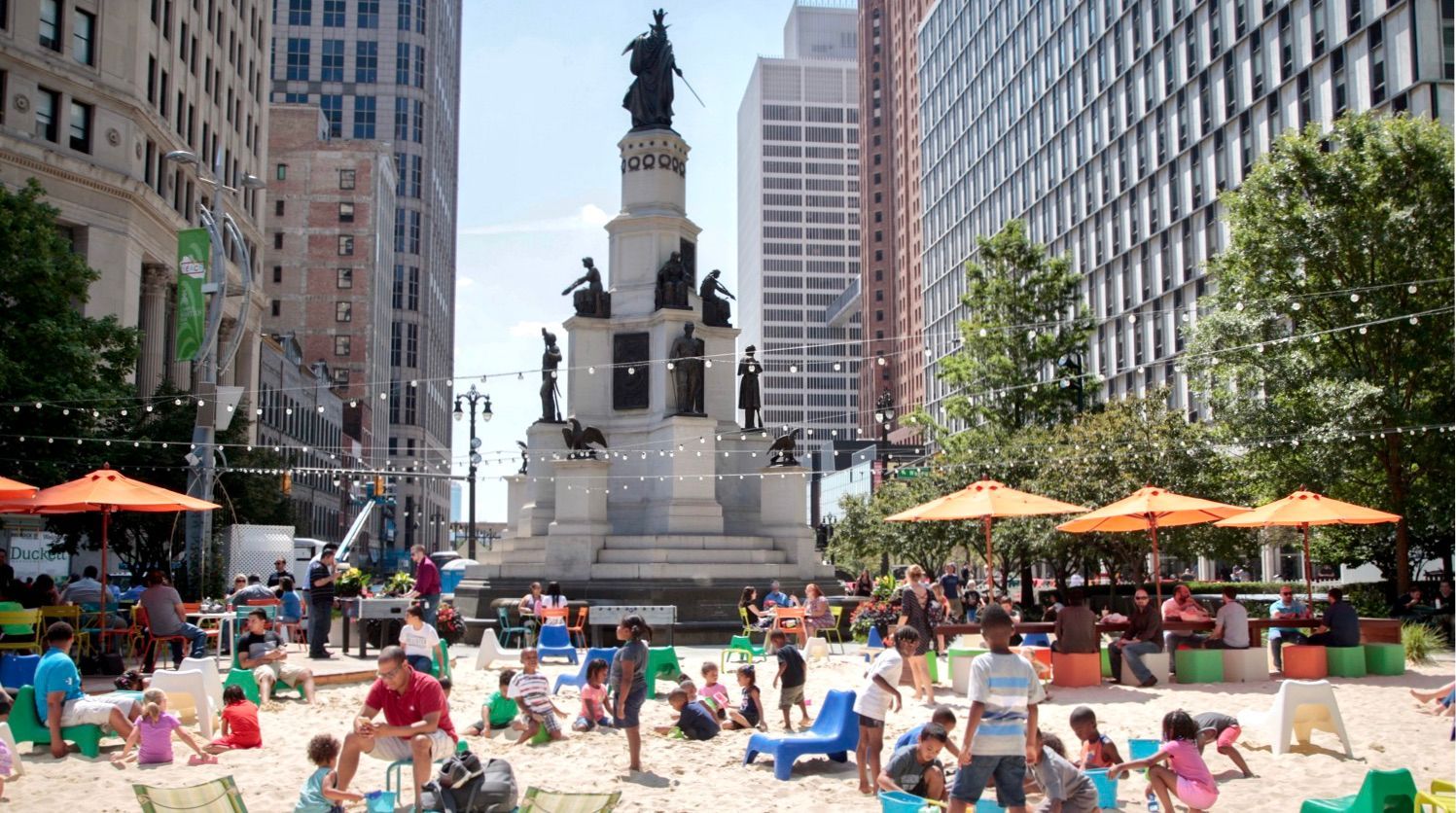
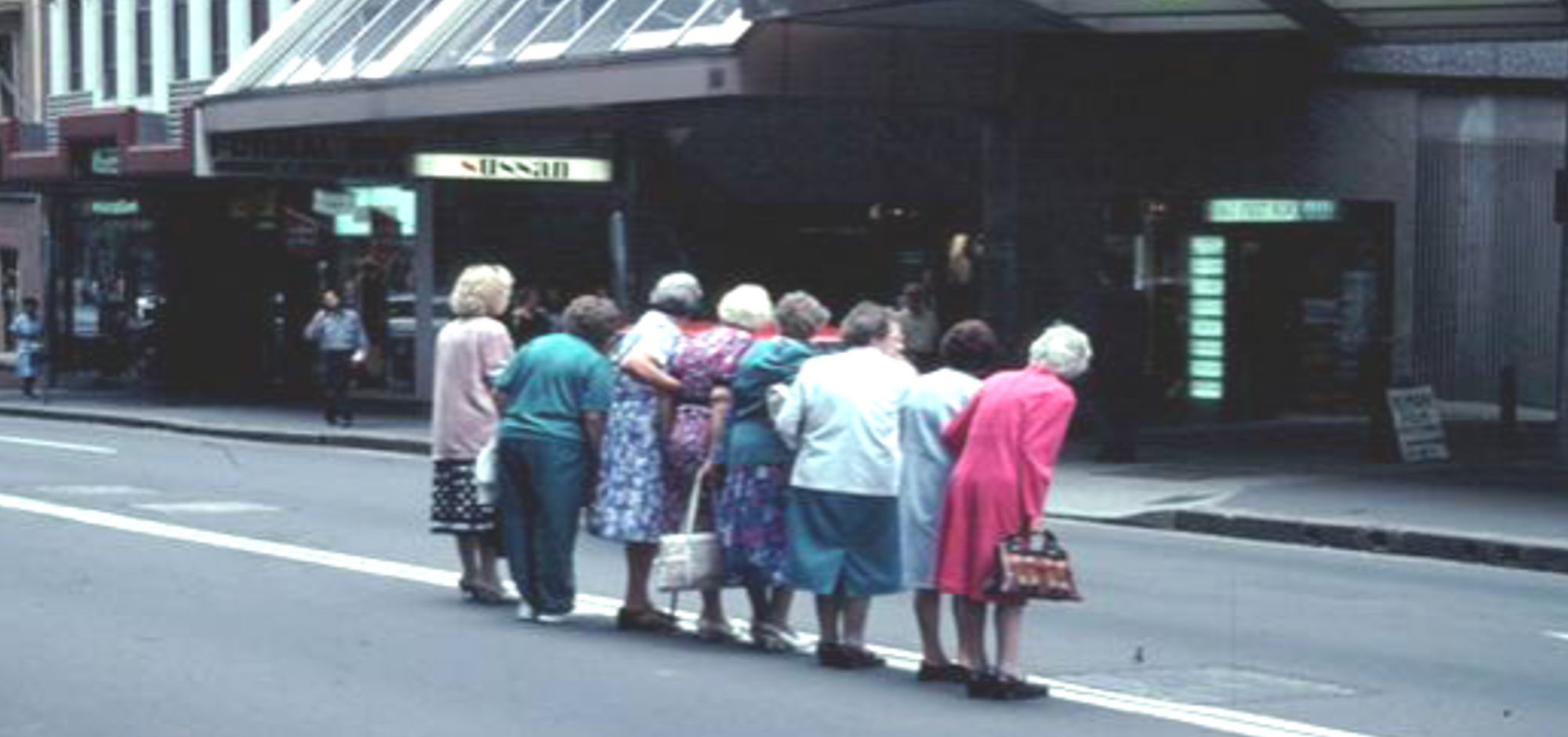


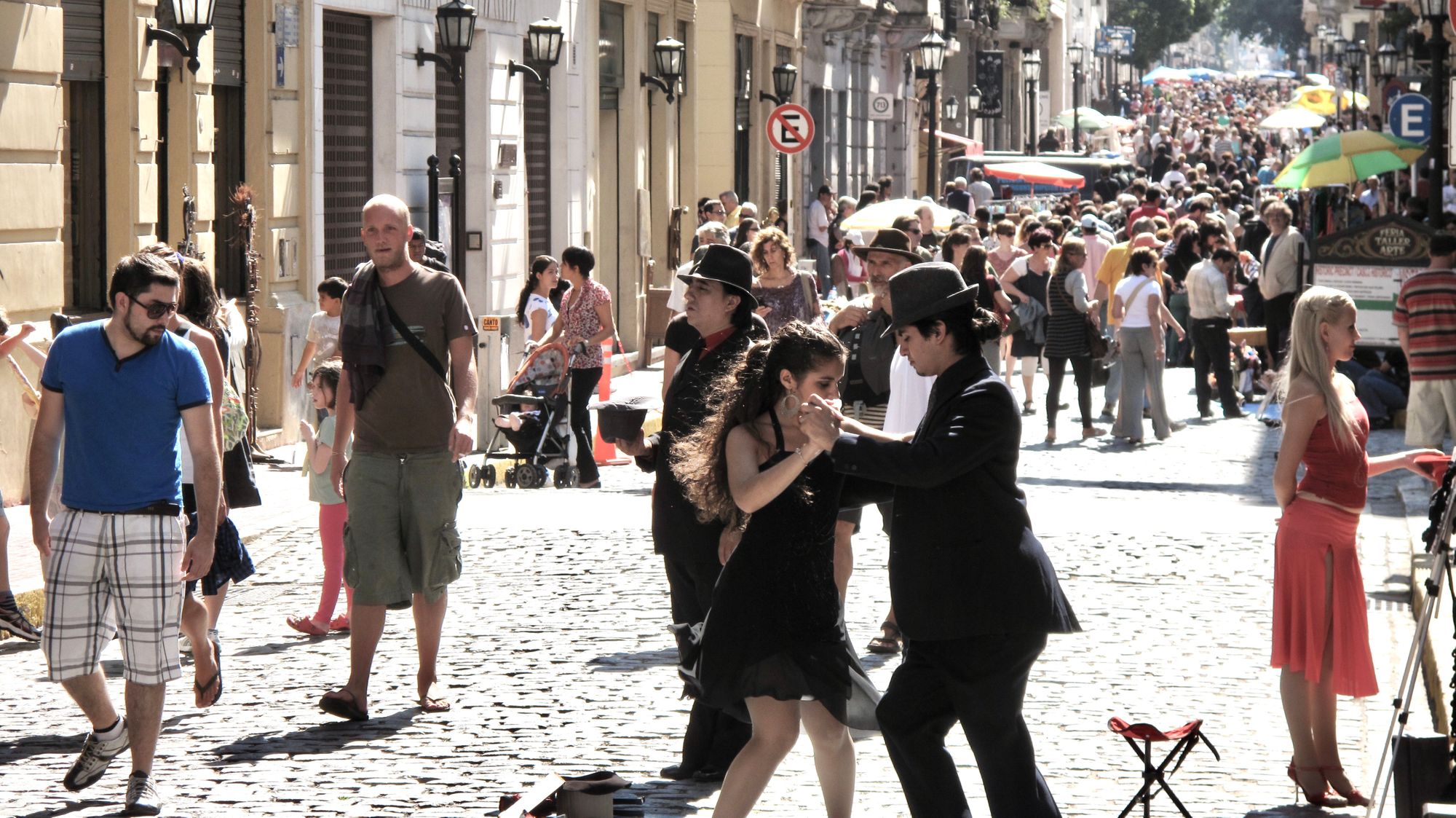

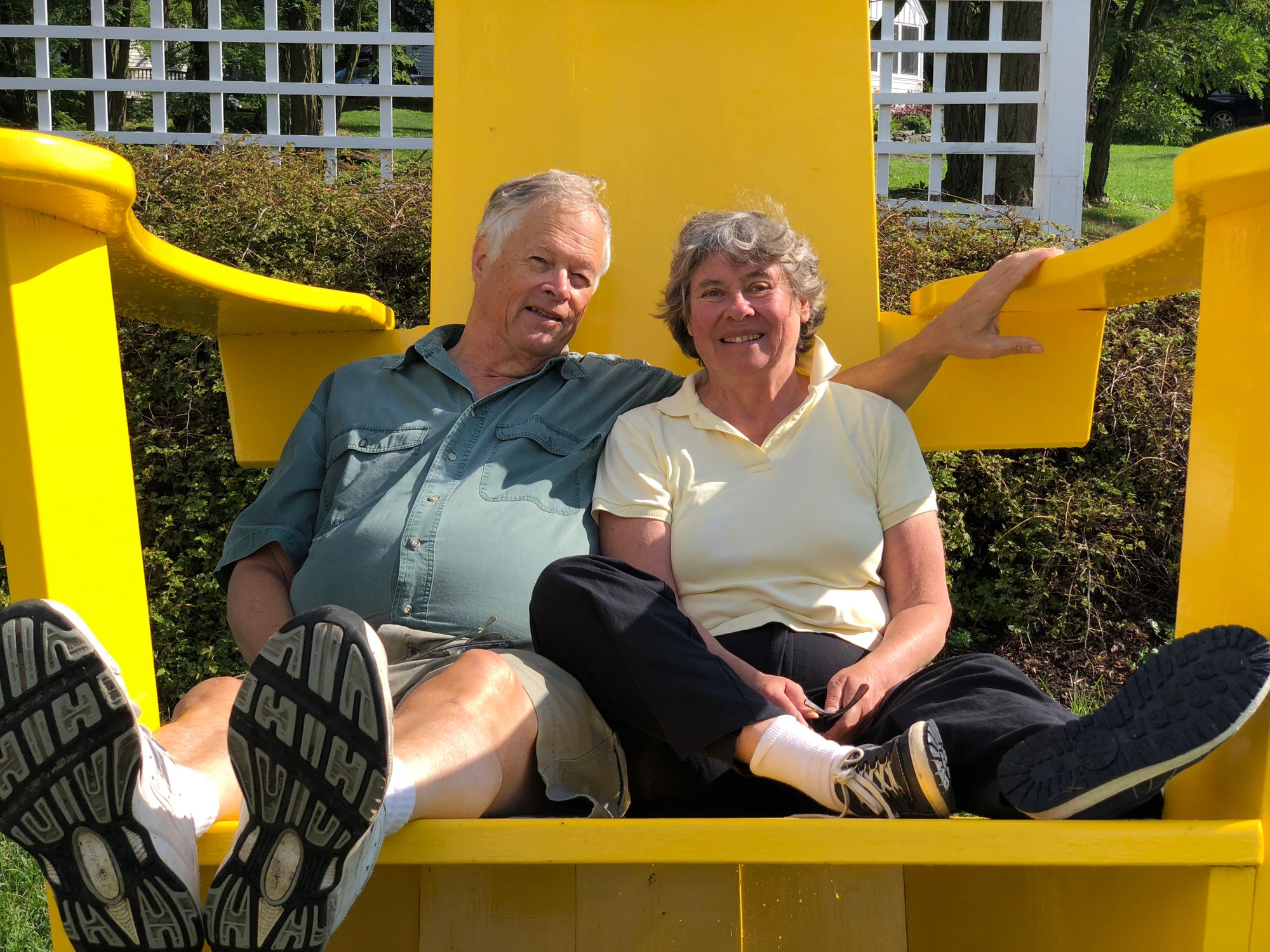
Share with others, comment, add to the discussion by emailing us at hello@placemakingfund.org. This post will continue to evolve. To read about our next steps and how this effort will feed into impacting global climate change, see below:




